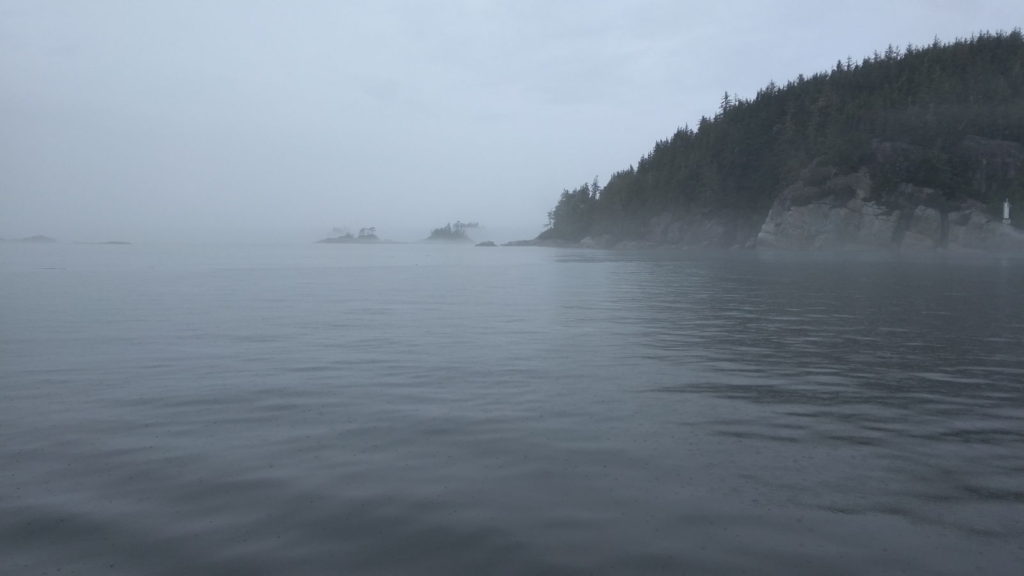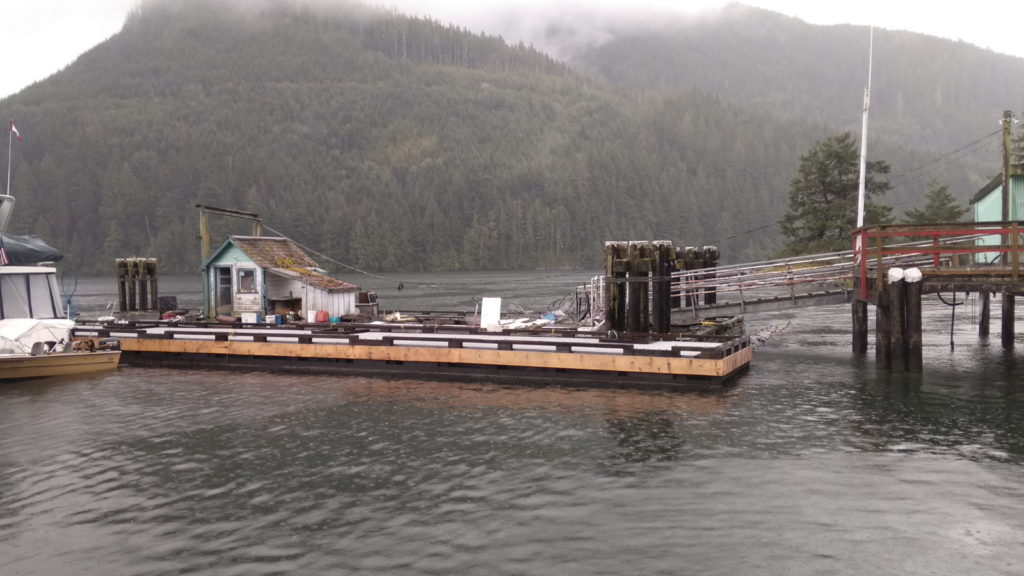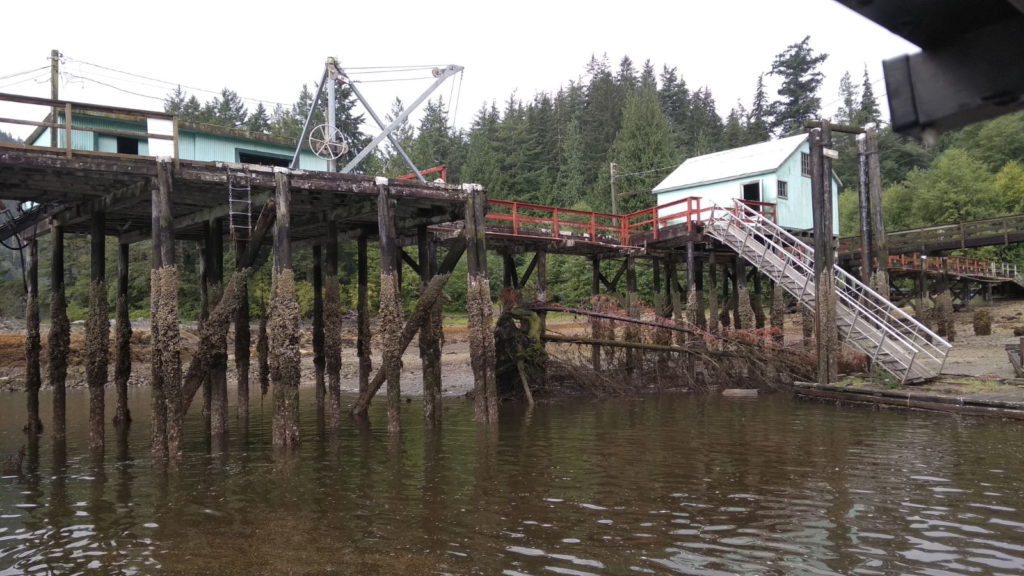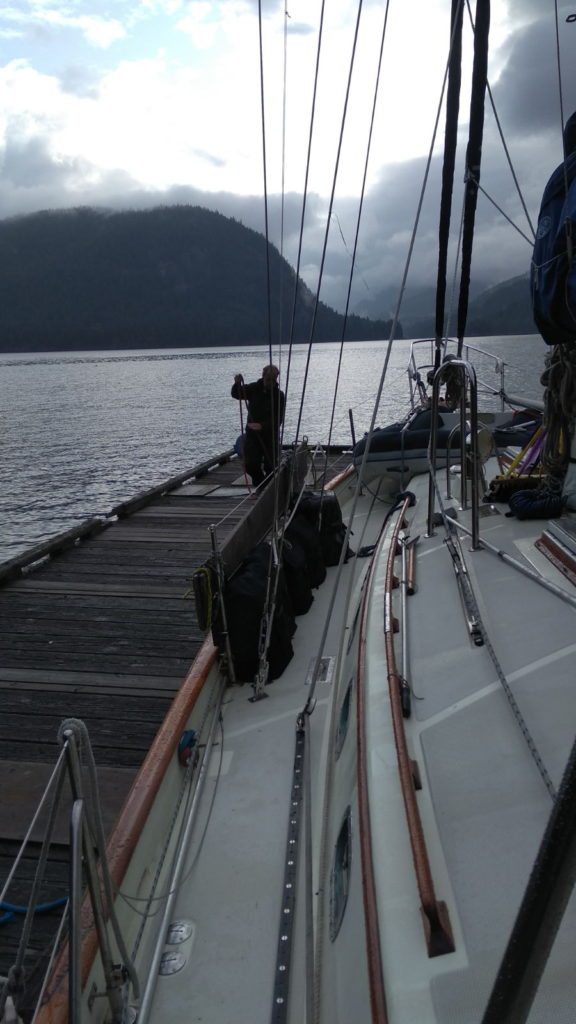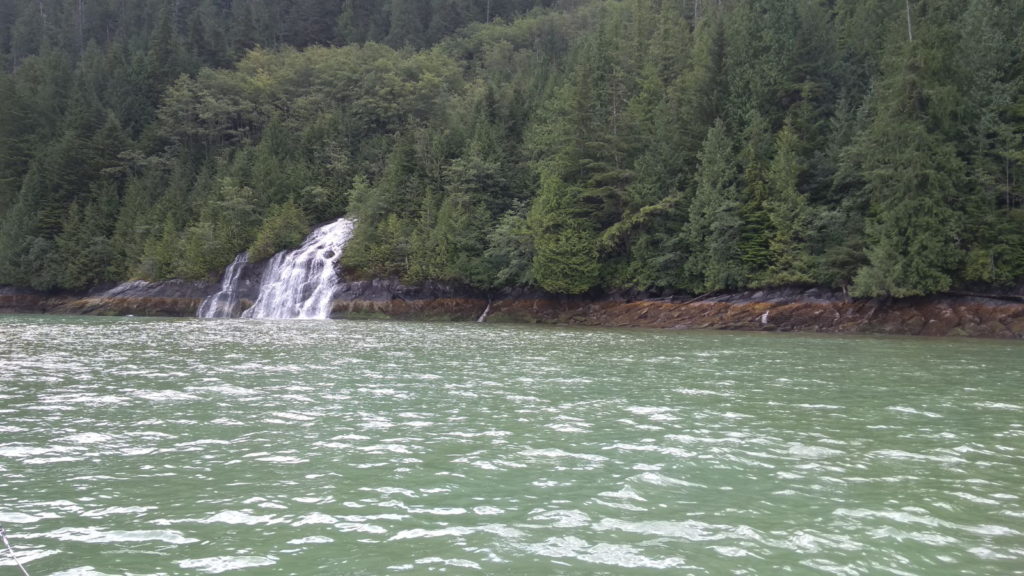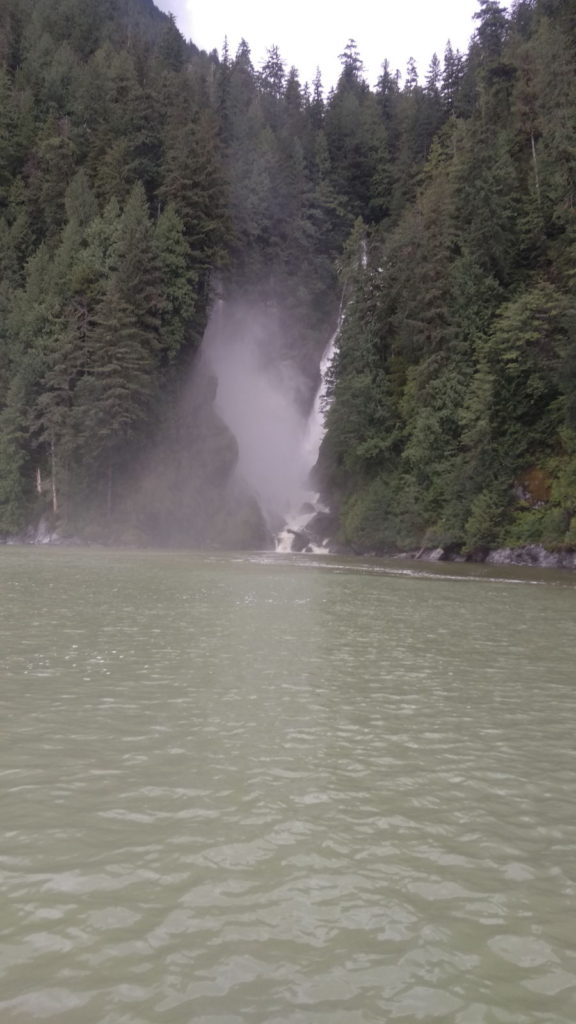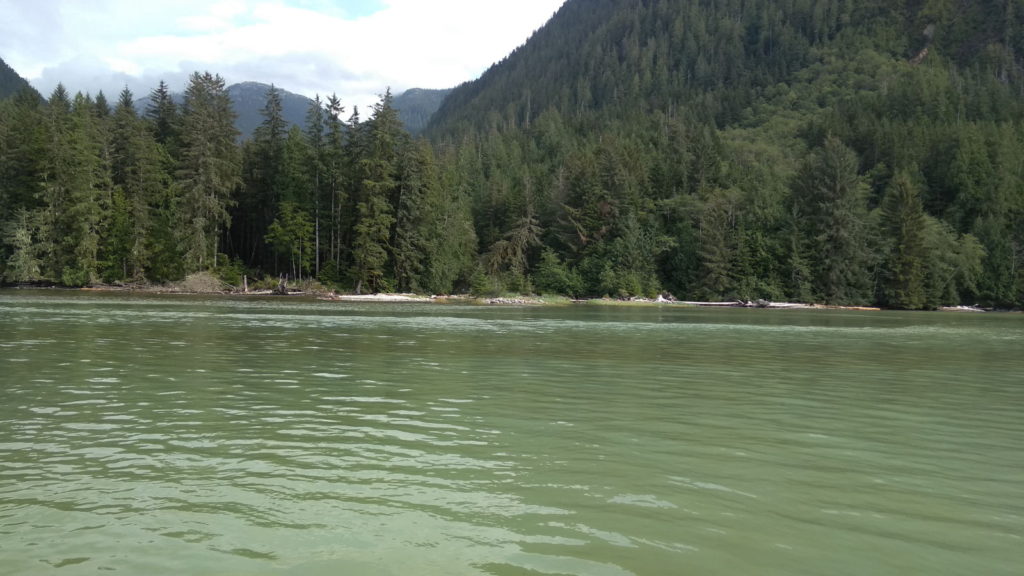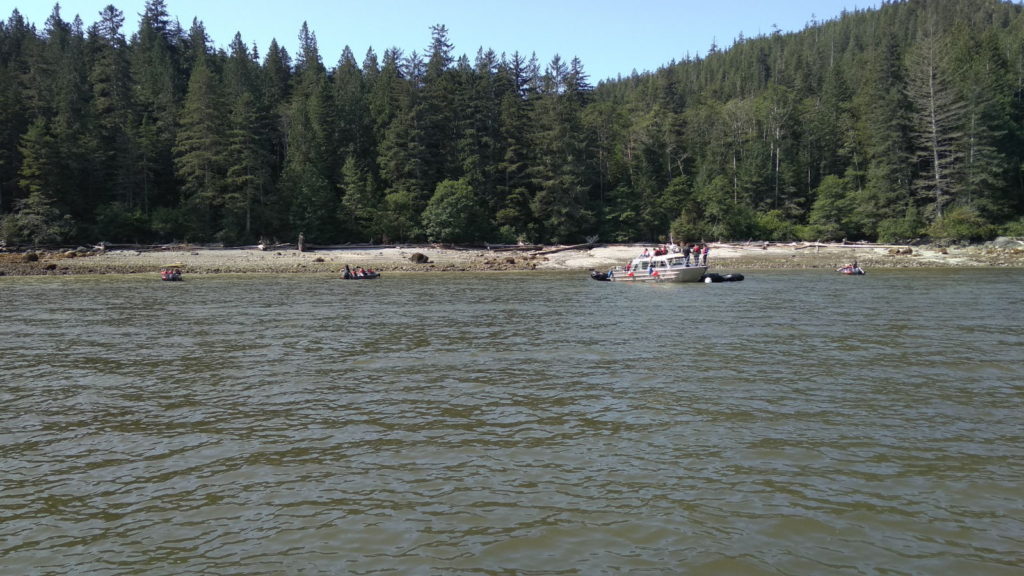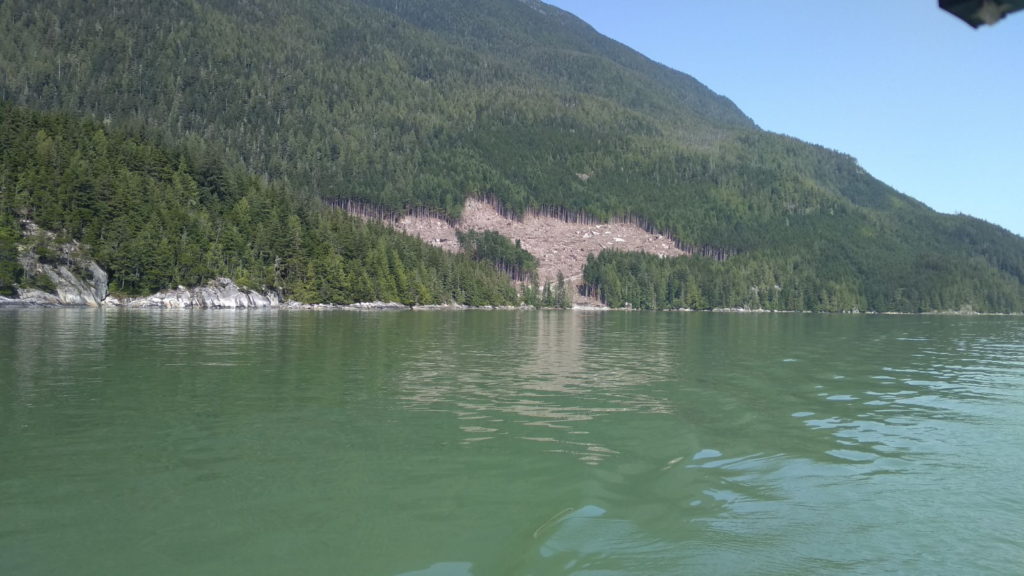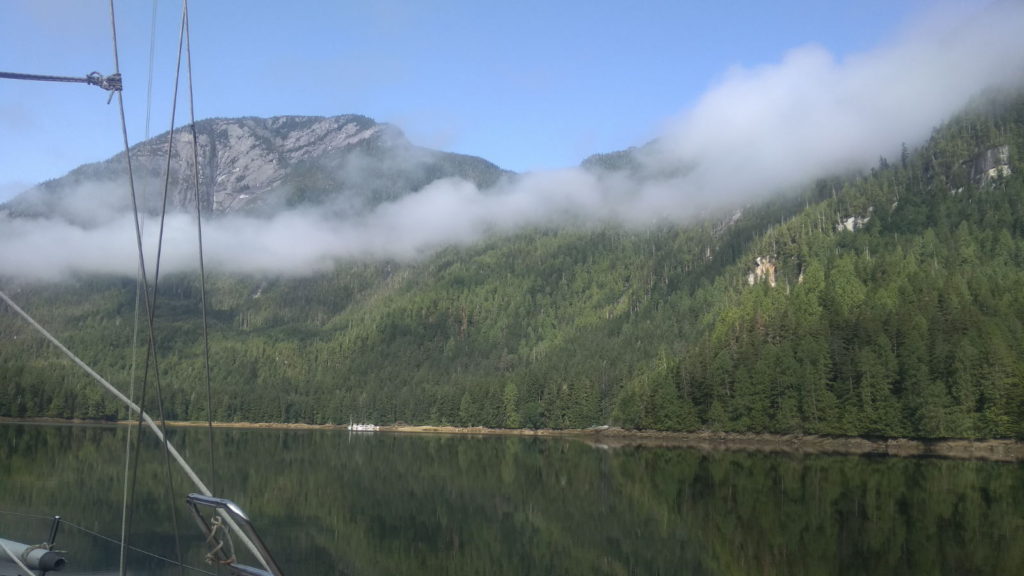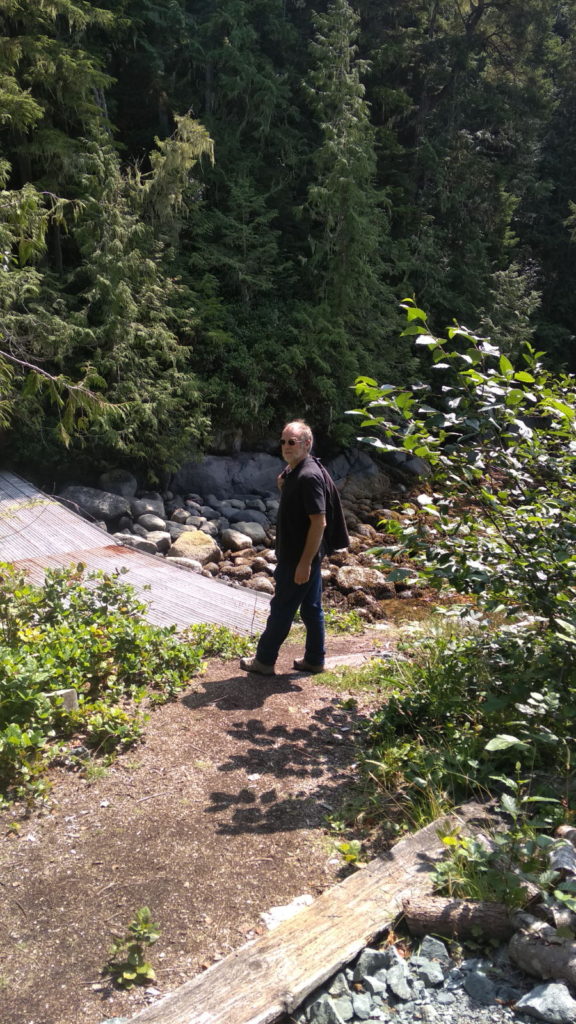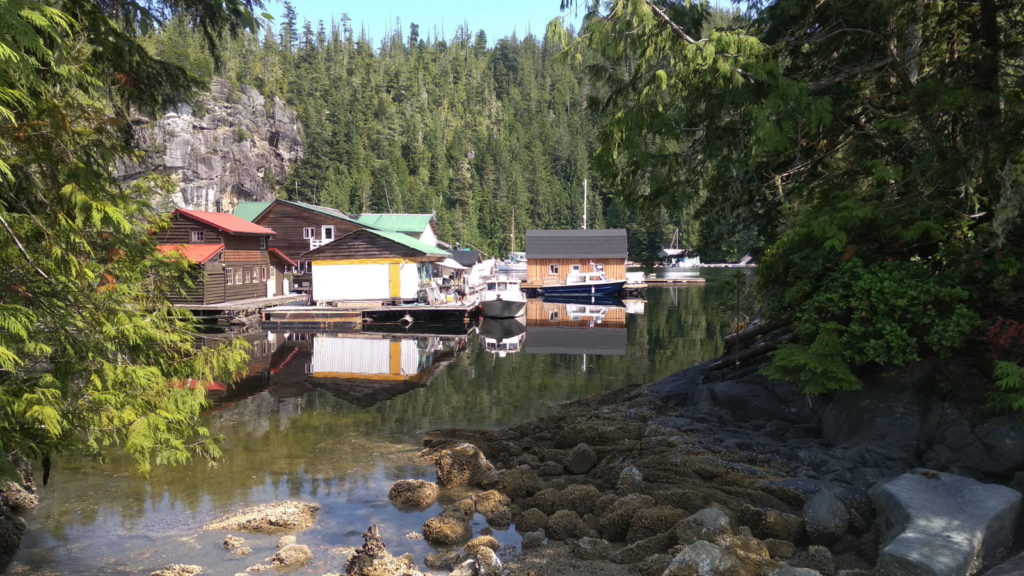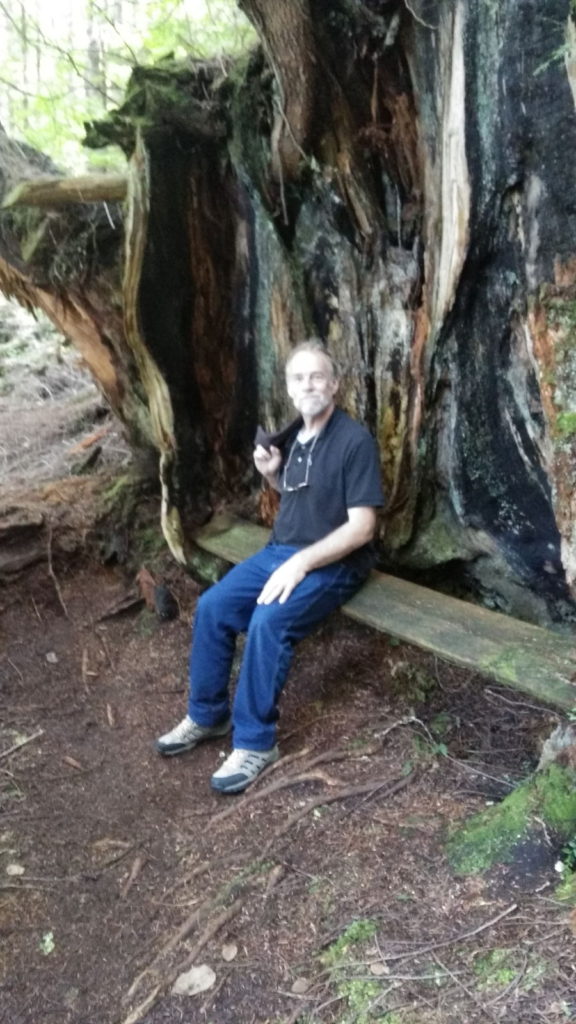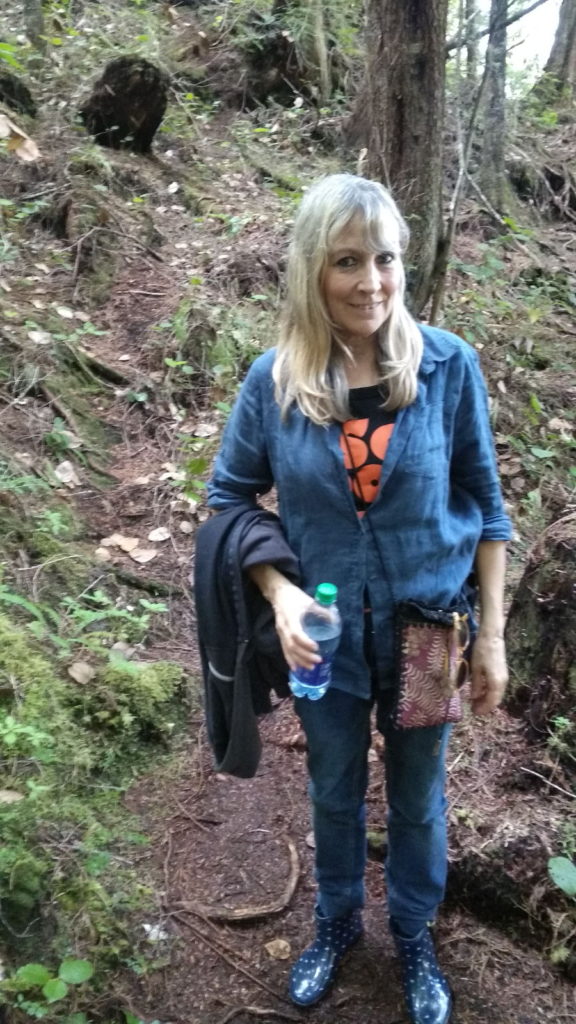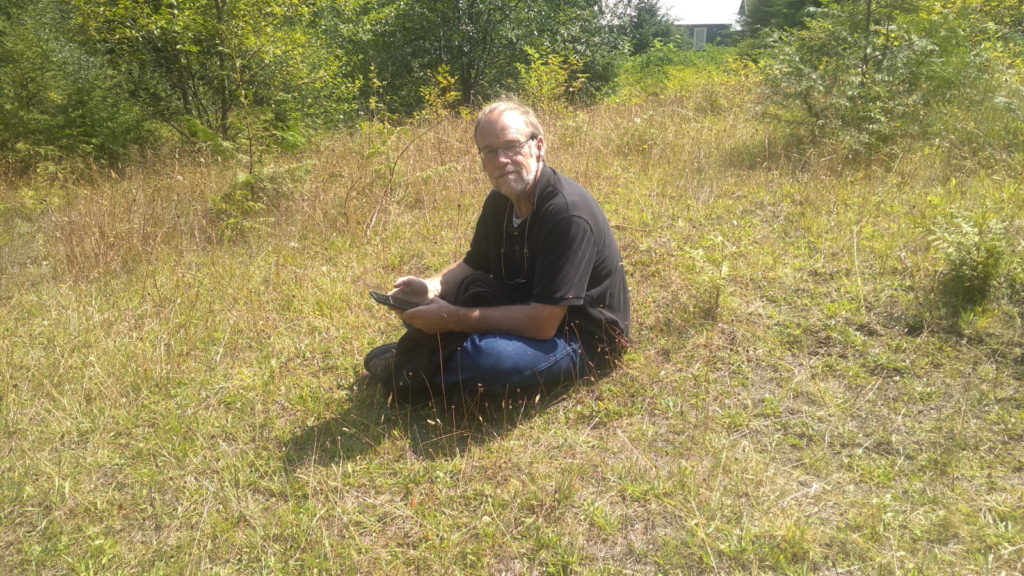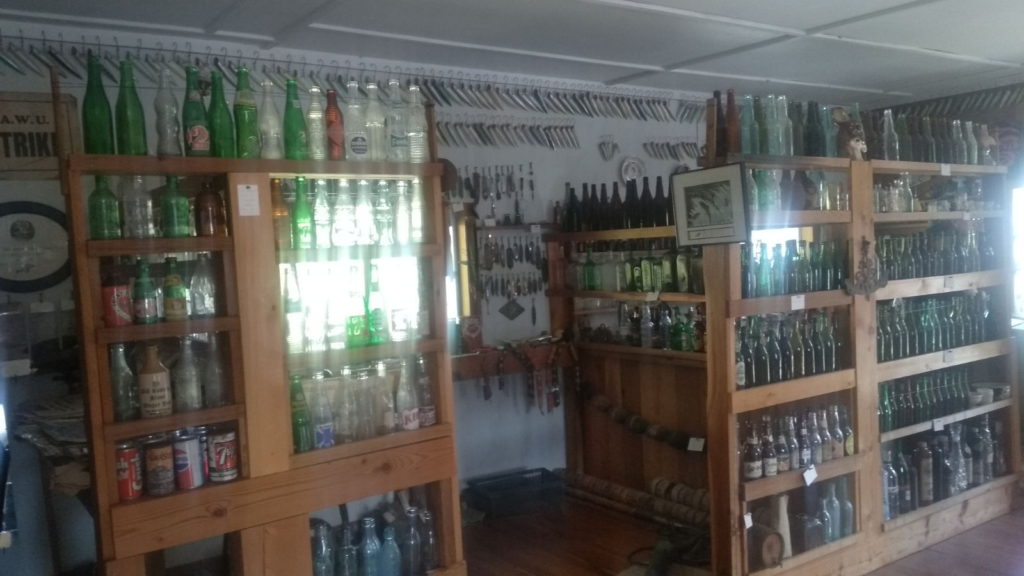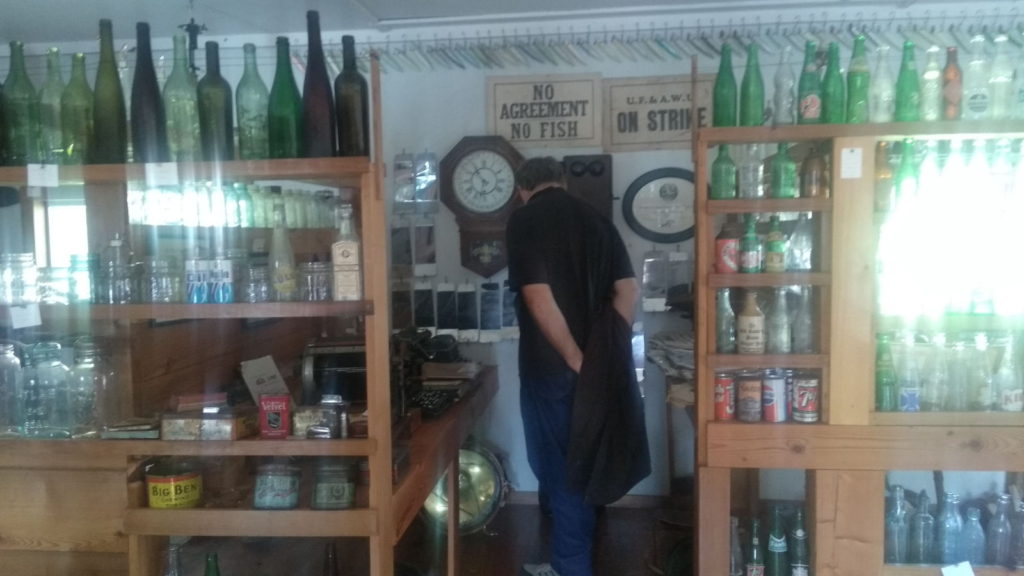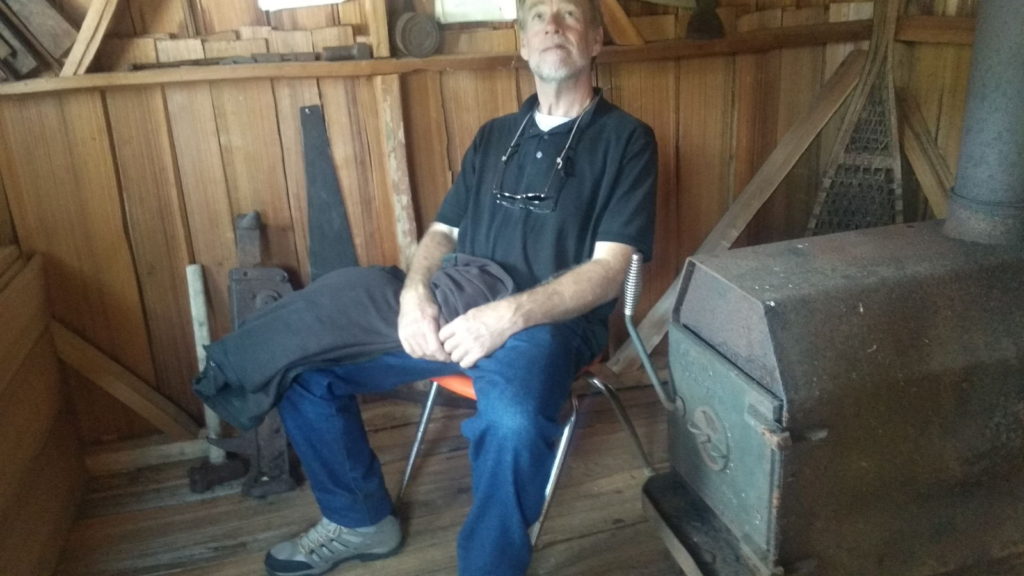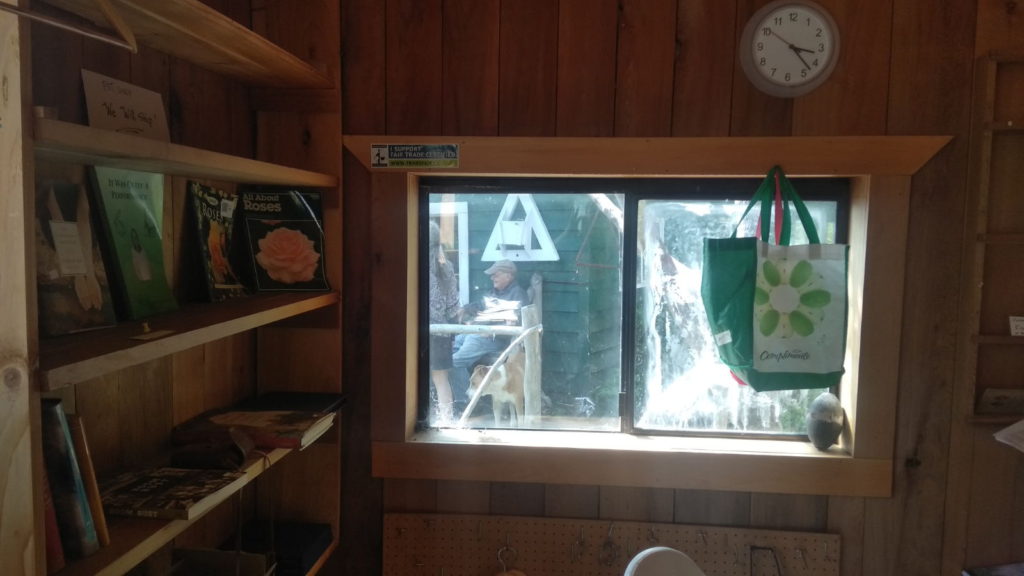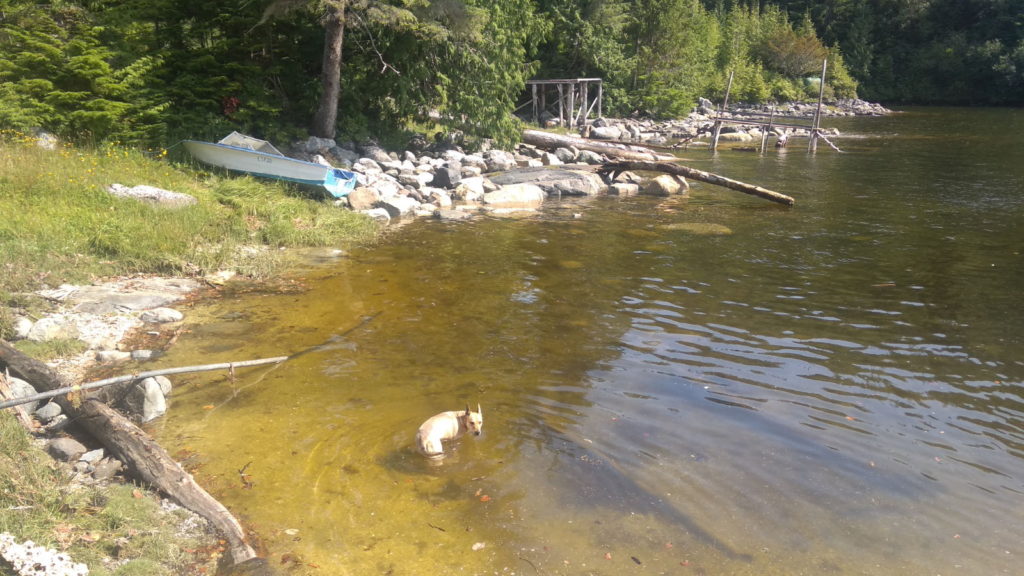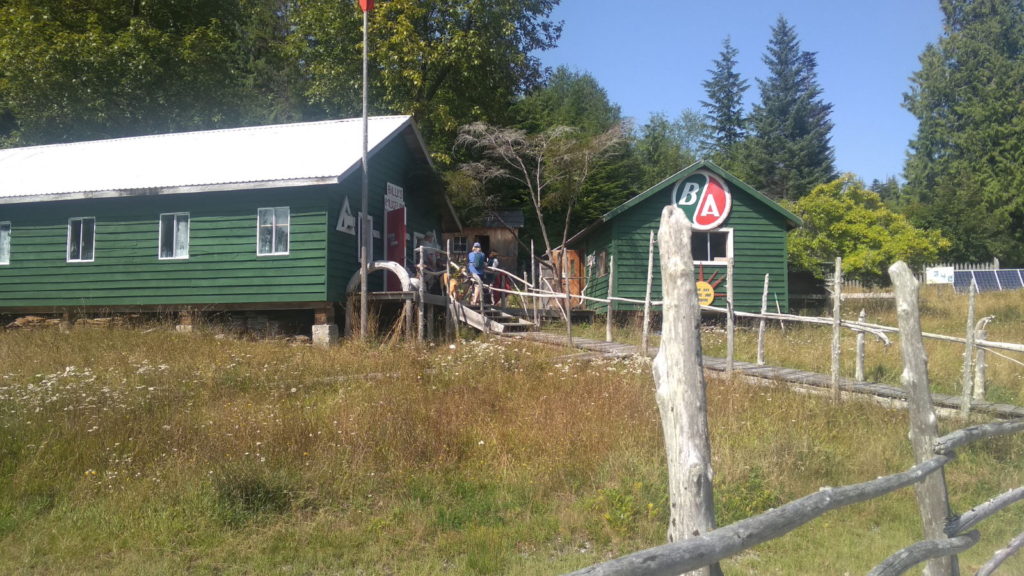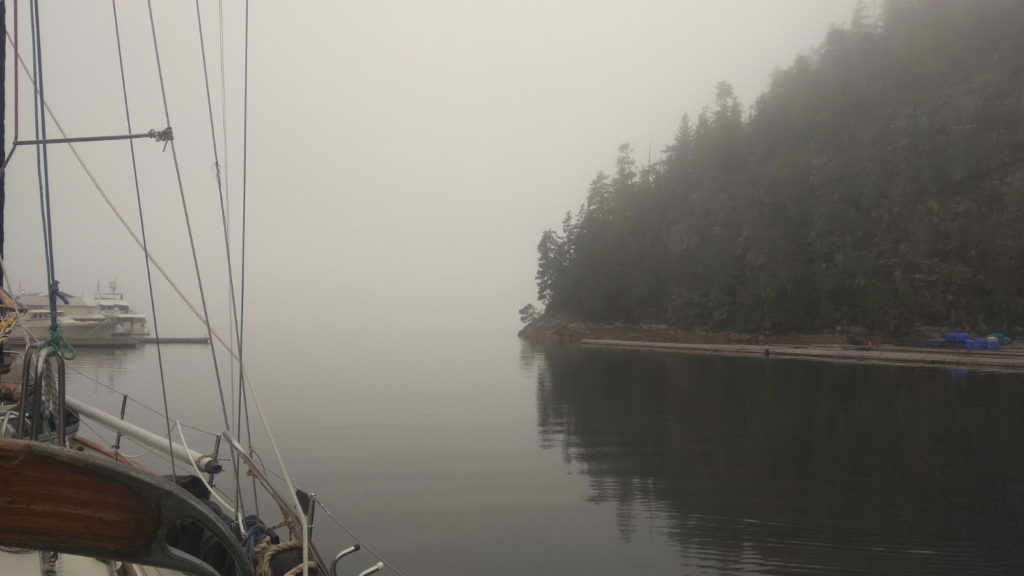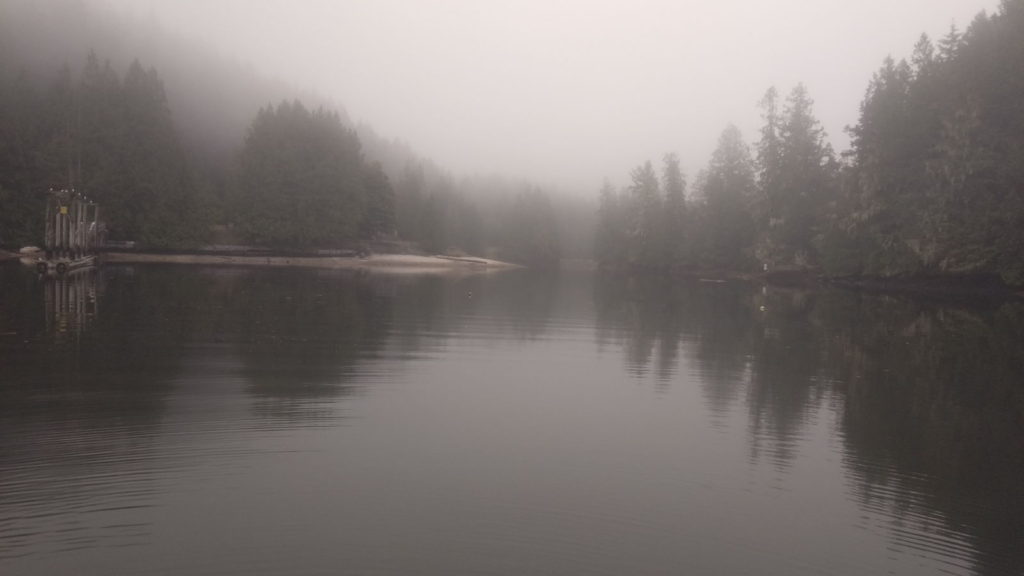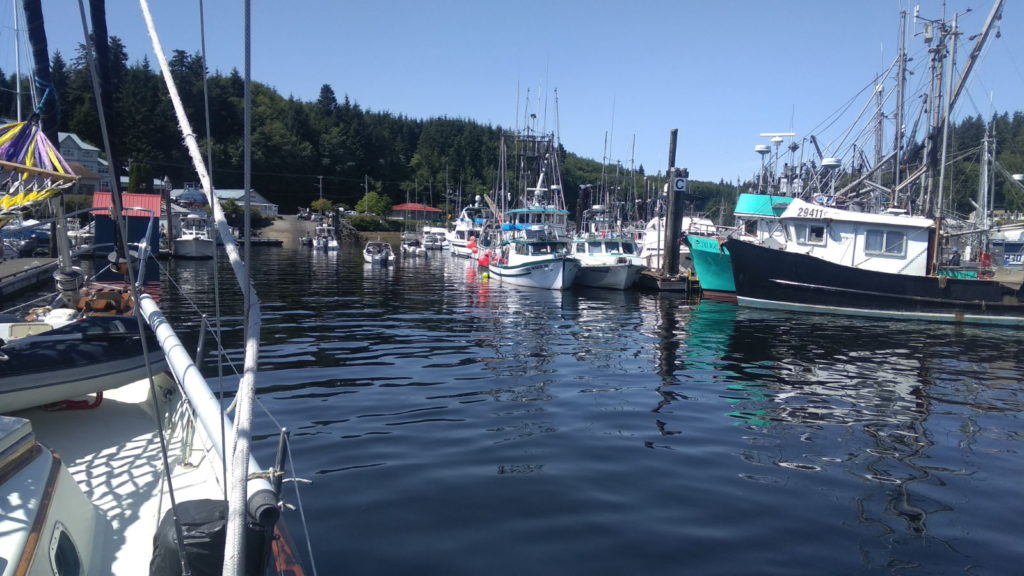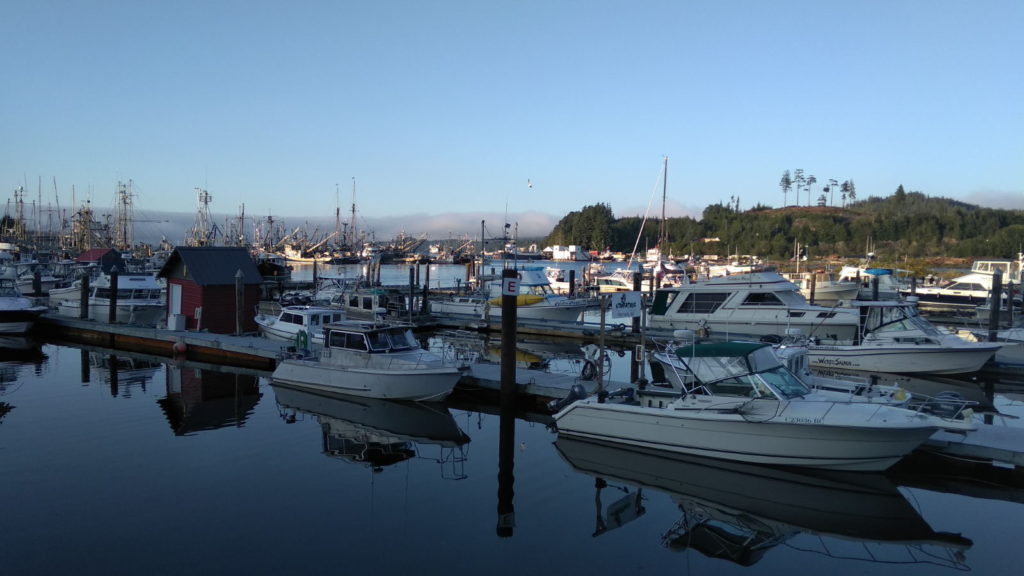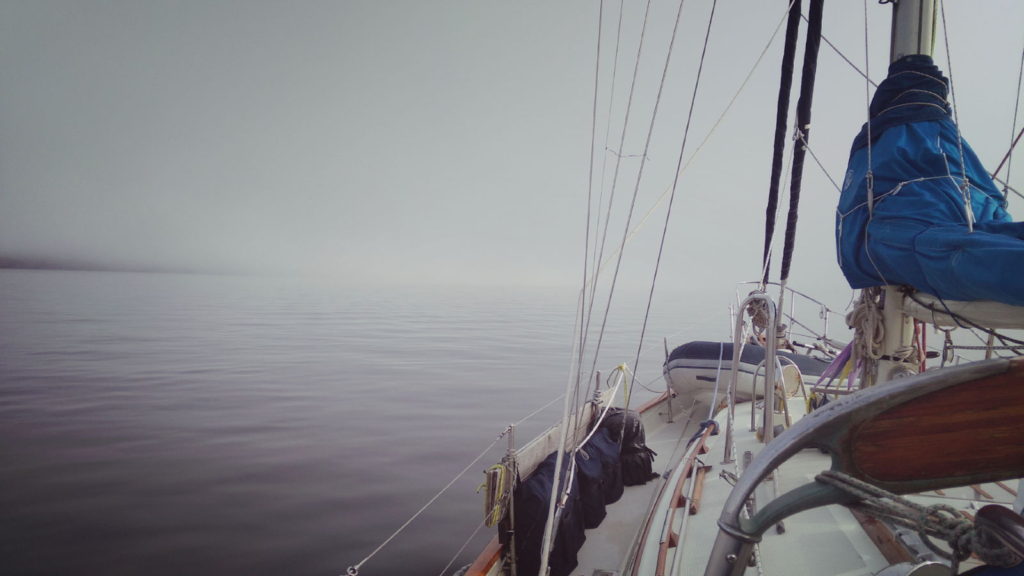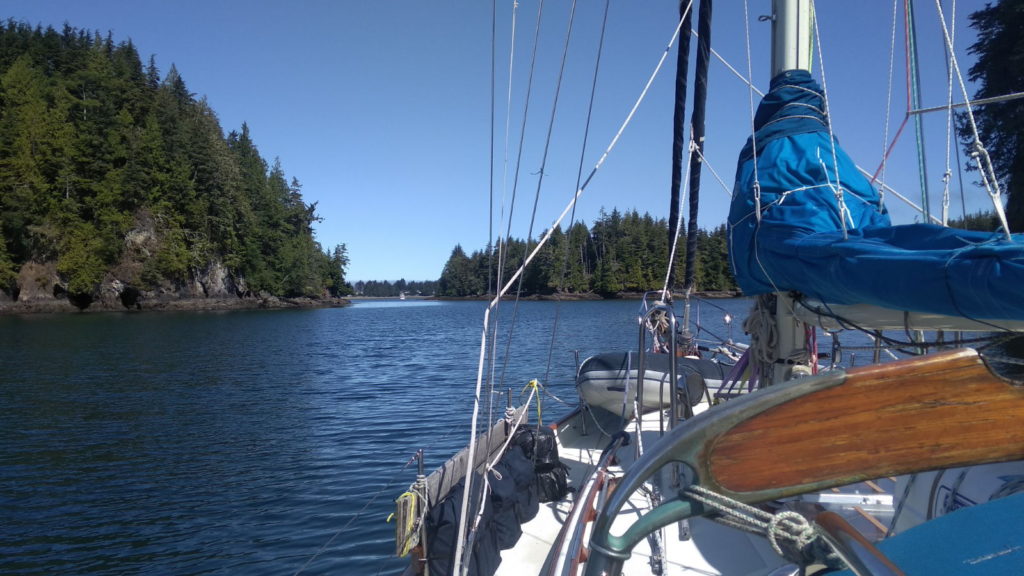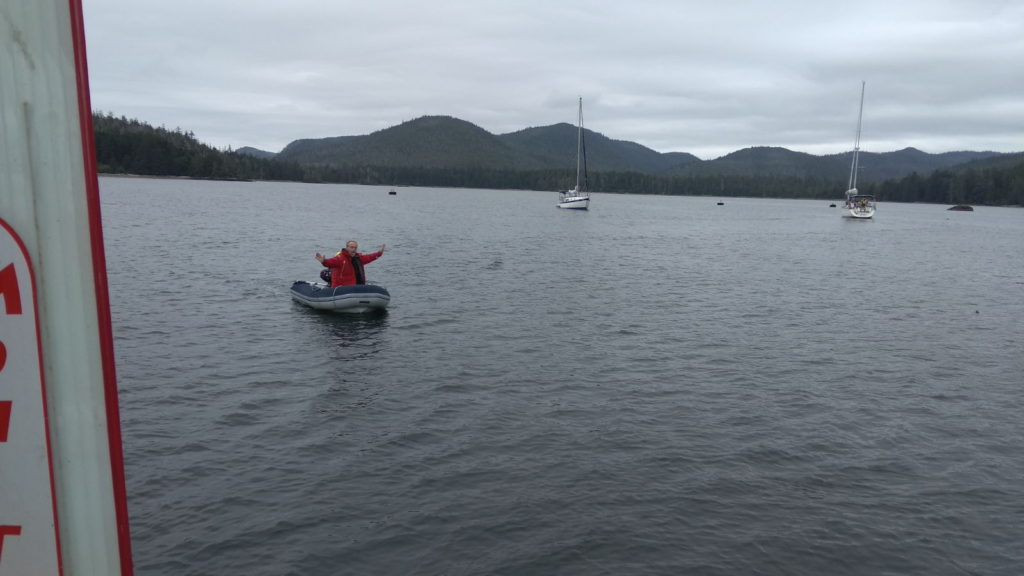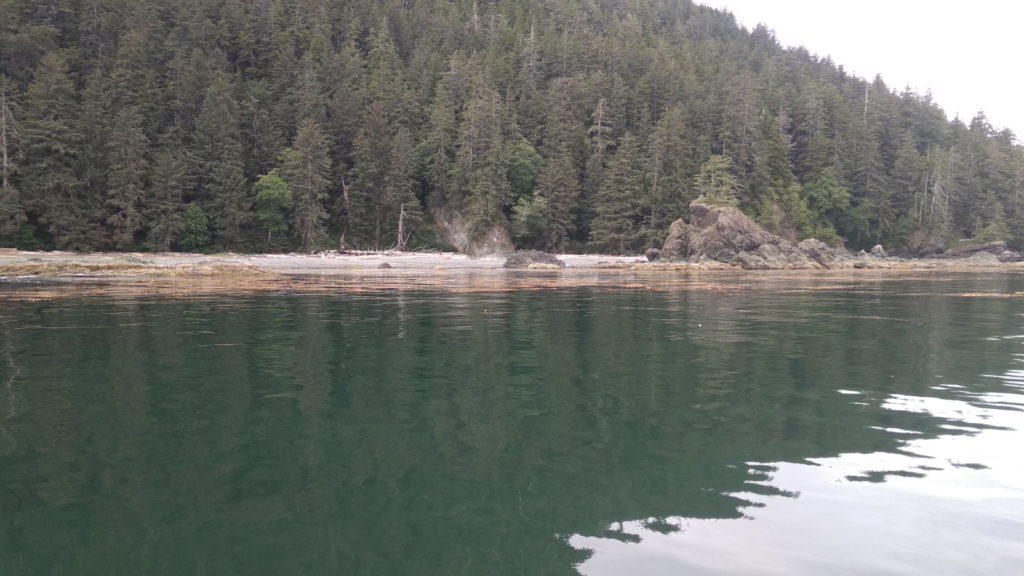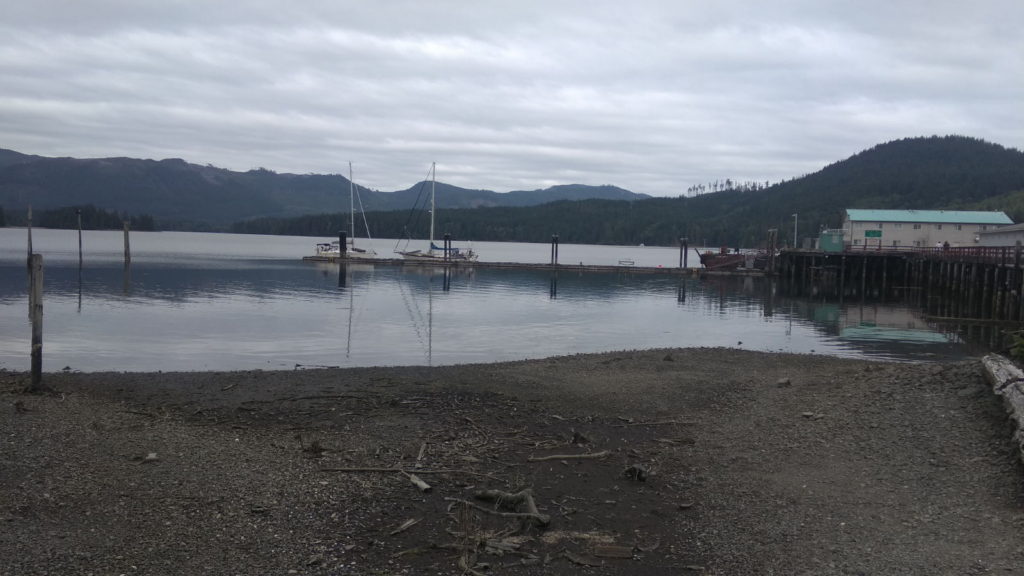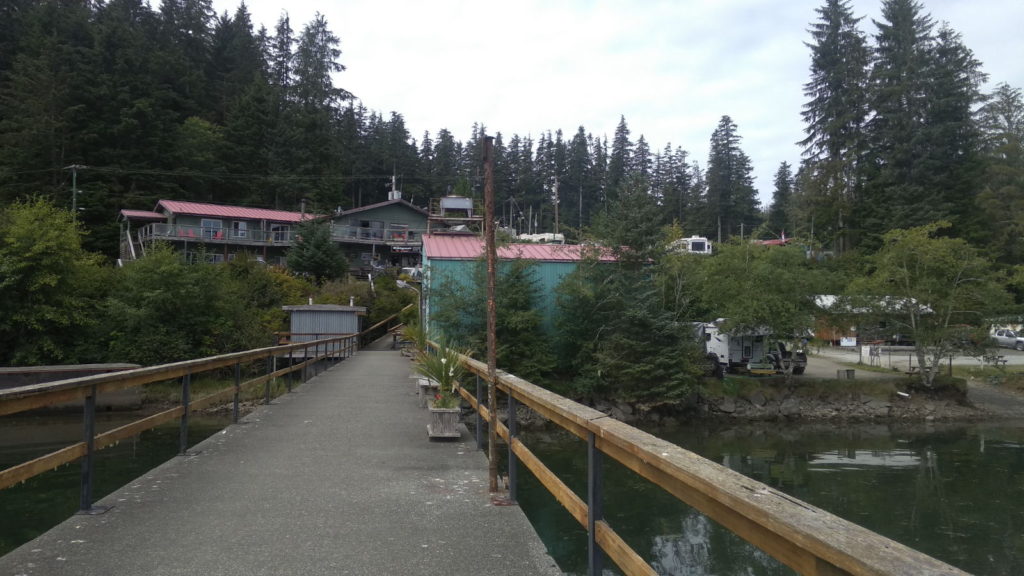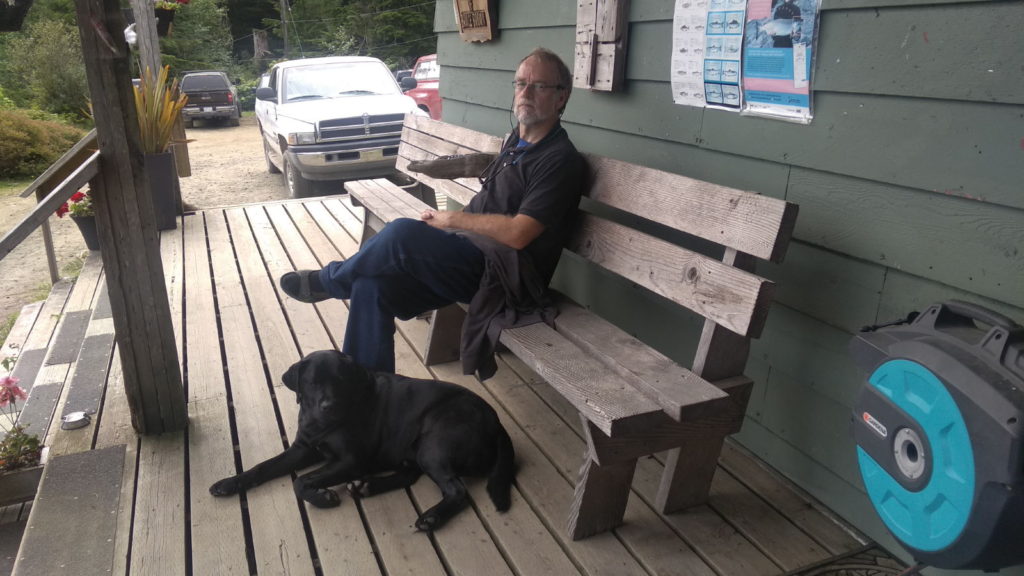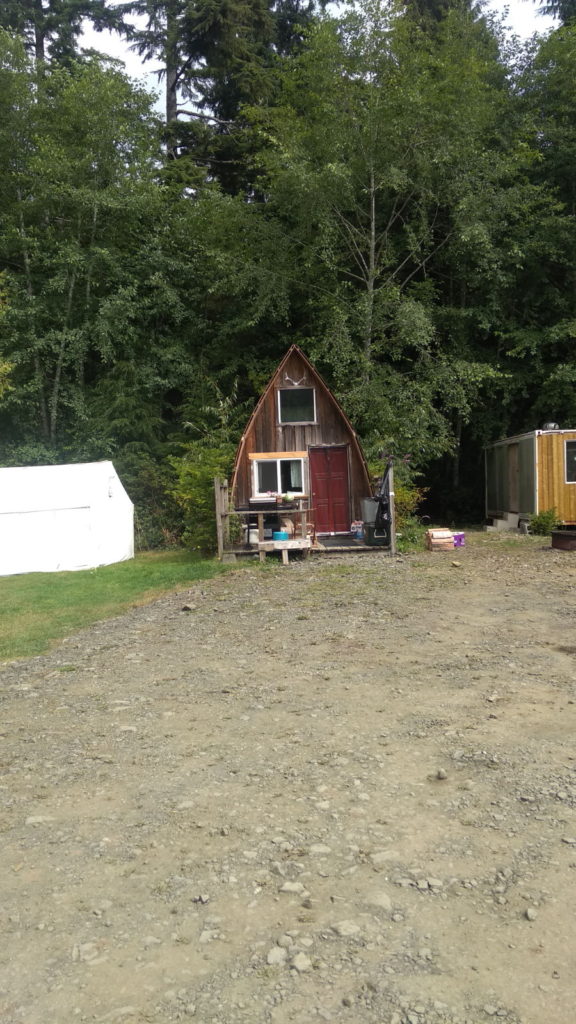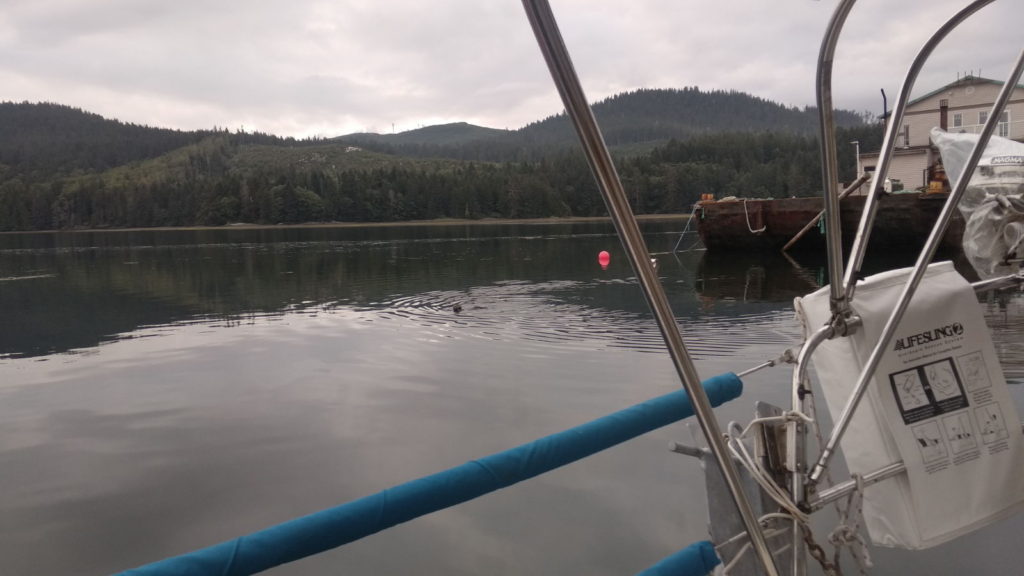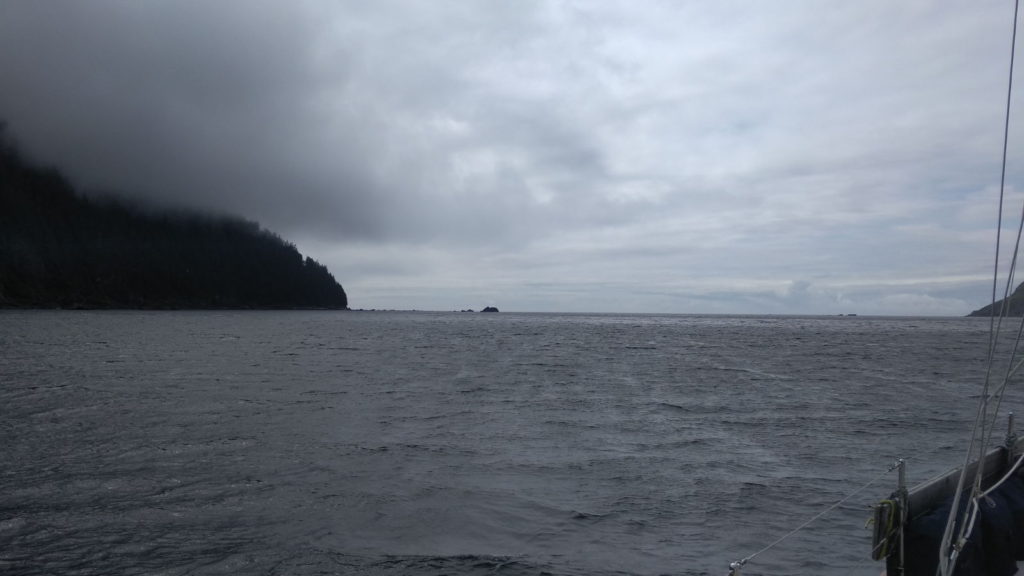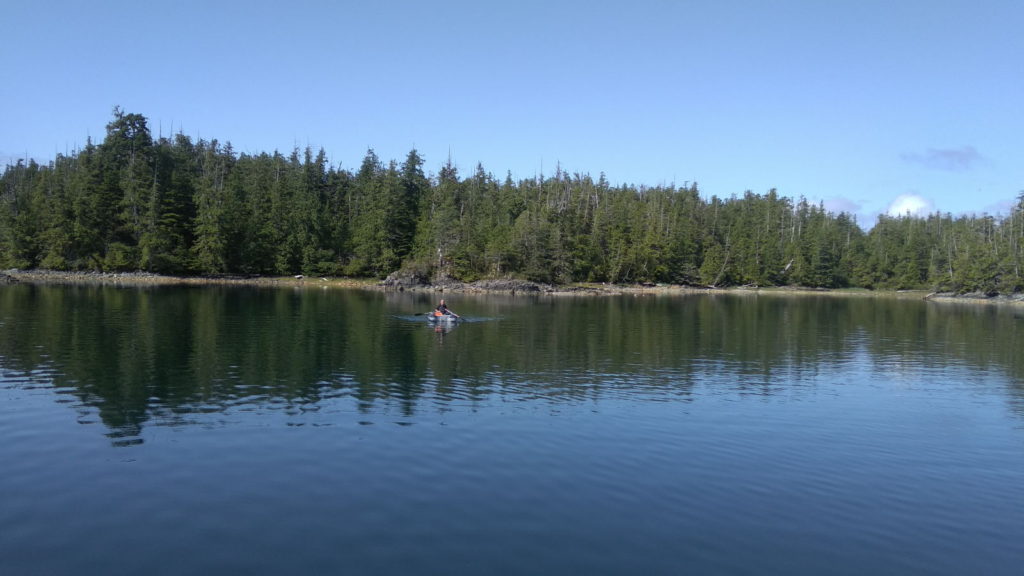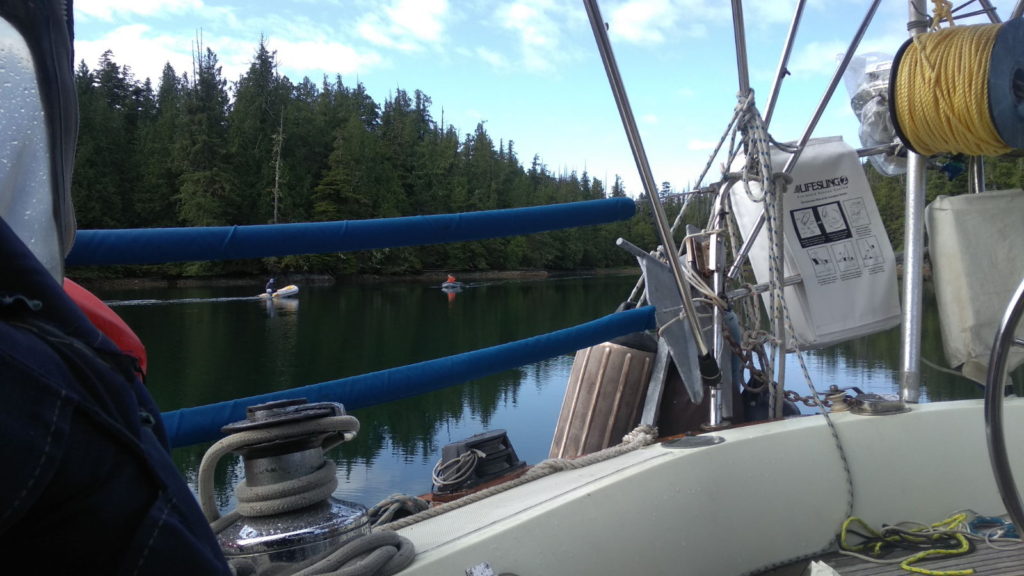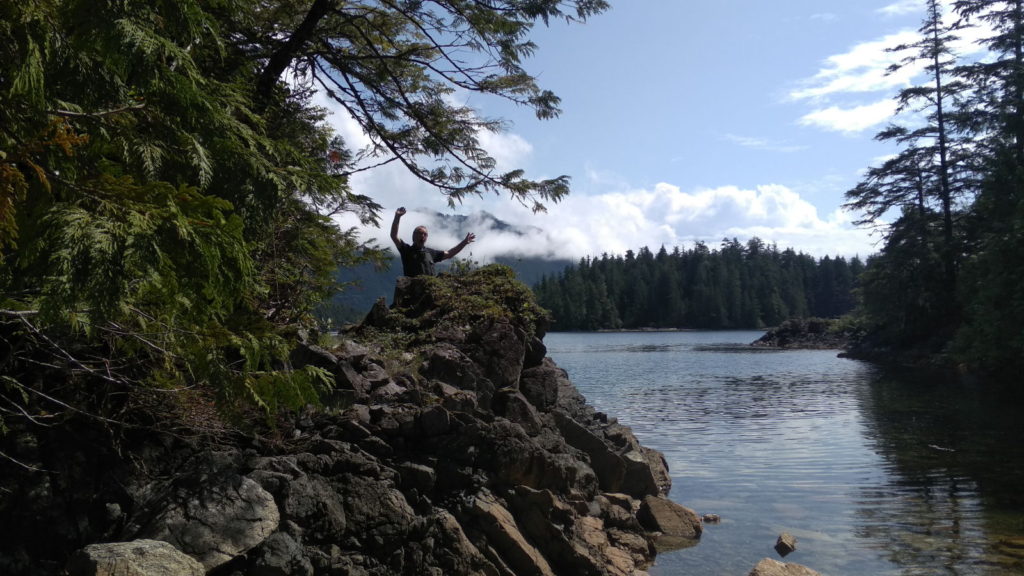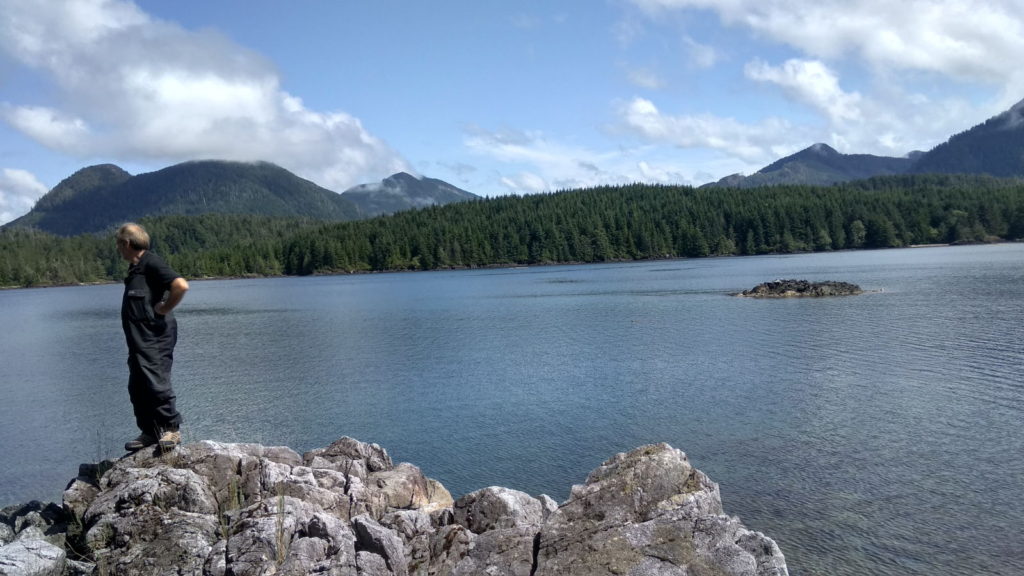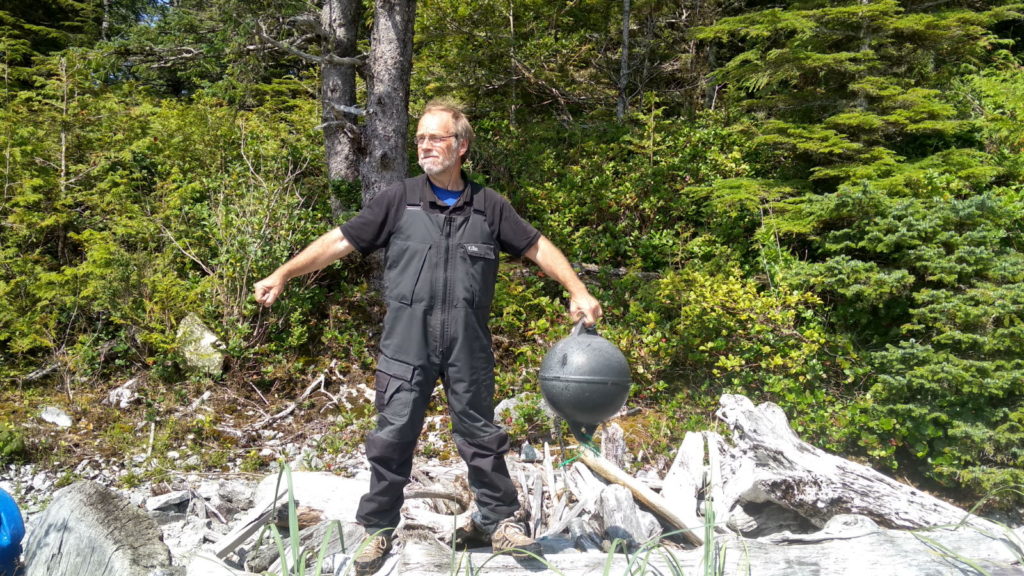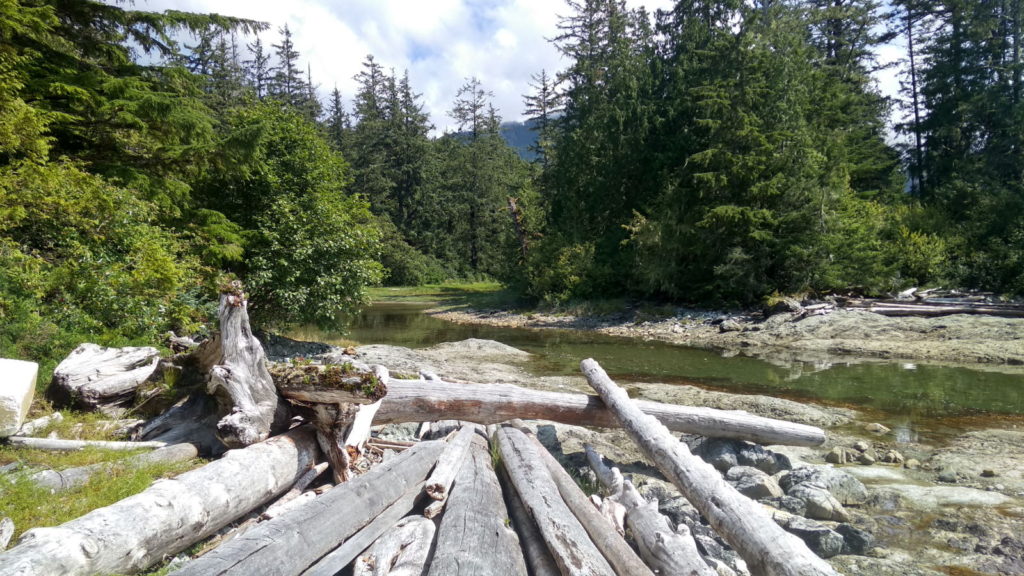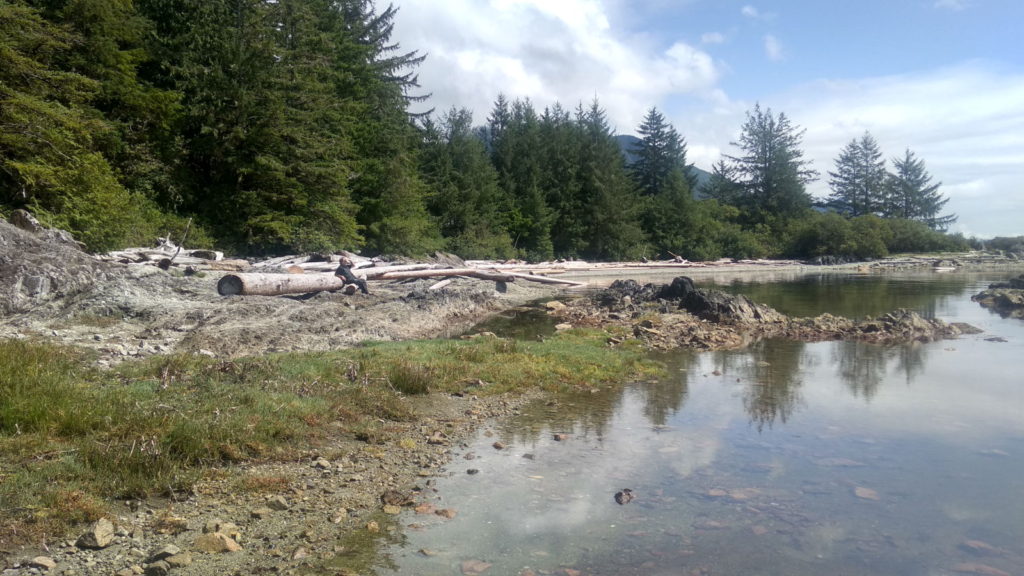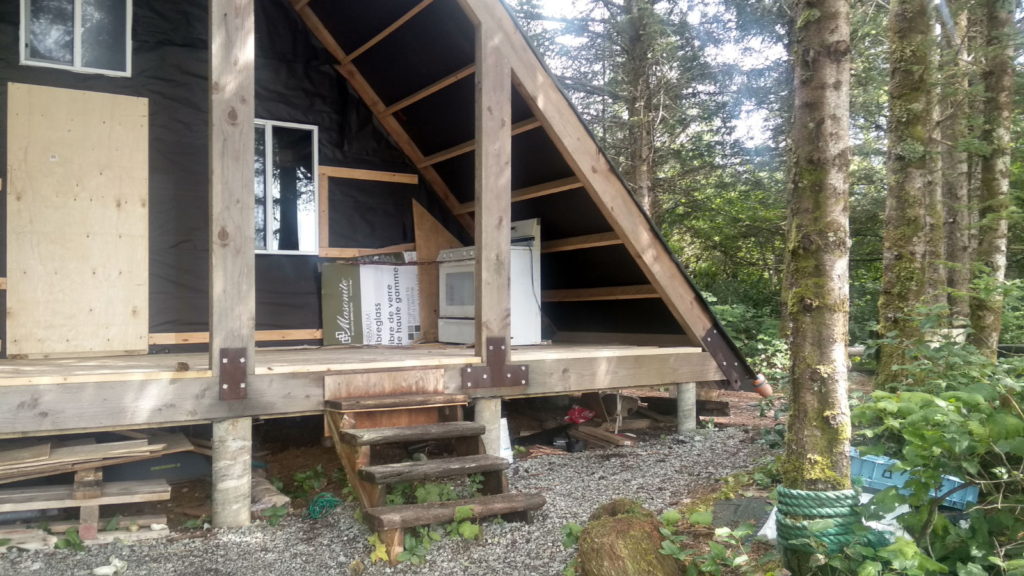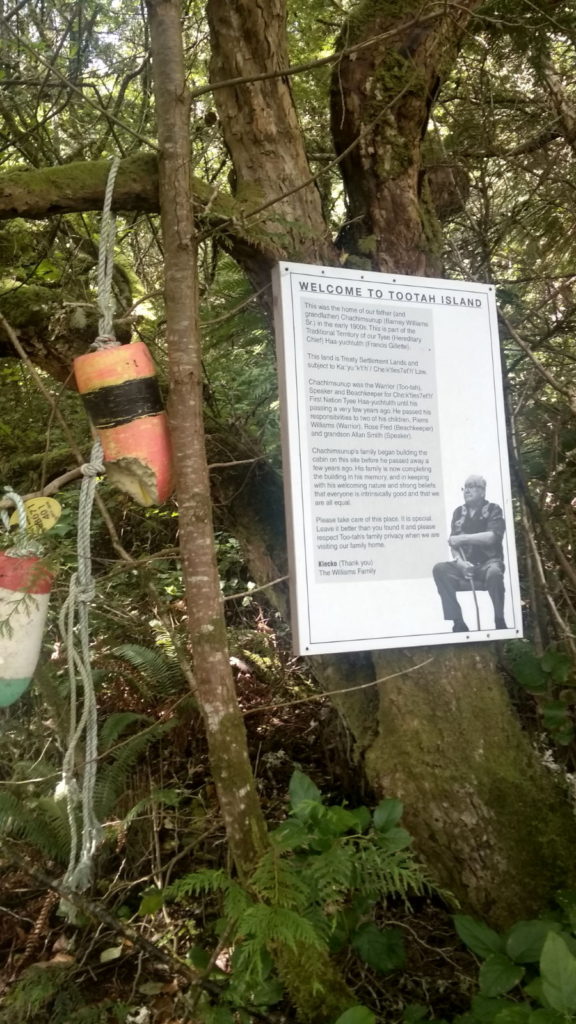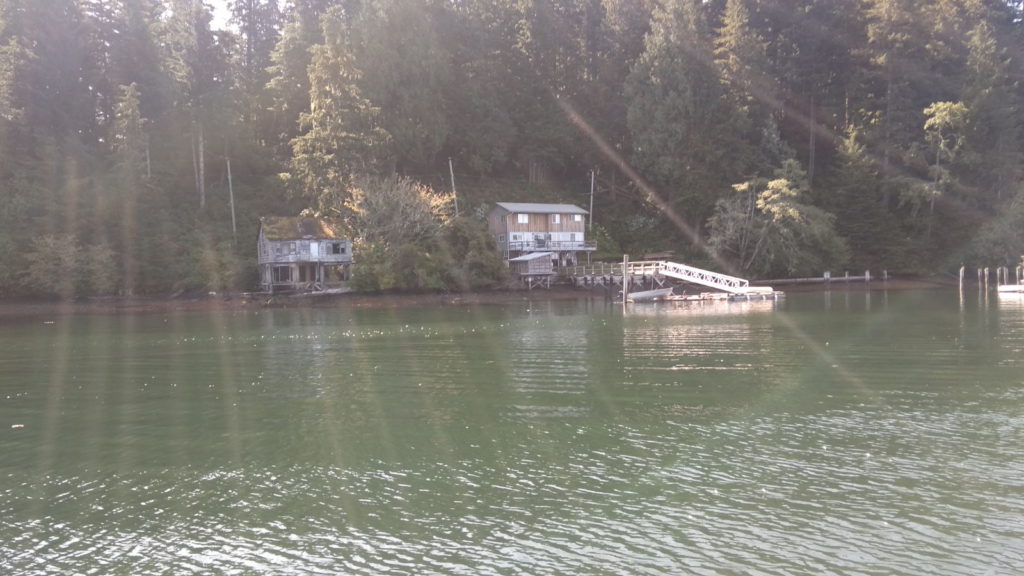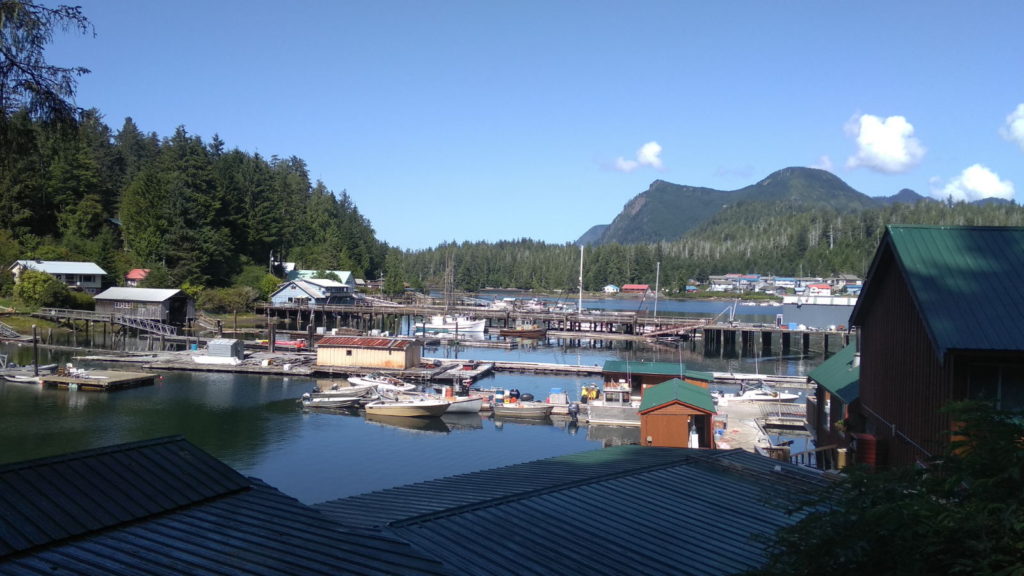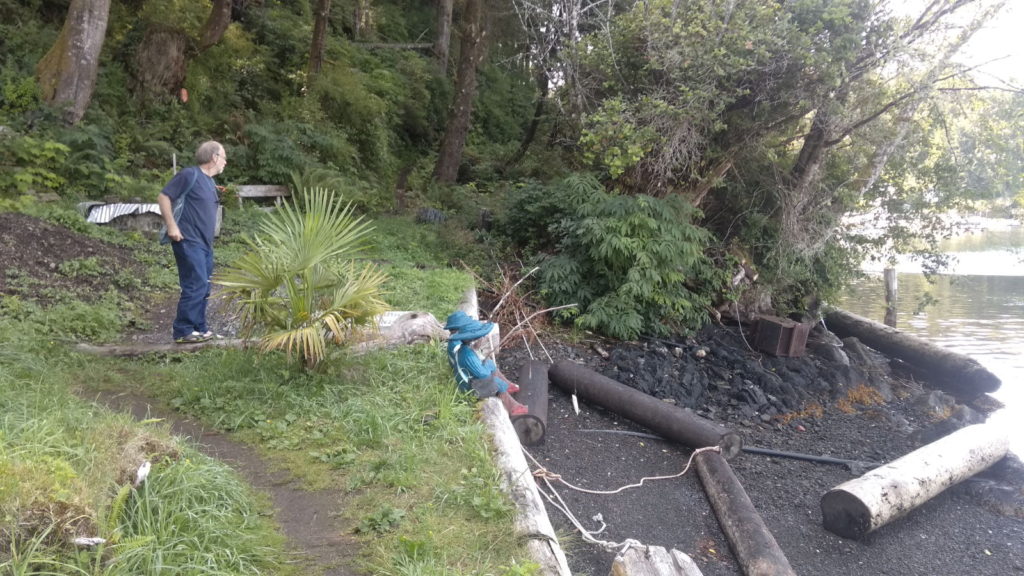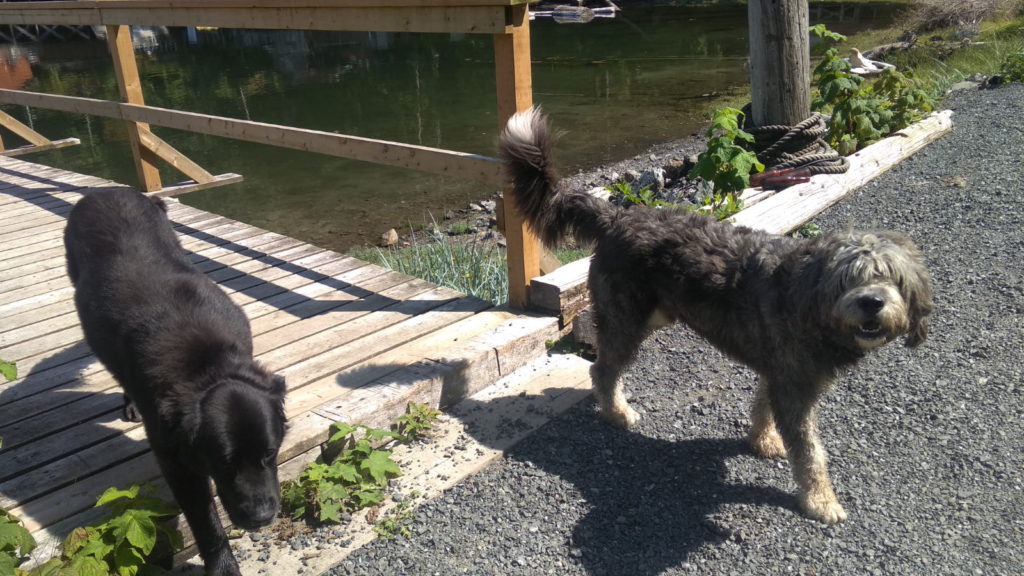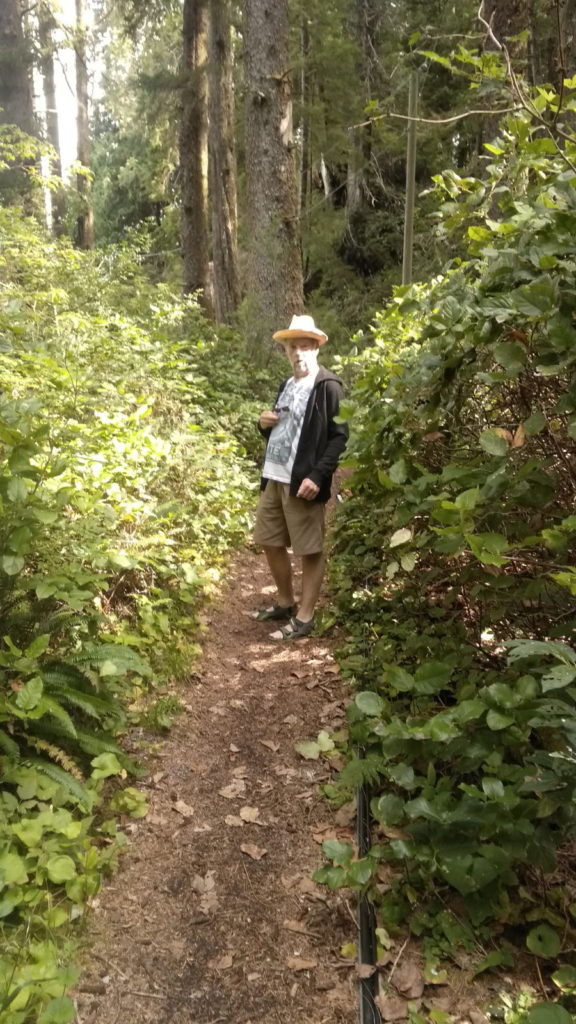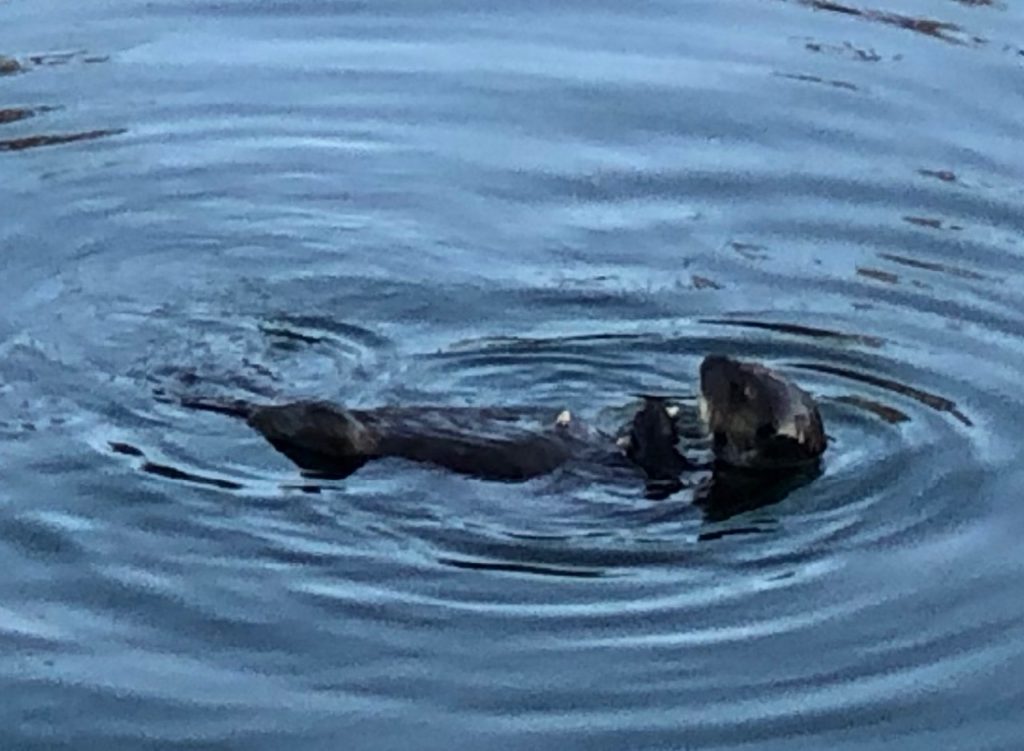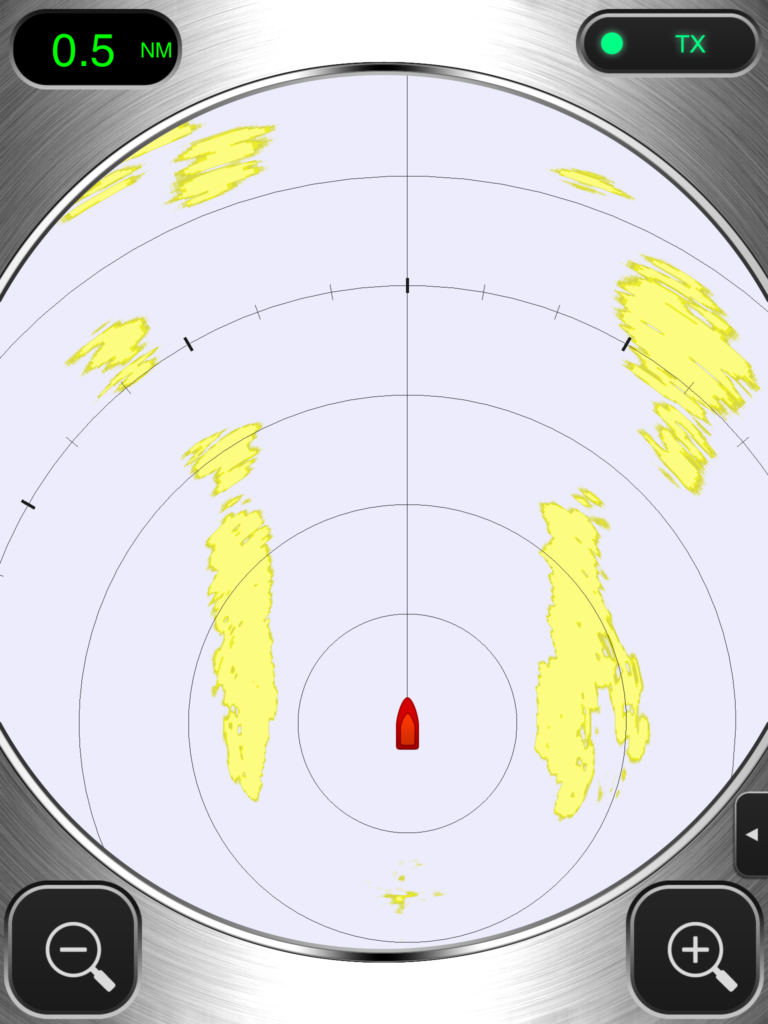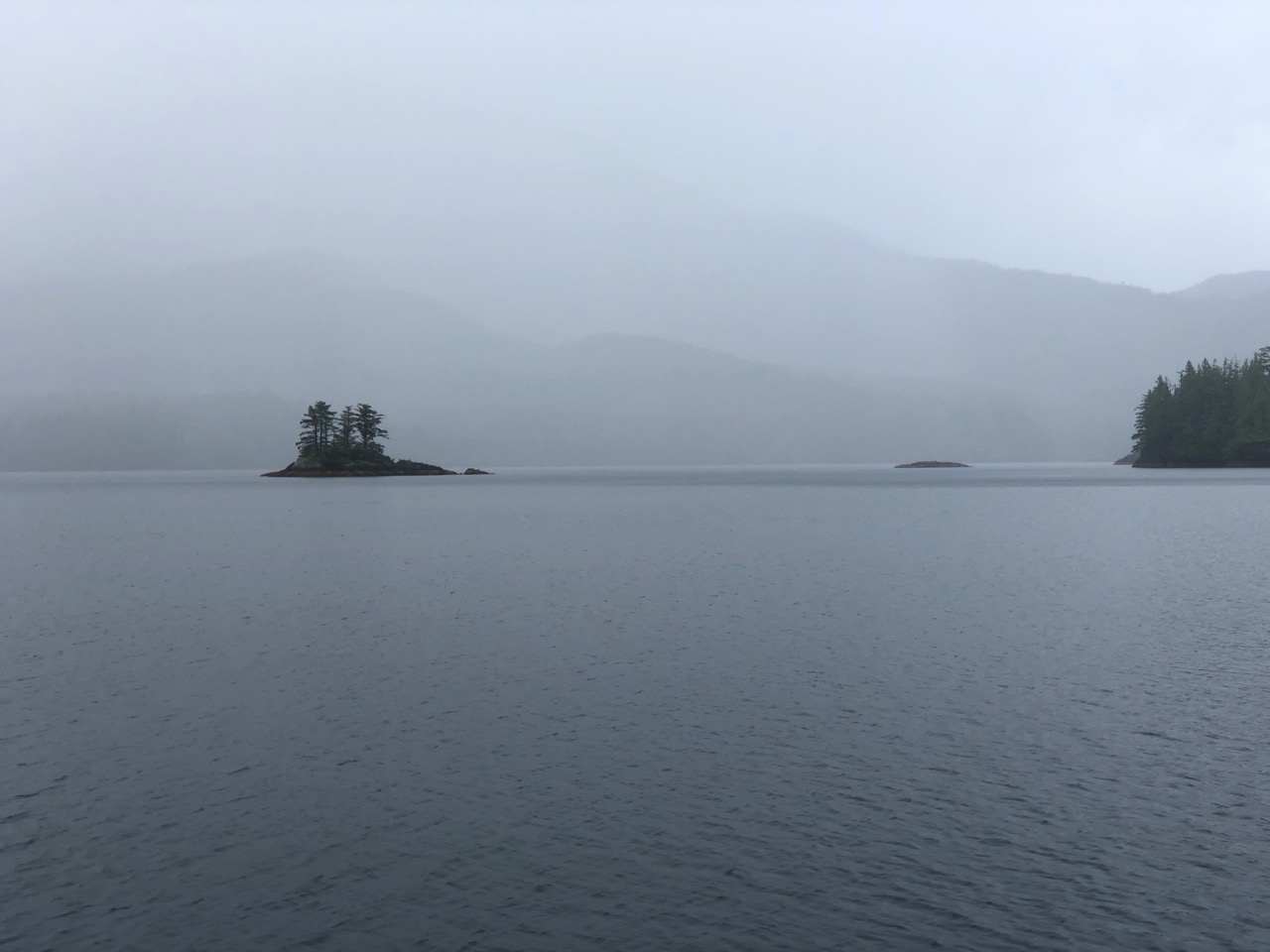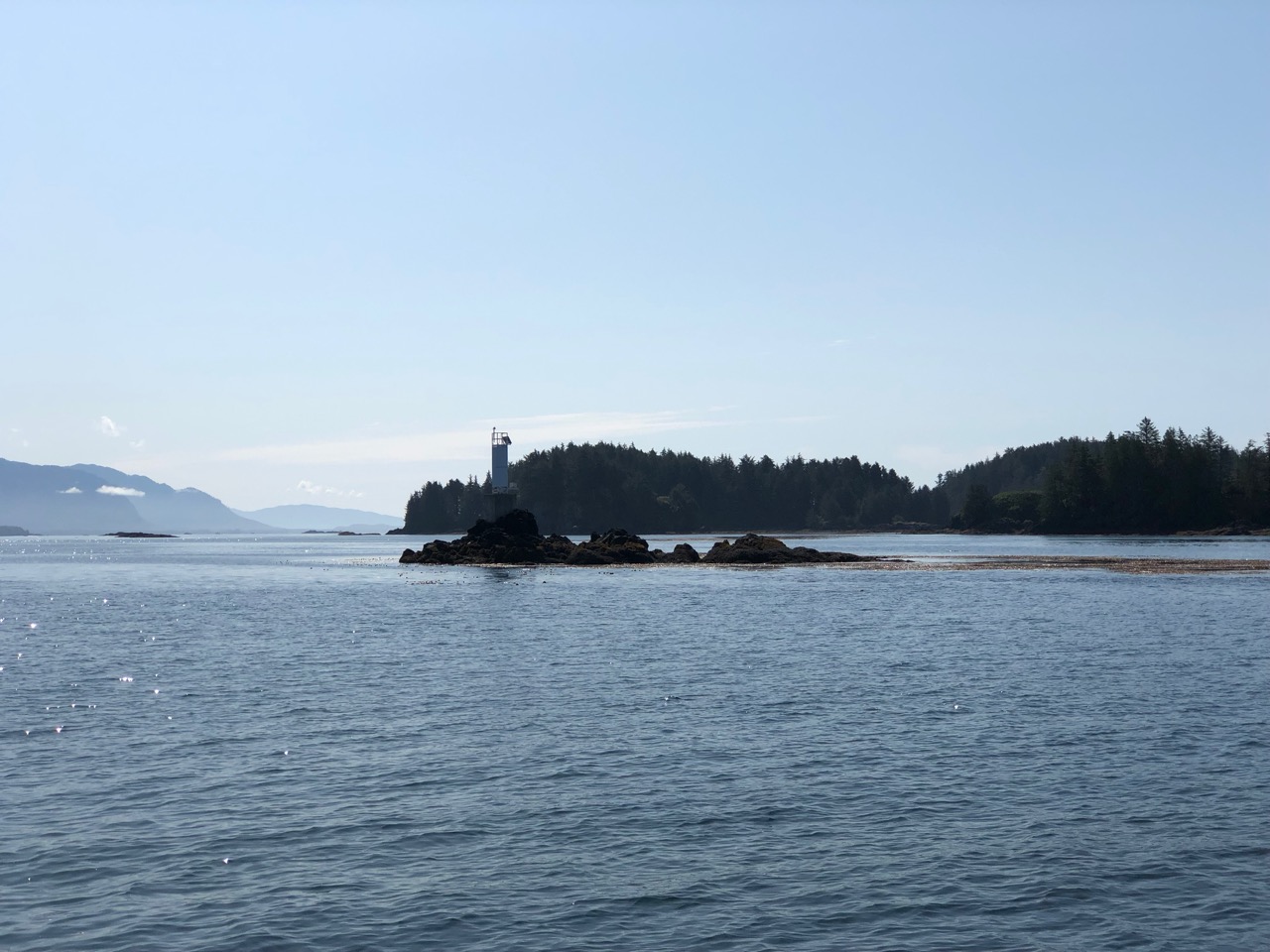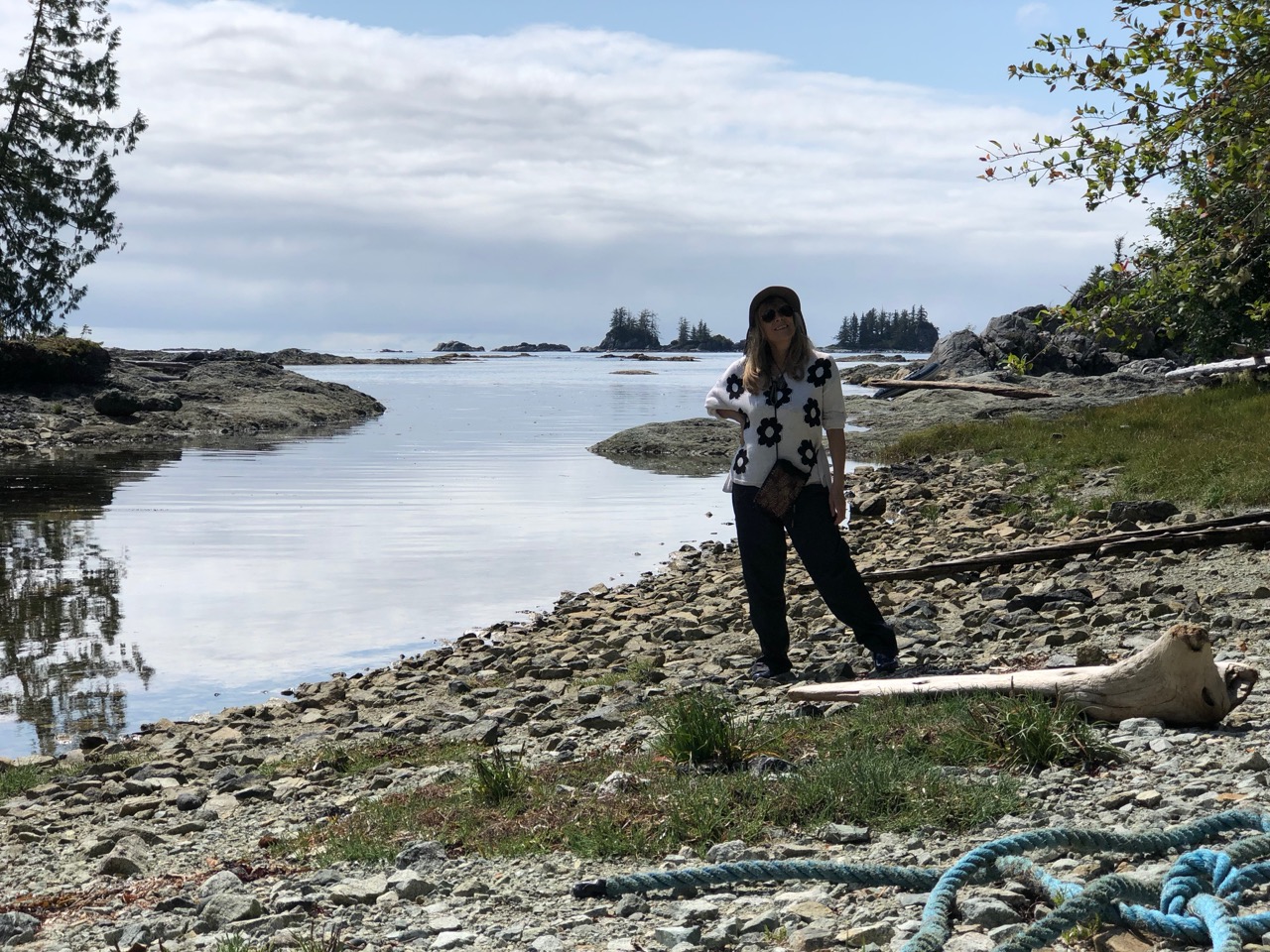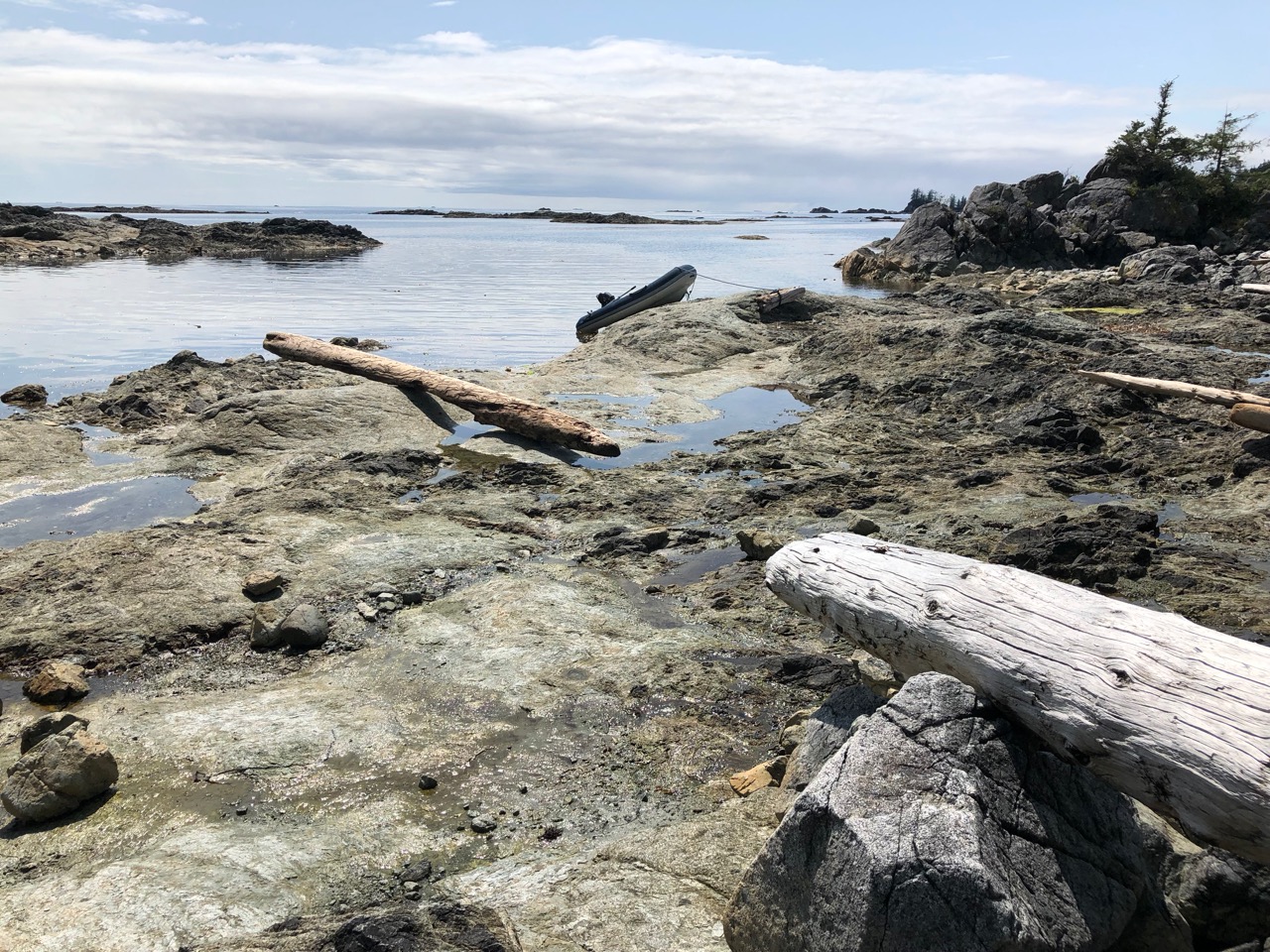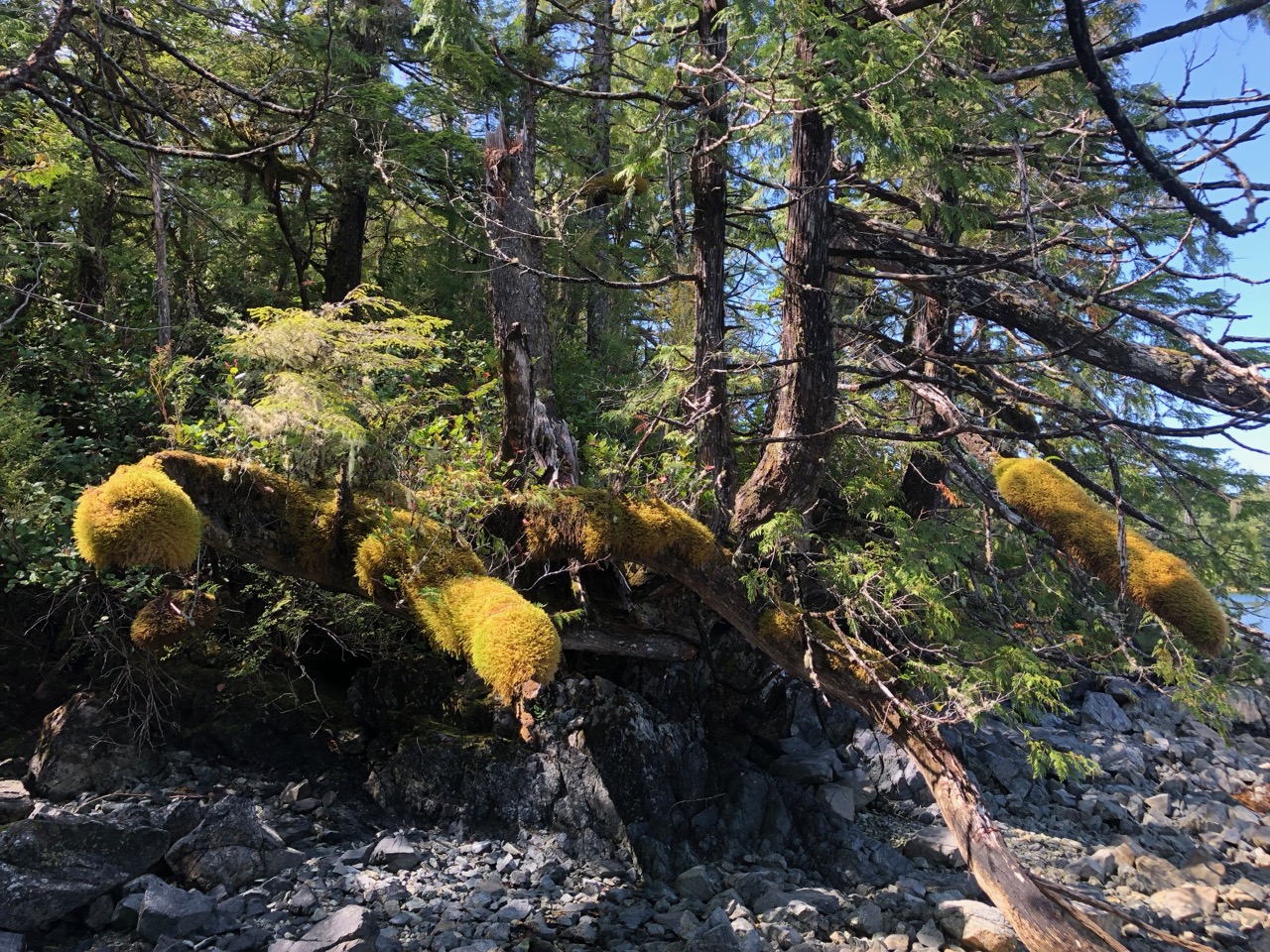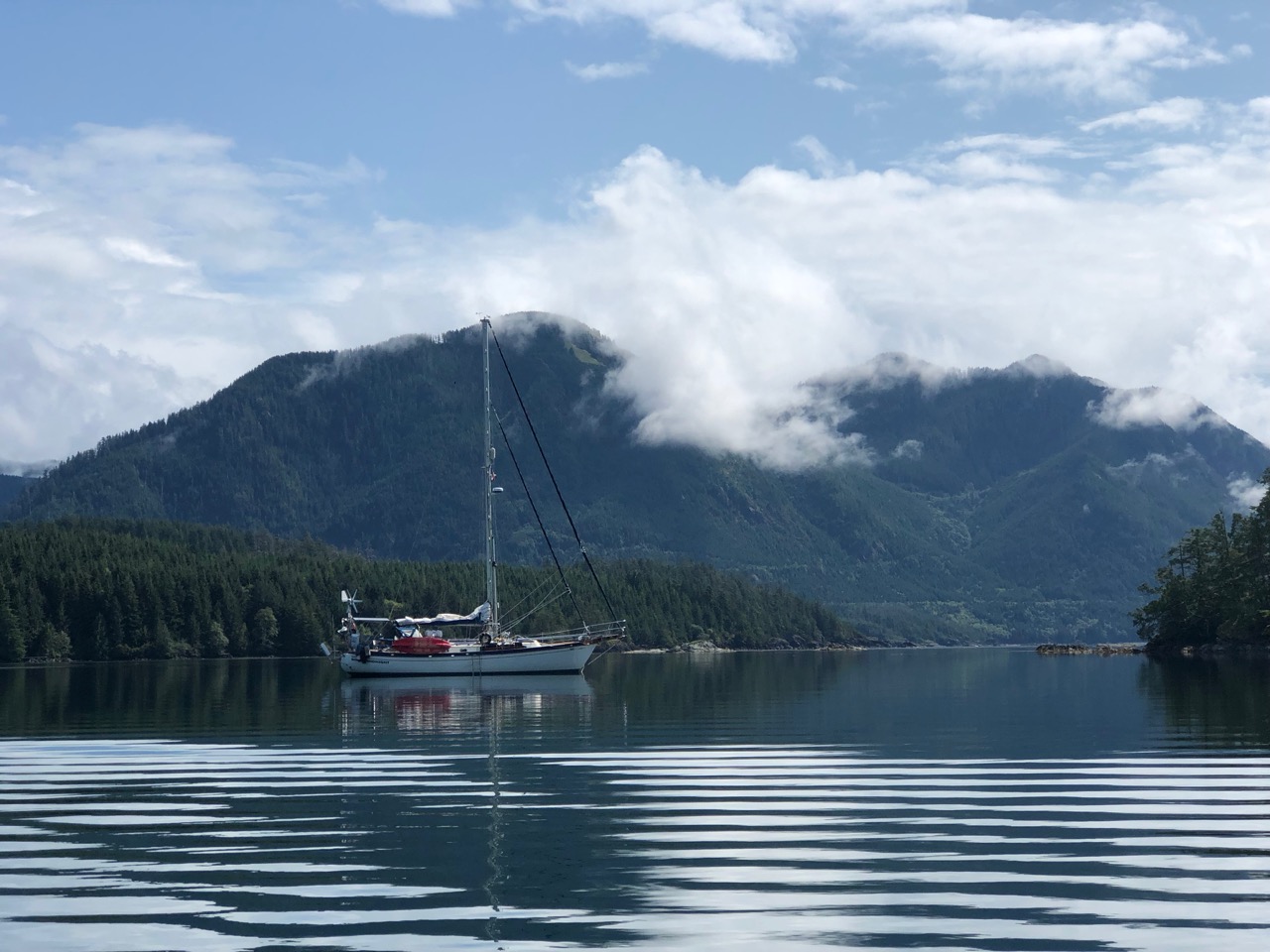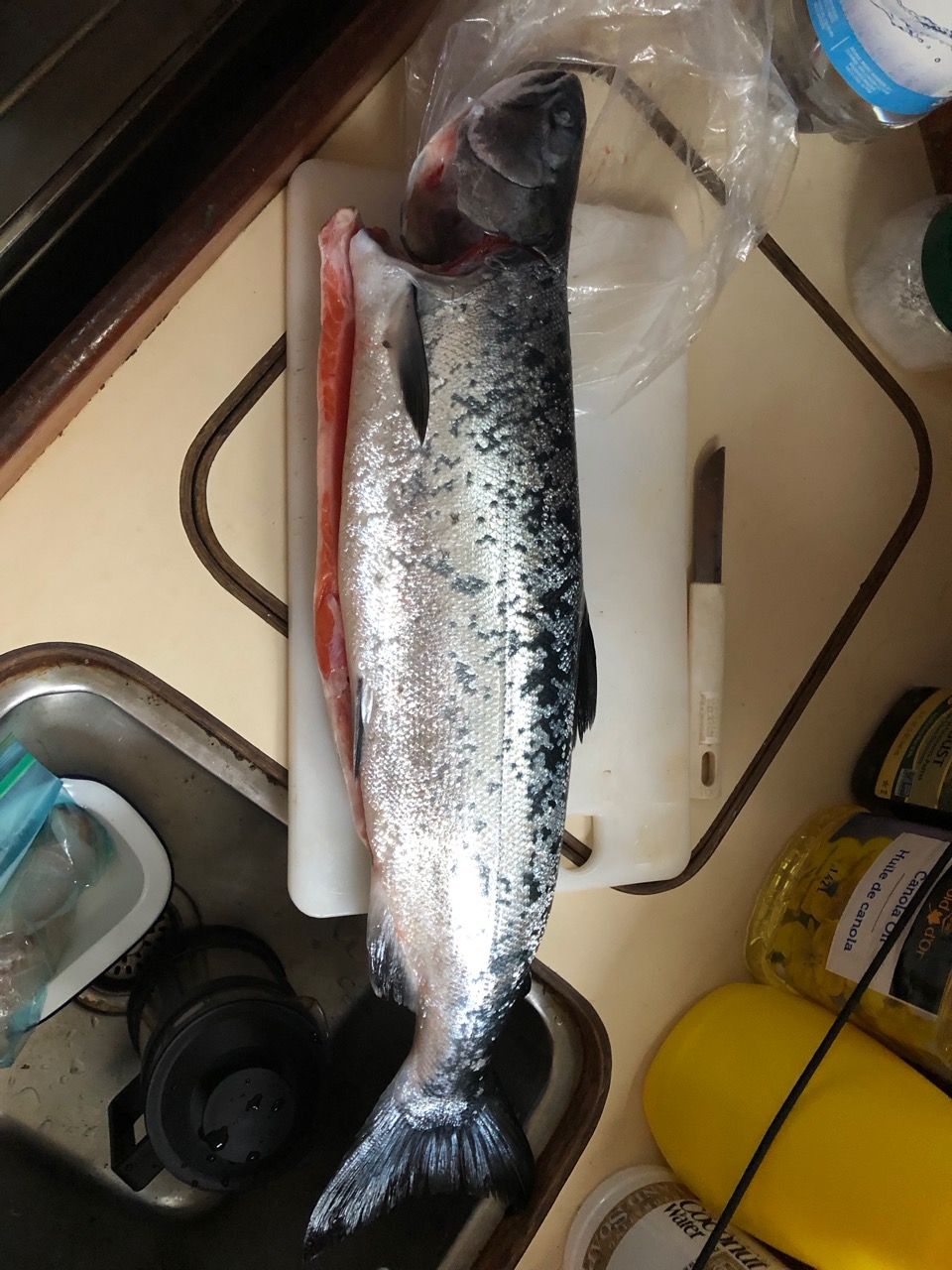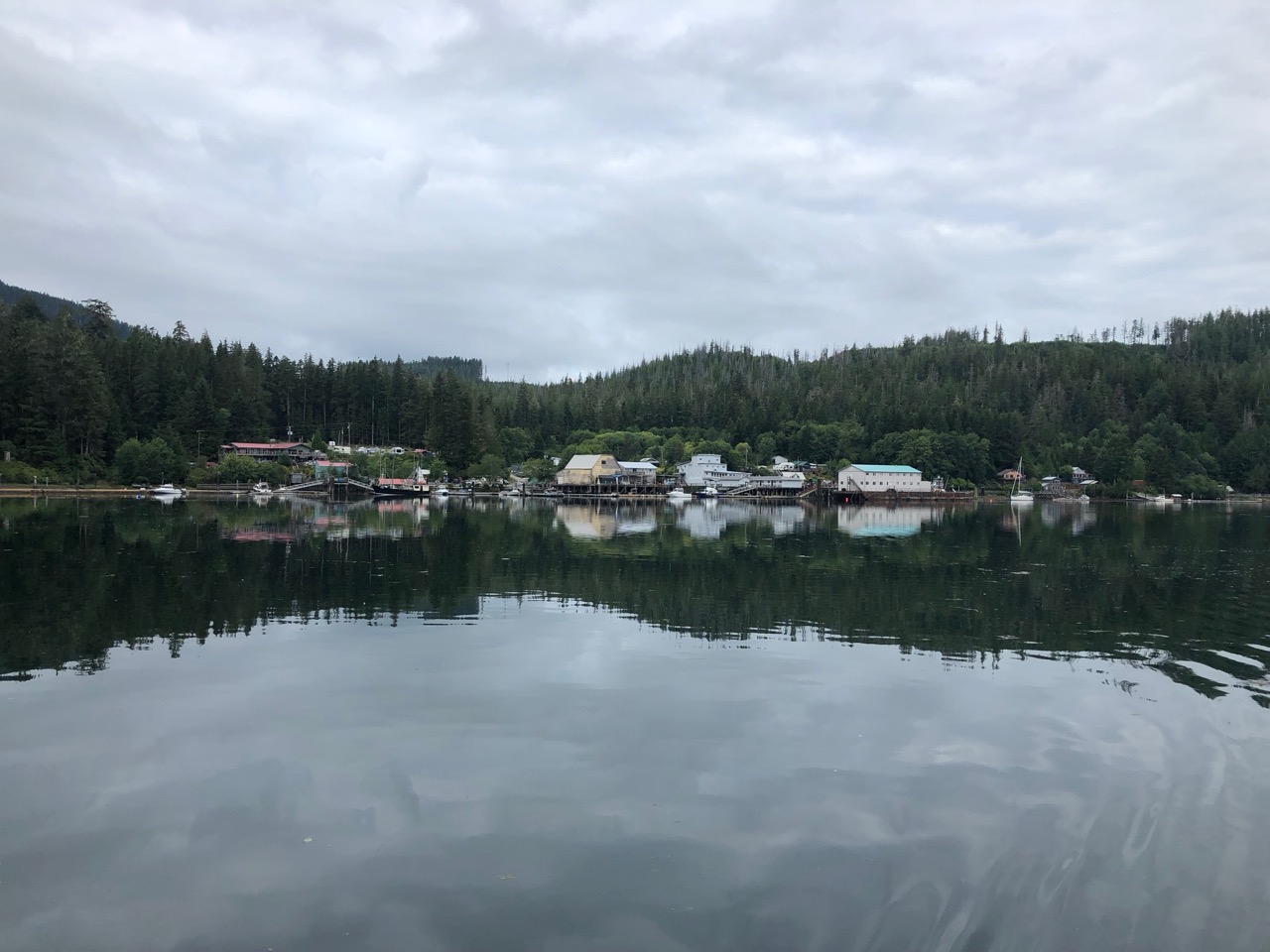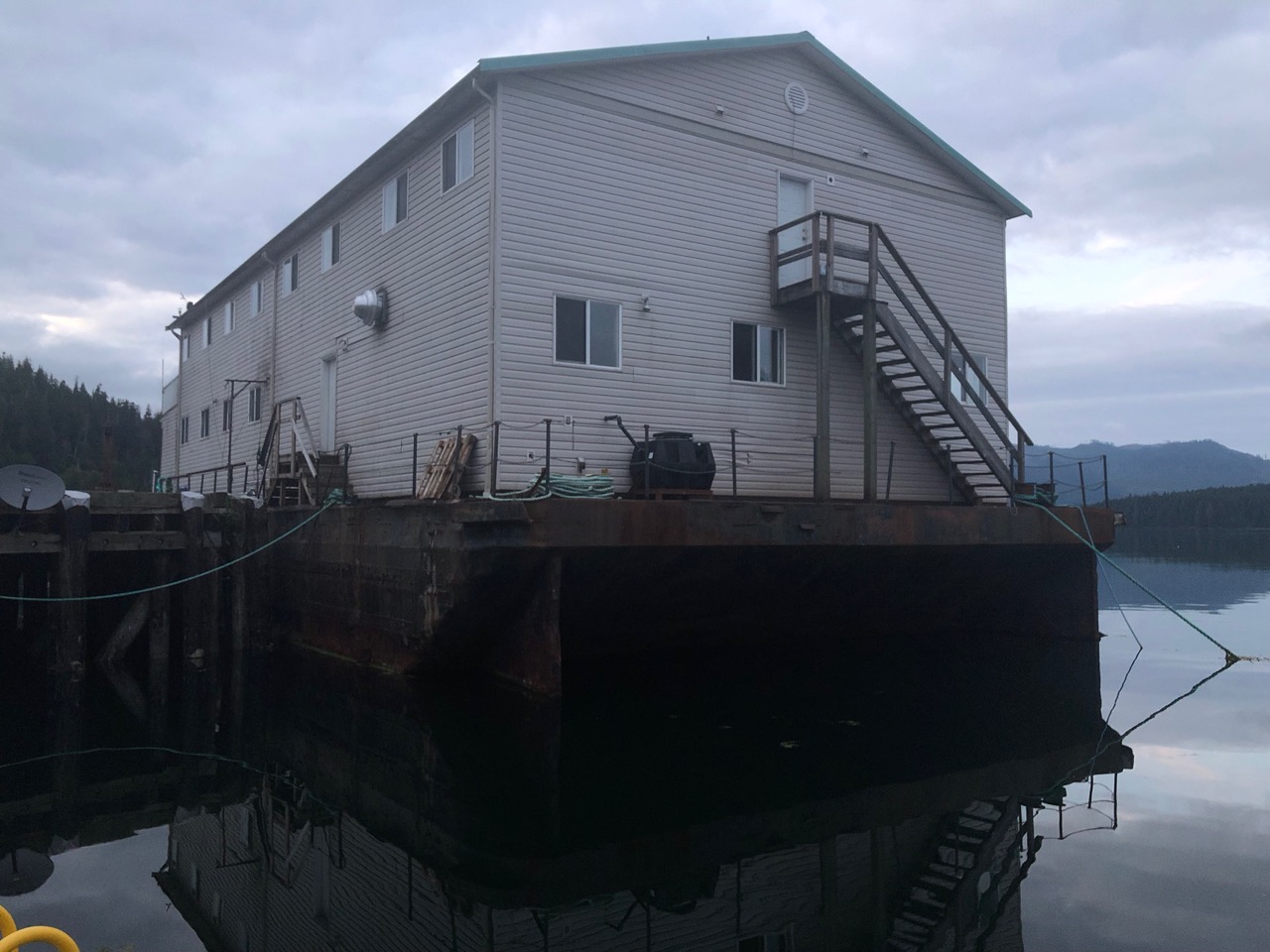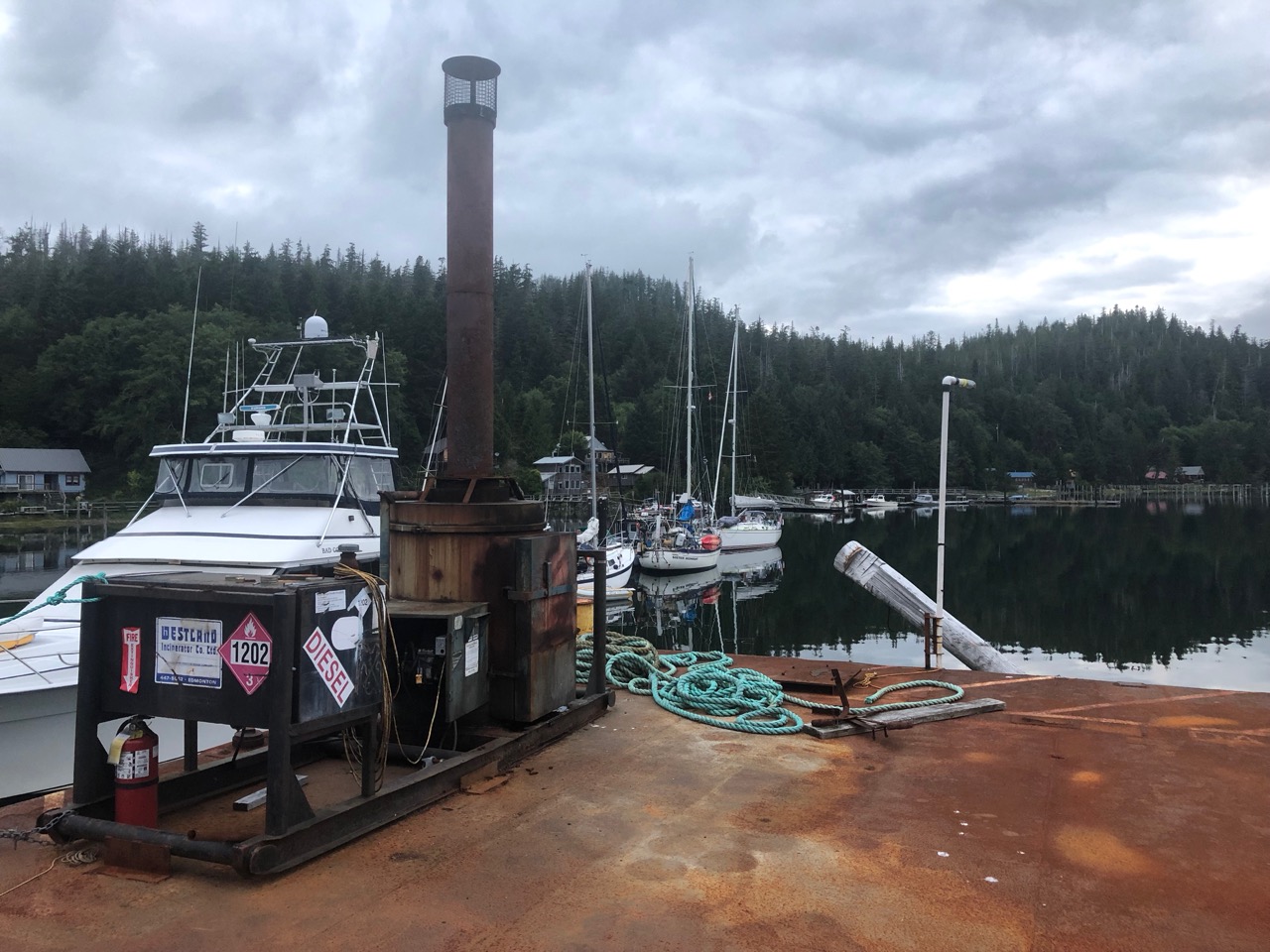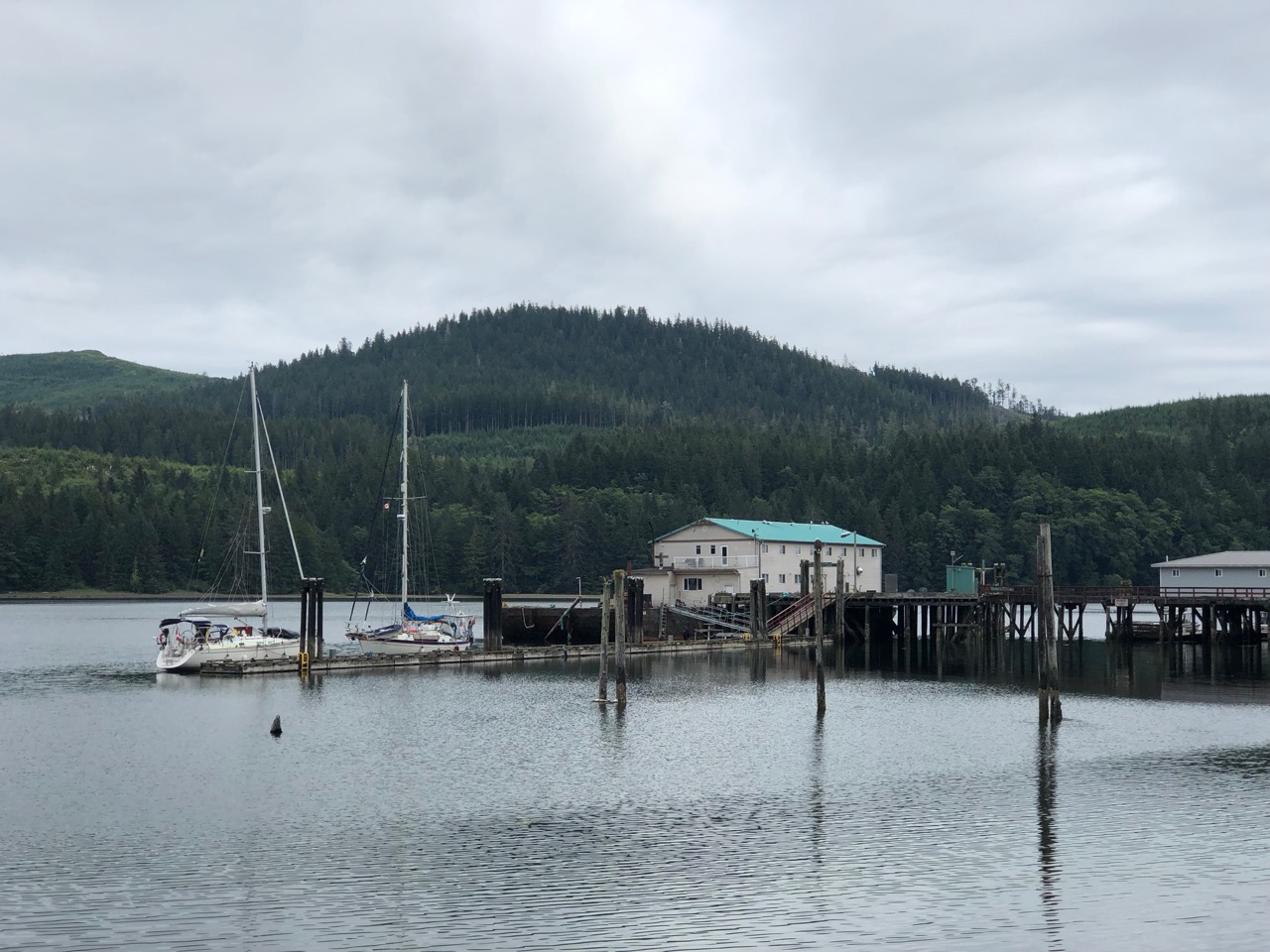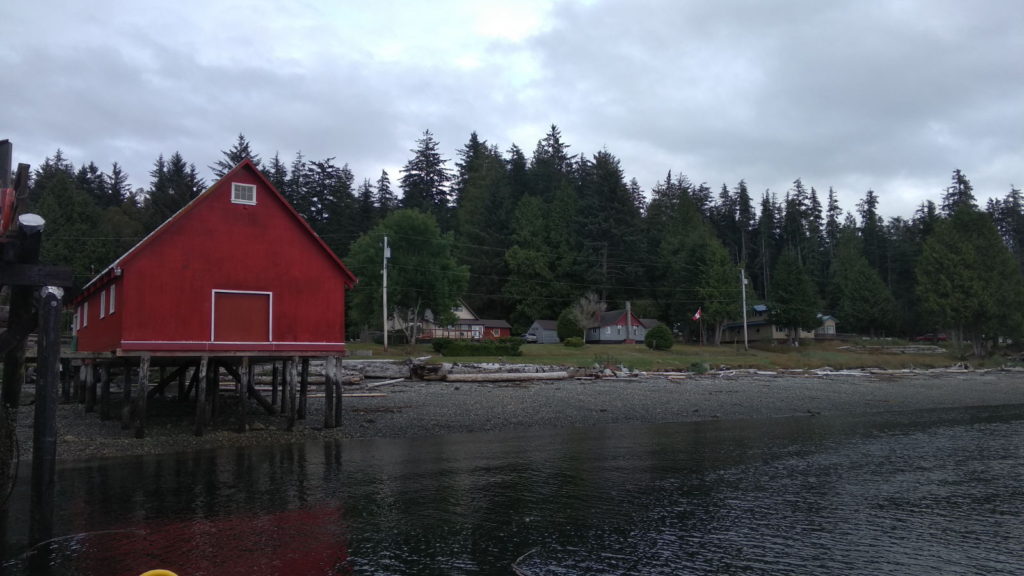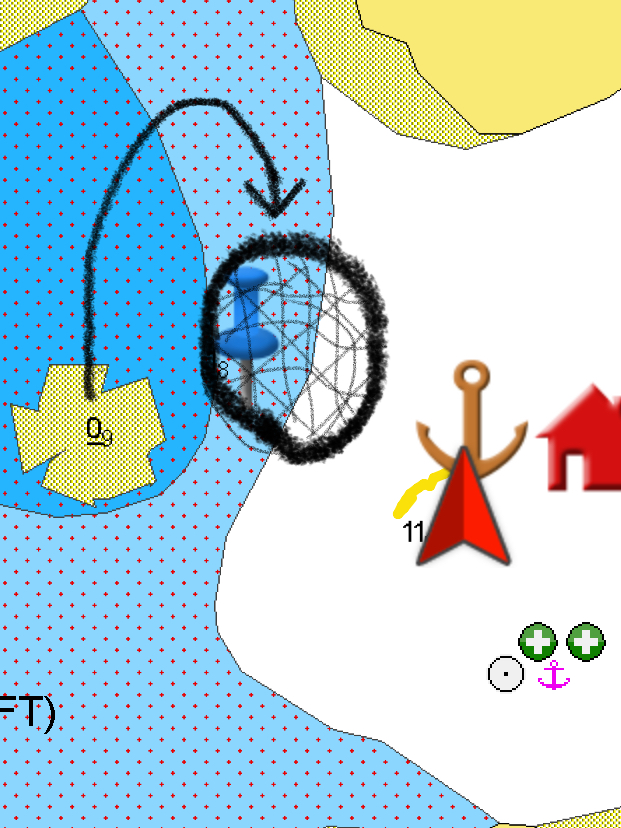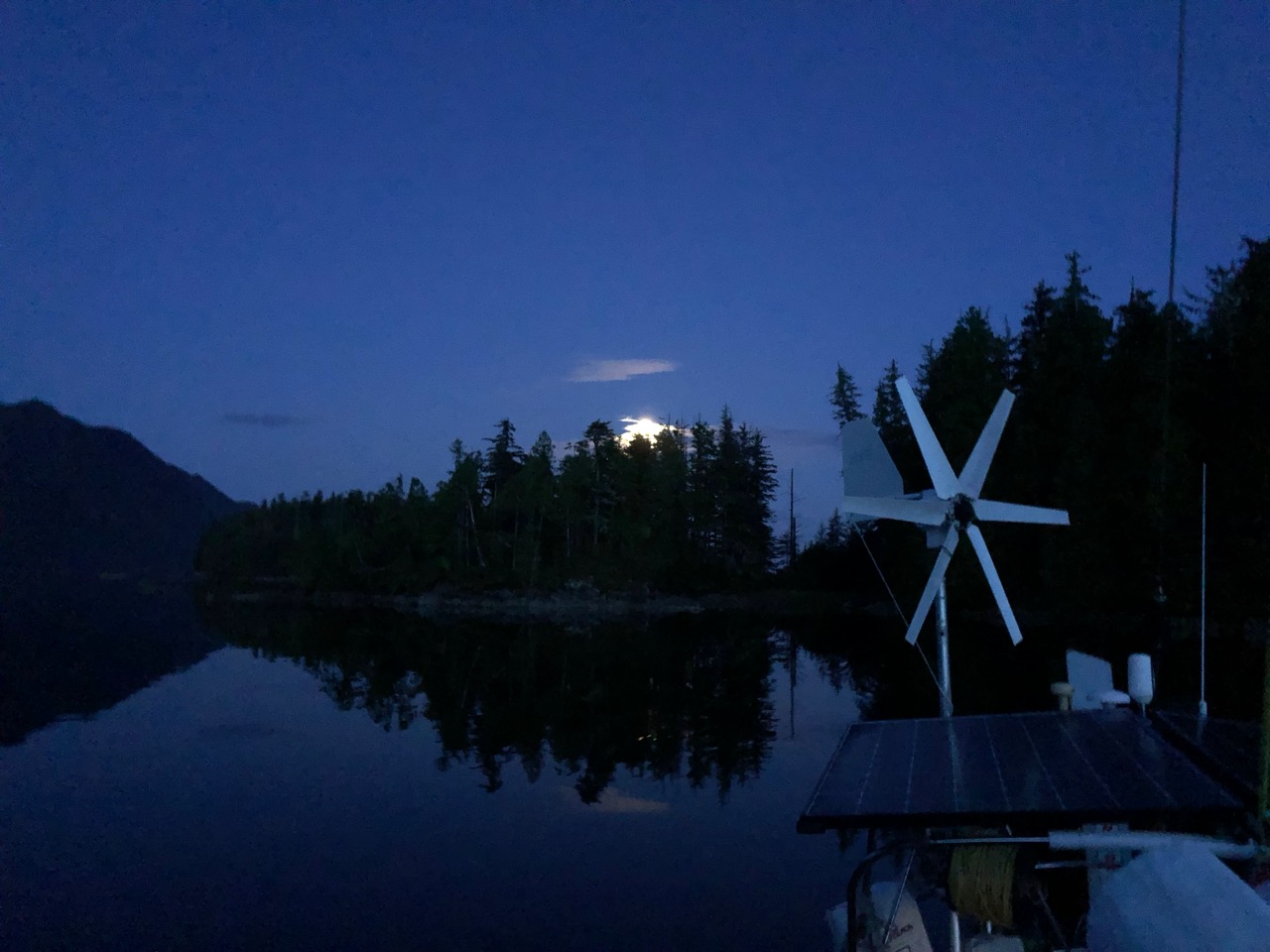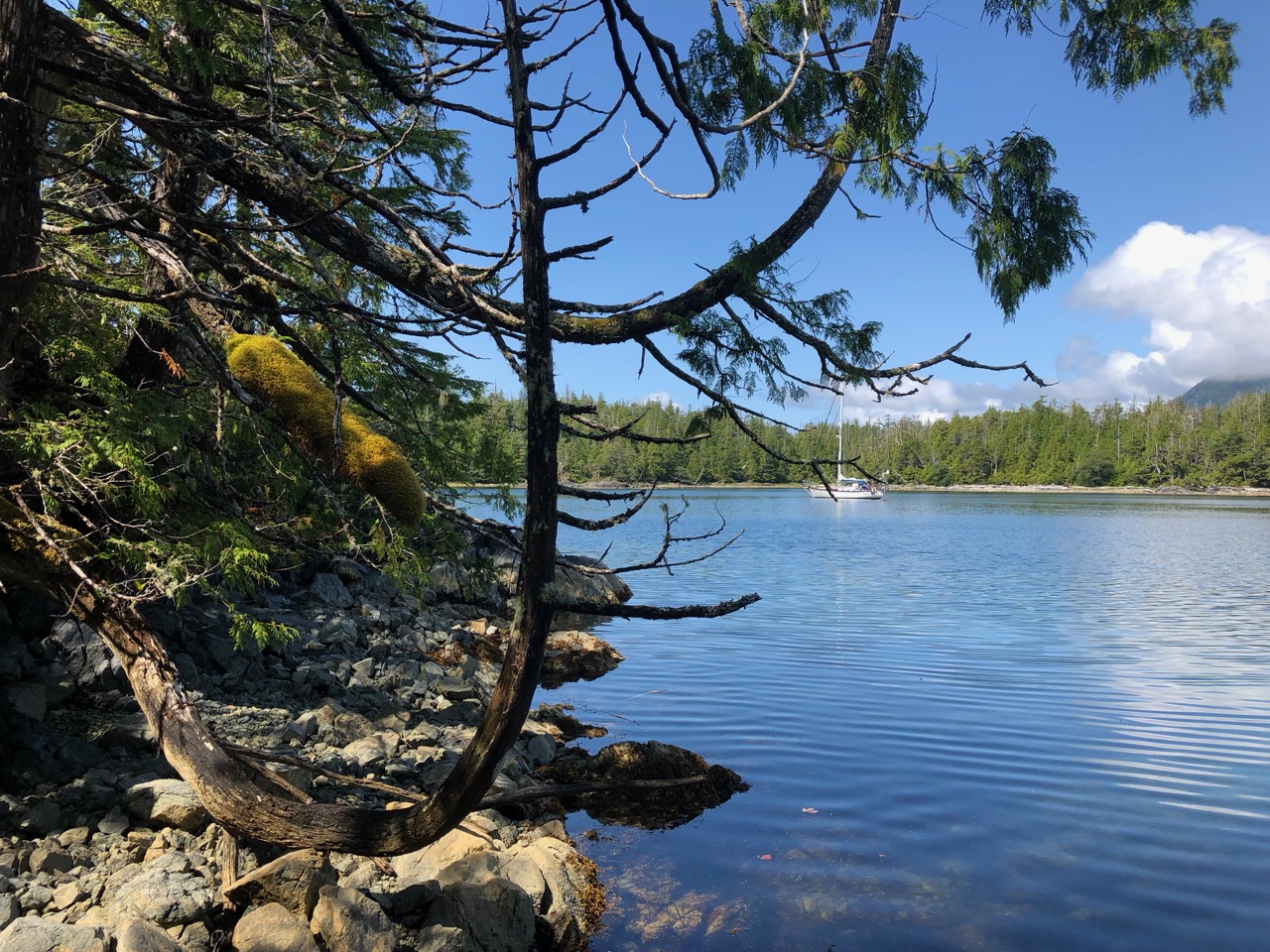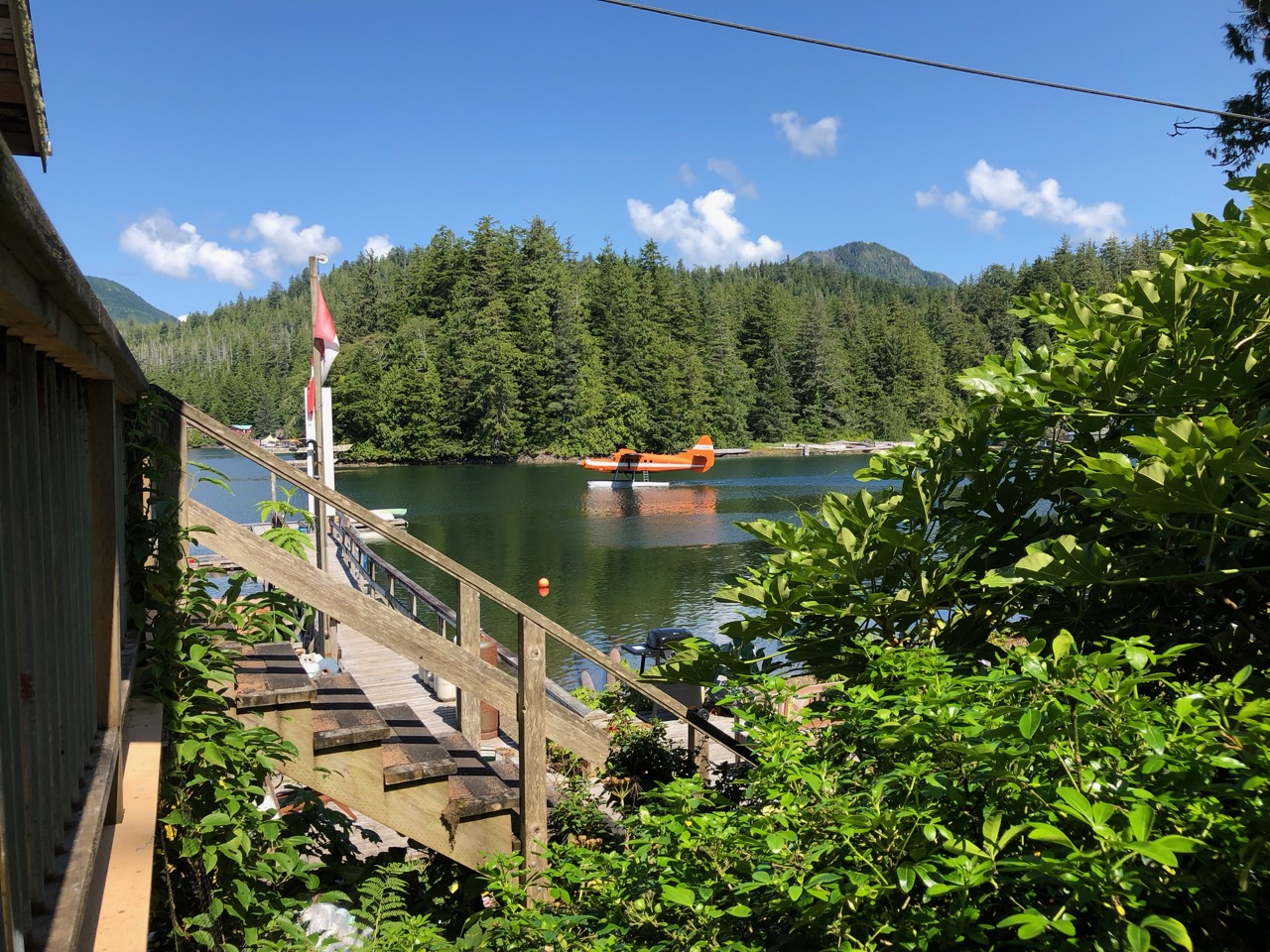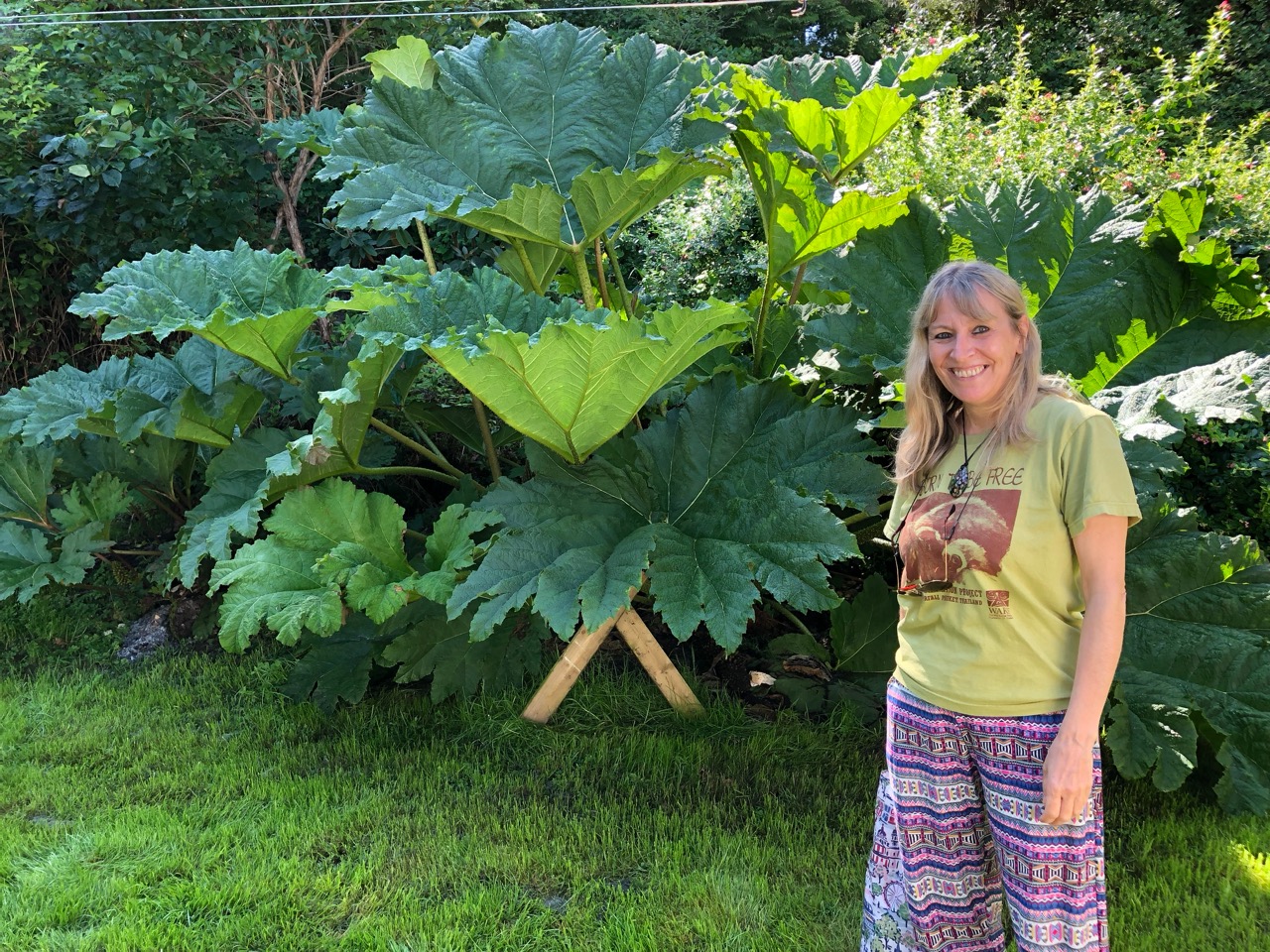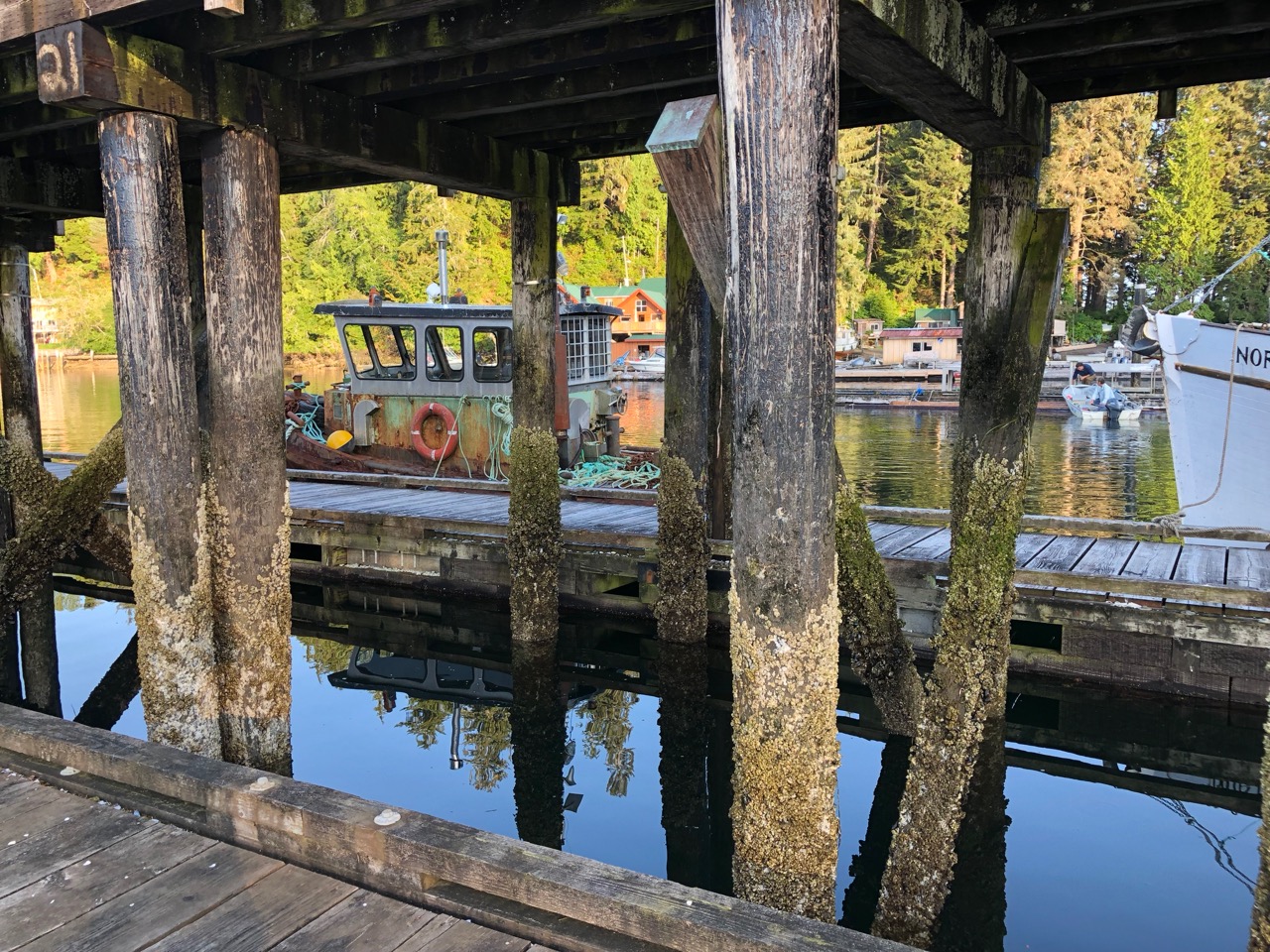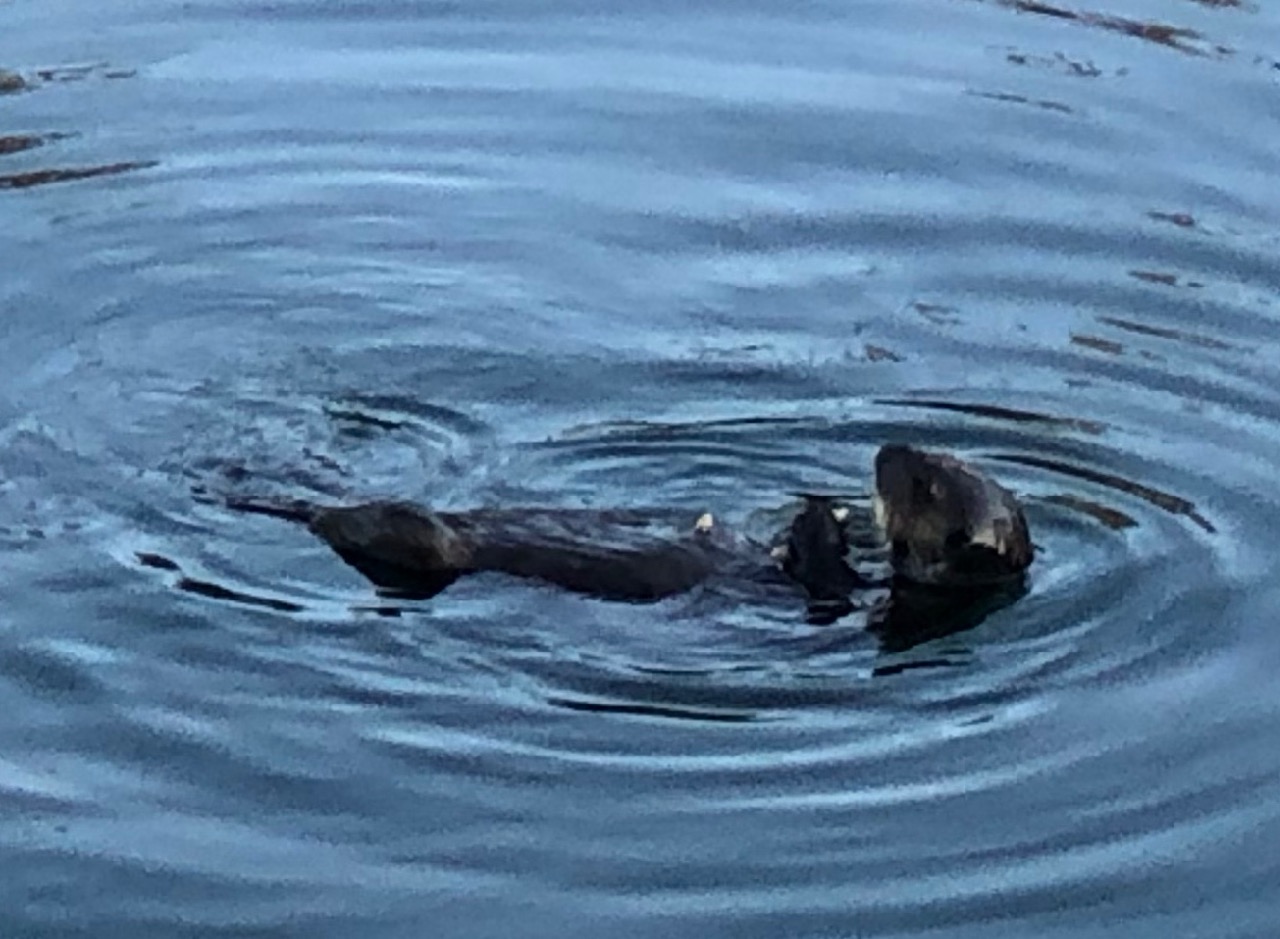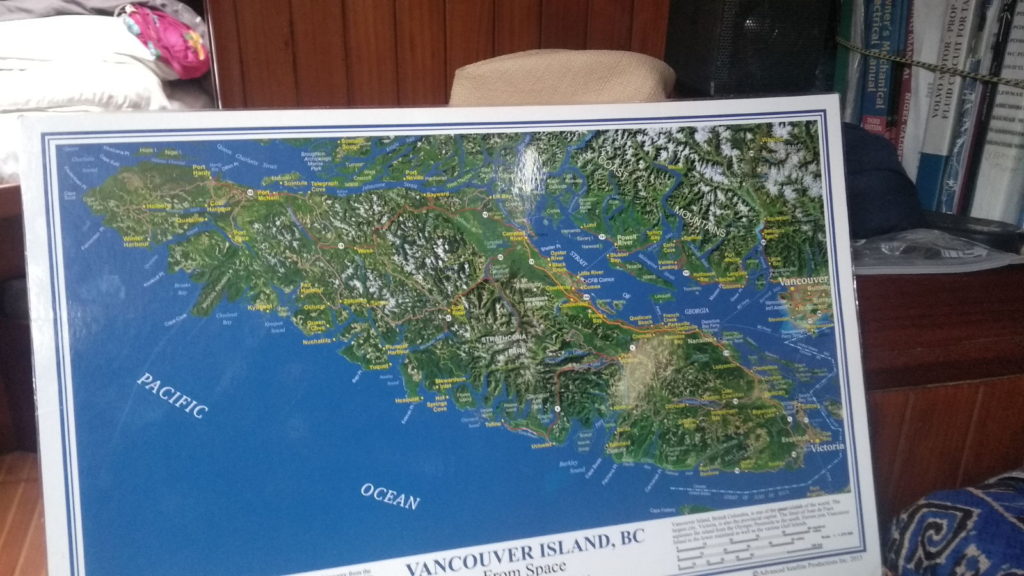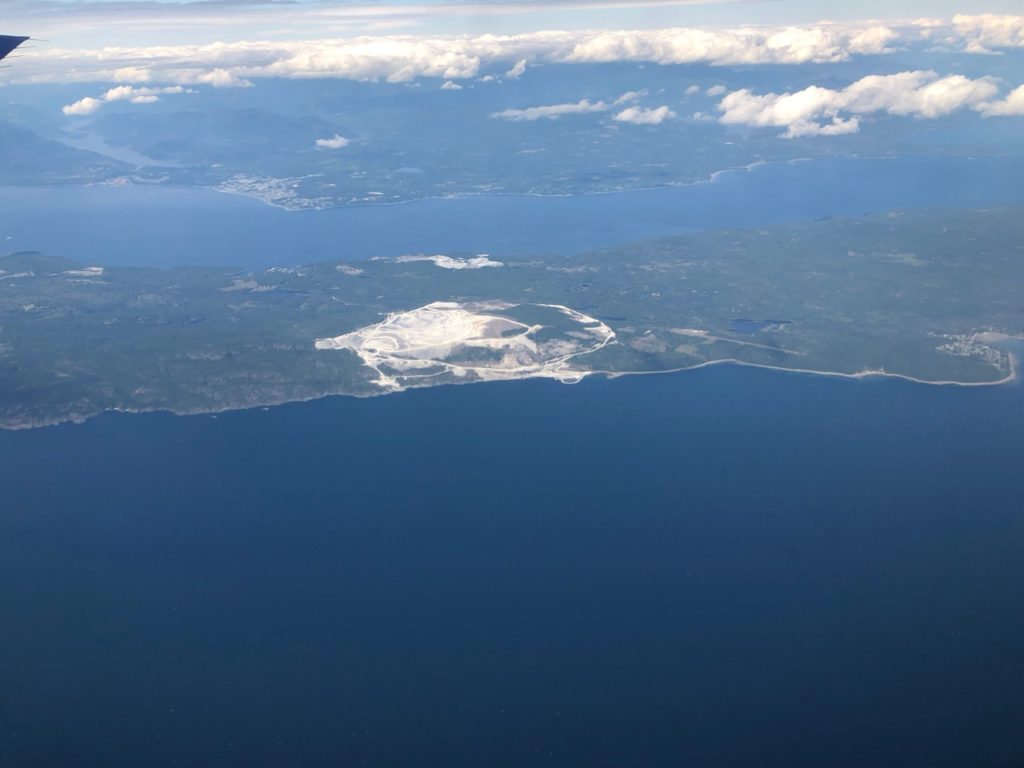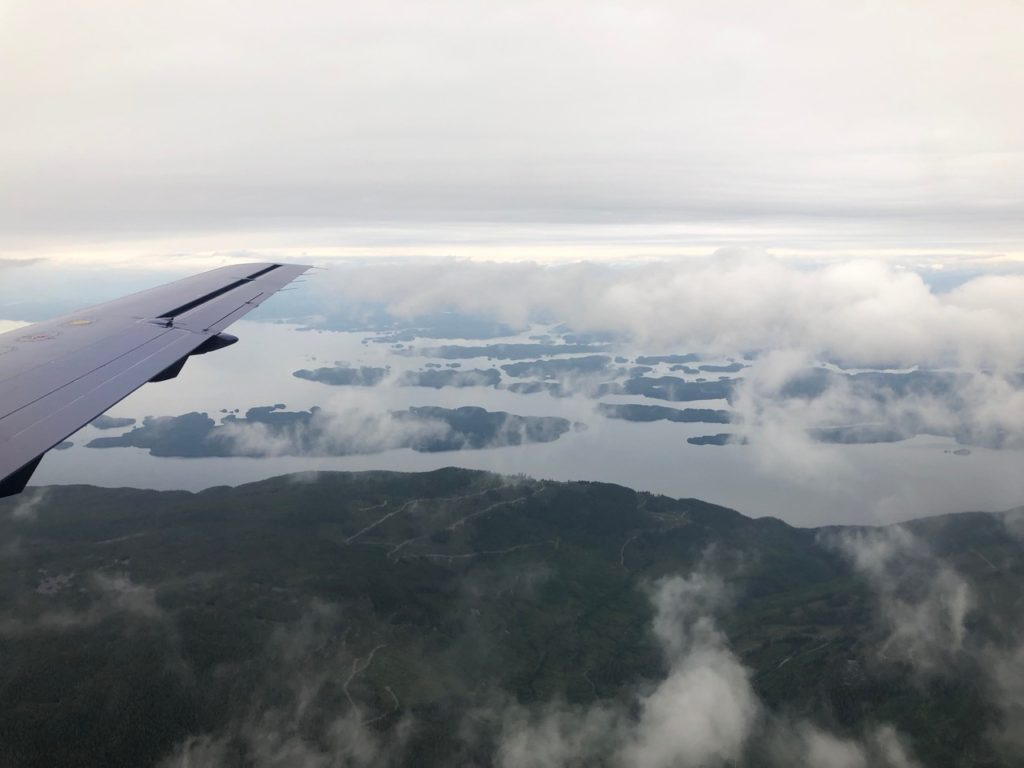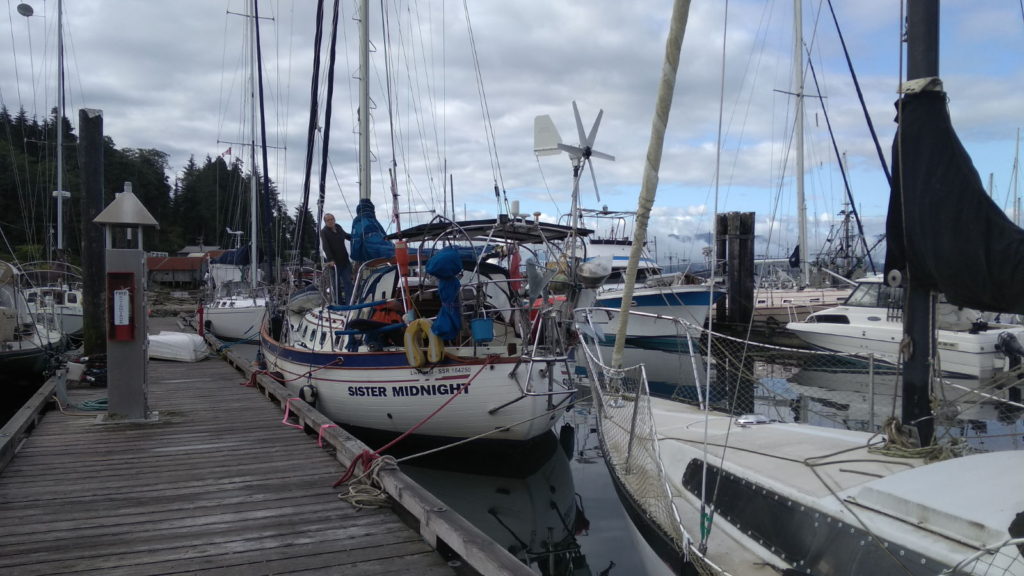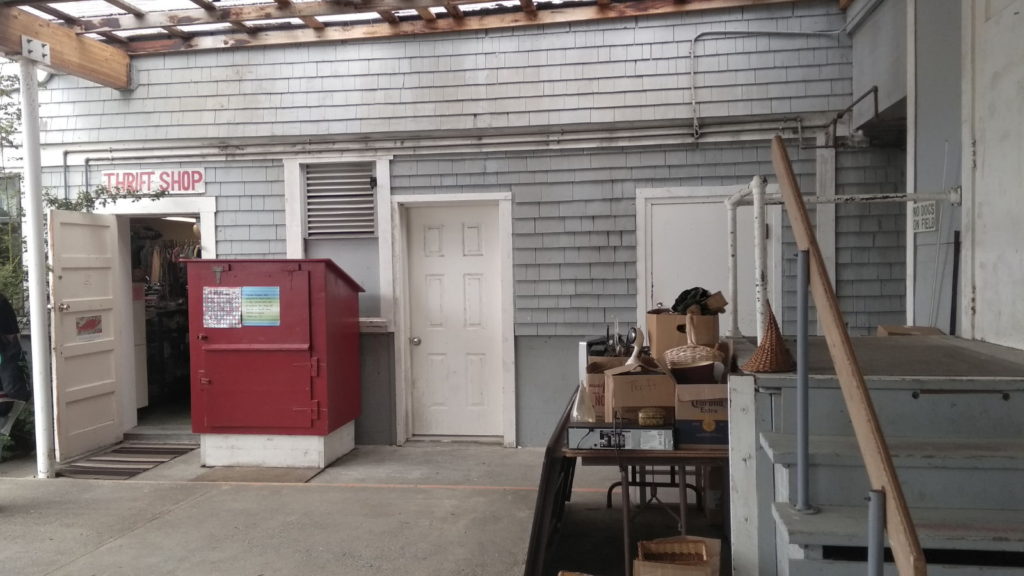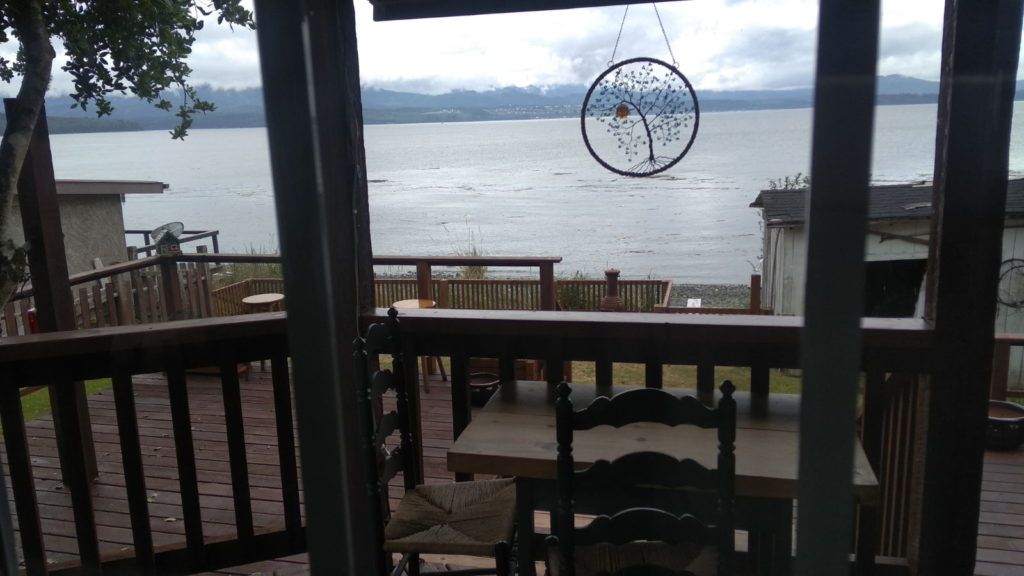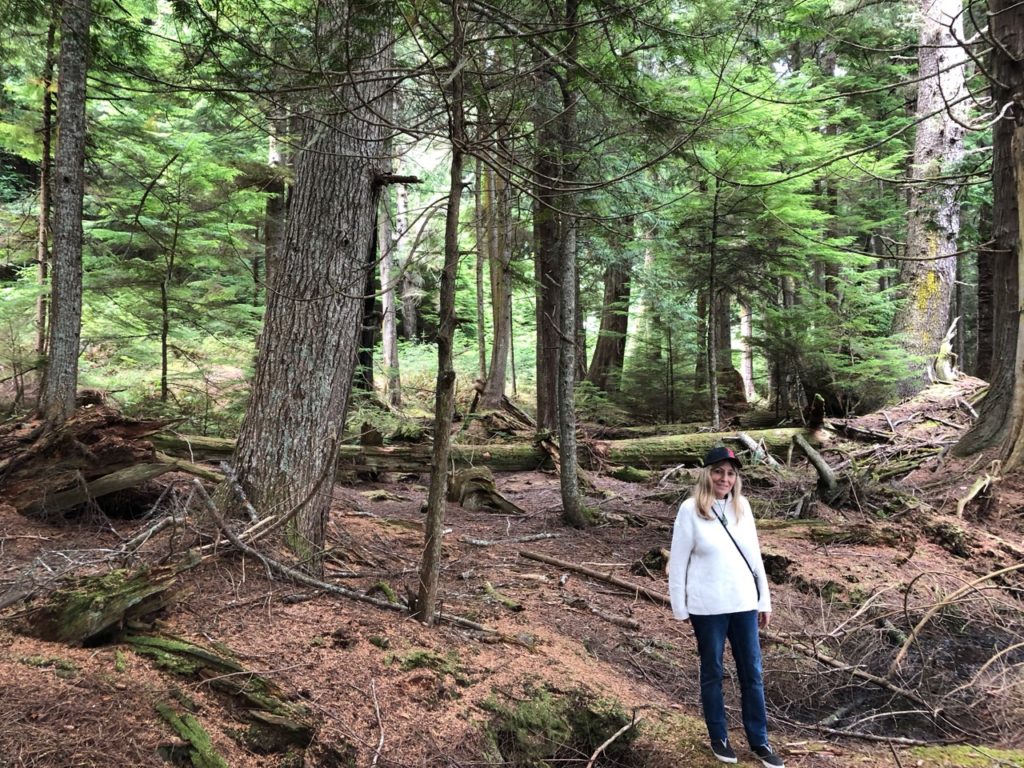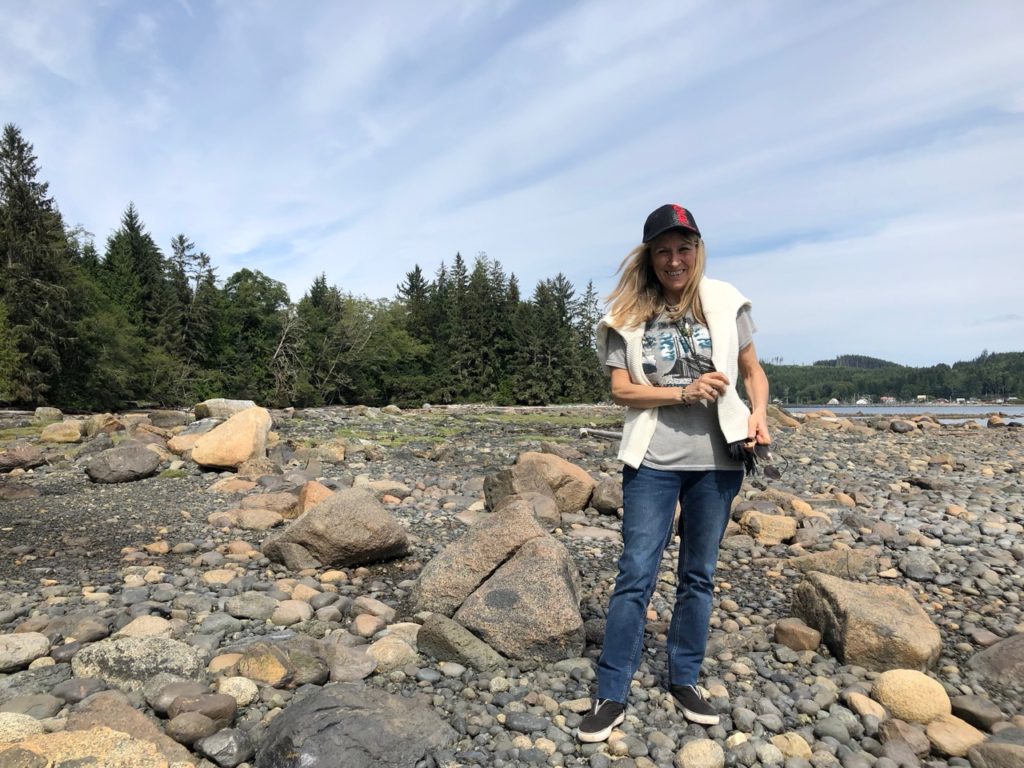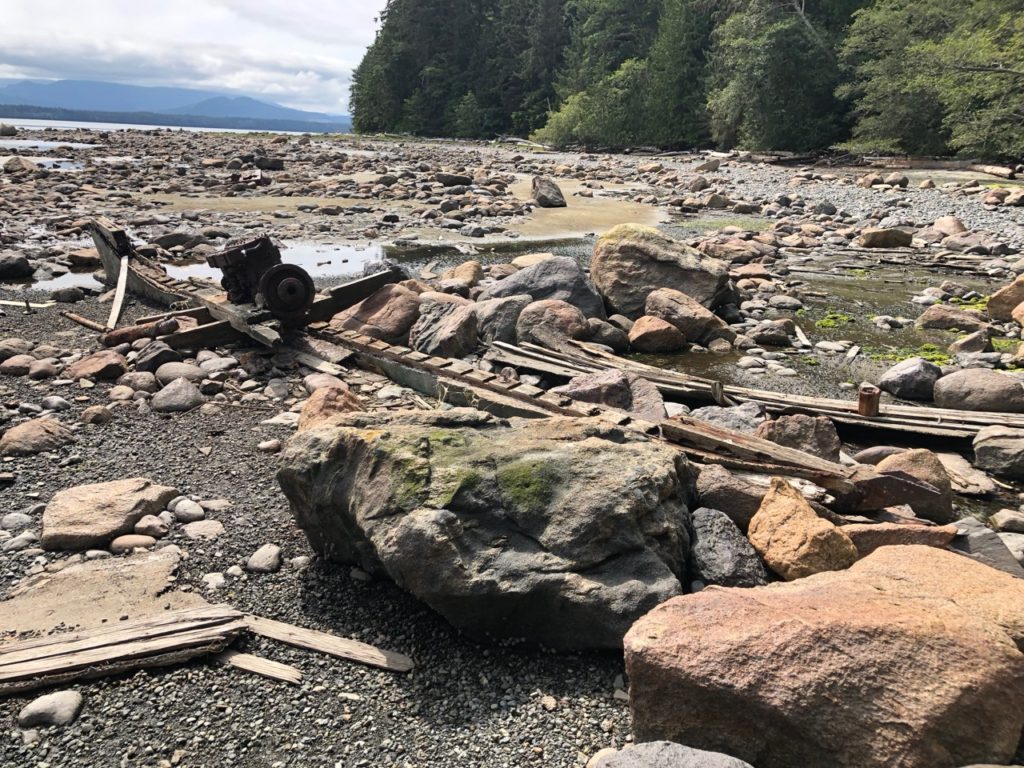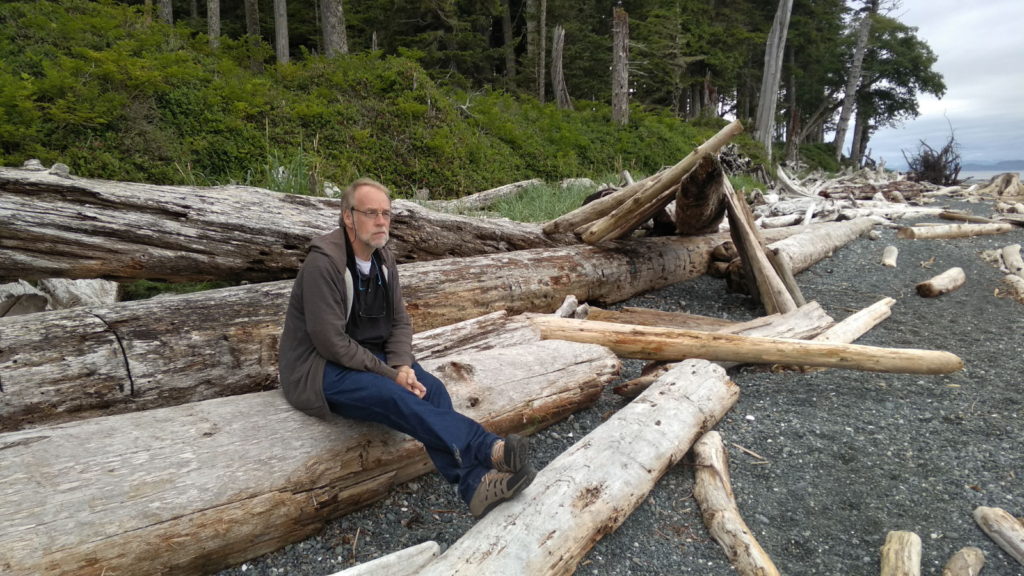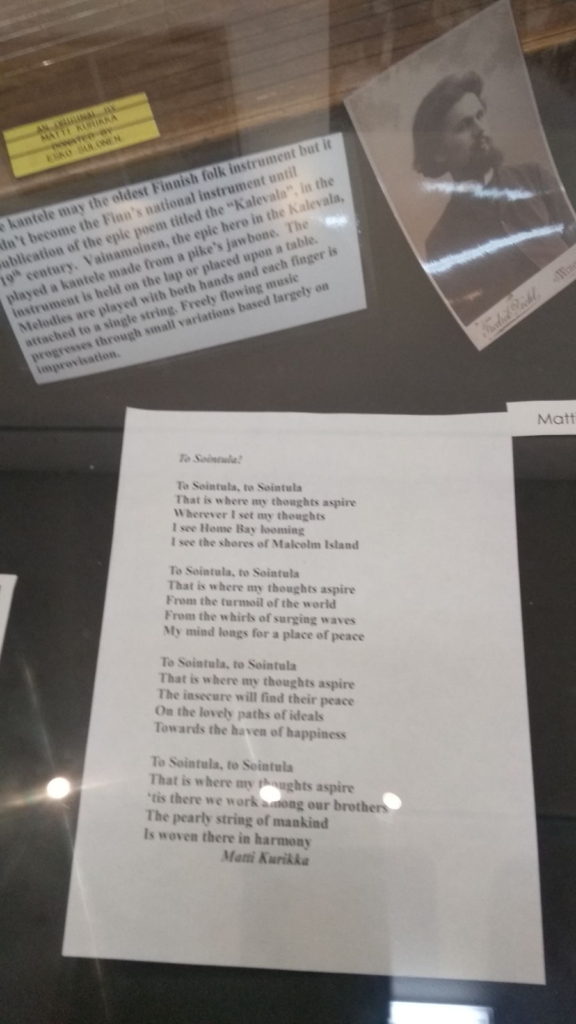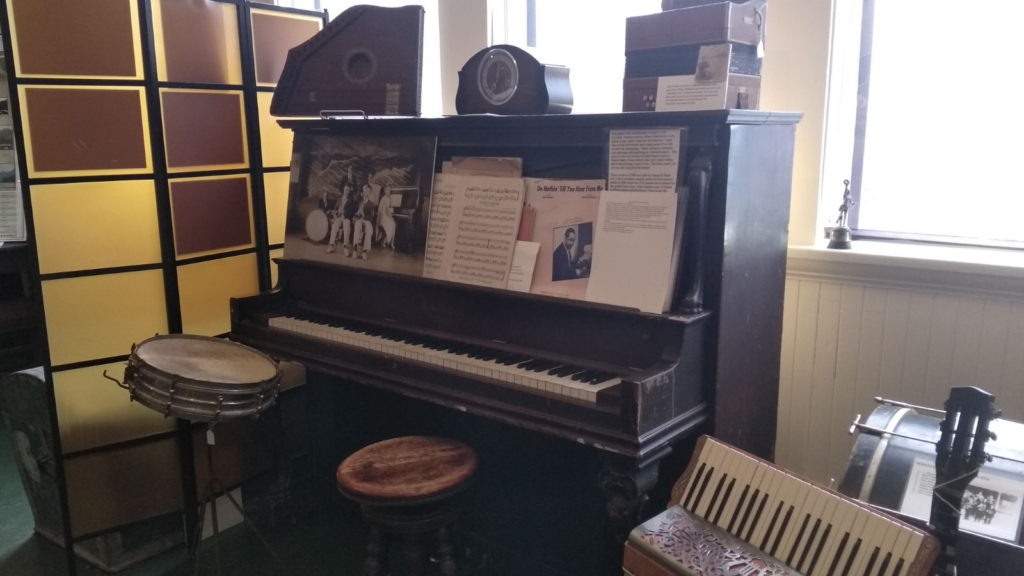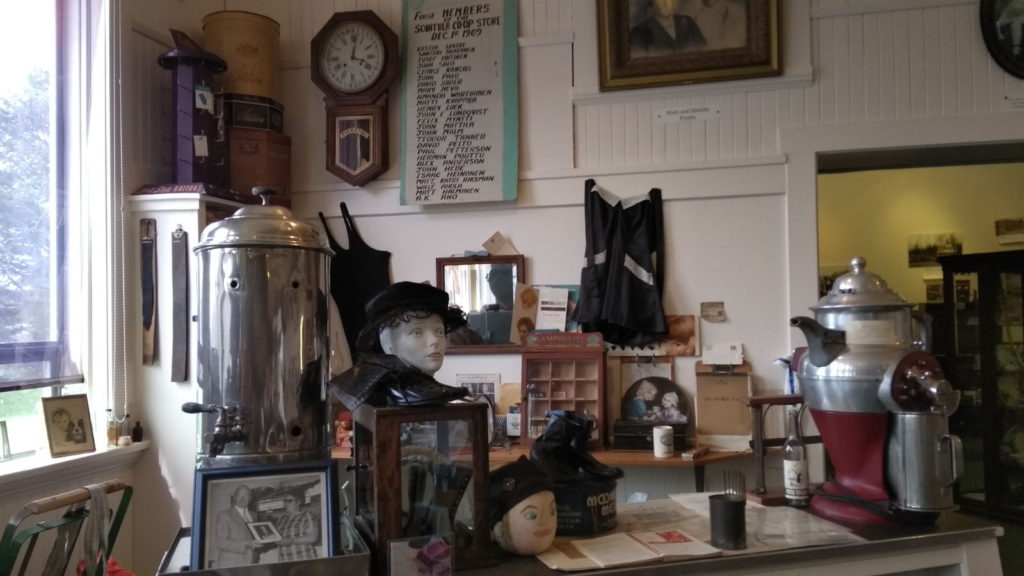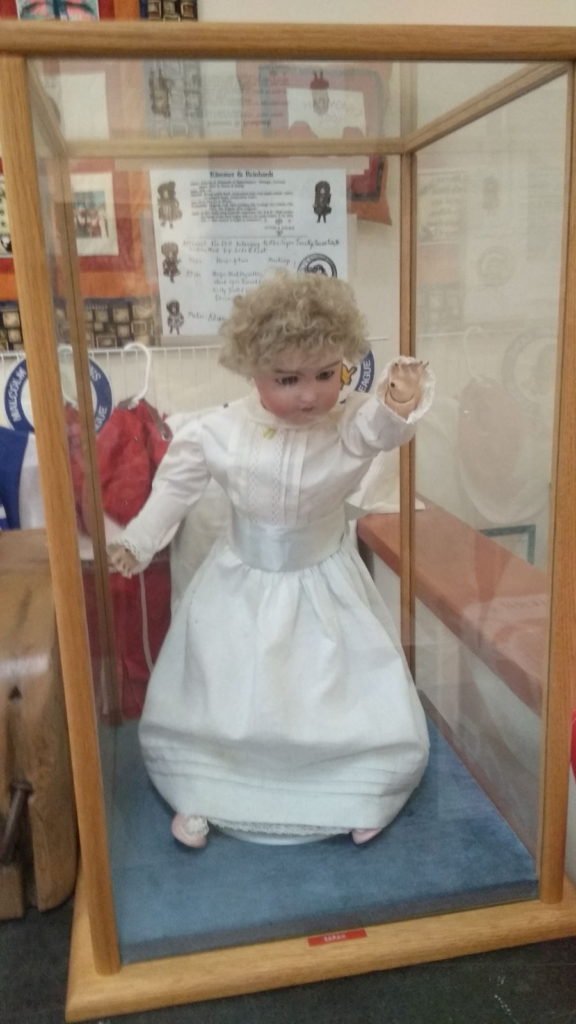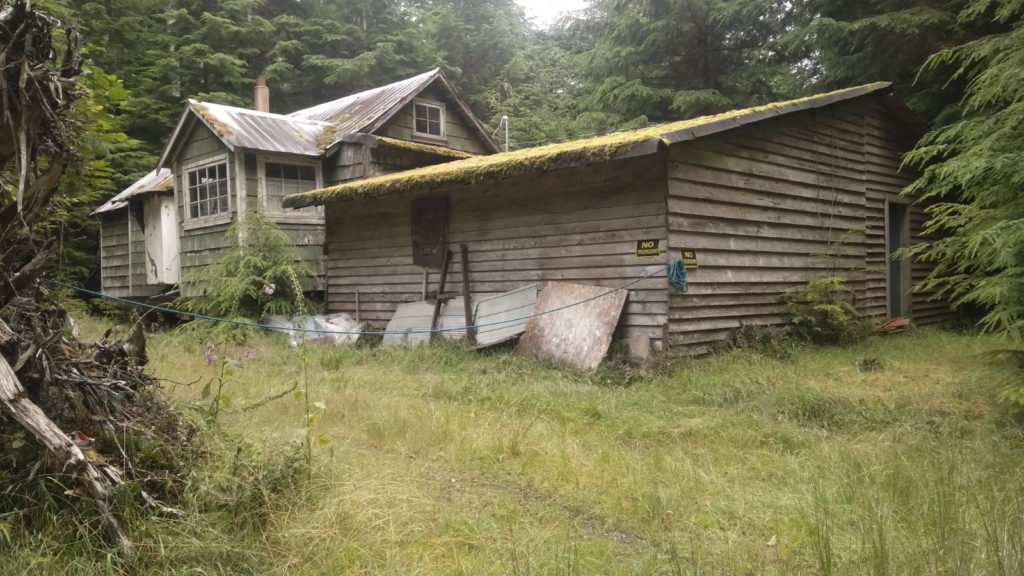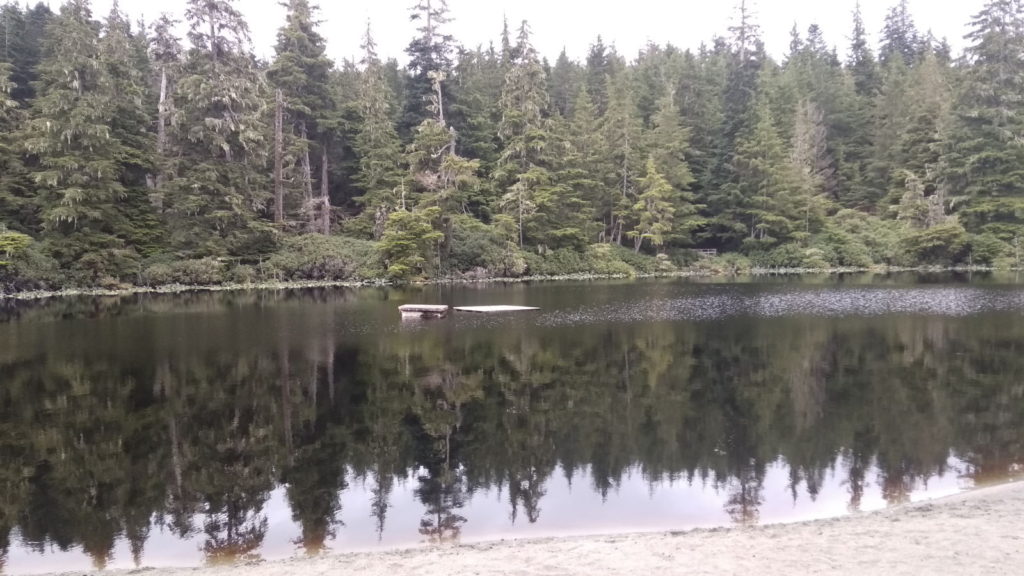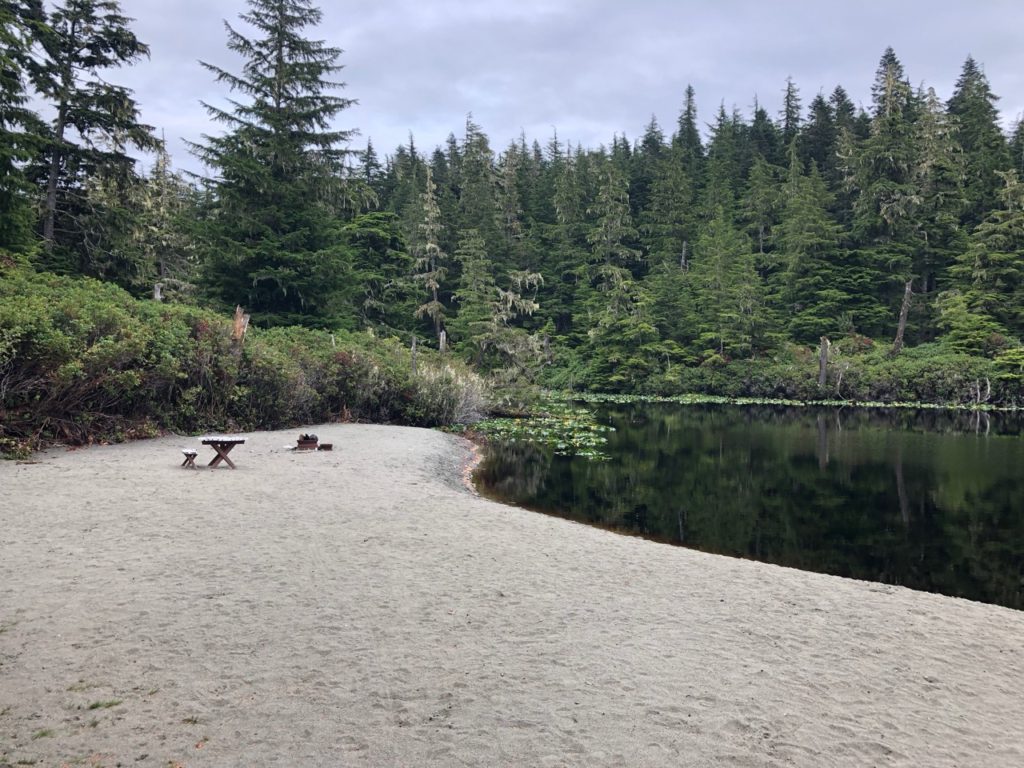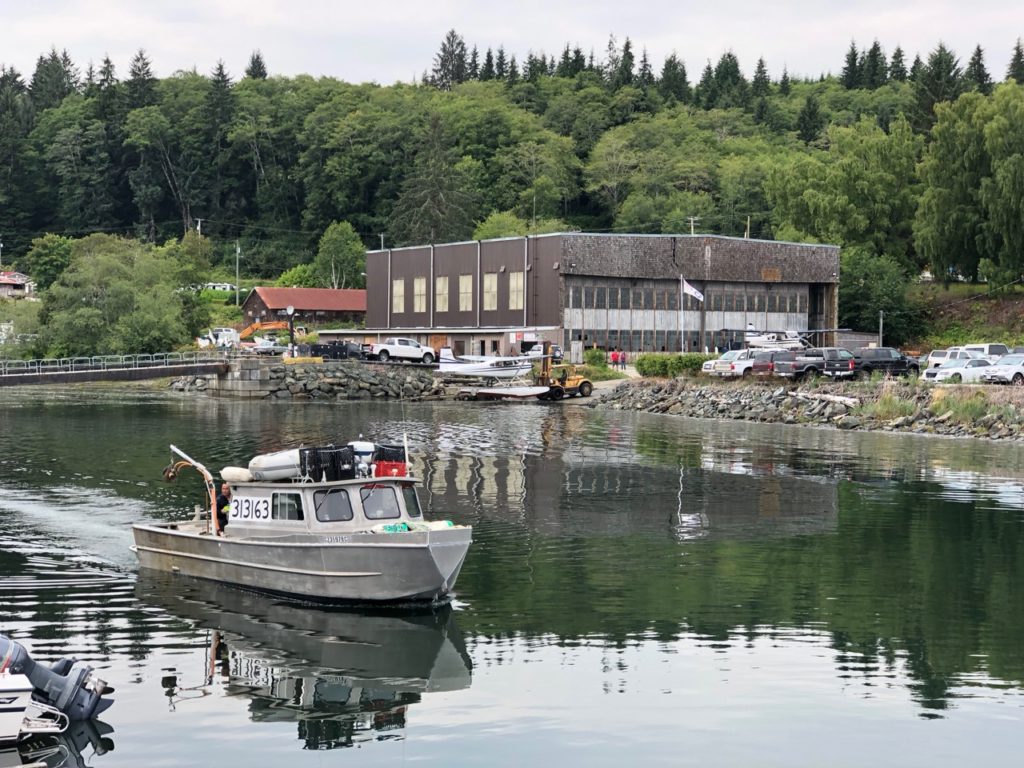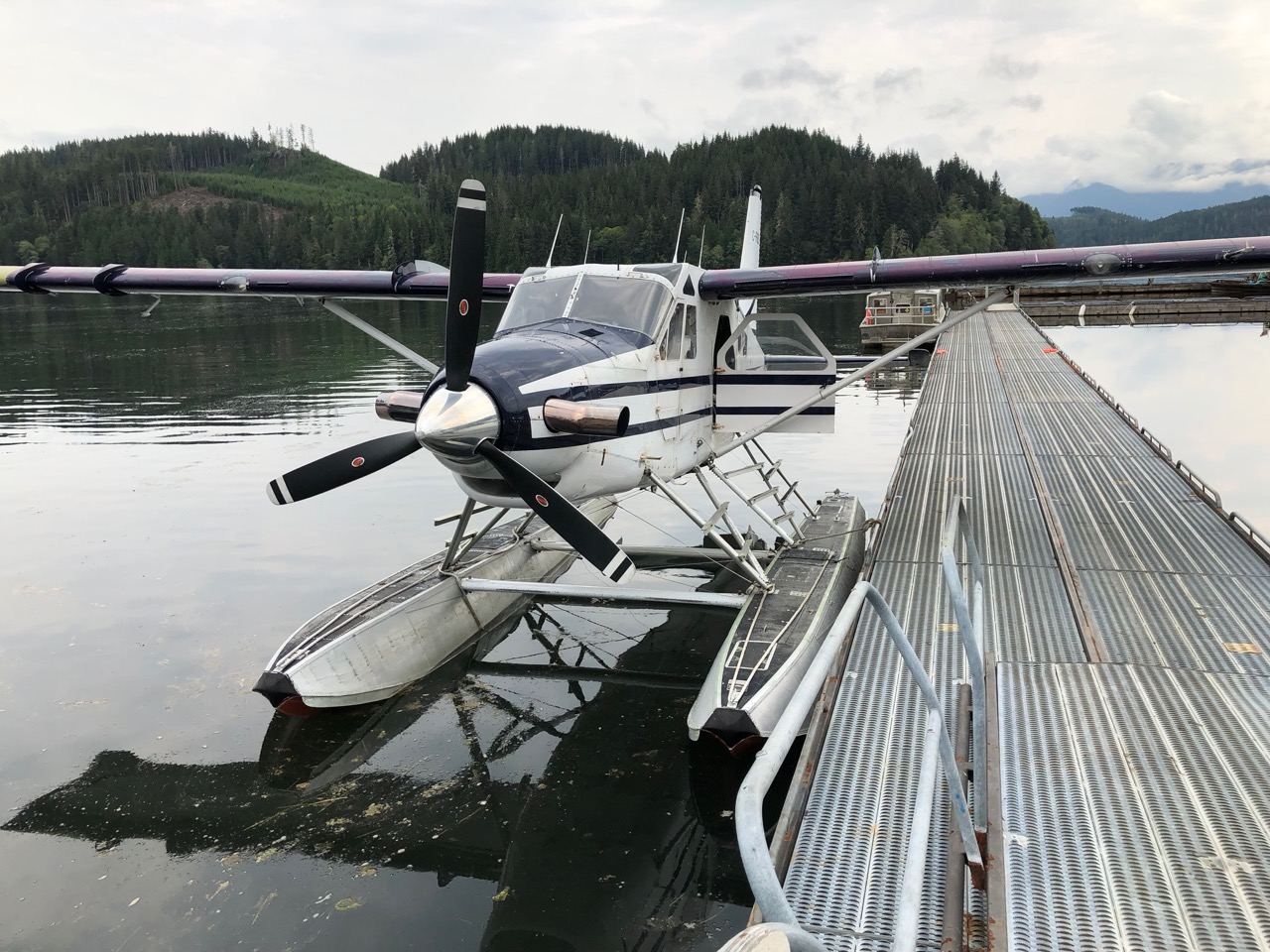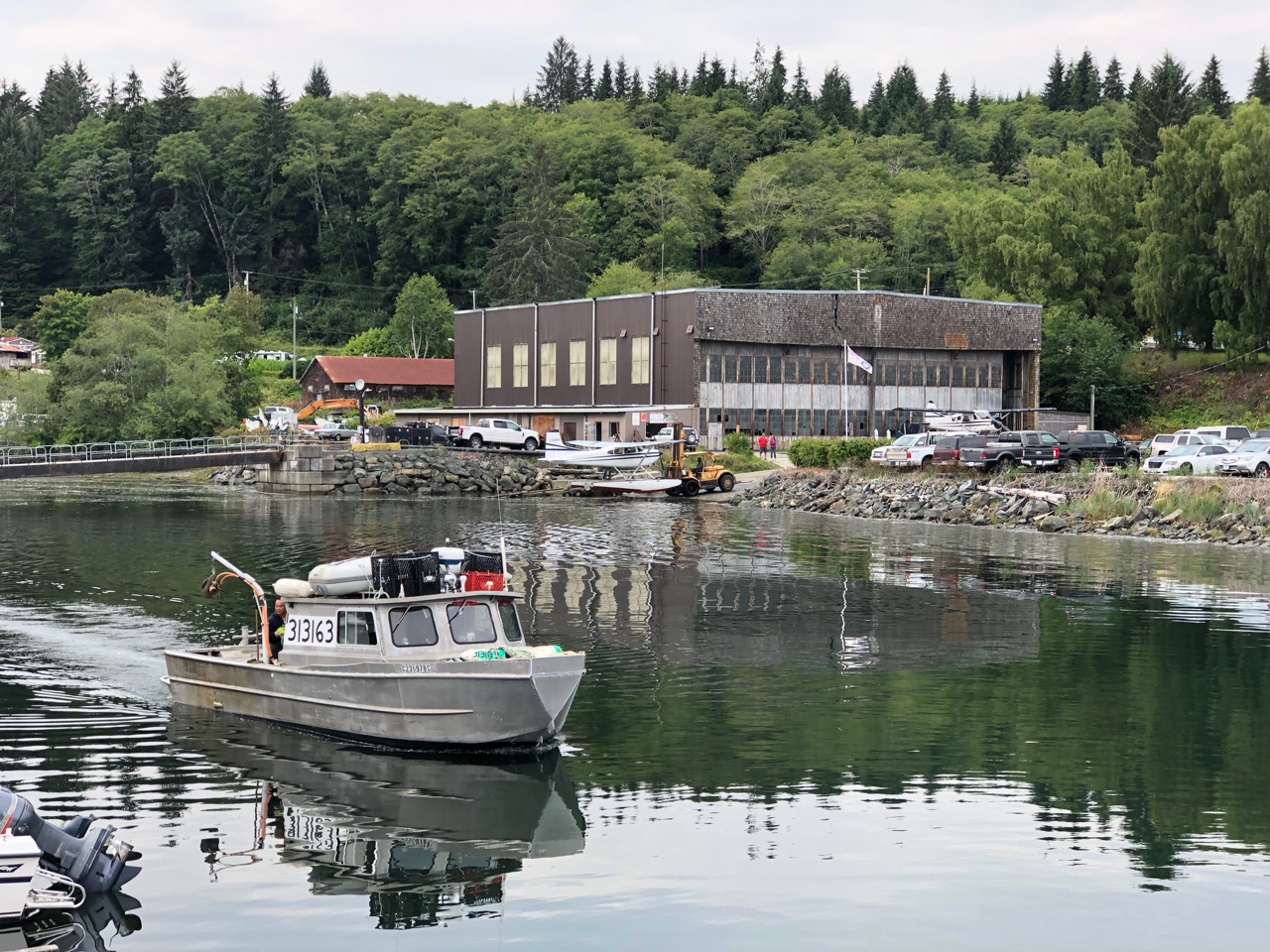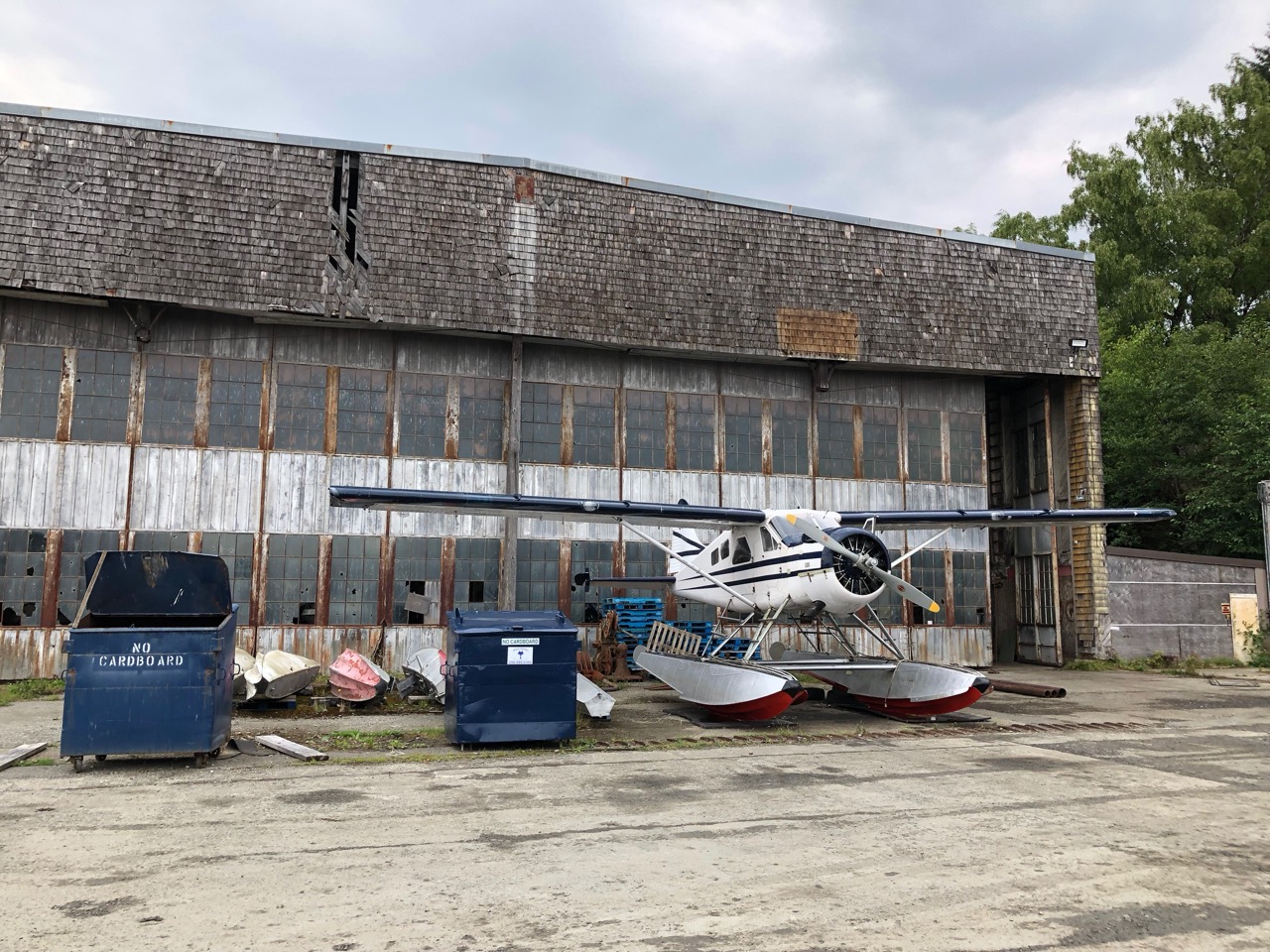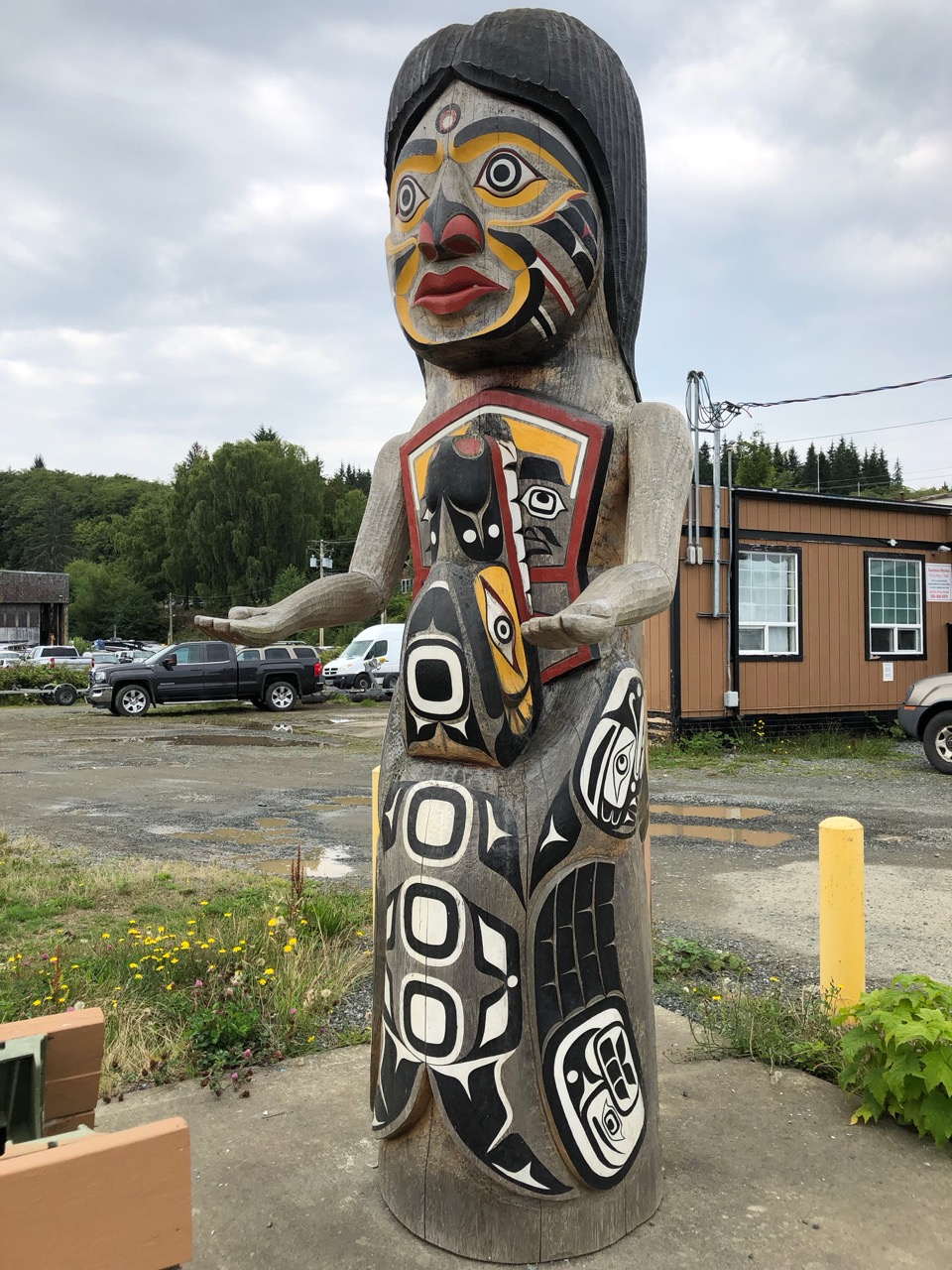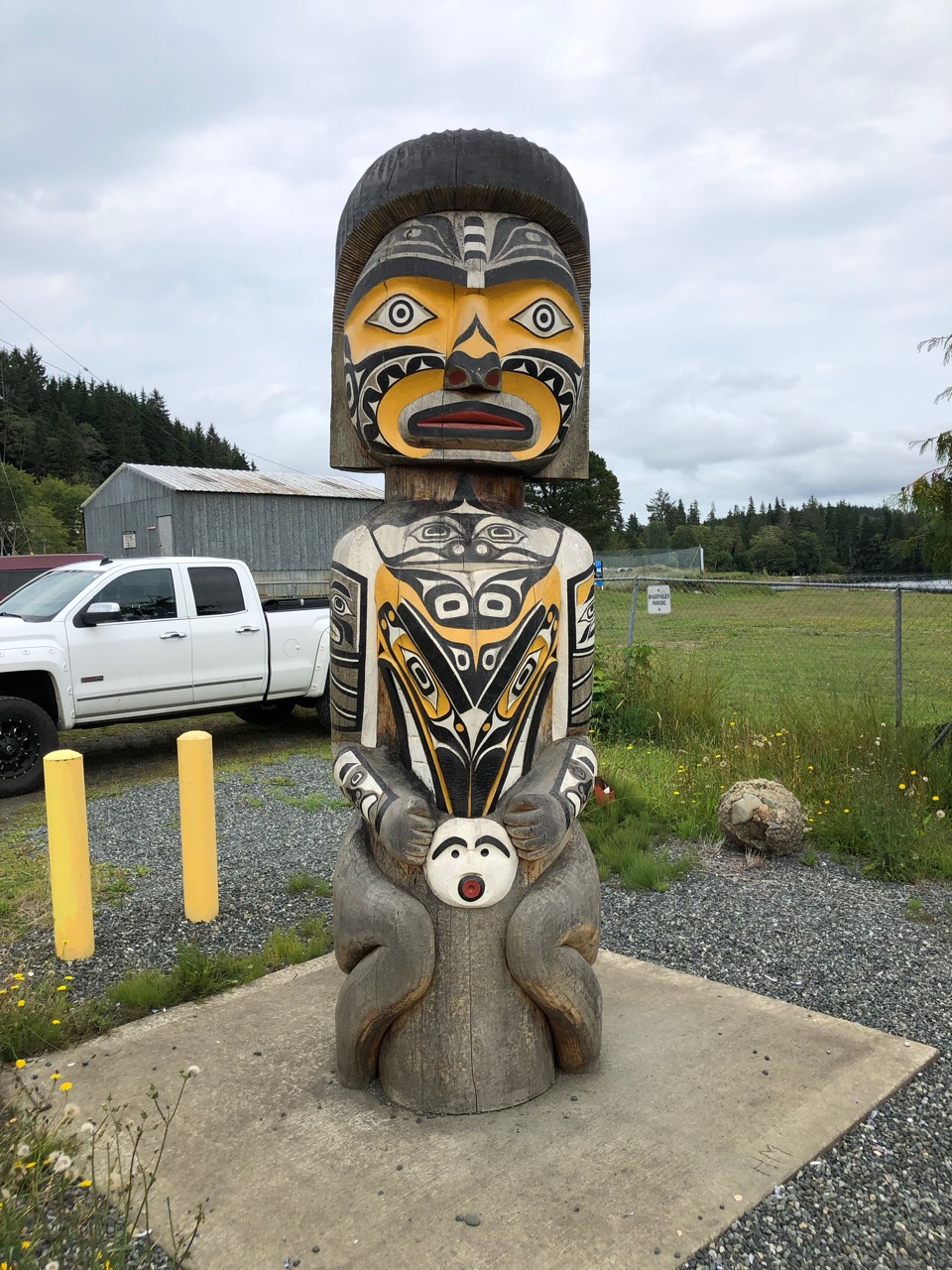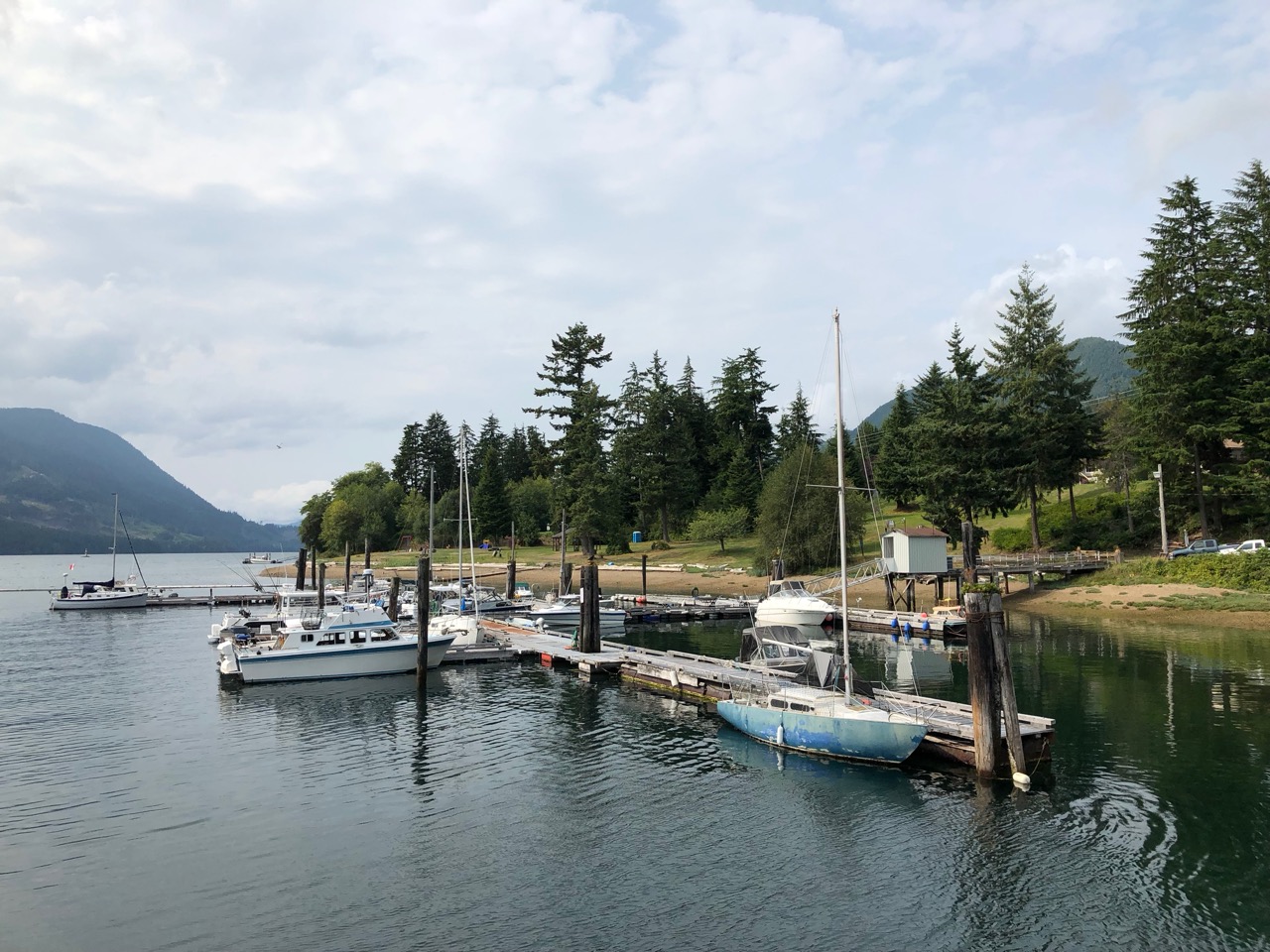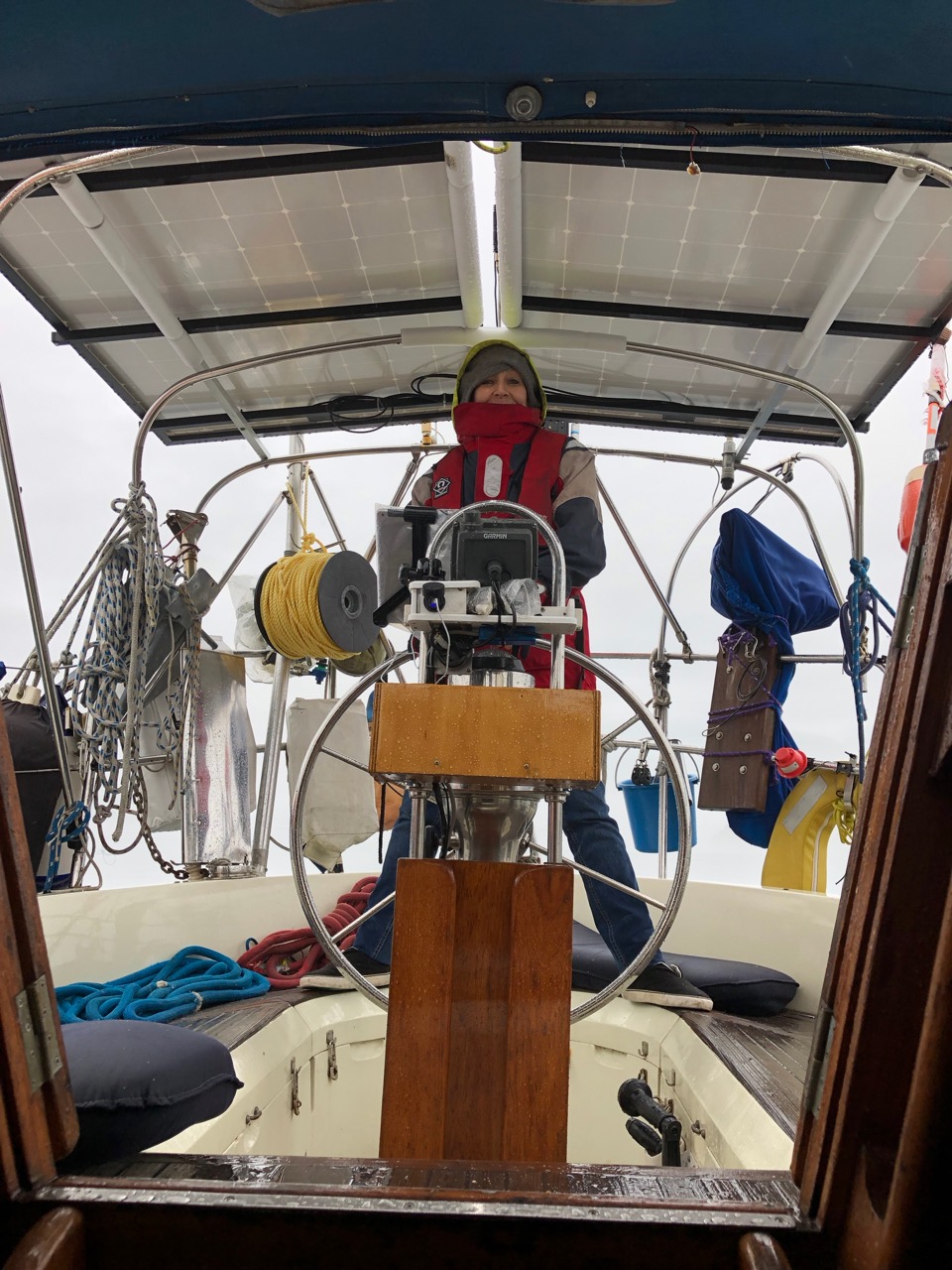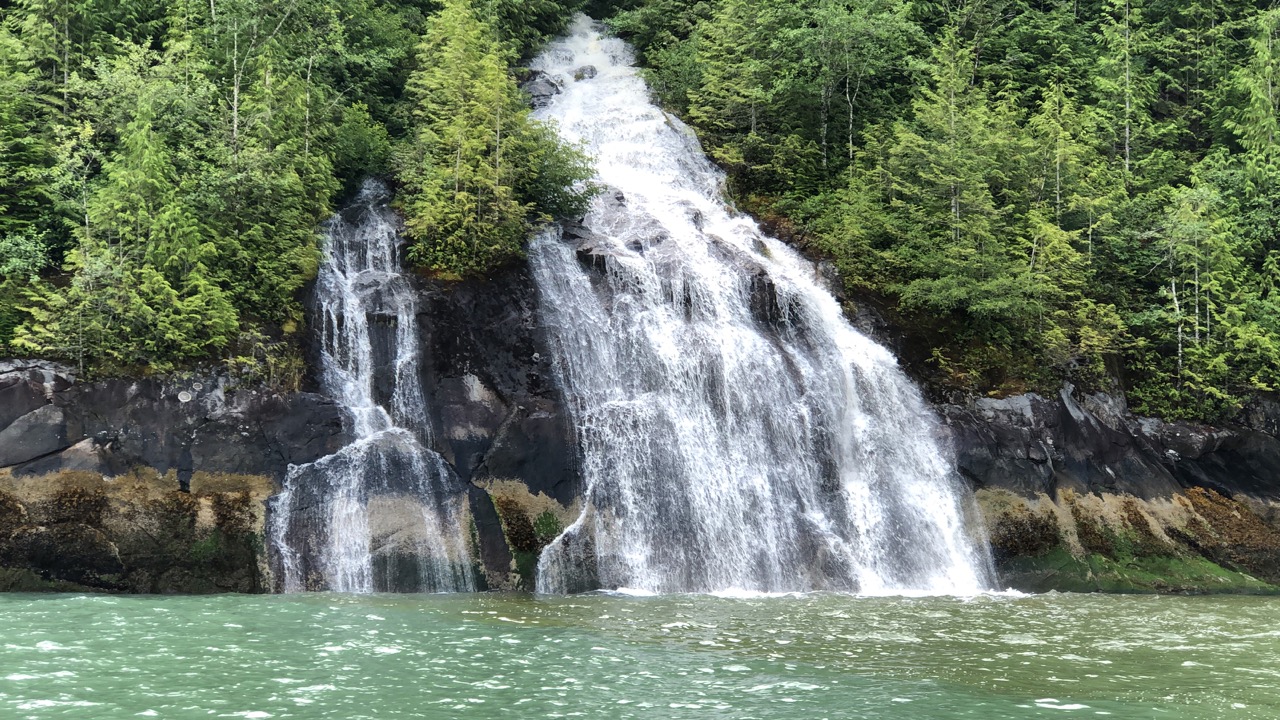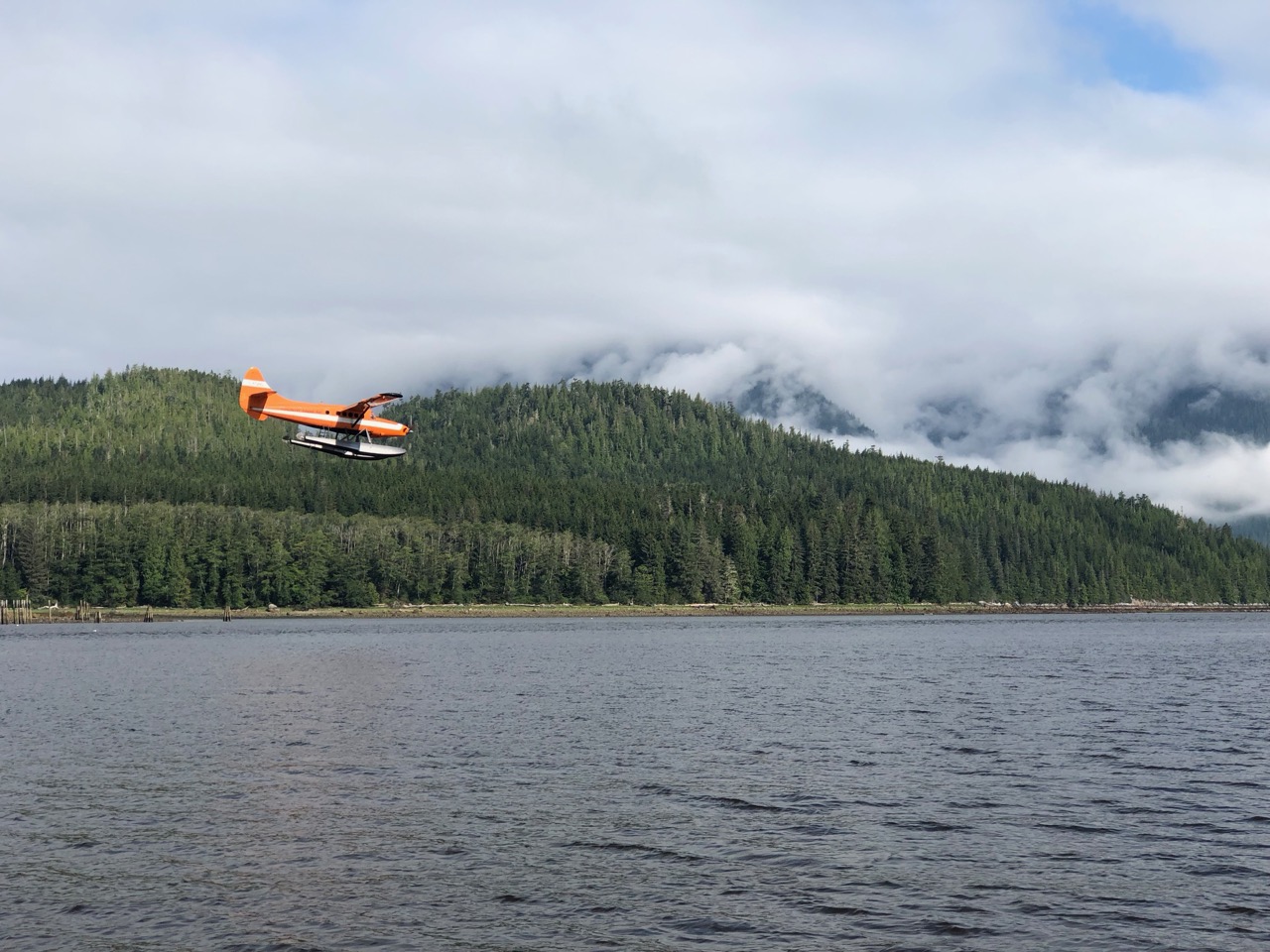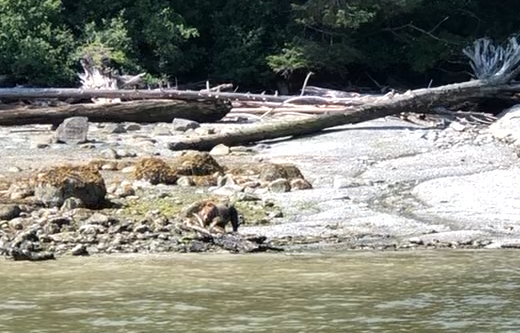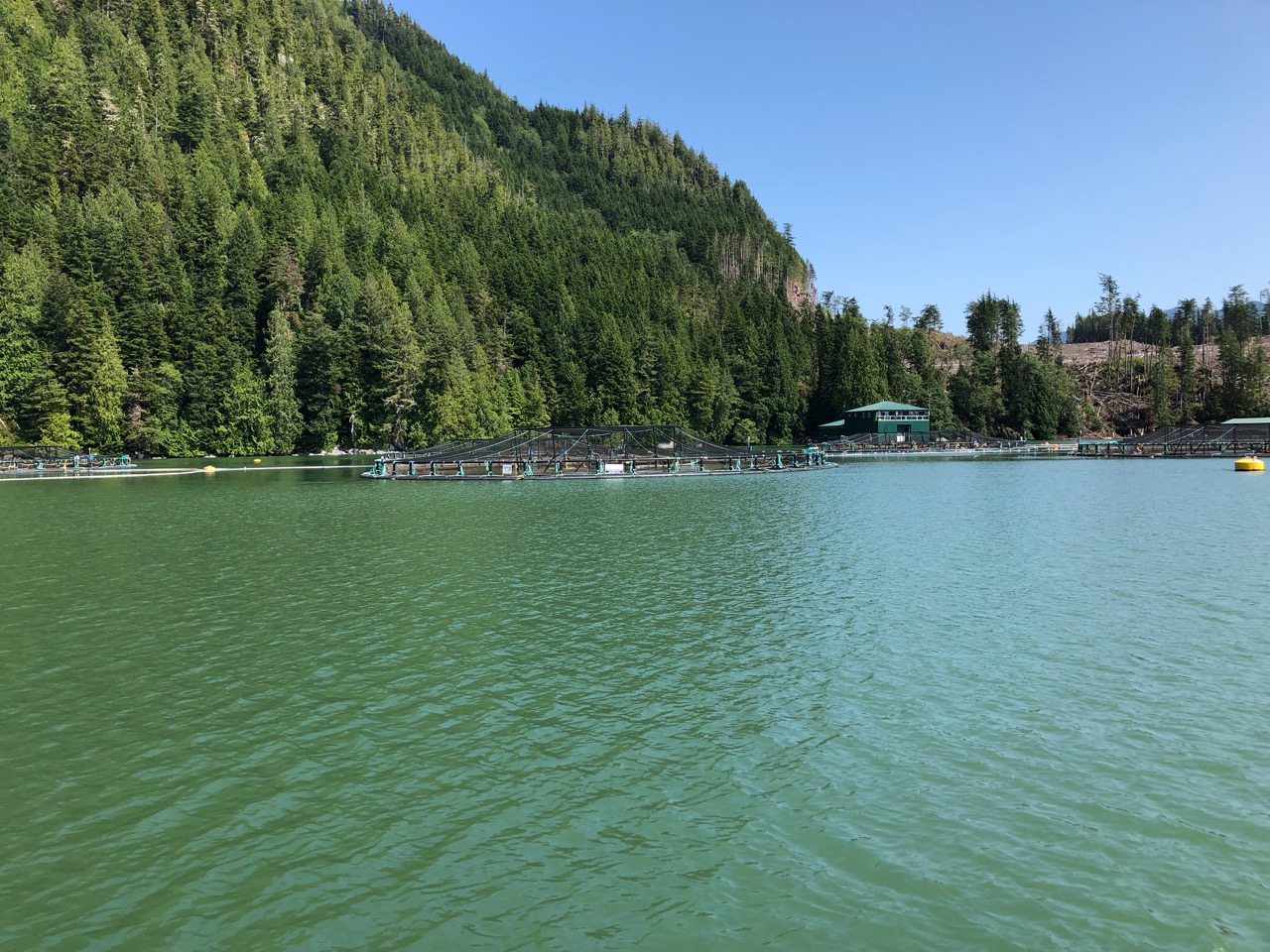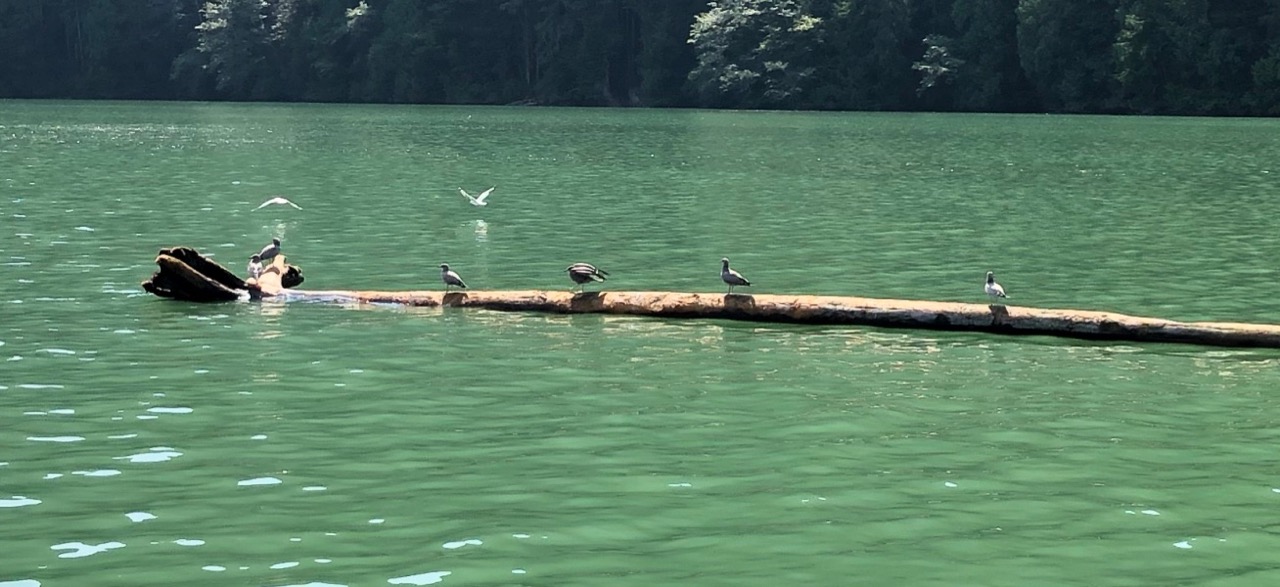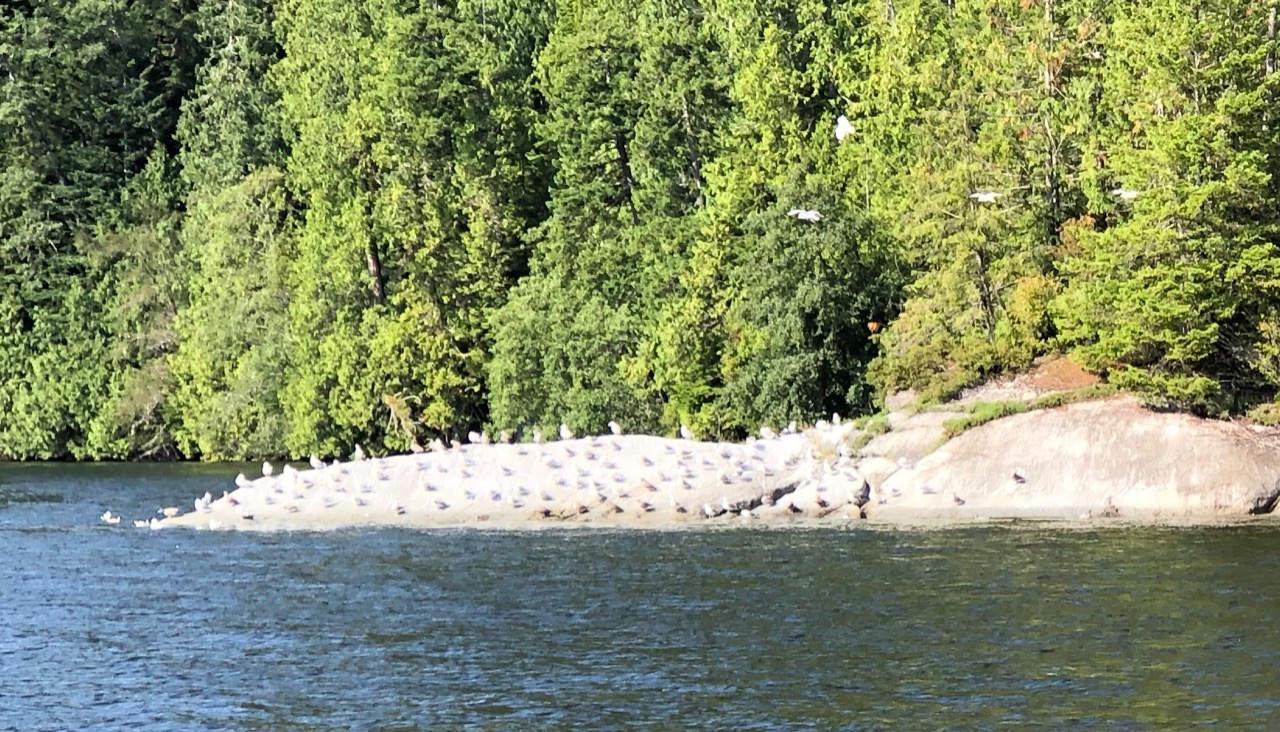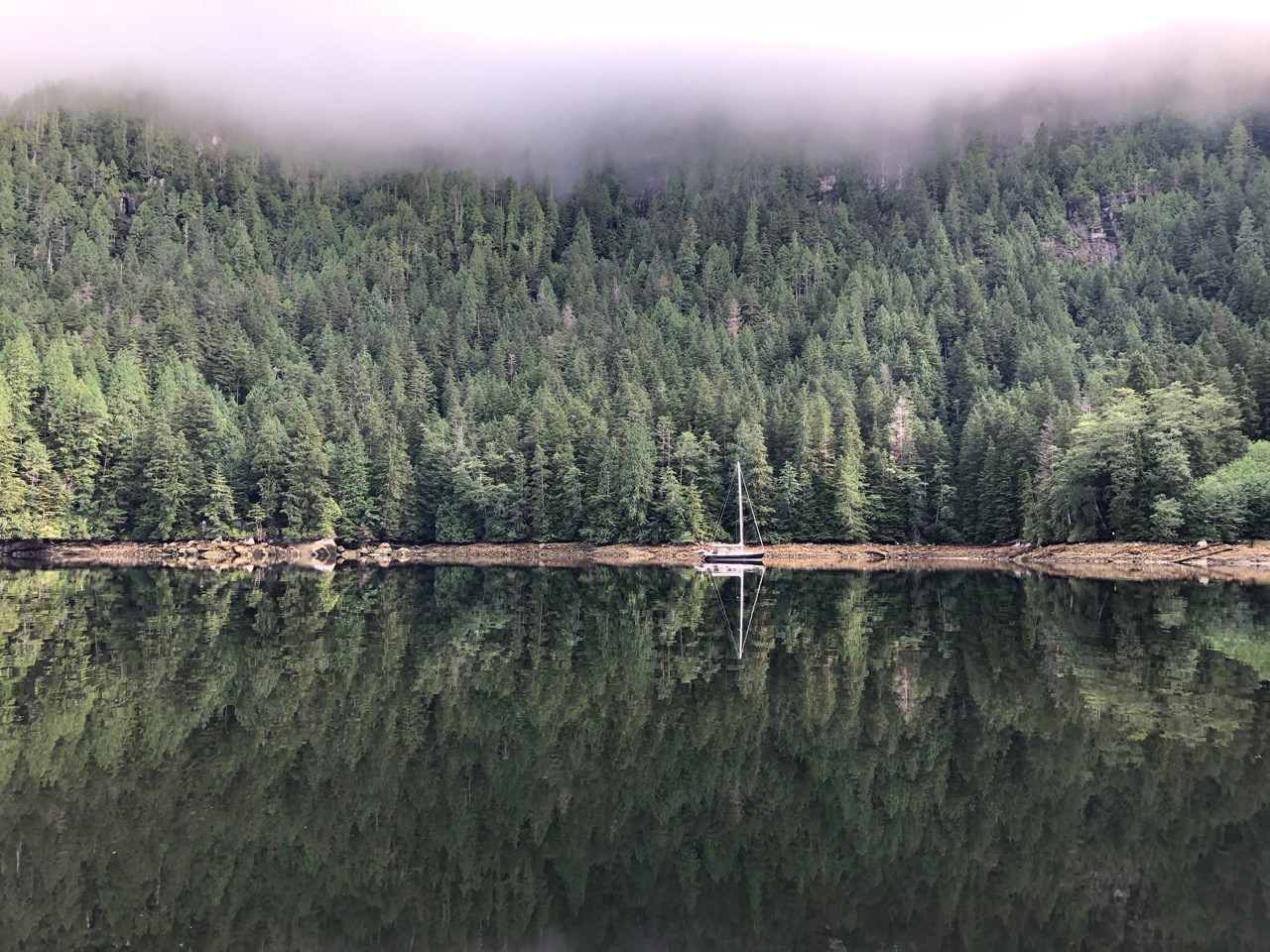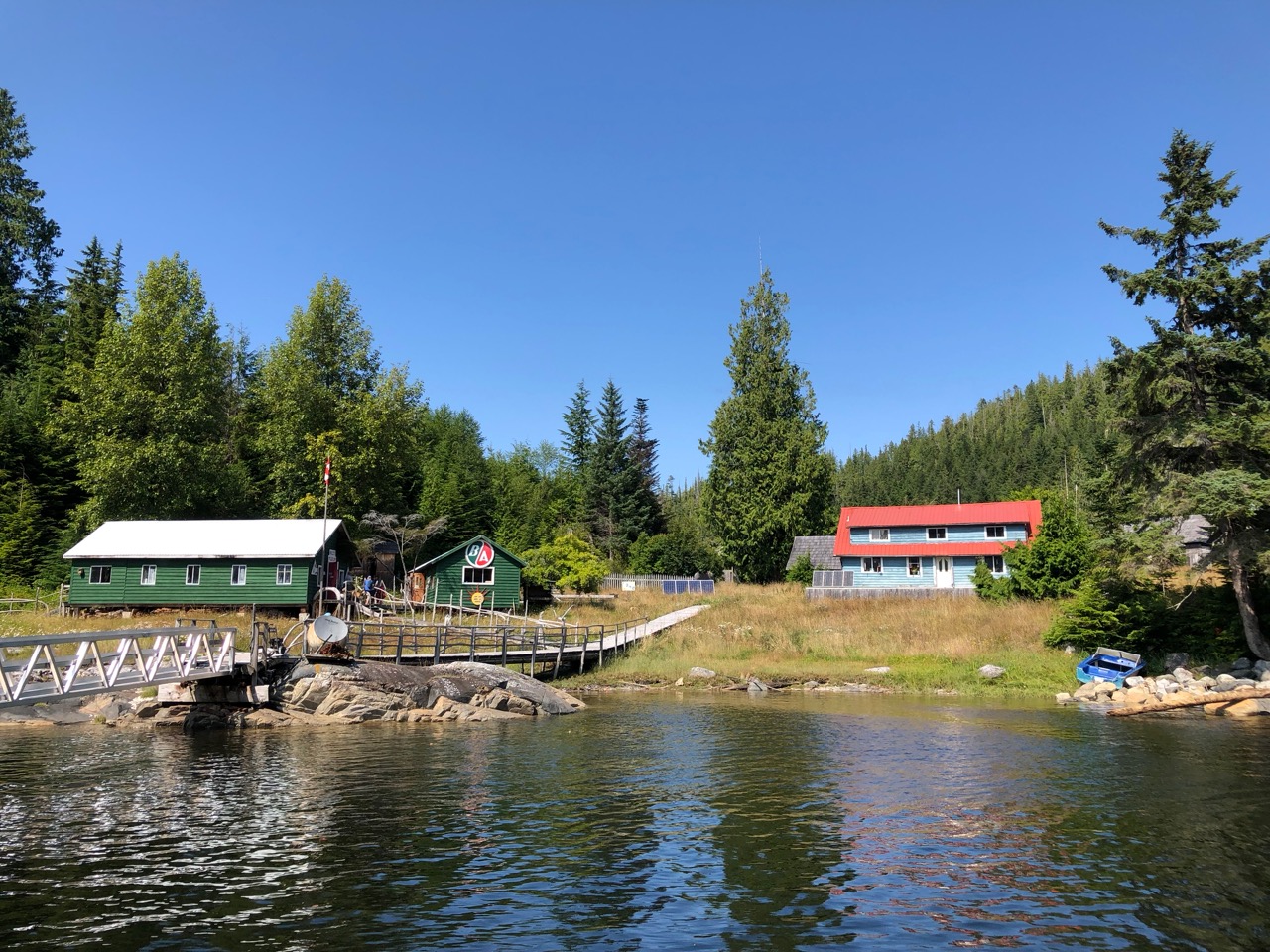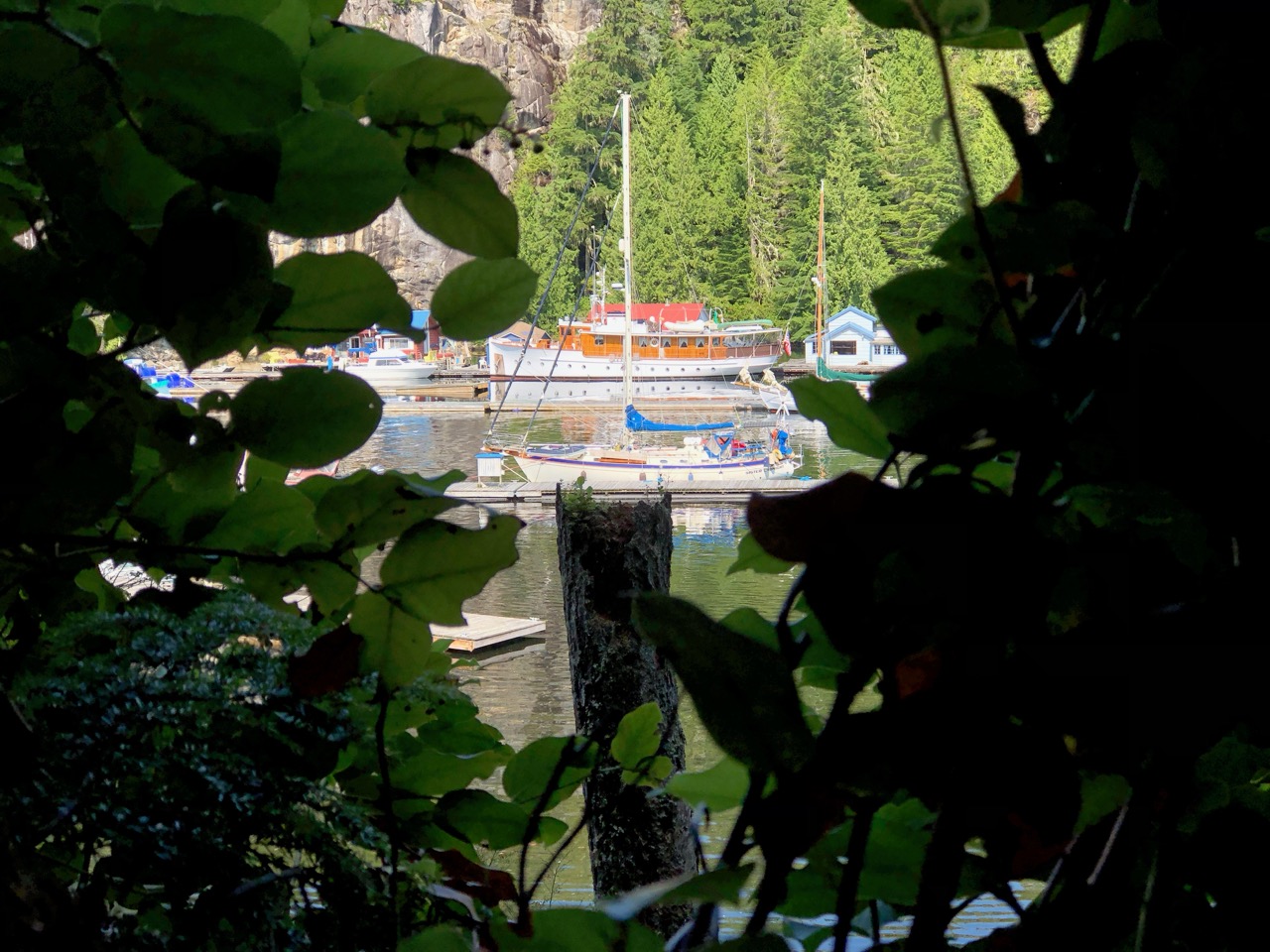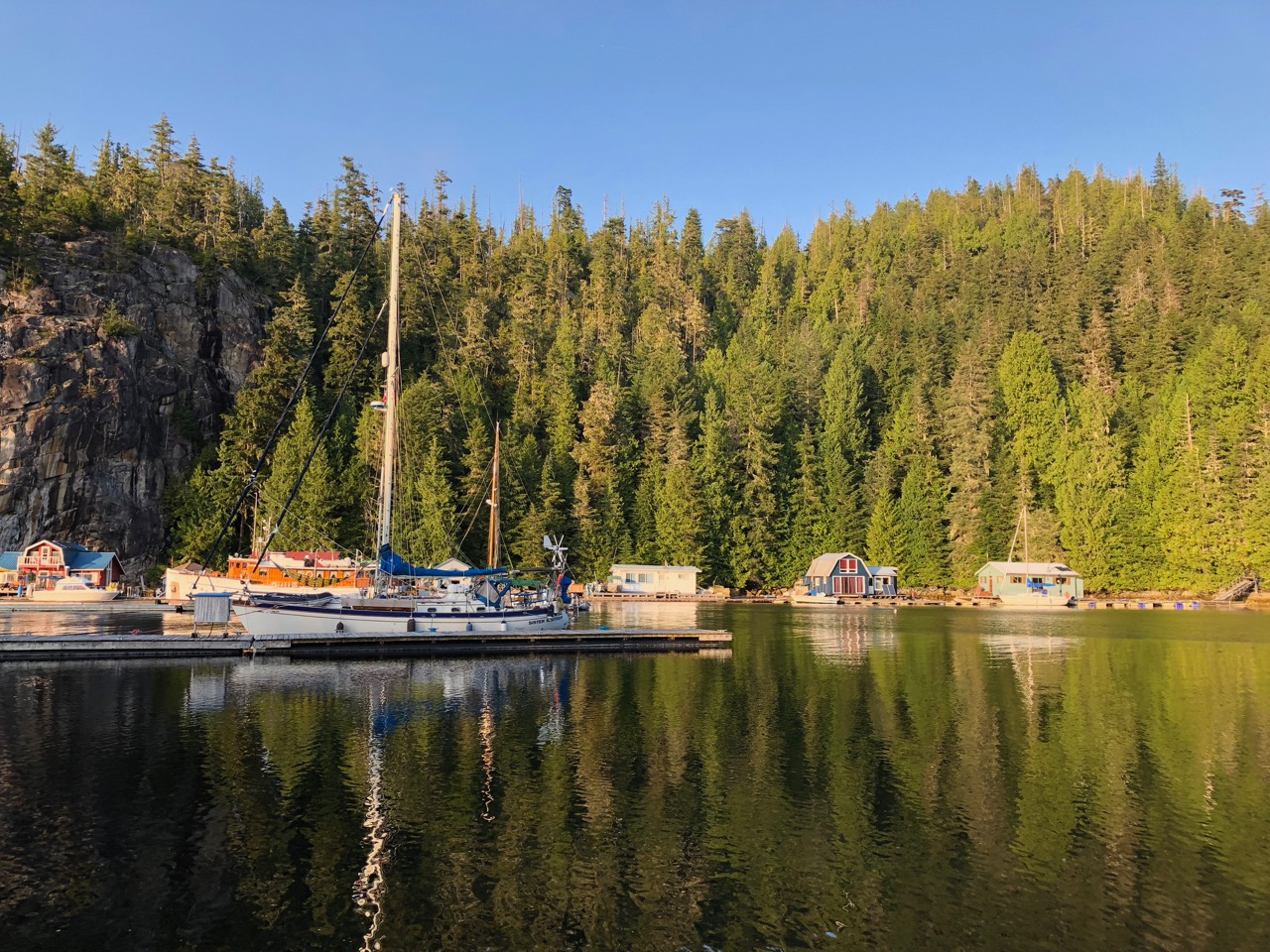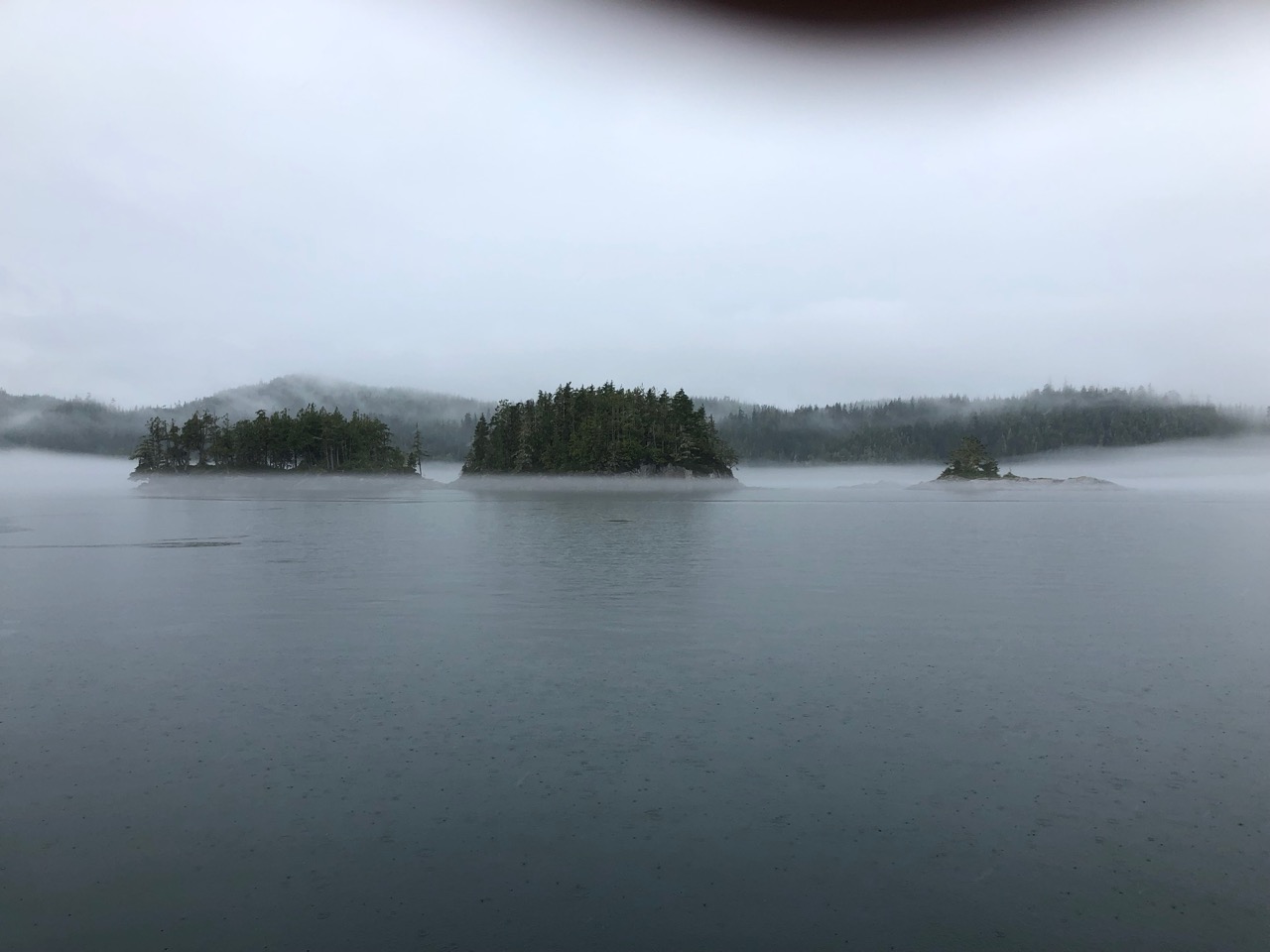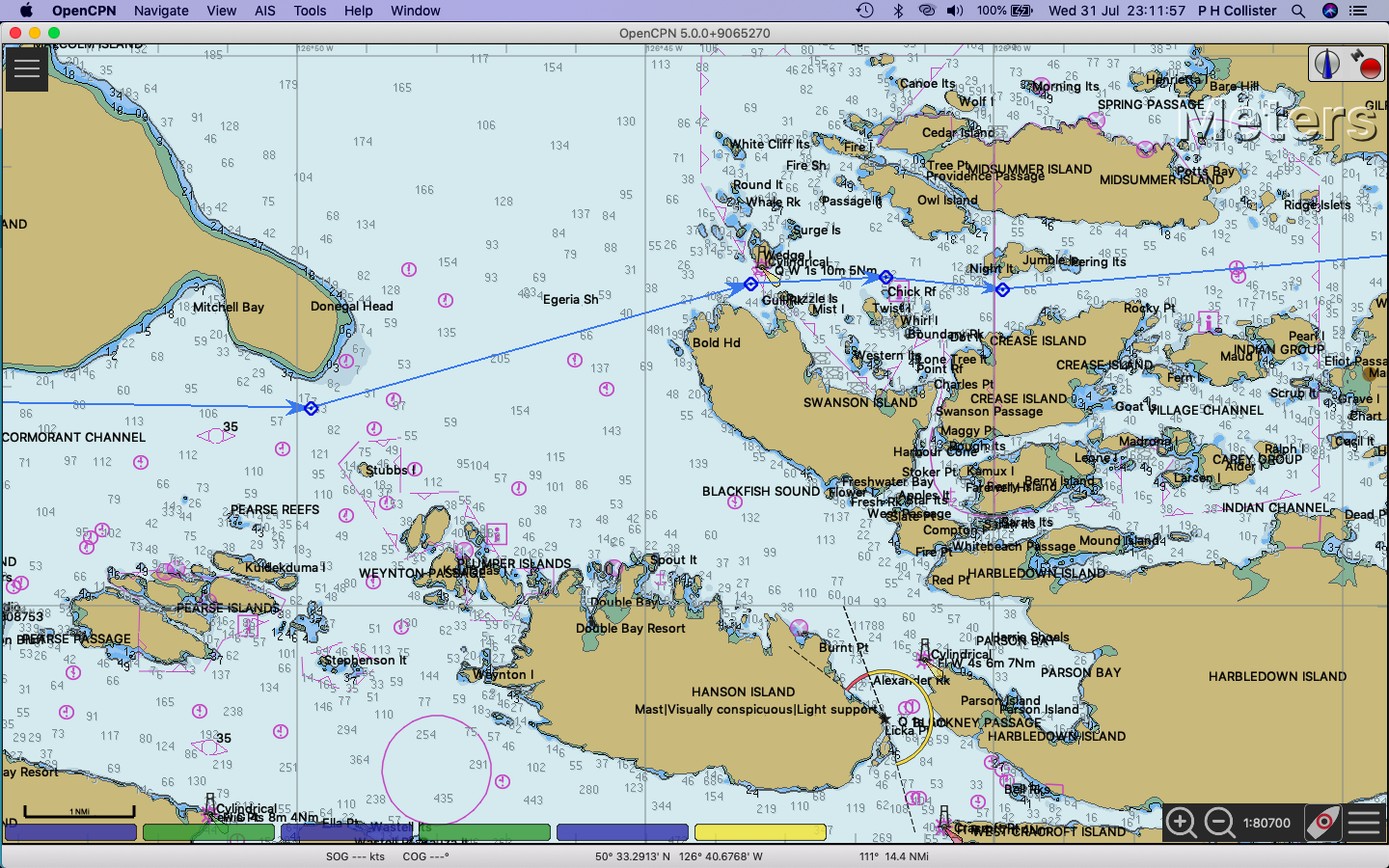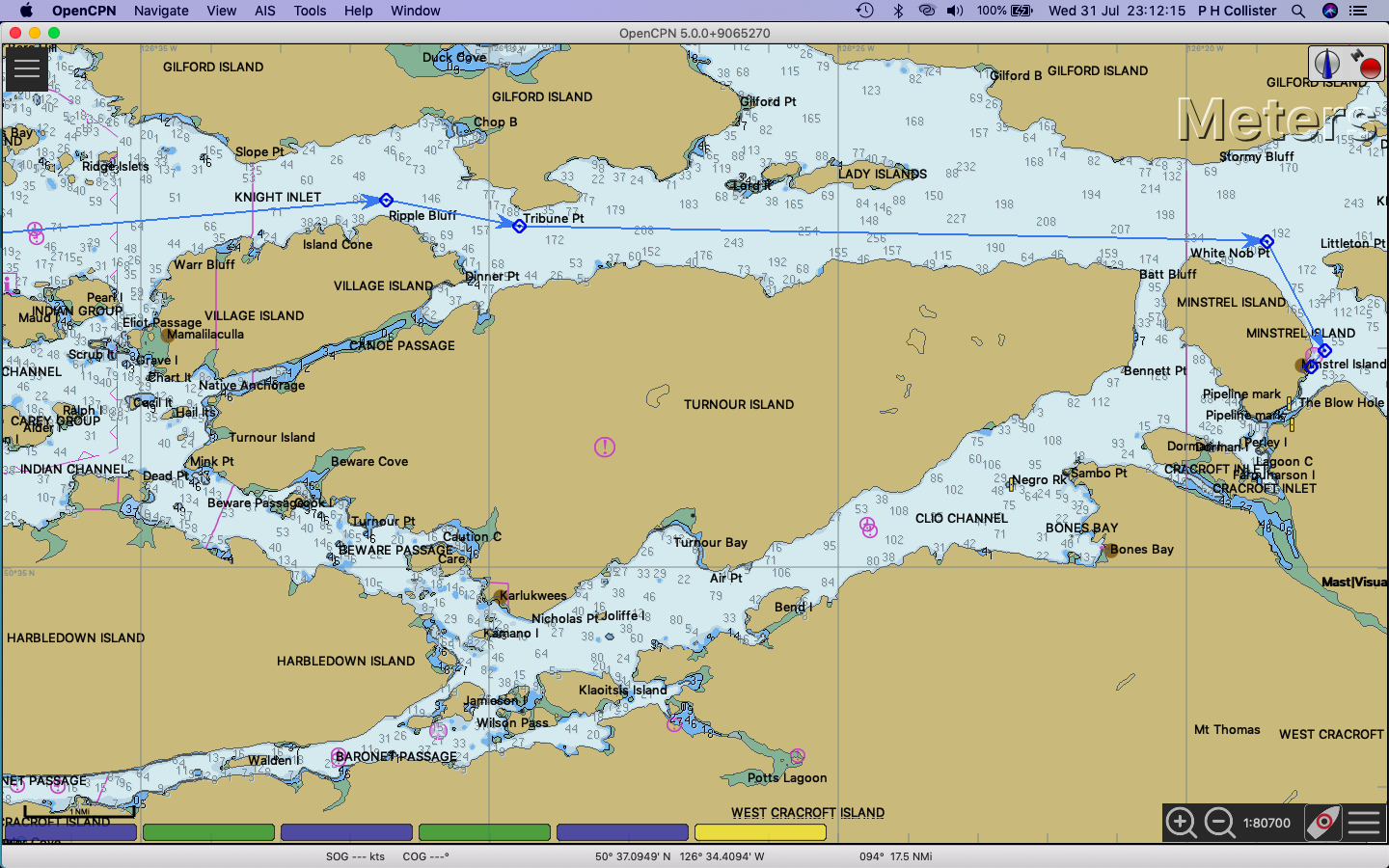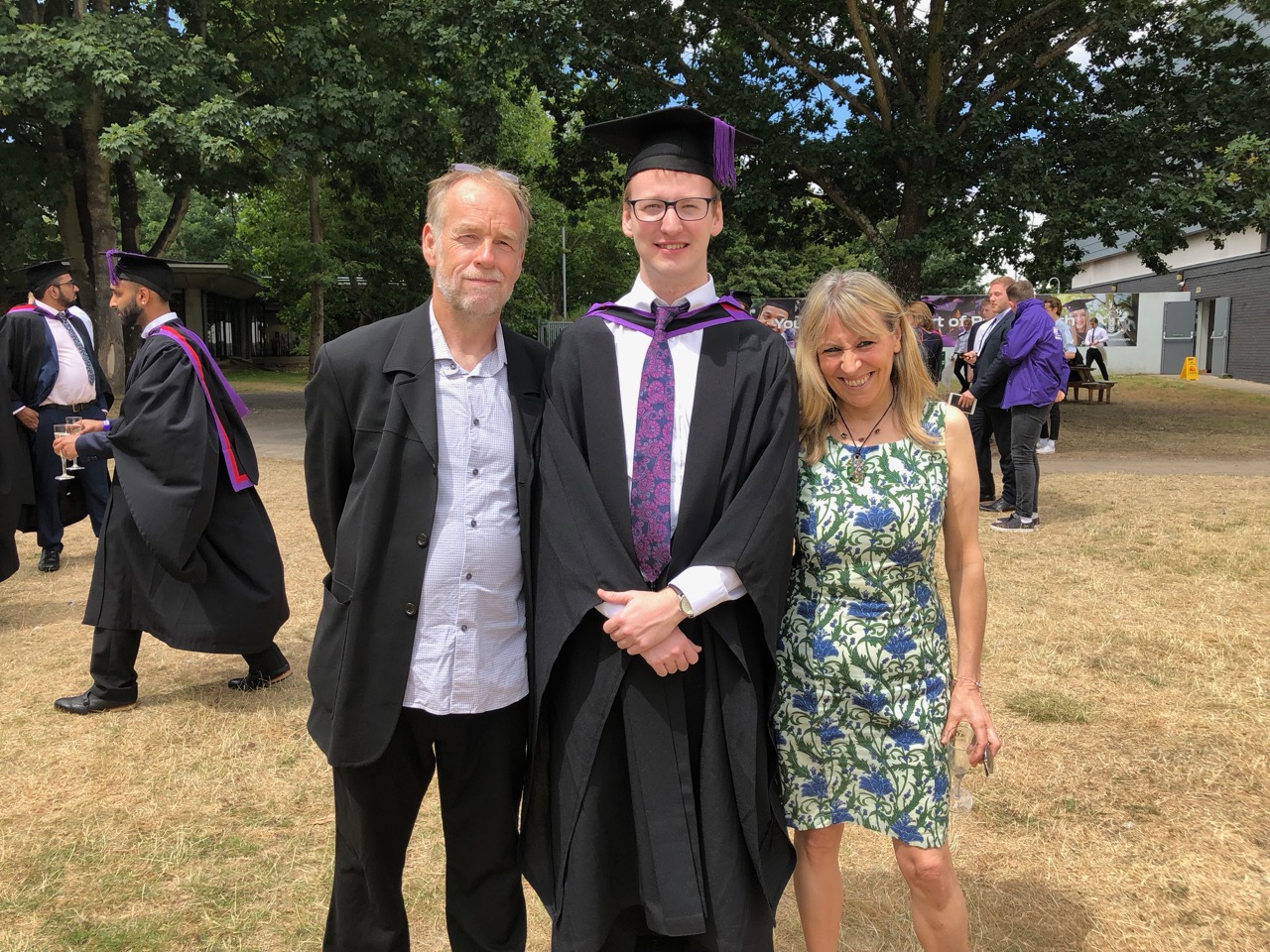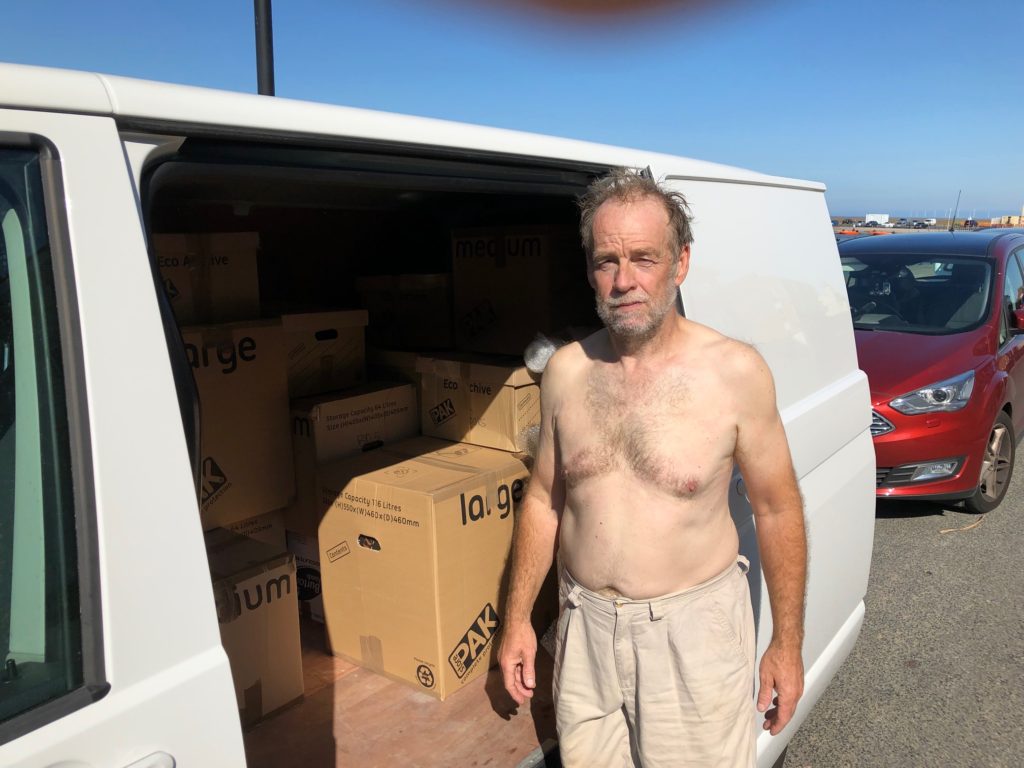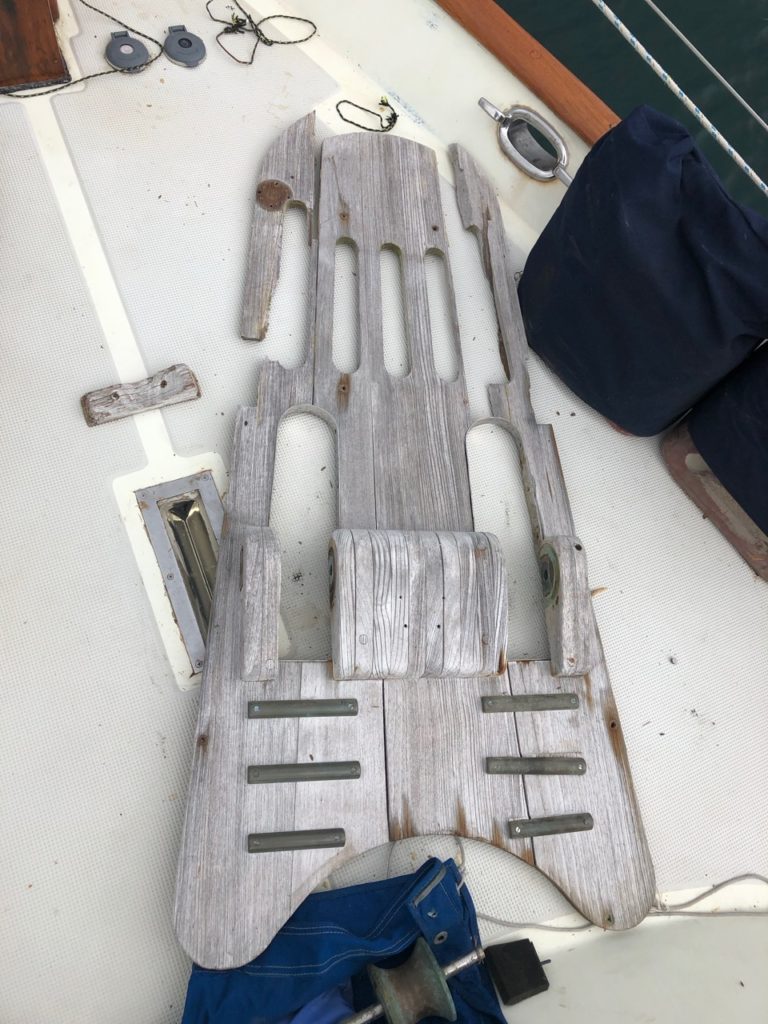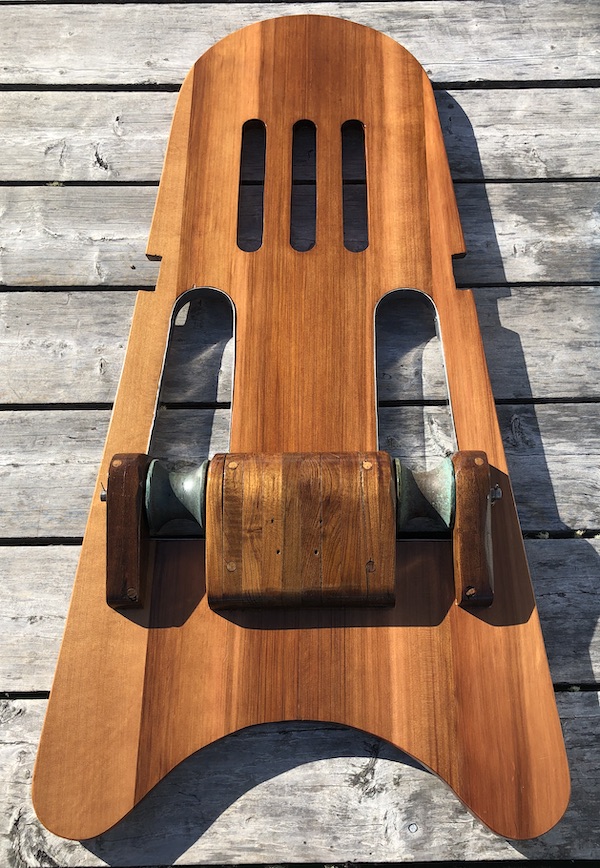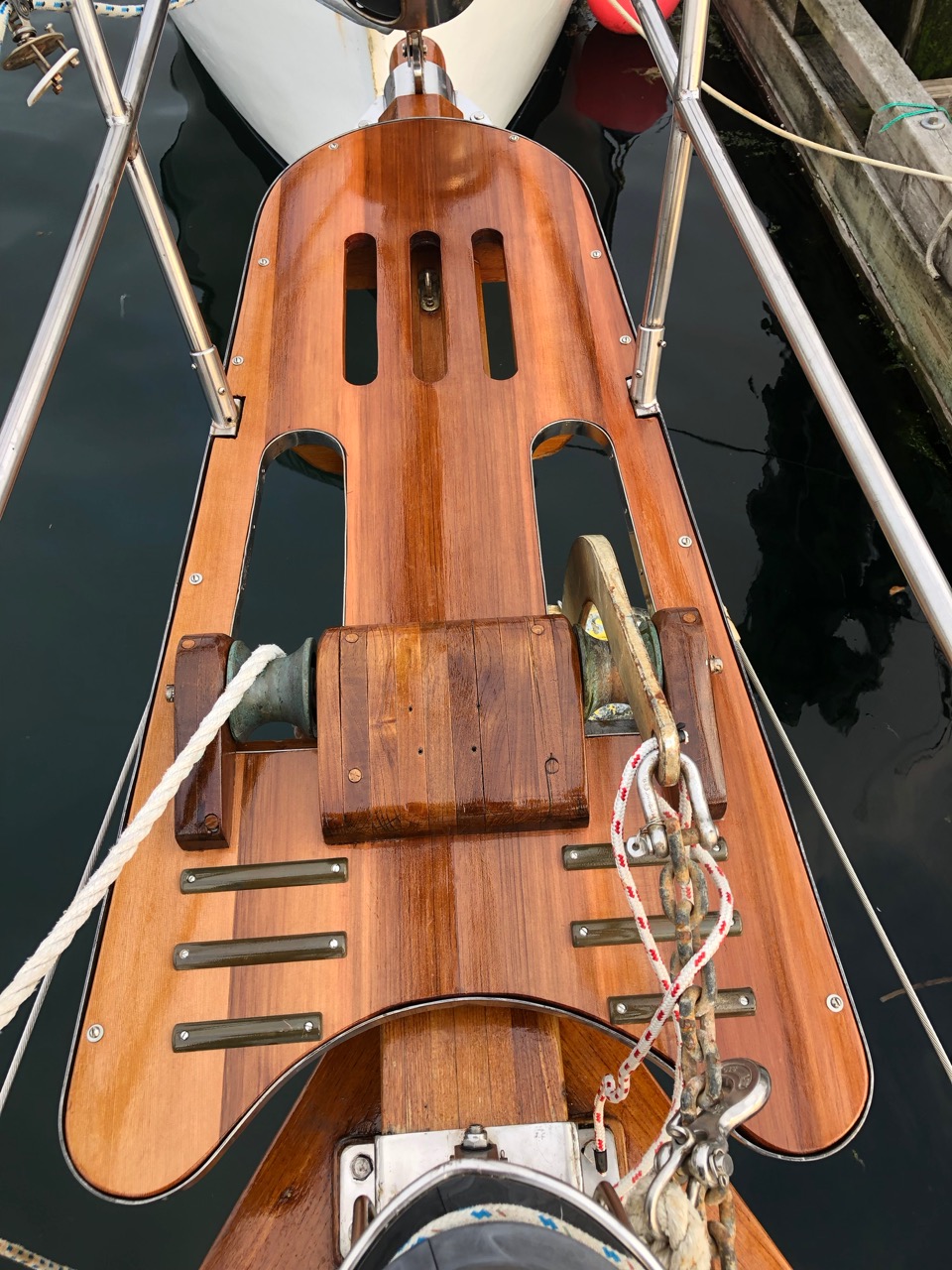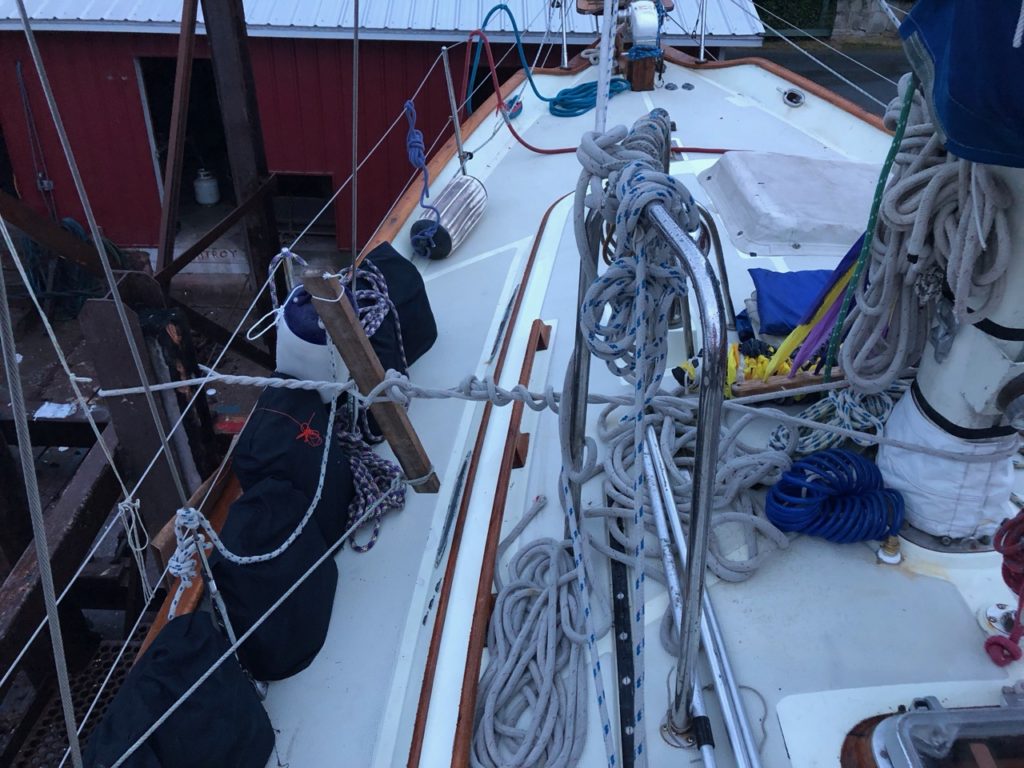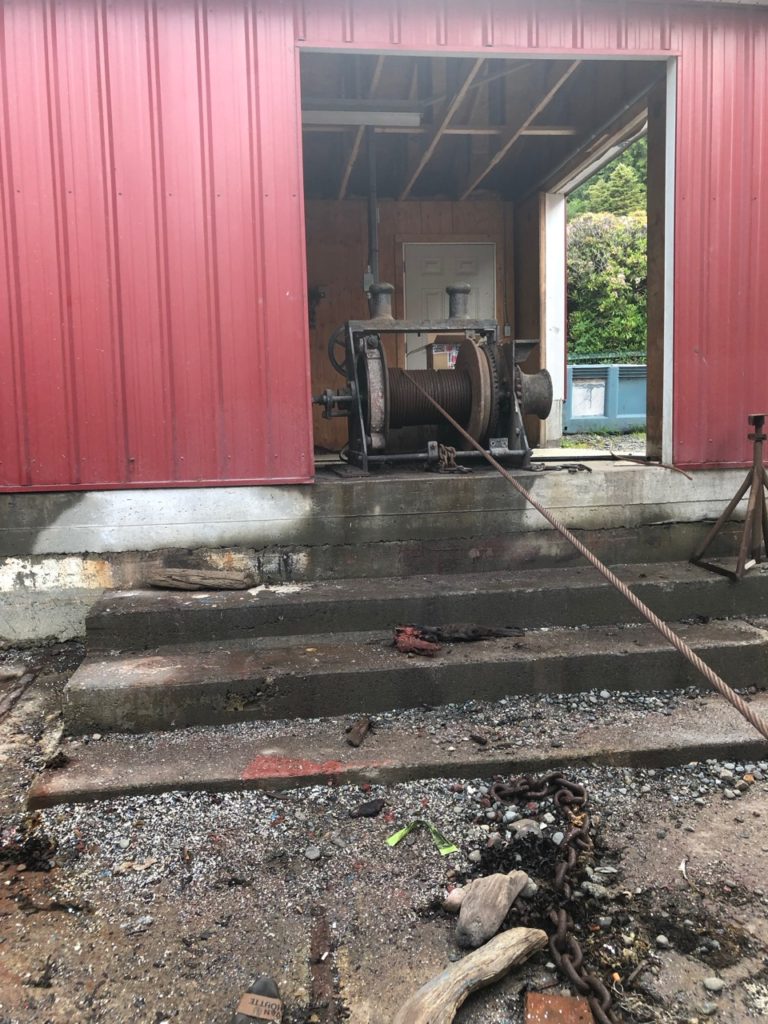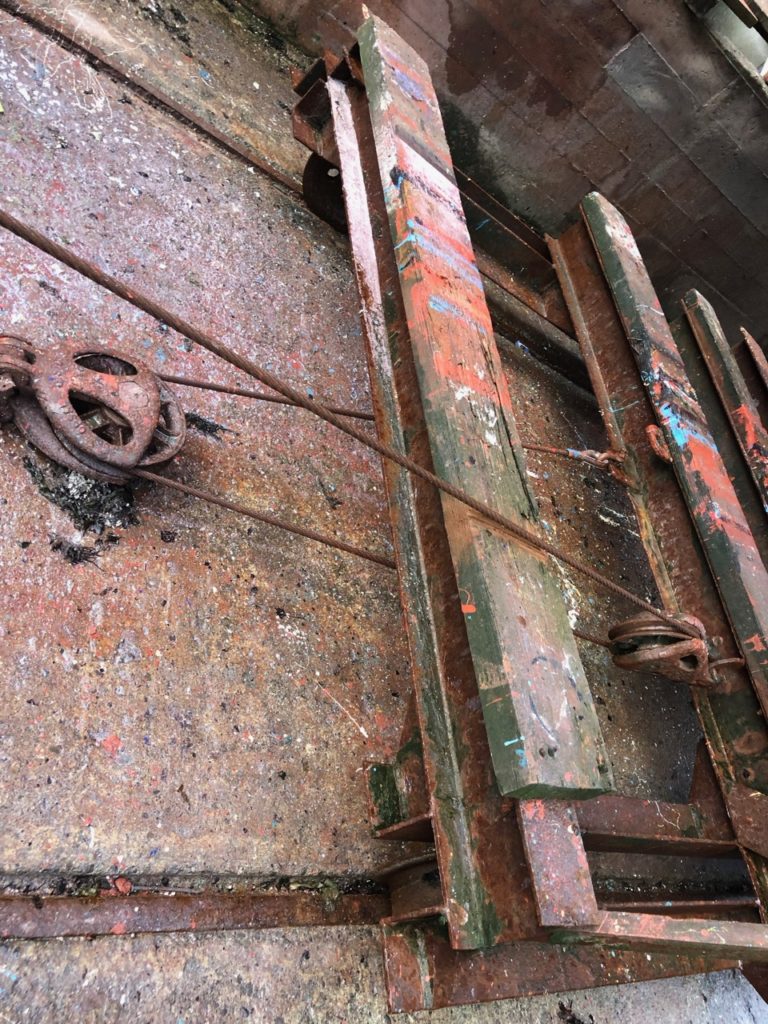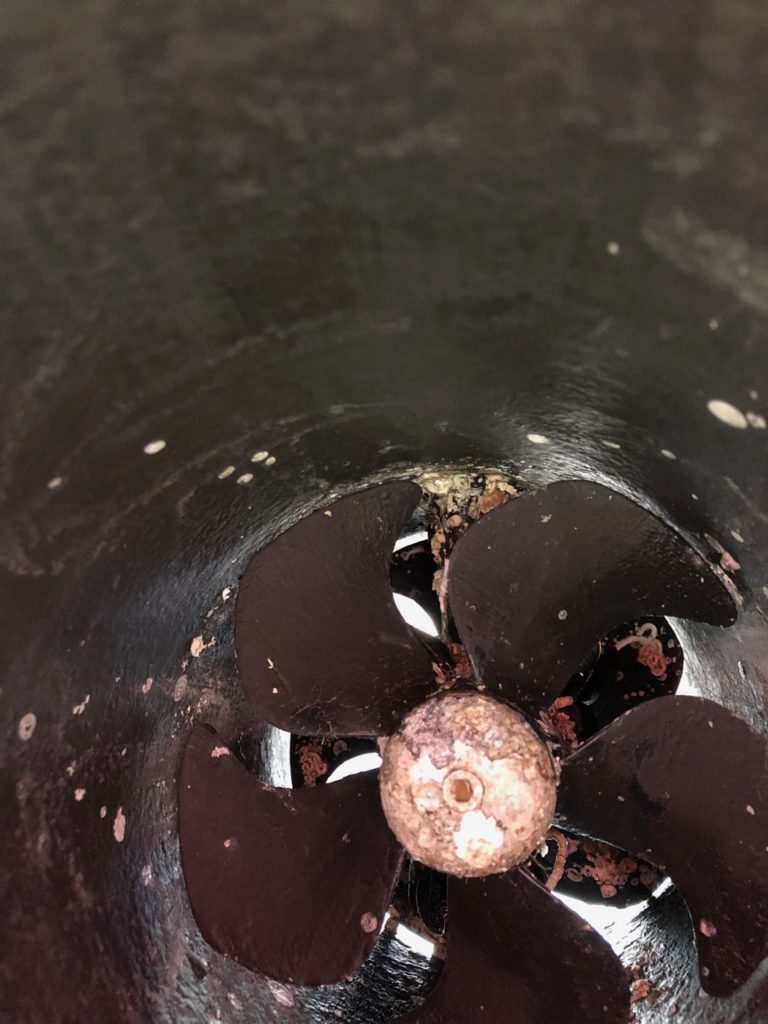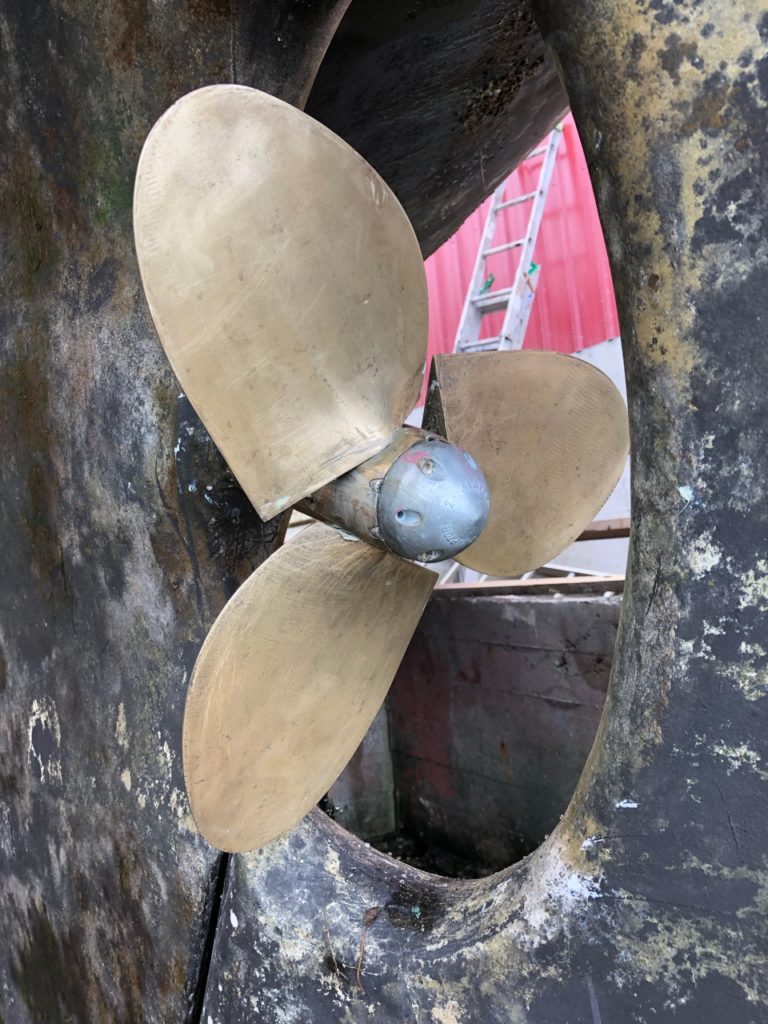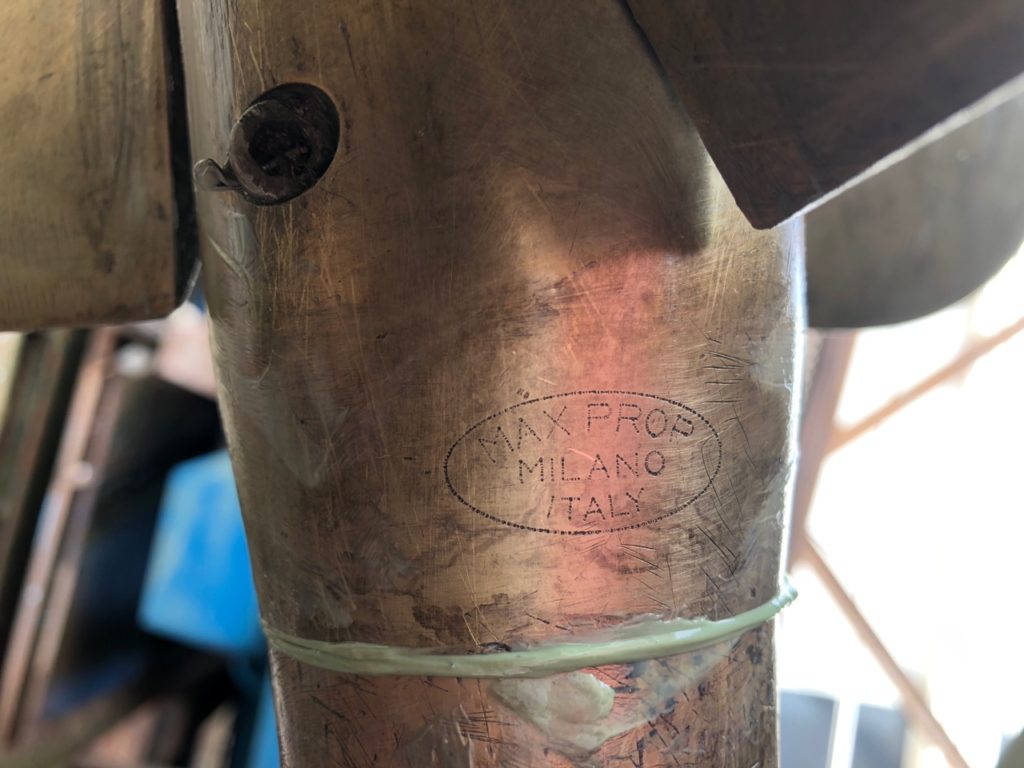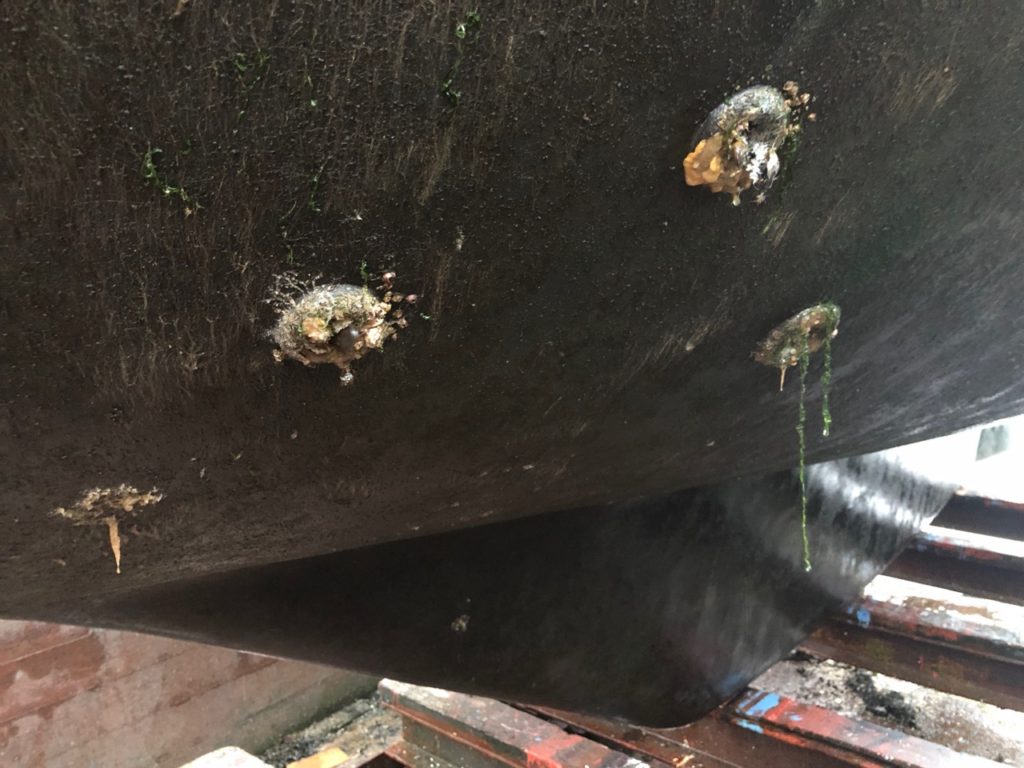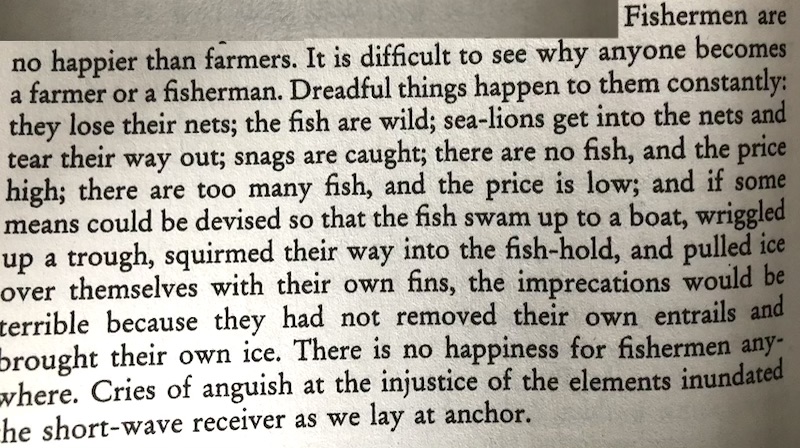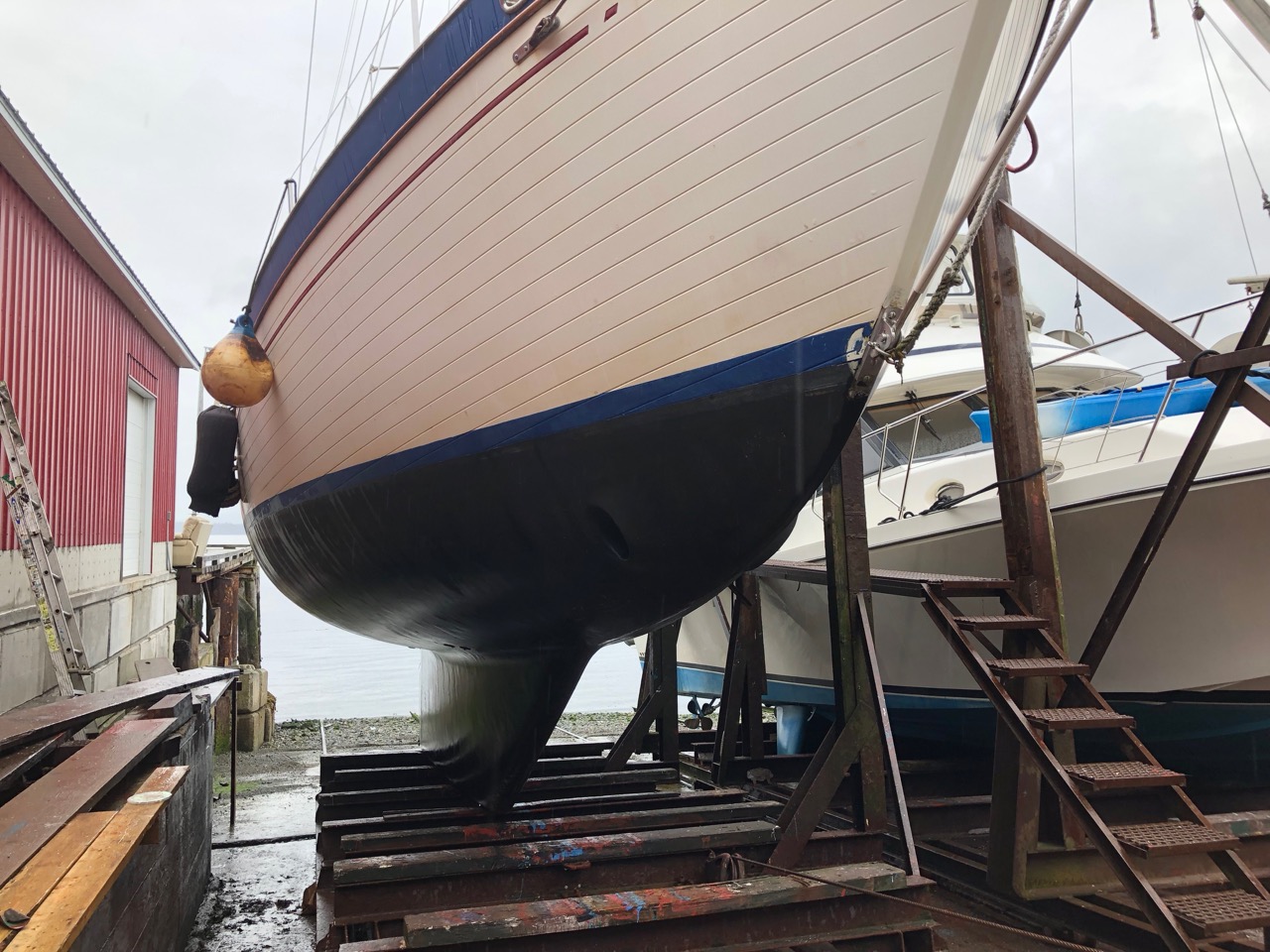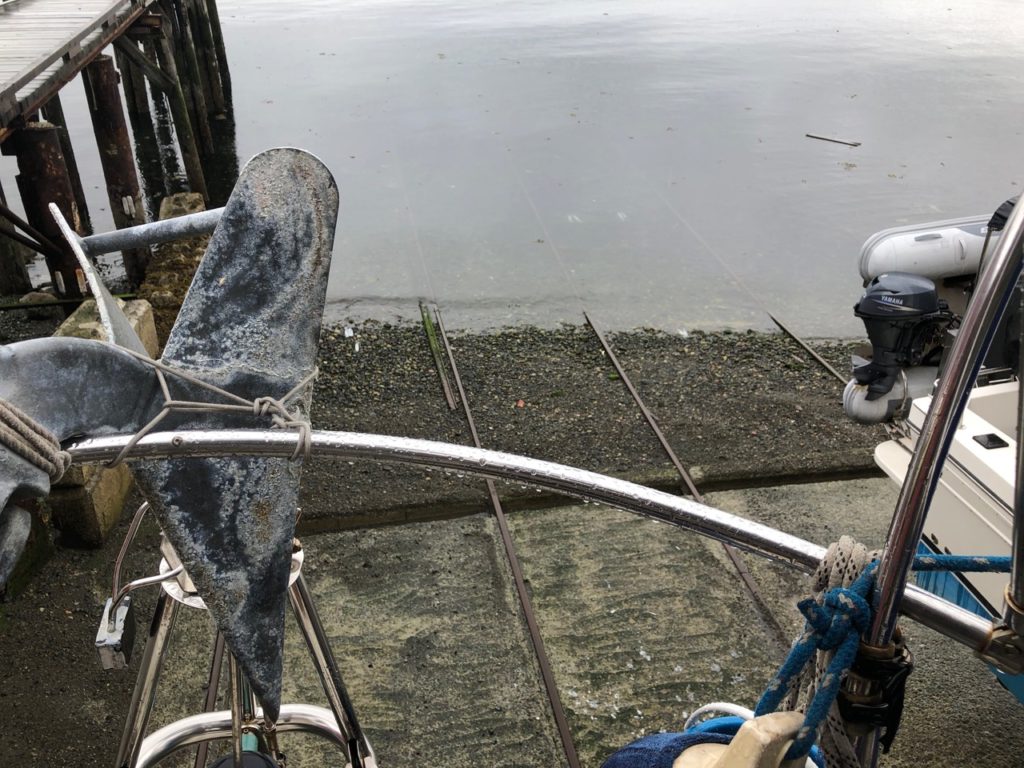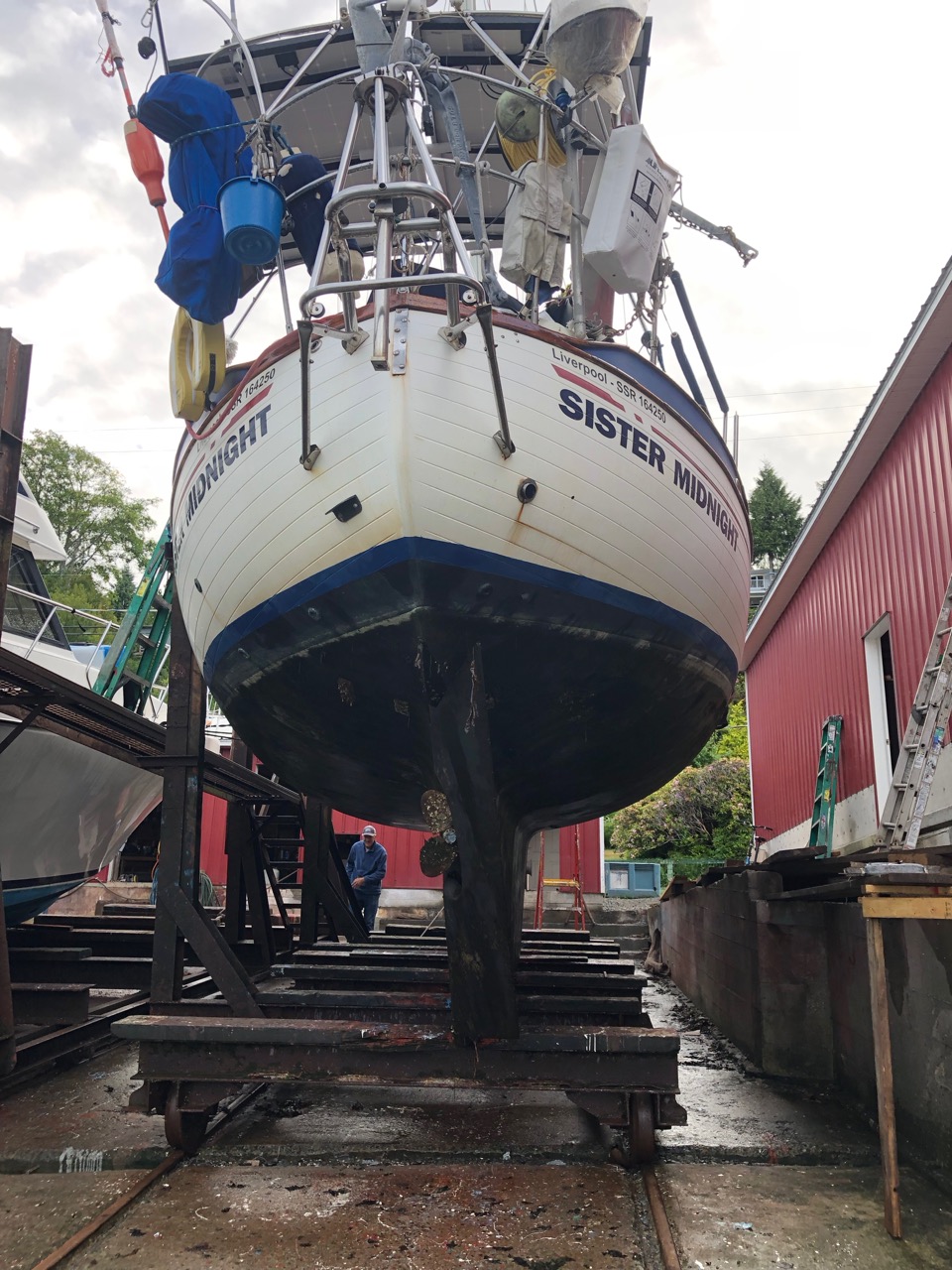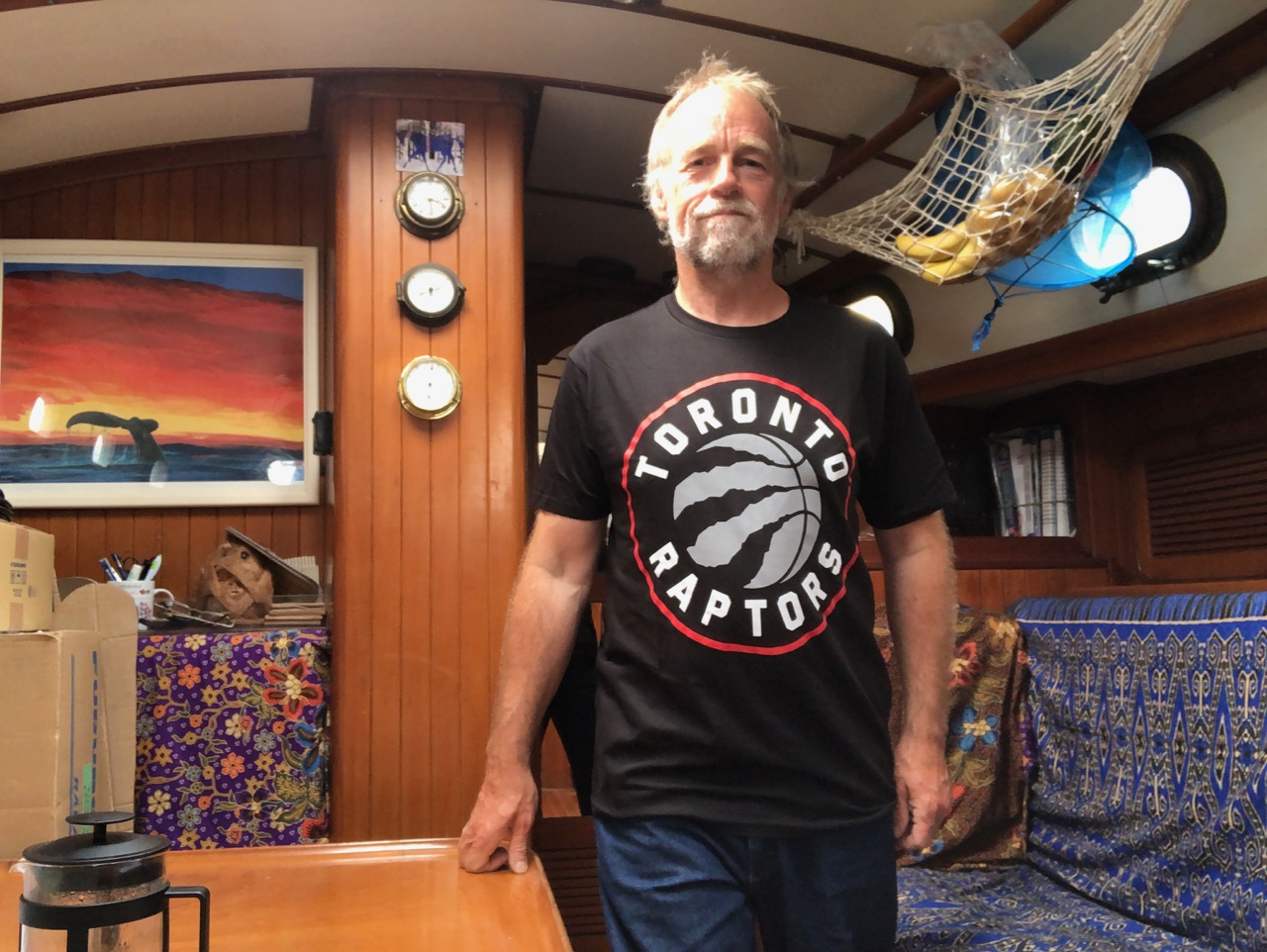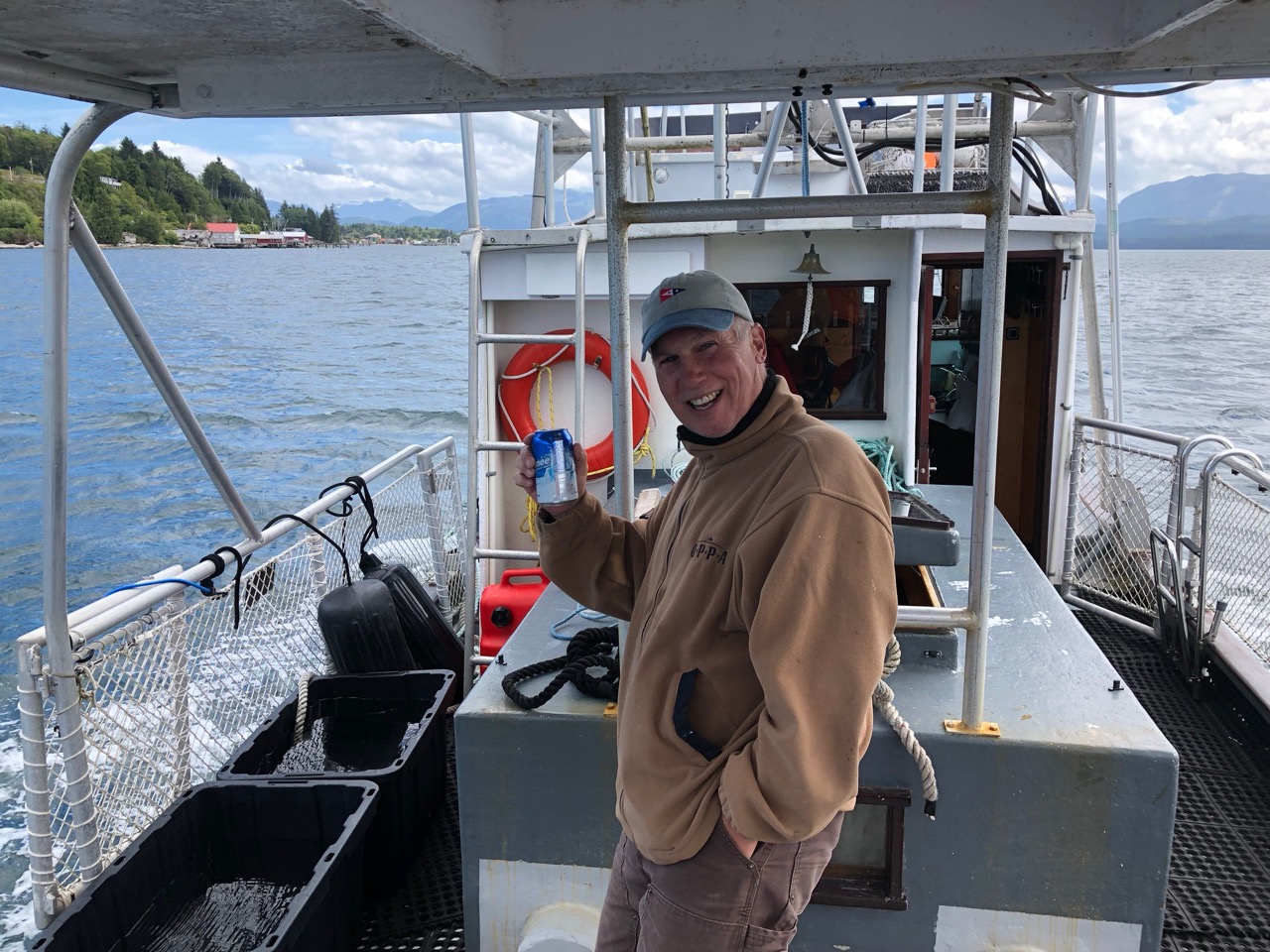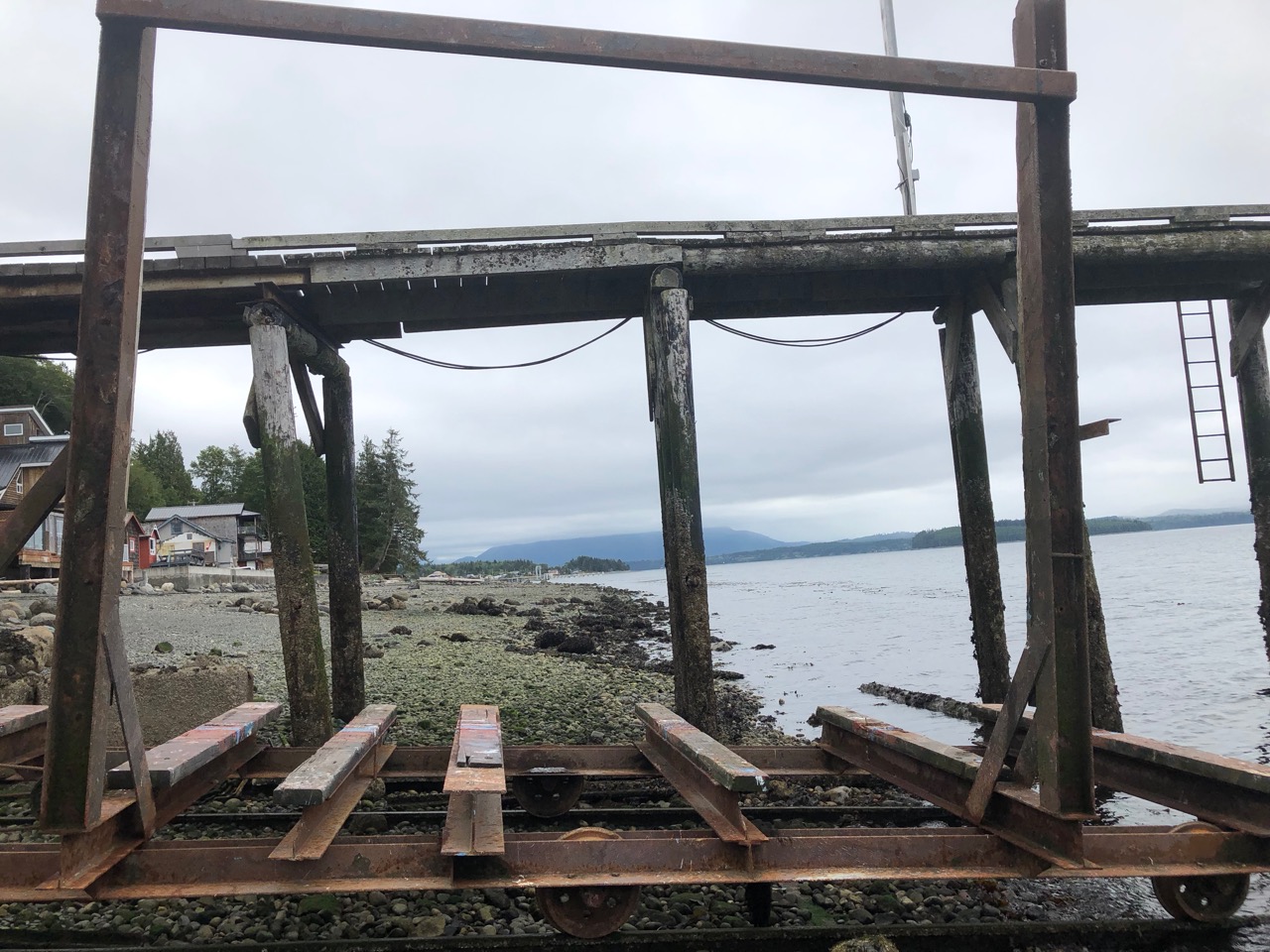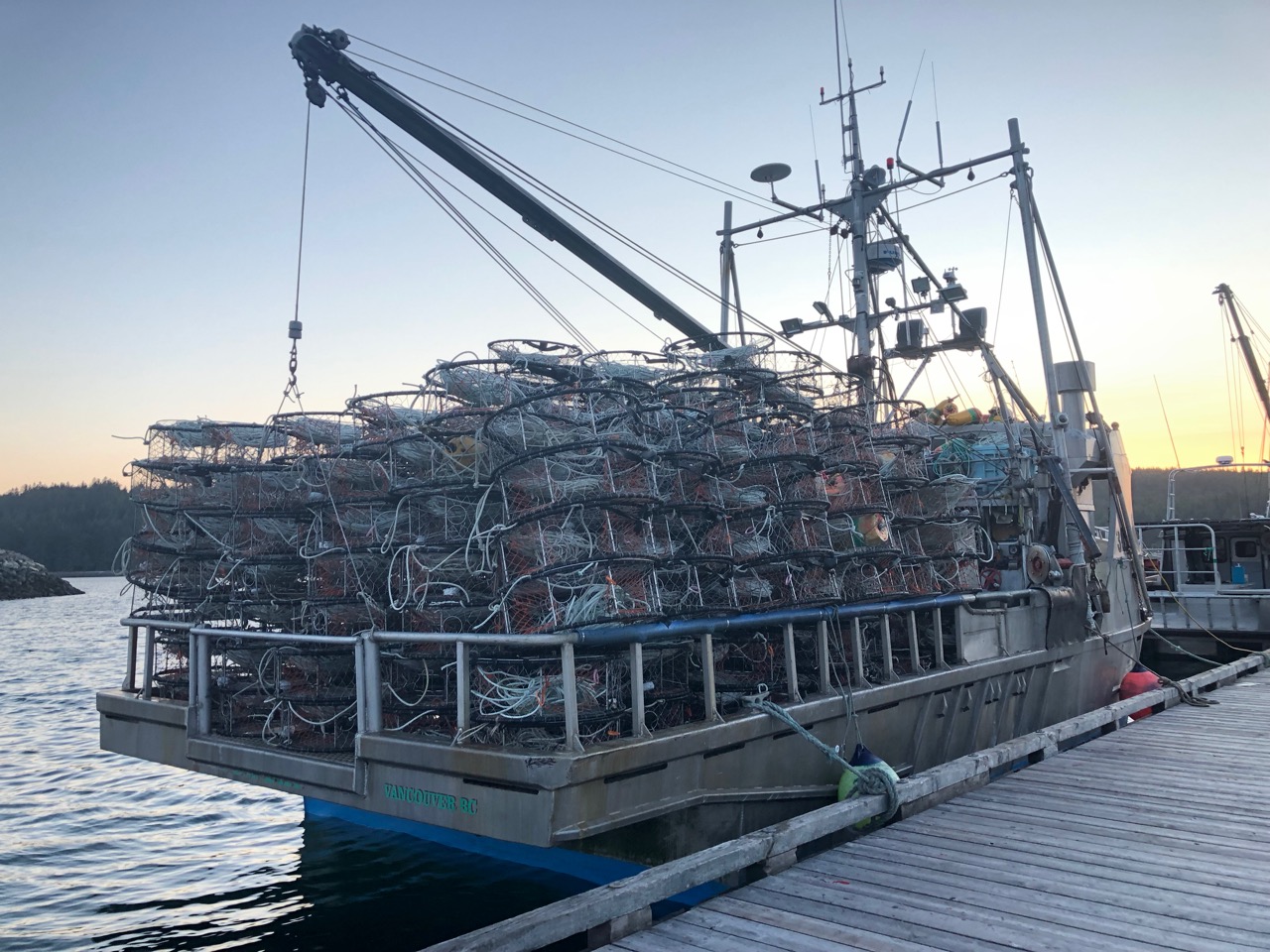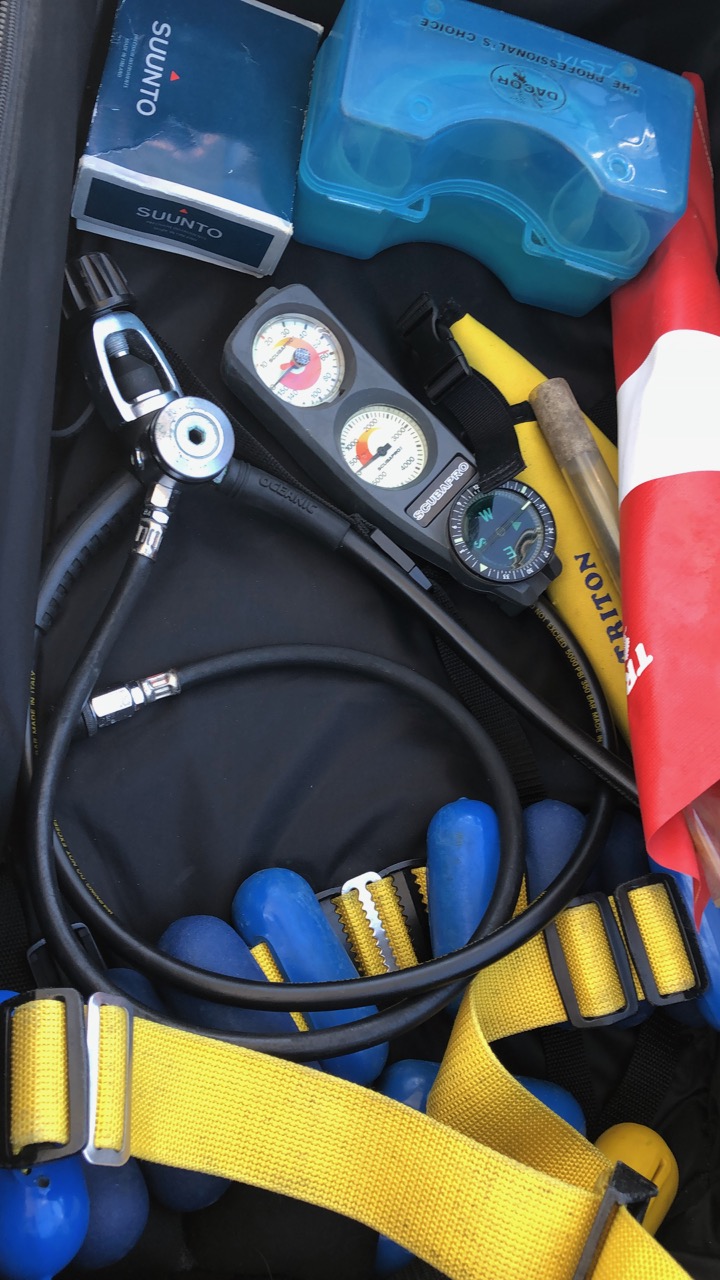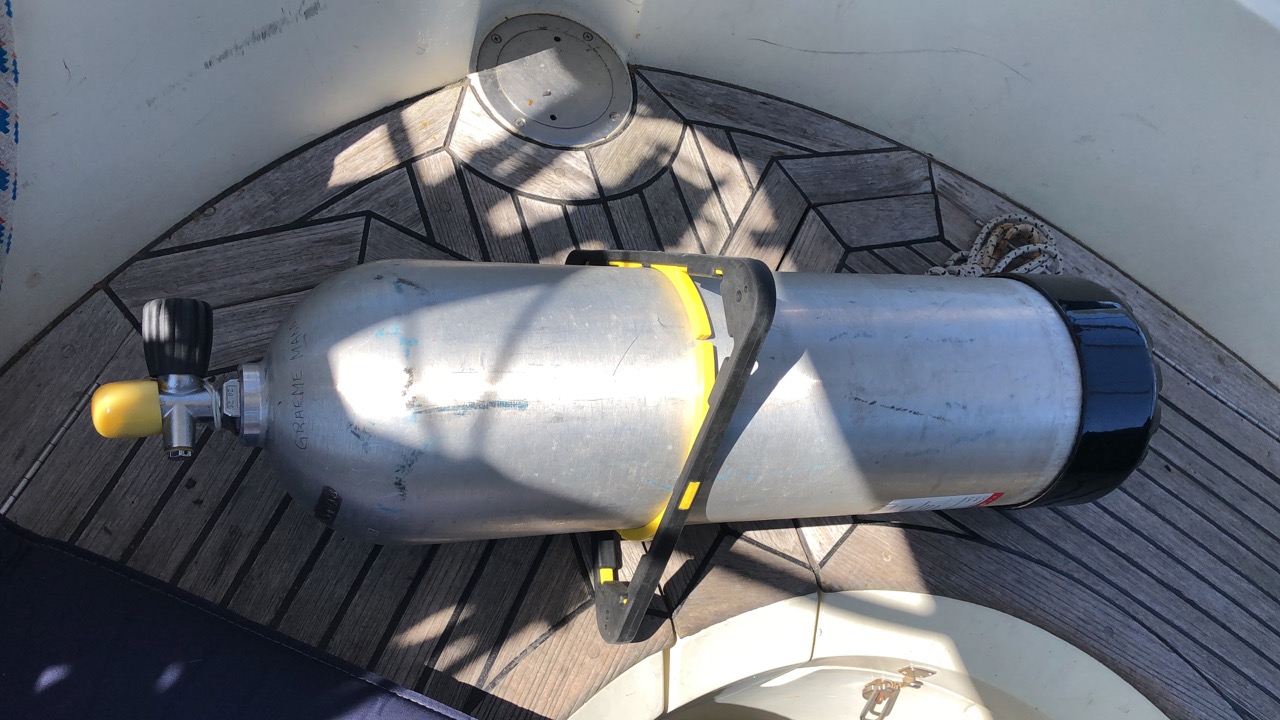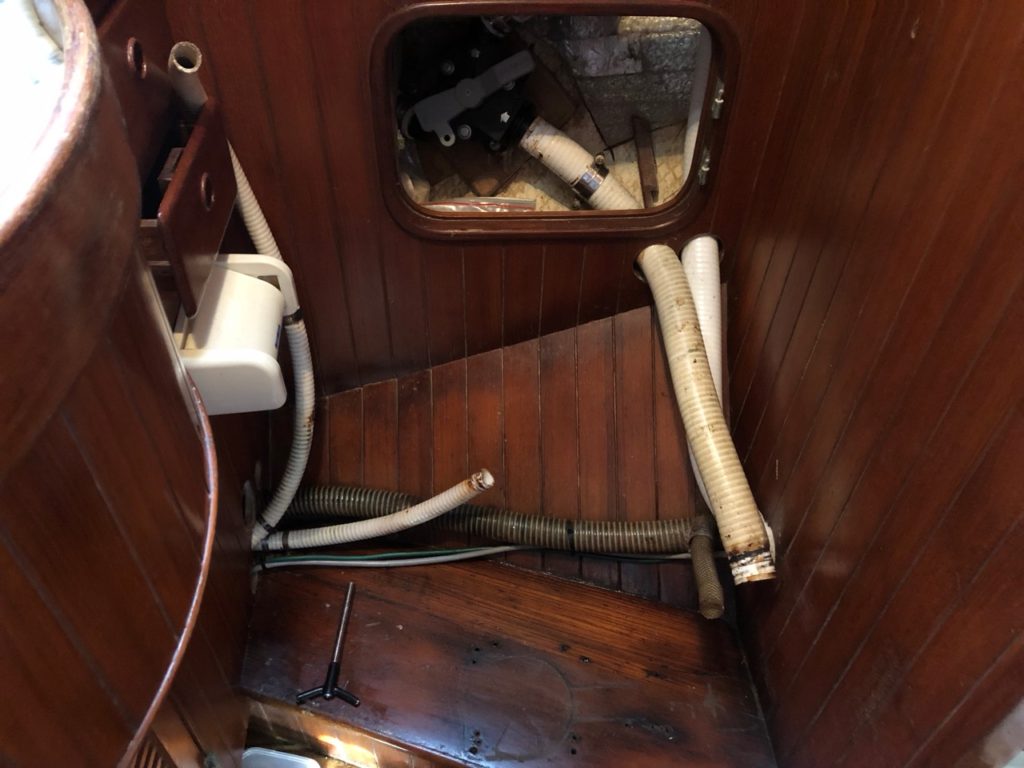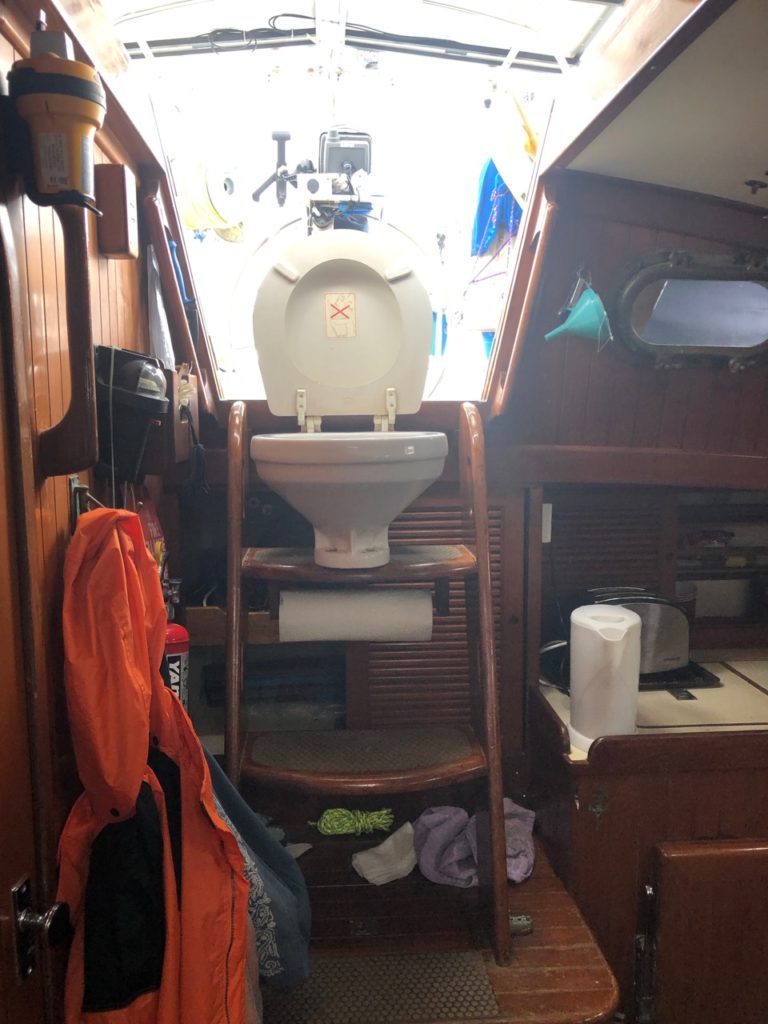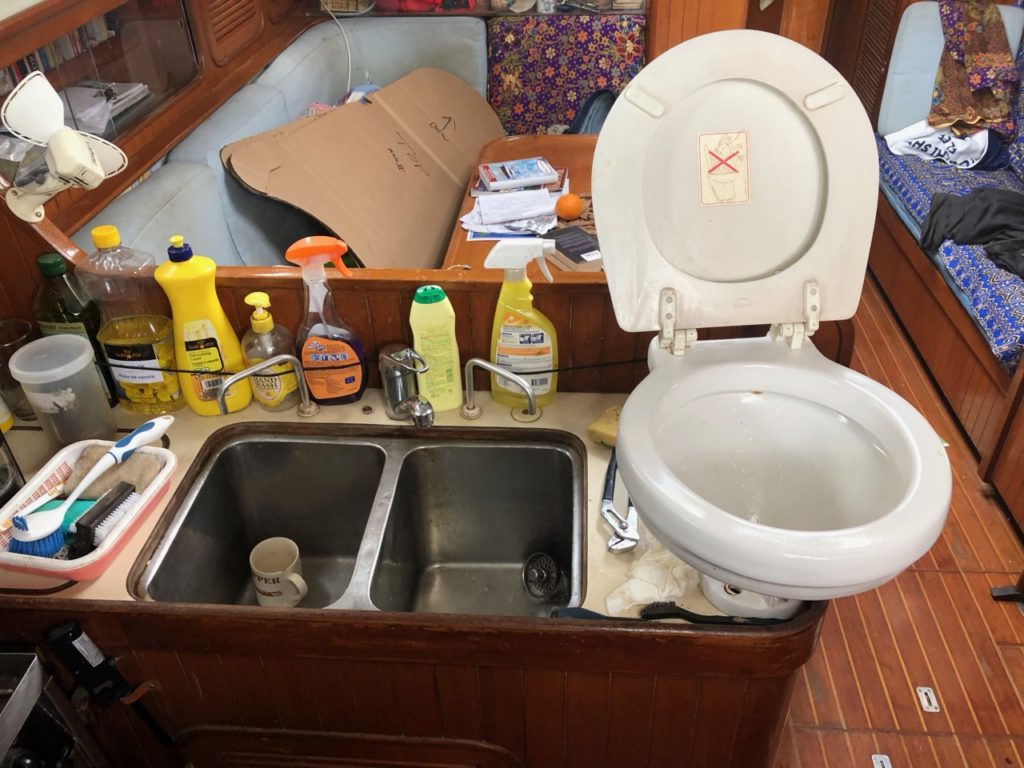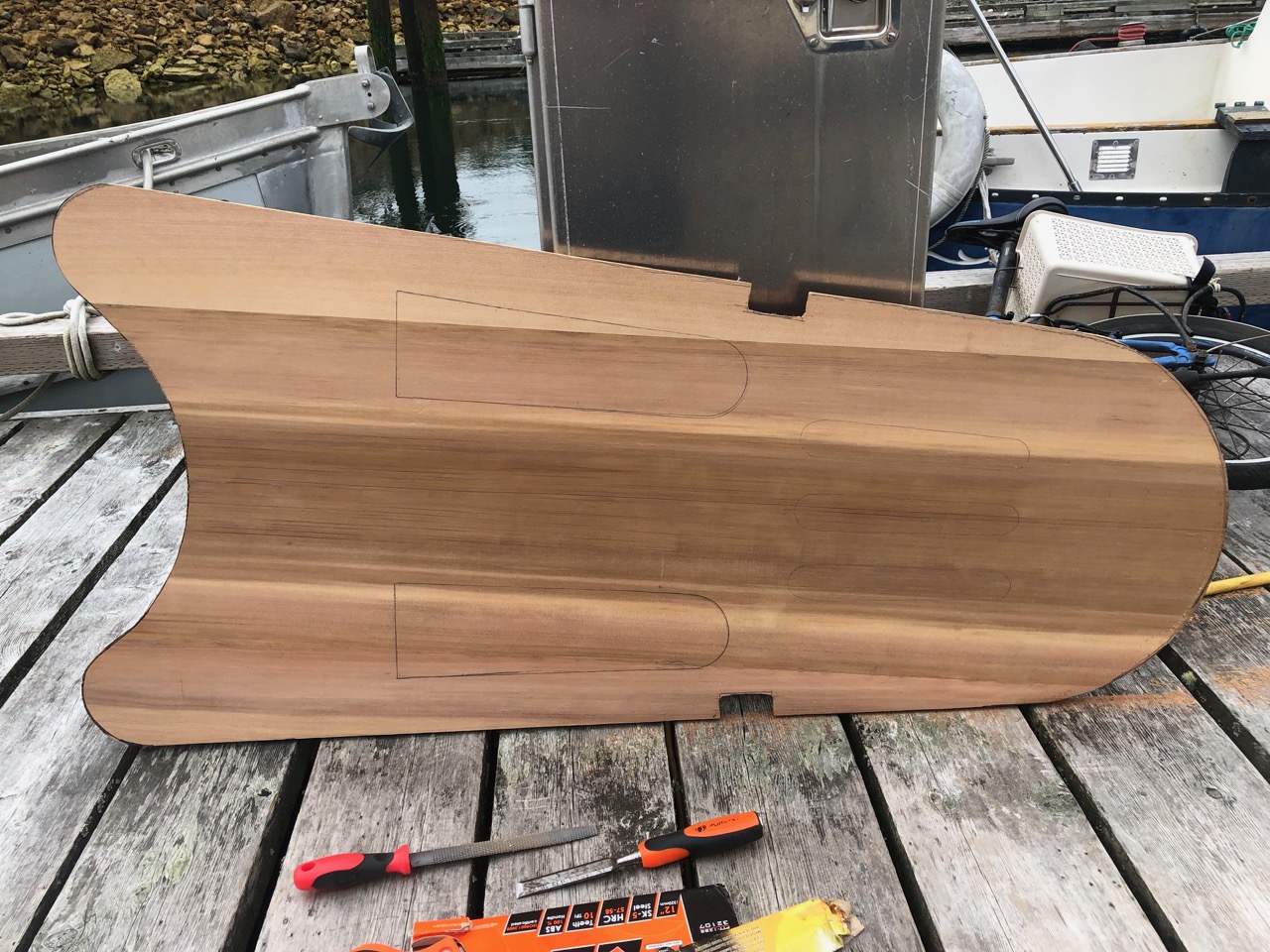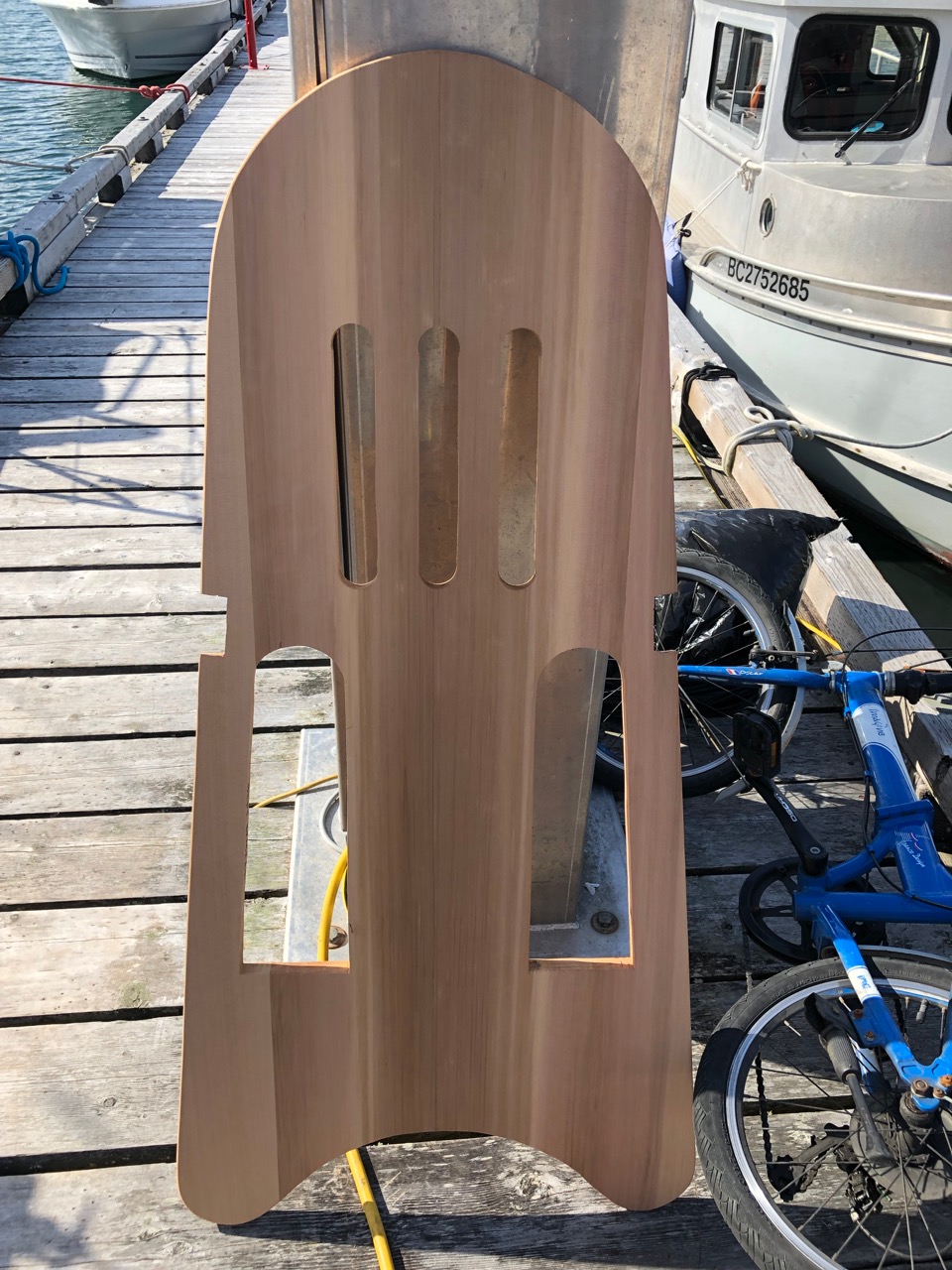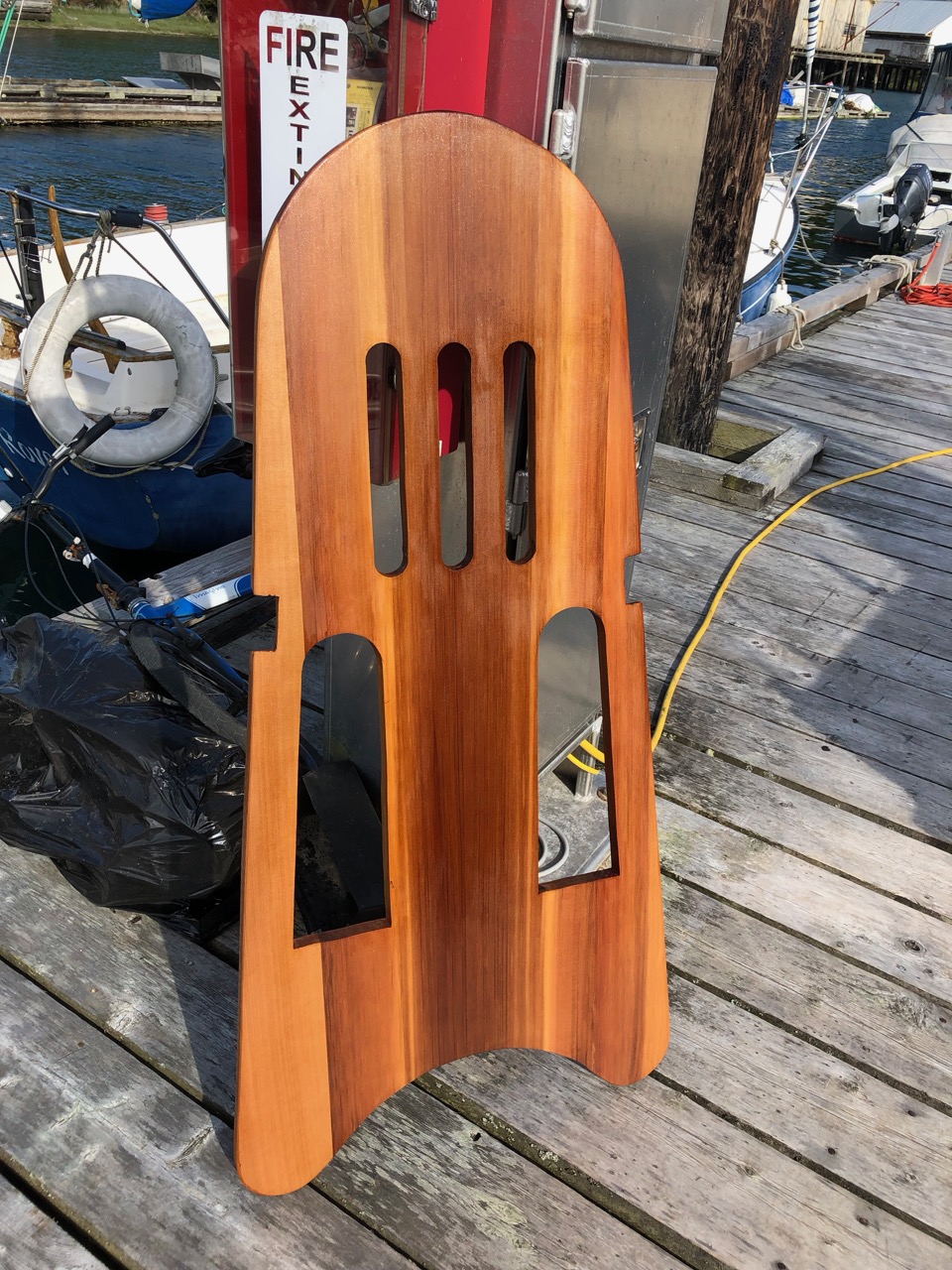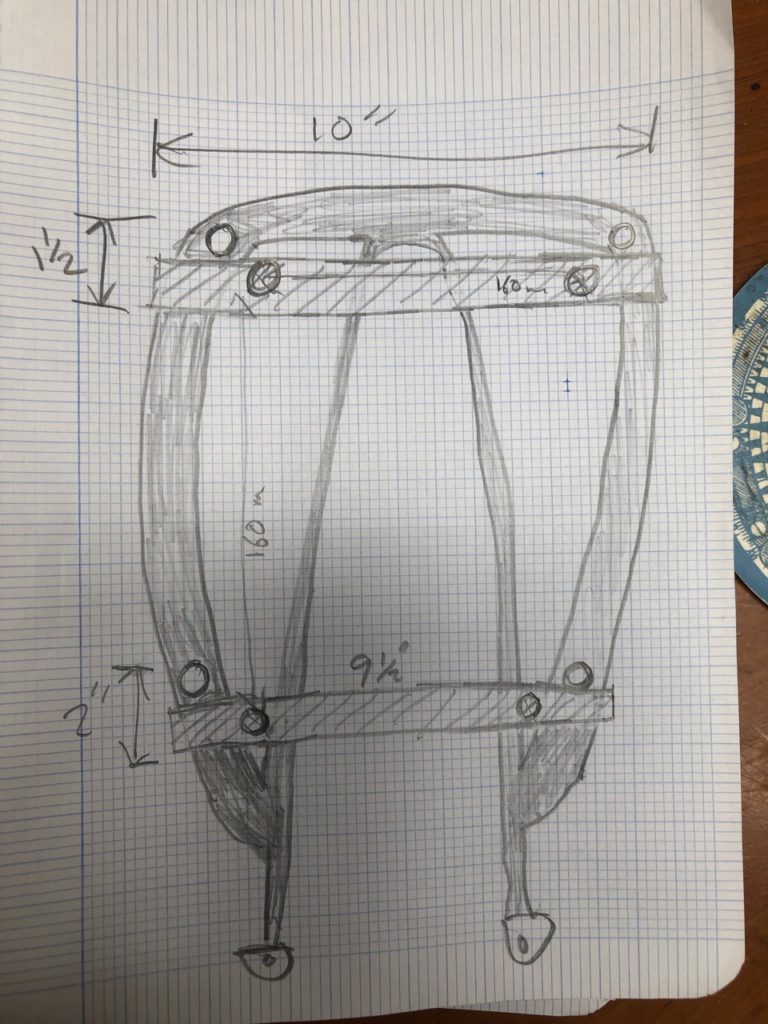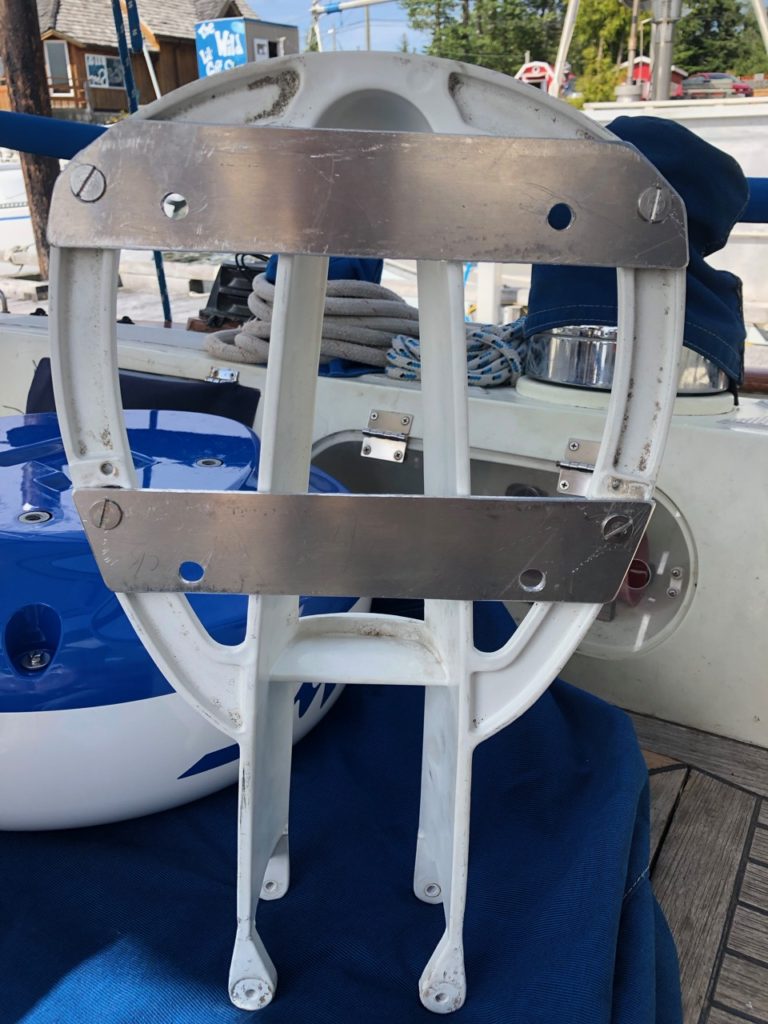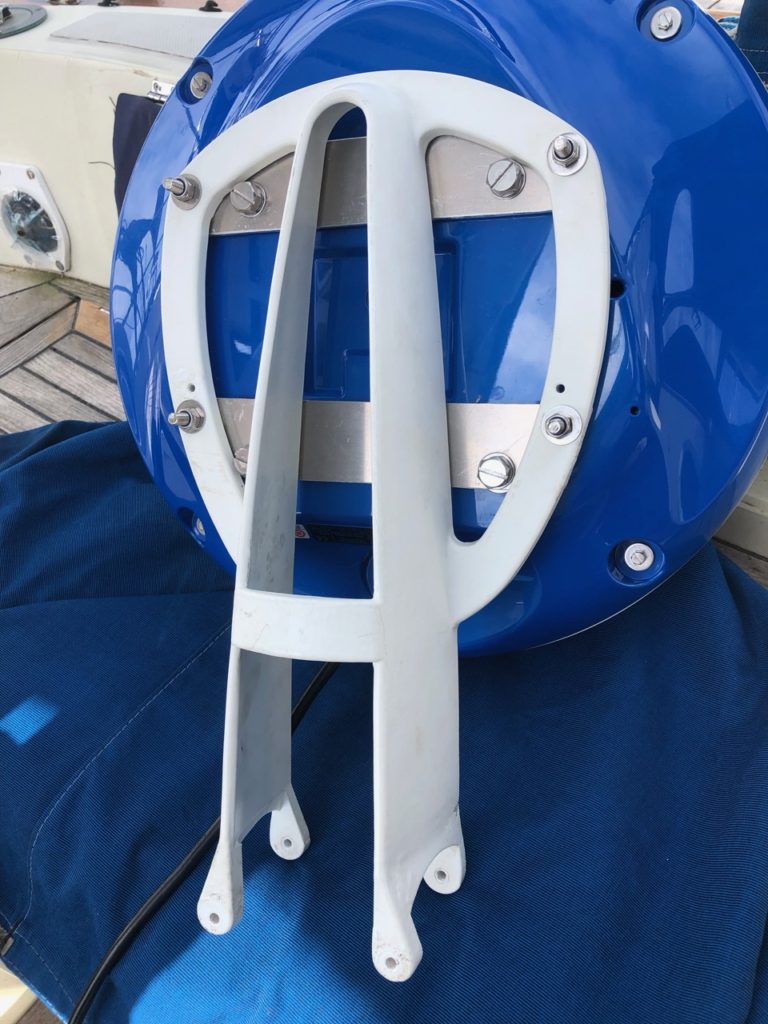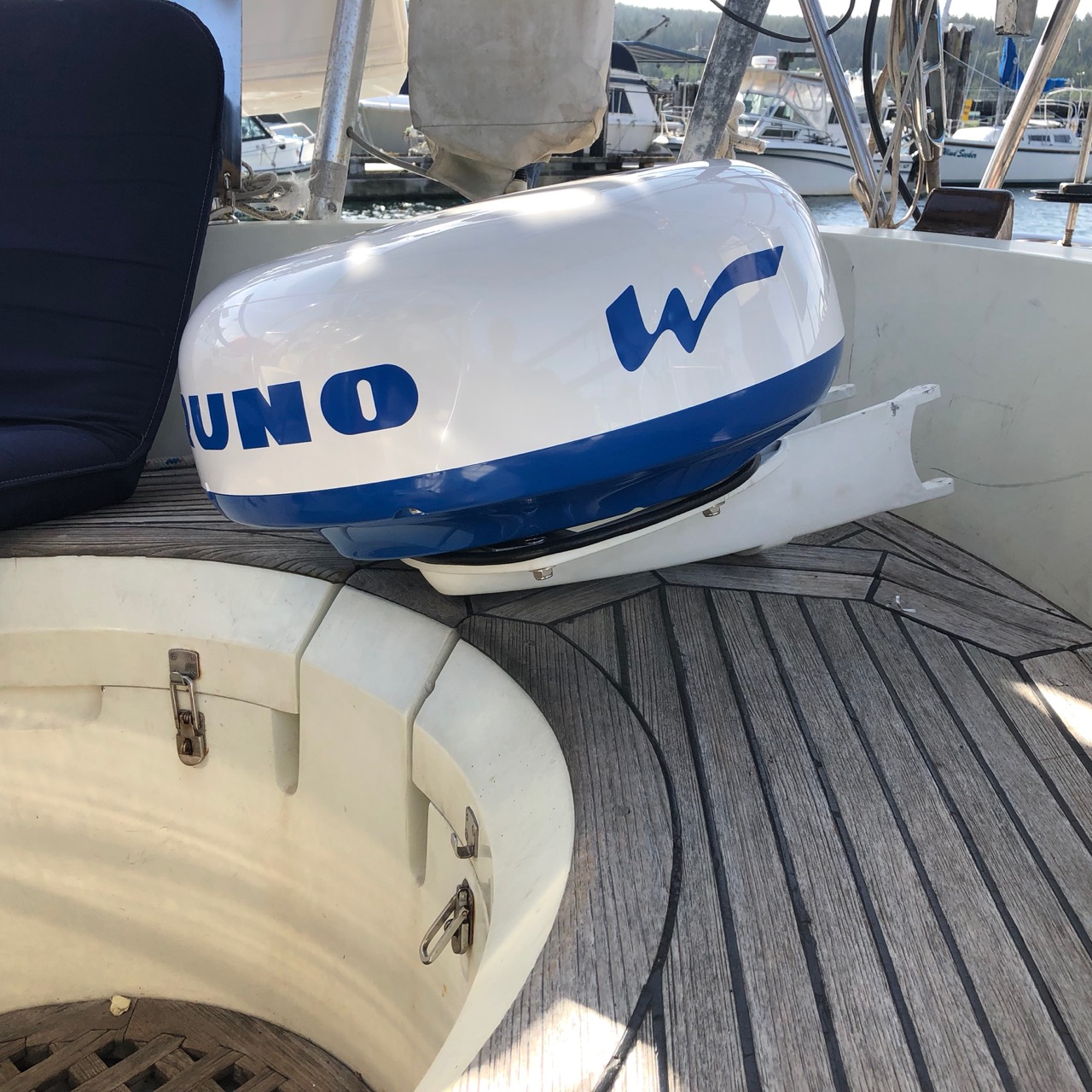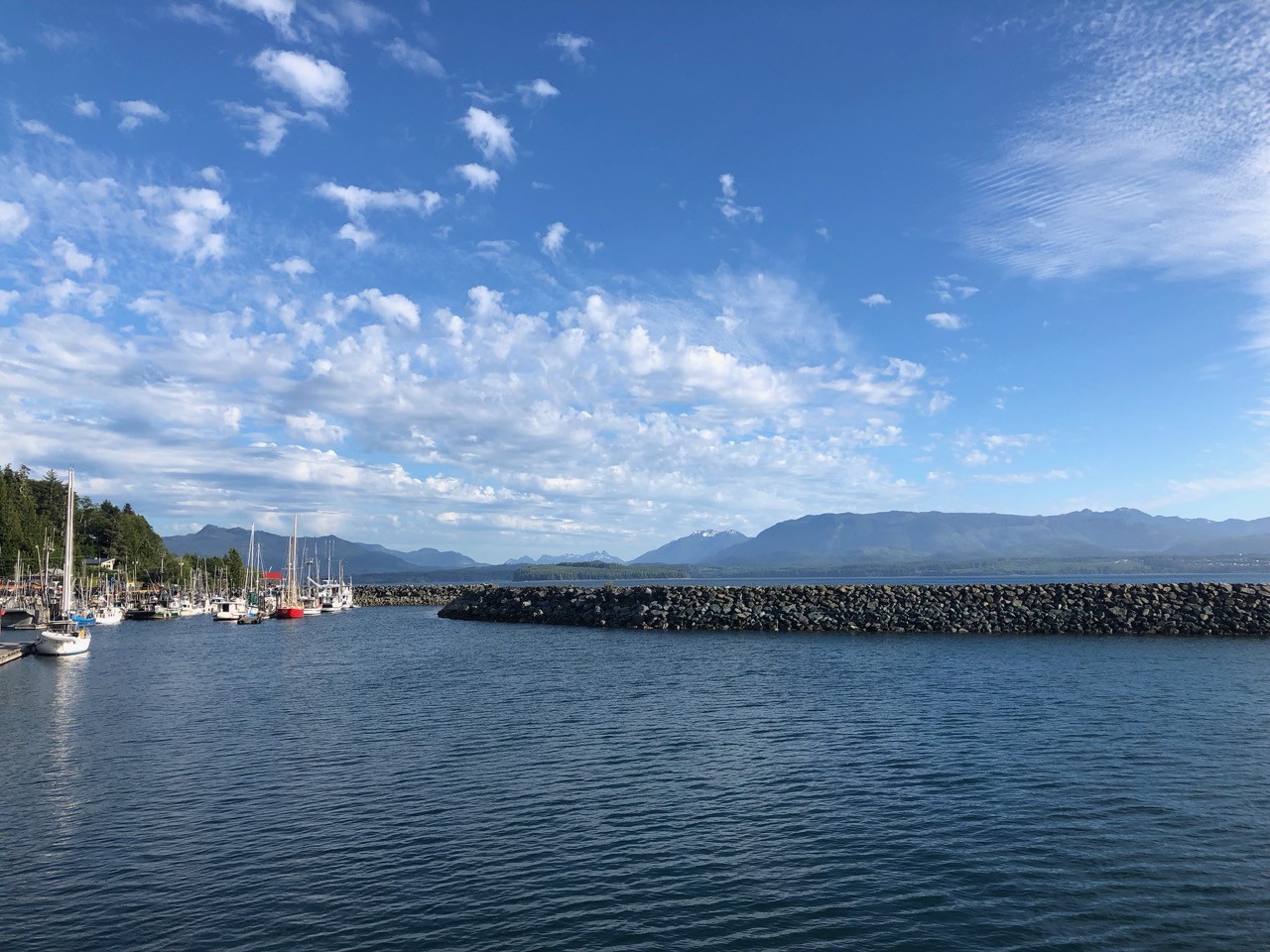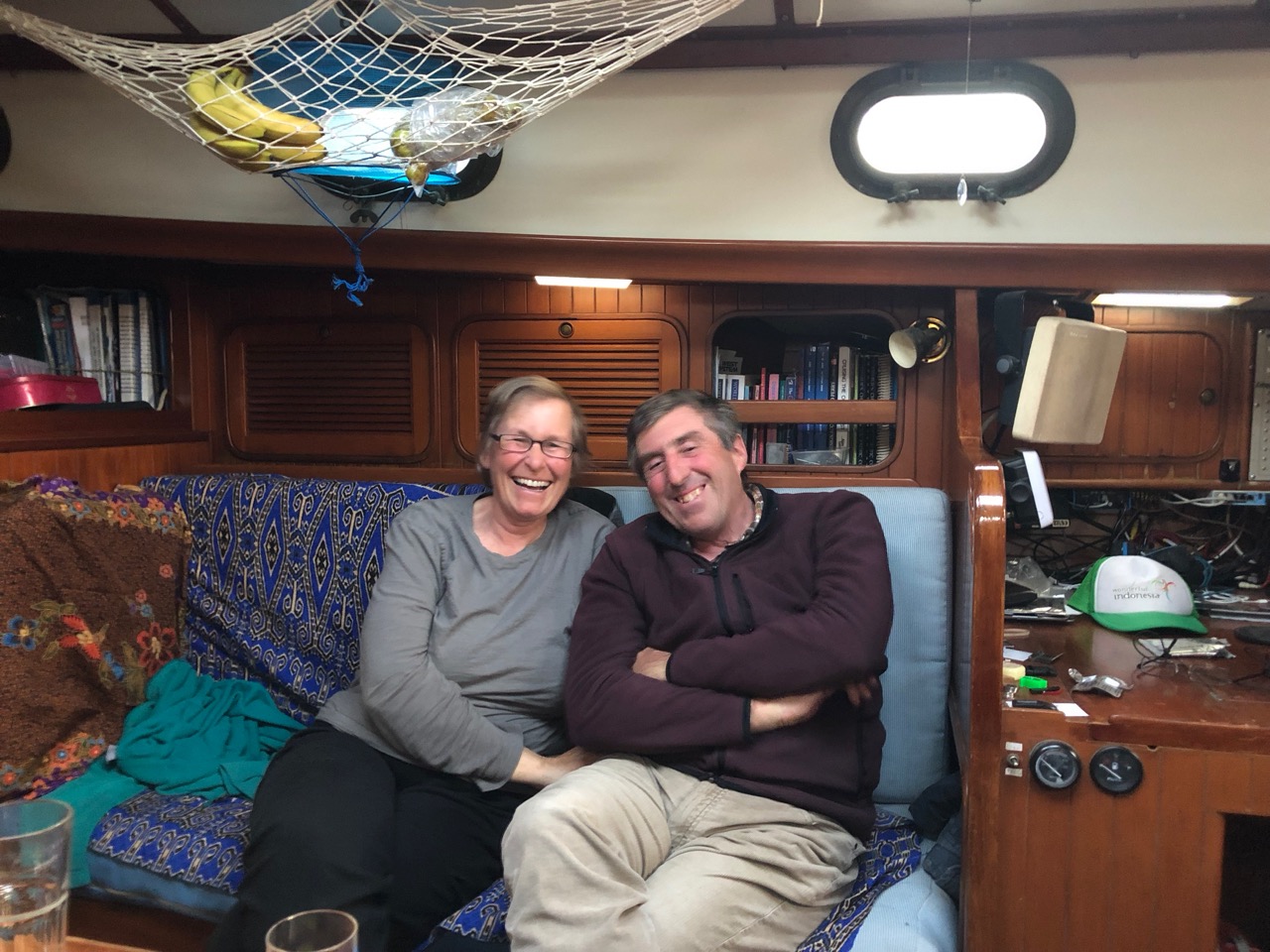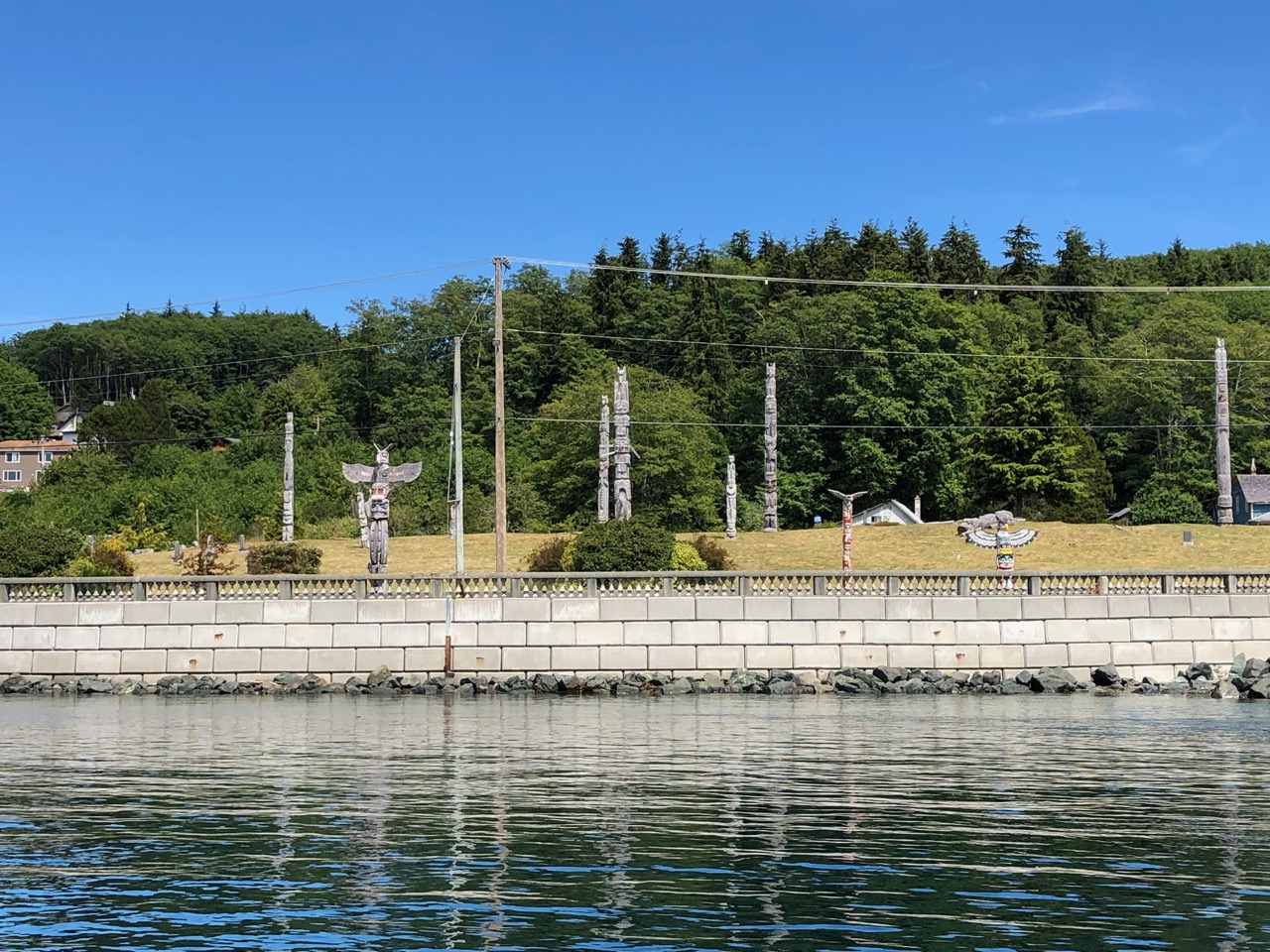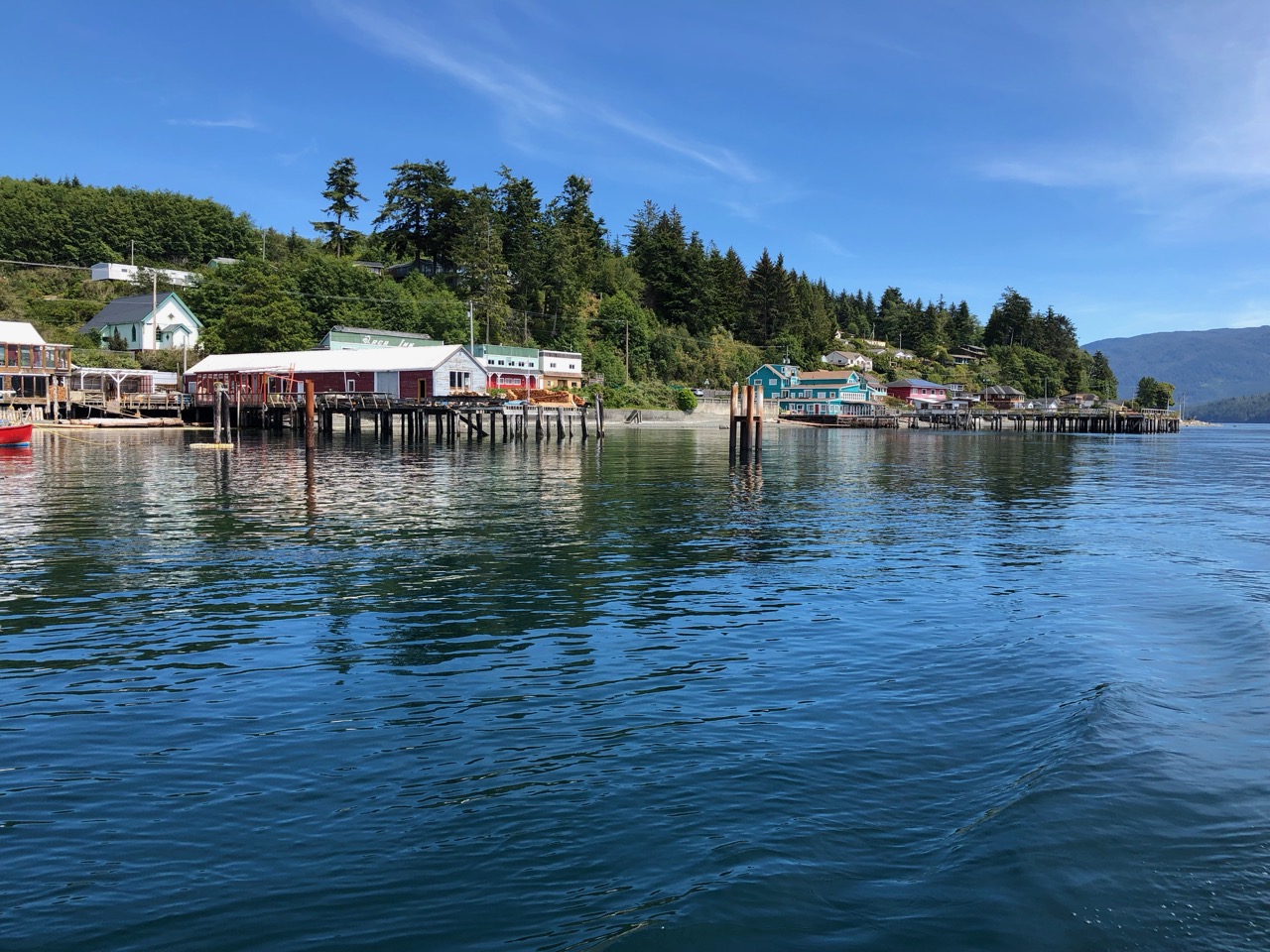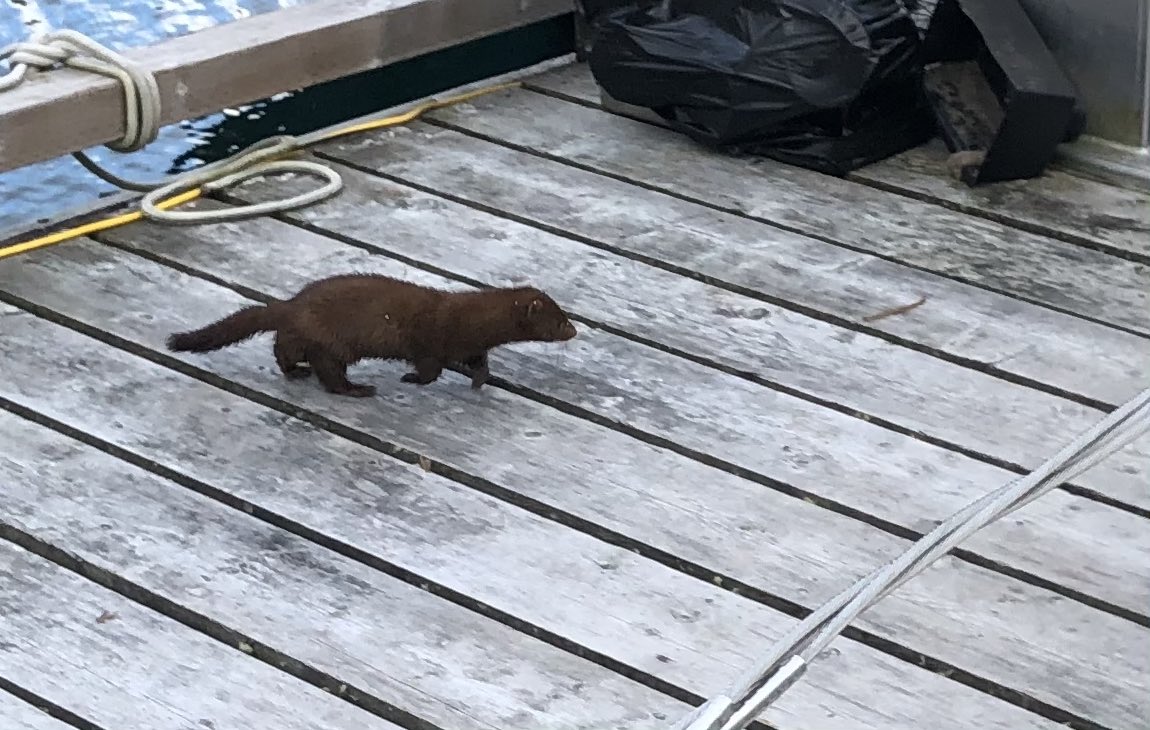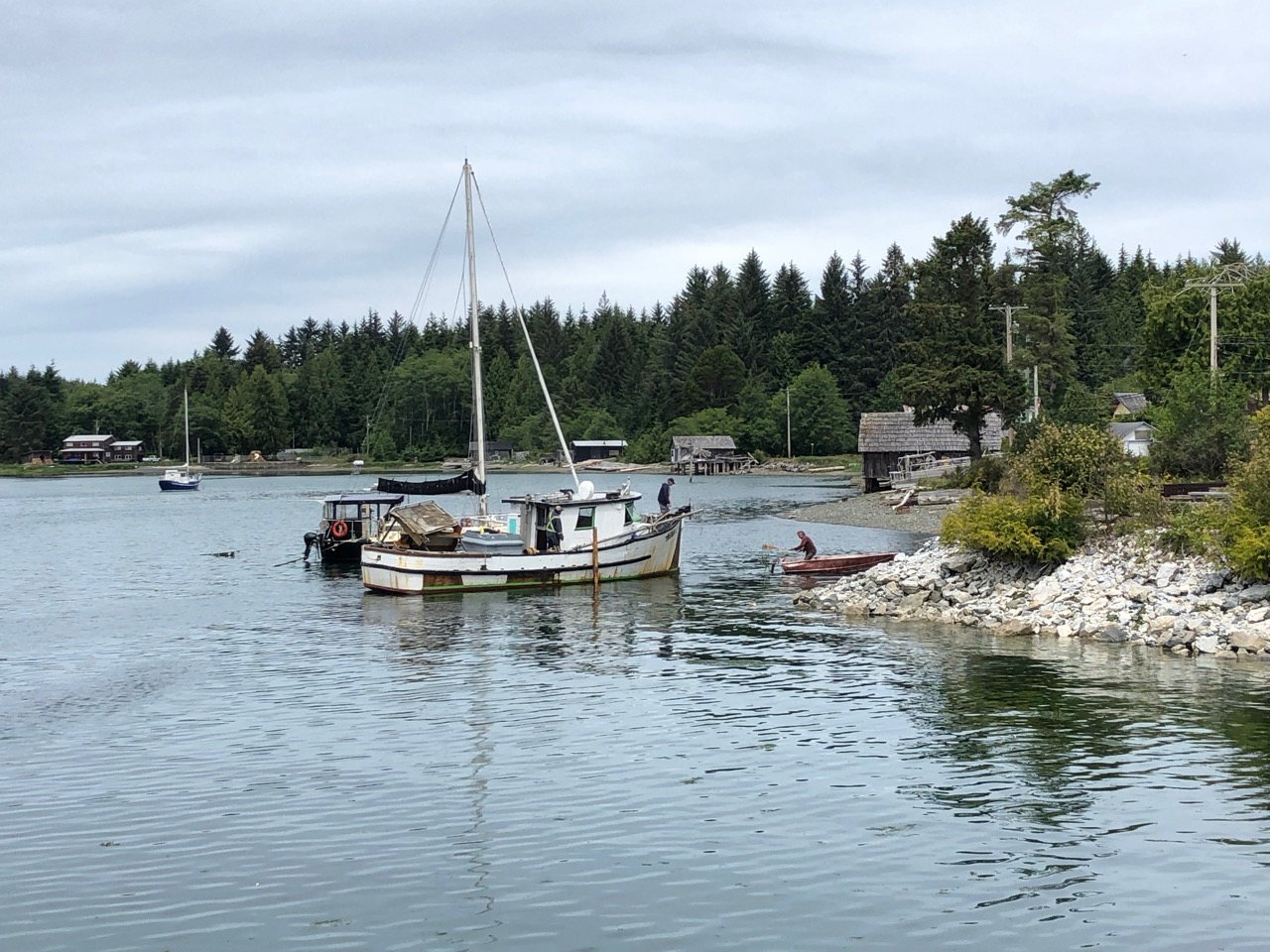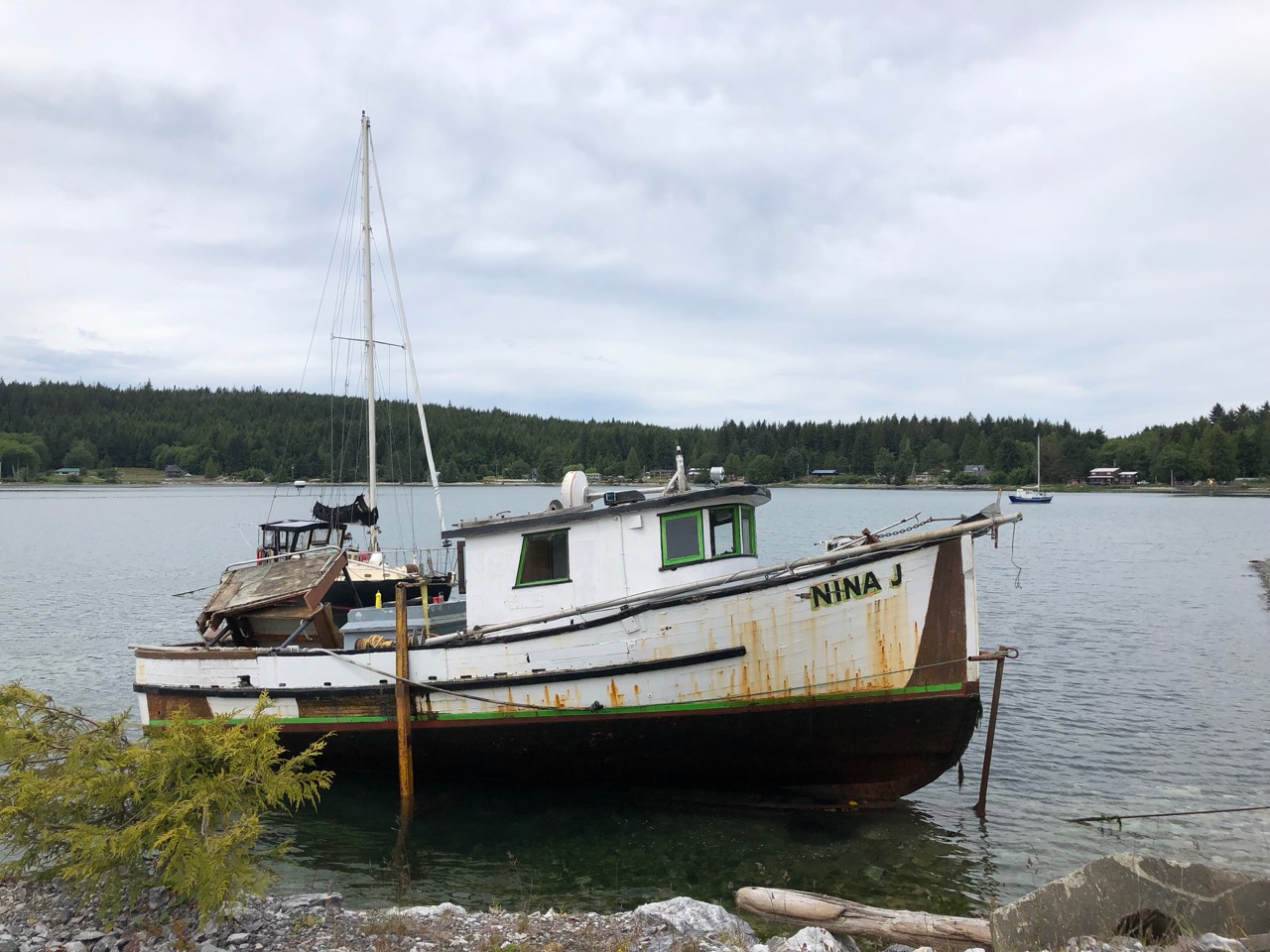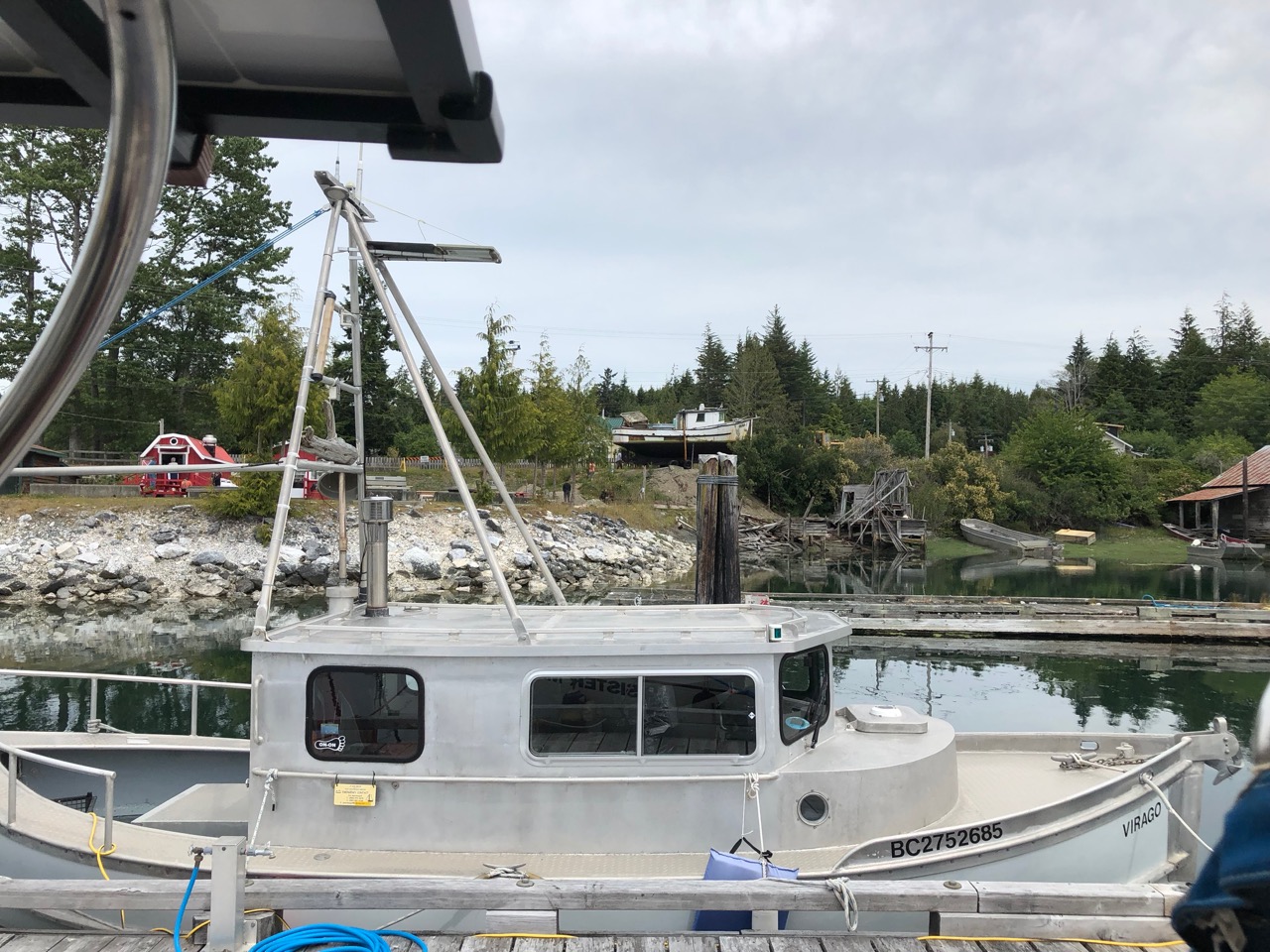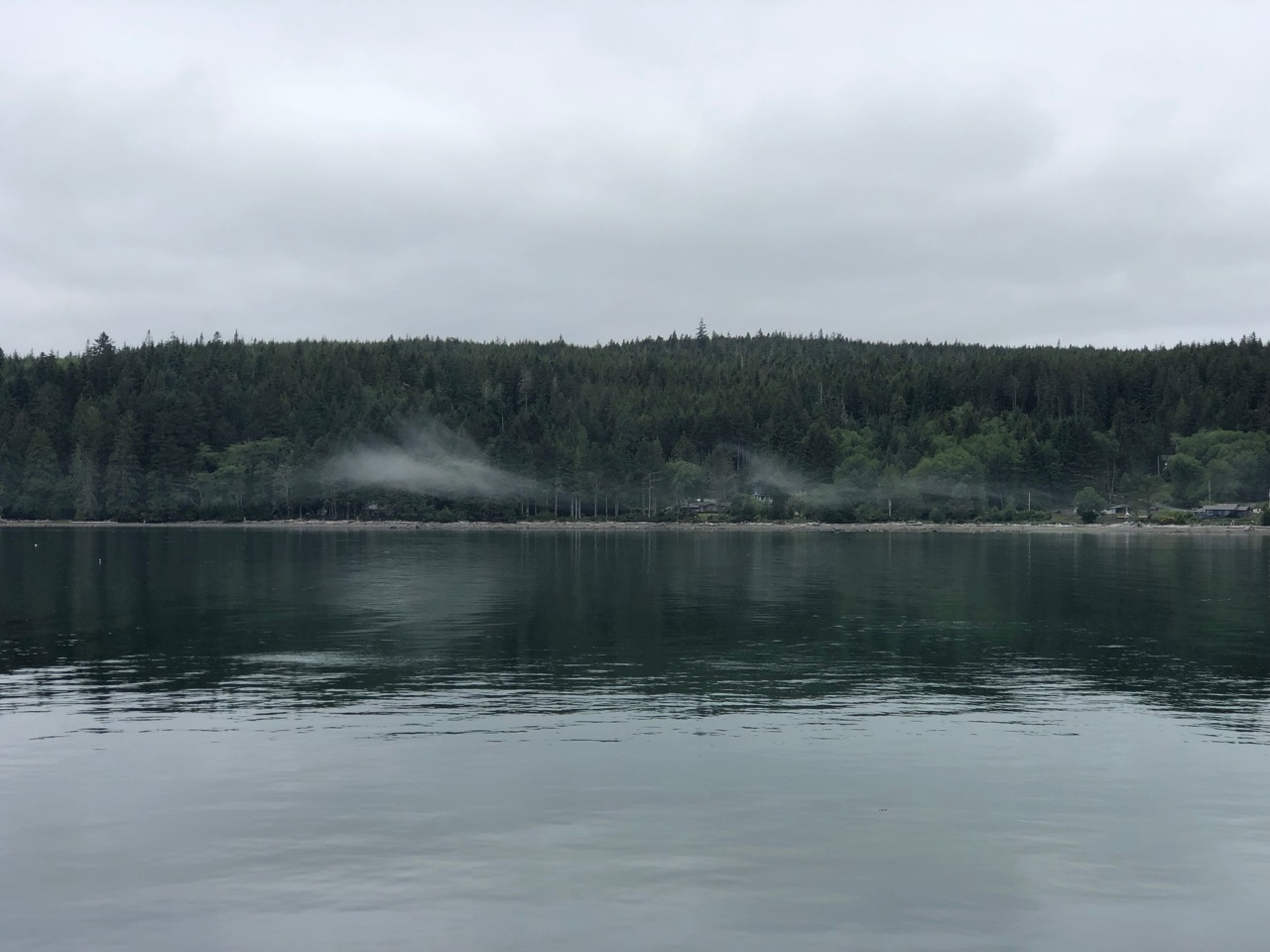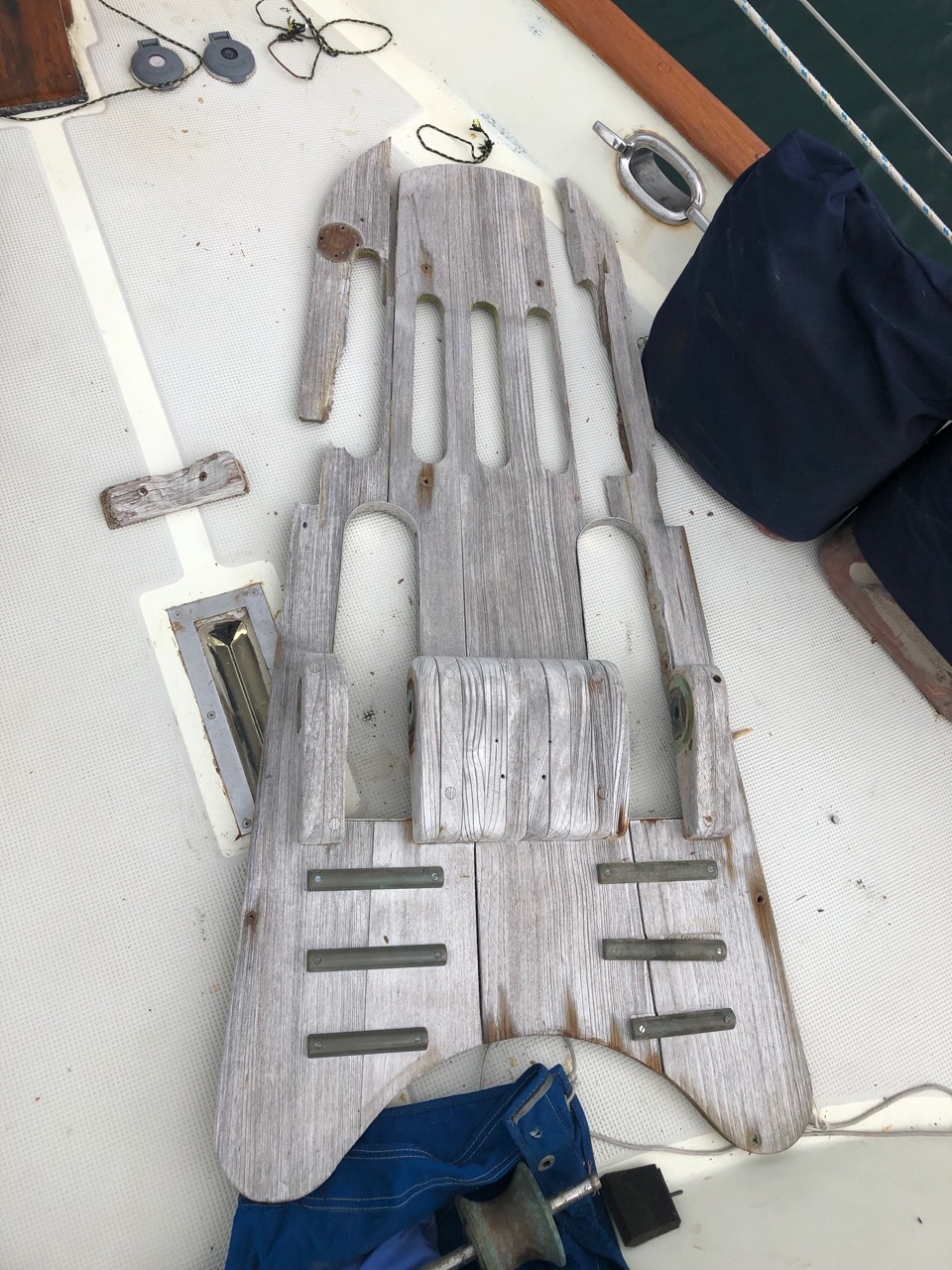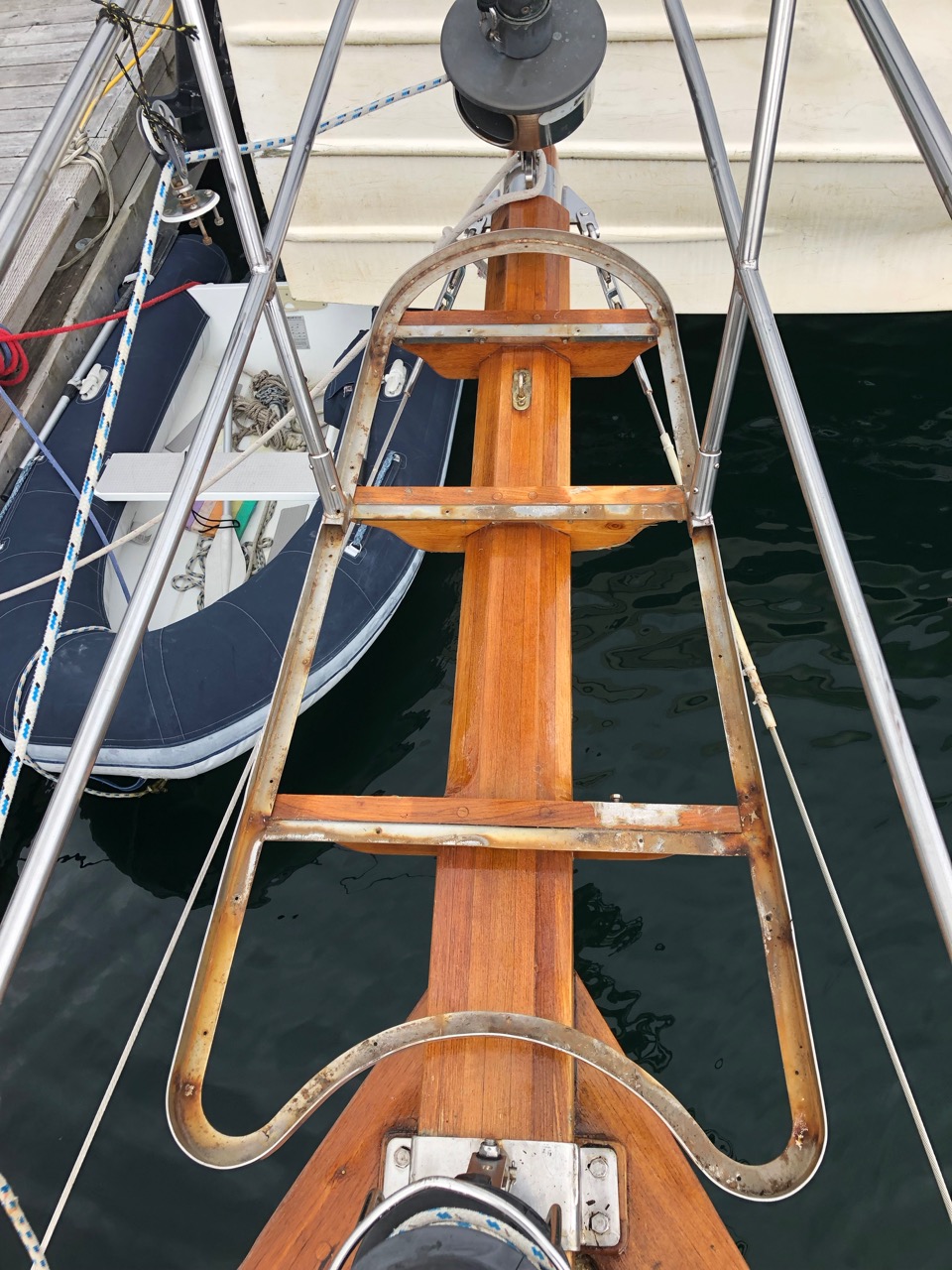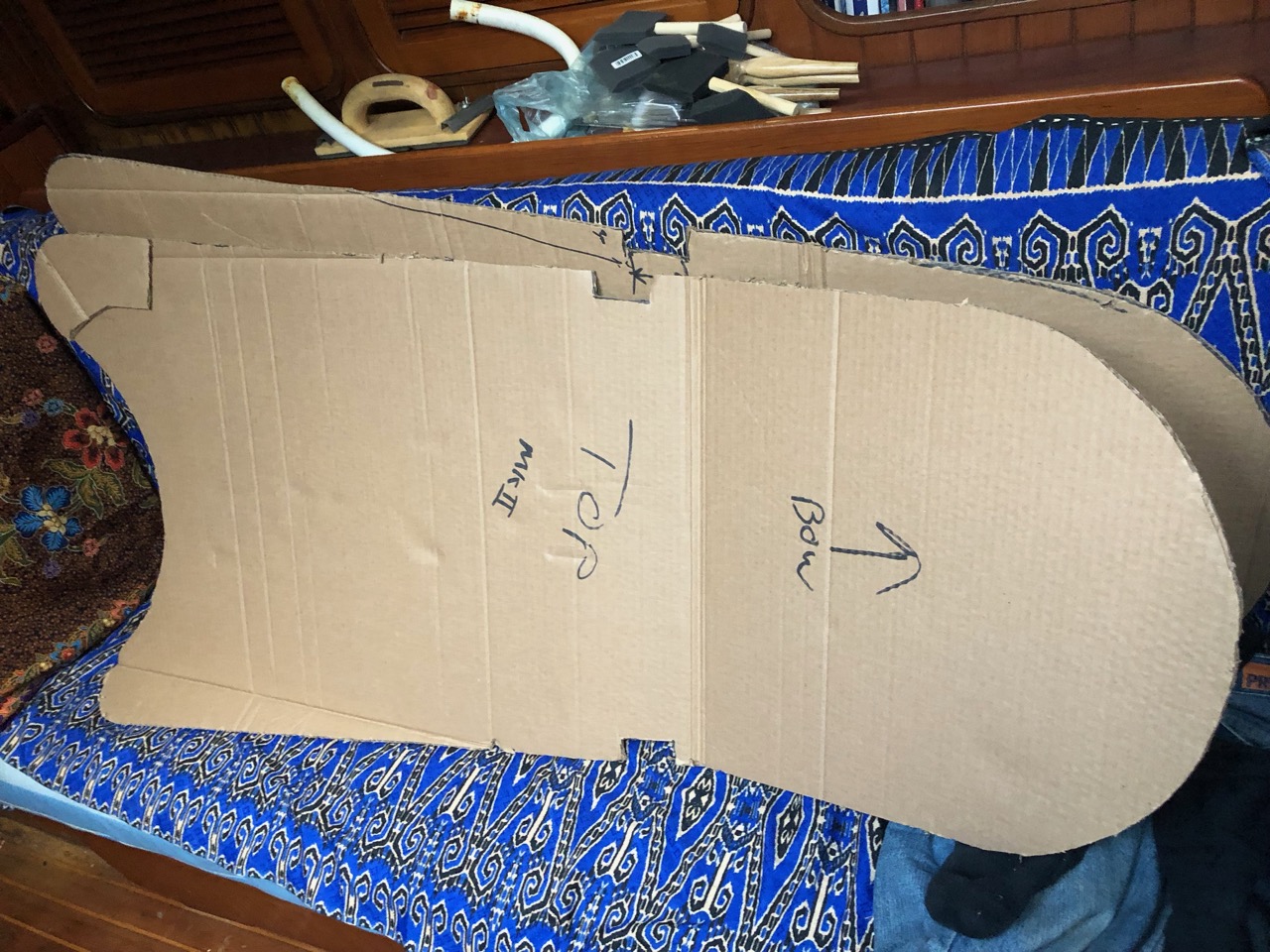Thursday 15th August
Walters Cove, Vancouver Is, West Coast
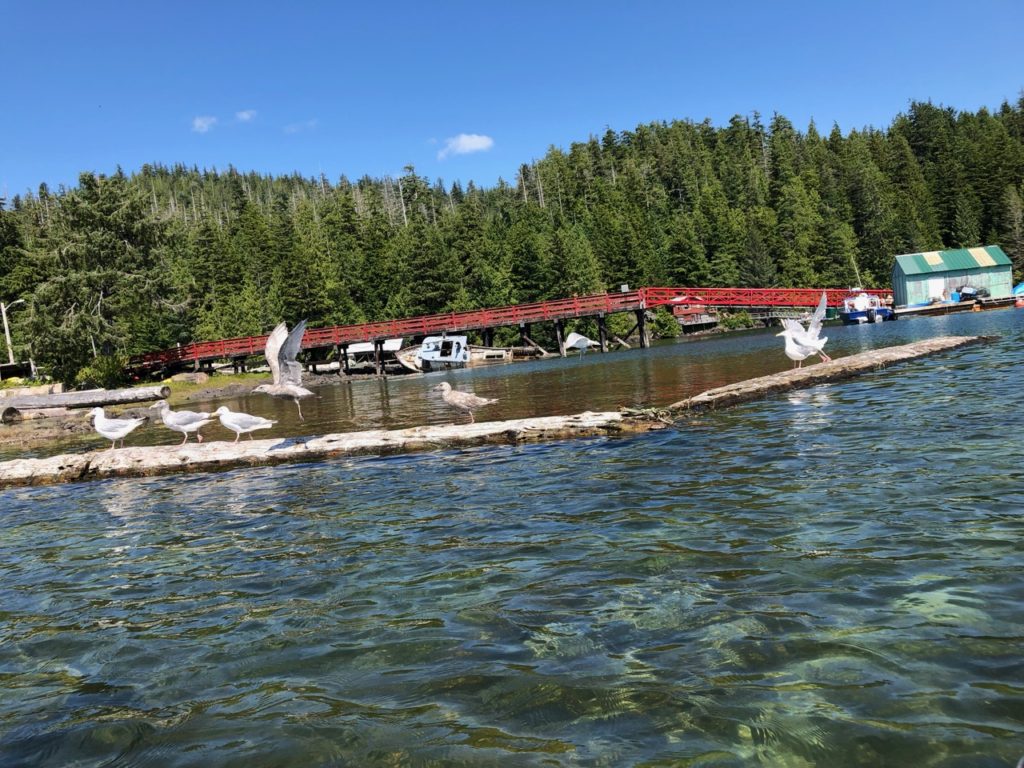
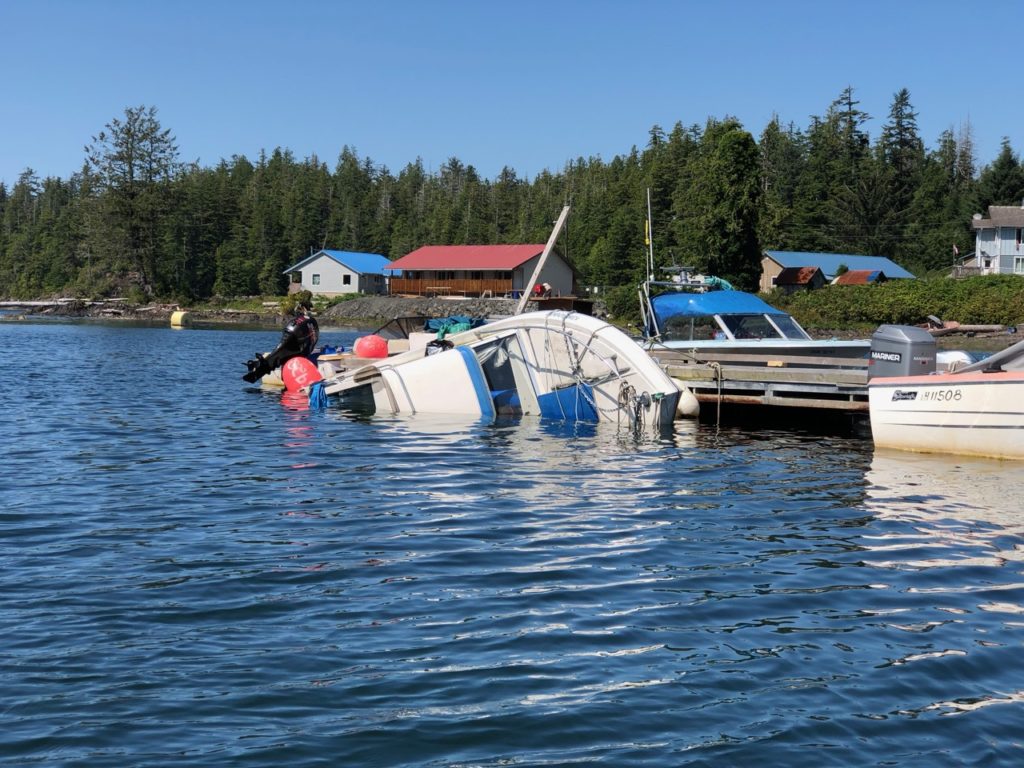
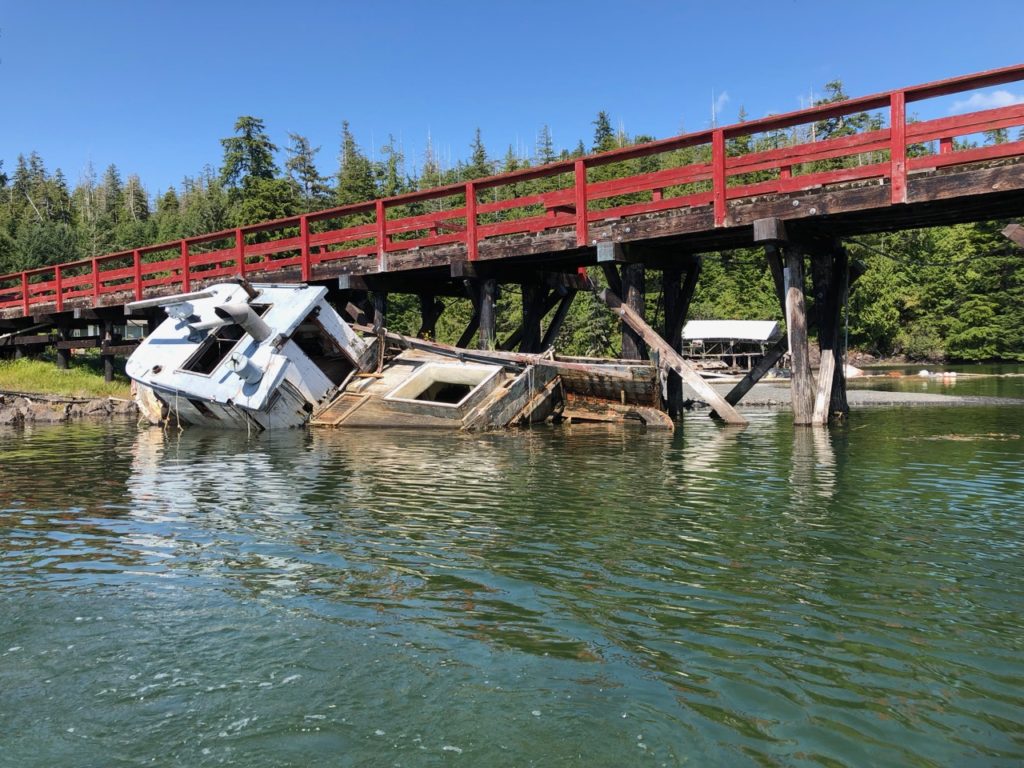
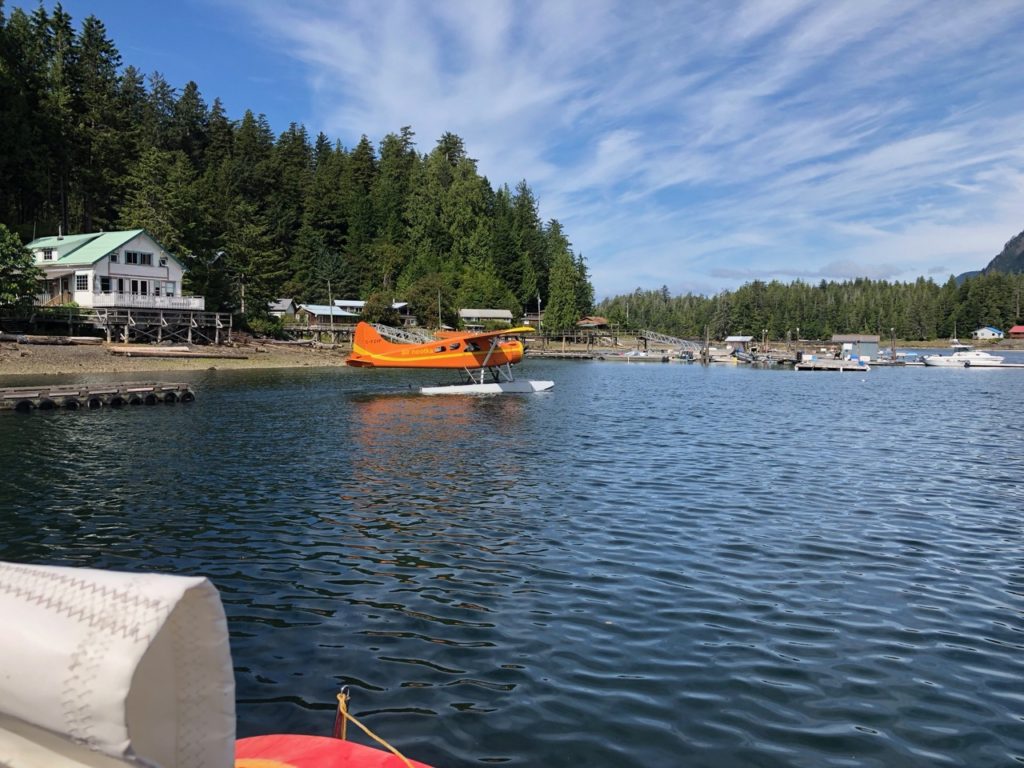
We went to the Cafe, ‘Java the Hut’ for some dinner early in Walters Cove, the reason being that the cafe closes early on a Thursday as the supply ship the Uchuck III arrives. The Uchuck is a converted minesweeper built in 1942 and is made from fir planking.
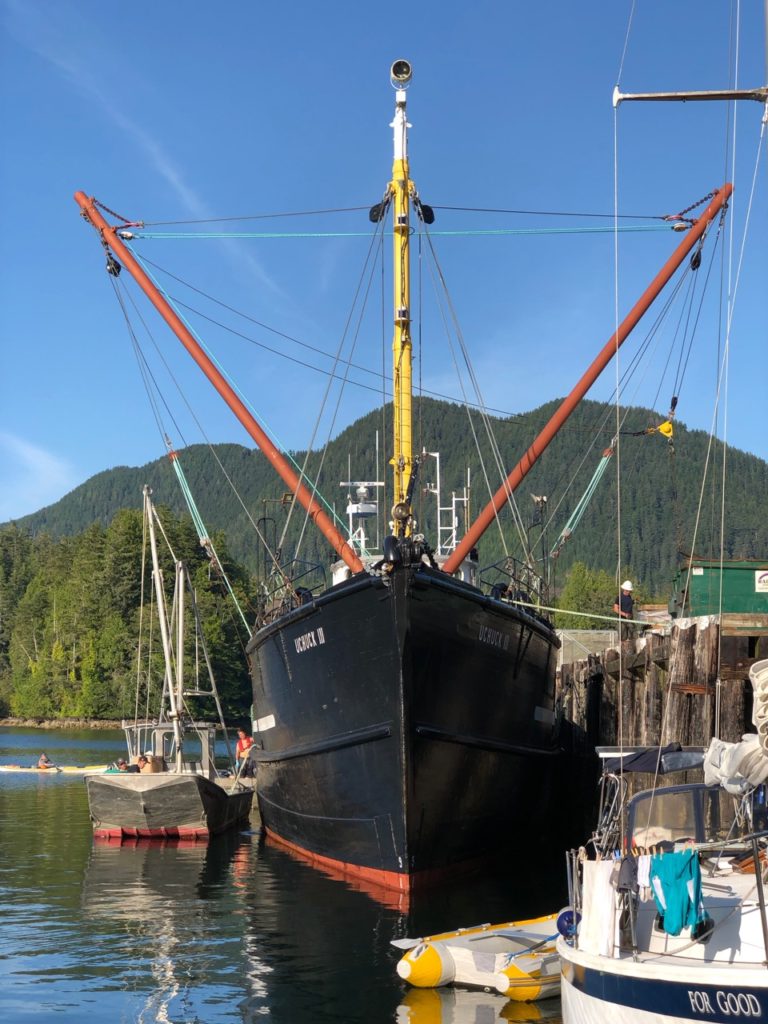
She now brings supplies and passengers to several of the remote coves and settlements along the west coast of the island. Passengers on board have to find accommodation ashore at each of its night stops and a few dozen people disembarked and were divided up amongst various locals who housed them for the night. Later they would all head to the ‘Java the Hut’ for their dinner, hence we had to be out early.
It was fascinating watching the kayakers being ‘Wet Launched’ from the ship as I caught in the videos below.
We also had great fun watching a couple of sea otters, one looked like he was getting ready for a night on the pull!
Friday 16th August
After watching the postman arrive we departed Walters Cove for Dixie Cove, it was fun navigating the many rocks on the way out, I tried to use the GPS to keep our position in between the rocks, but it wasn’t updating fast enough and I got quite confused. Once through we went to a cove within a cove, it was very quiet and peaceful, except for the distant sound of machinery coming from the logging operation on the other side of the hill. Just as soon as we had the hook dug in, a fast motor boat approached us to explain that they were blasting over the ridge, but that we were quite safe there, just not to be alarmed by the blast. About an hour later, poor Kathy nearly jumped out of her skin when the blast happened, it was huge! fortunately there was only one, they were blasting through rock for a new logging road.
Sat 17th August
We headed over to Rugged Point beach, had a very nice walk, saw bear prints and possibly cougar prints, it was great walking along with Robert & Vanessa as they could point out what the various footprints were. I was reminded of how much grief I gave my father as a 7 year old when buying shoes. I wouldn’t have anything that didn’t have a compass in the sole, or made animal prints, I never imagined I would one day be walking along a beach seeing these impressions for real. Later we found a sand dollar and saw a real black bear.
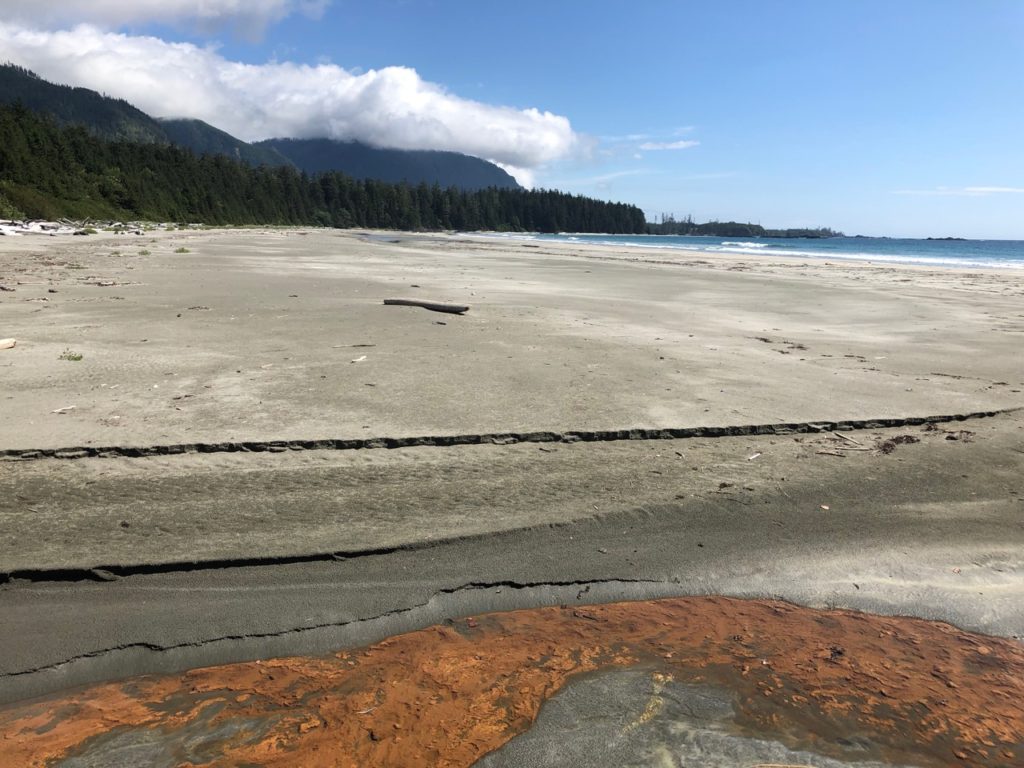
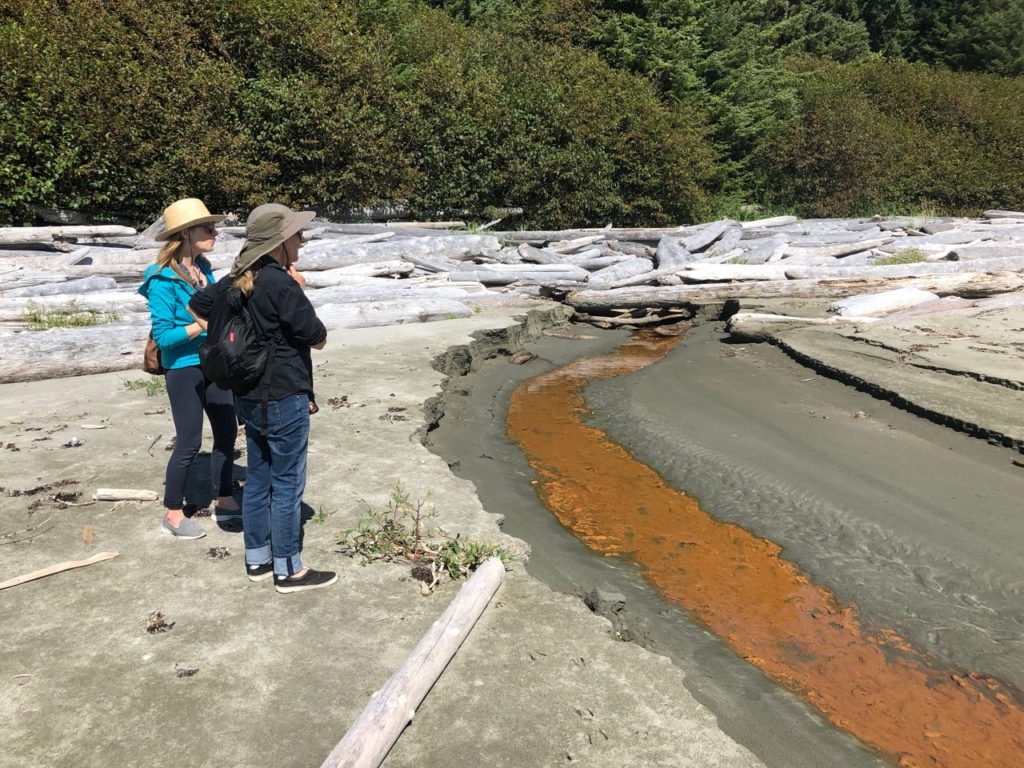
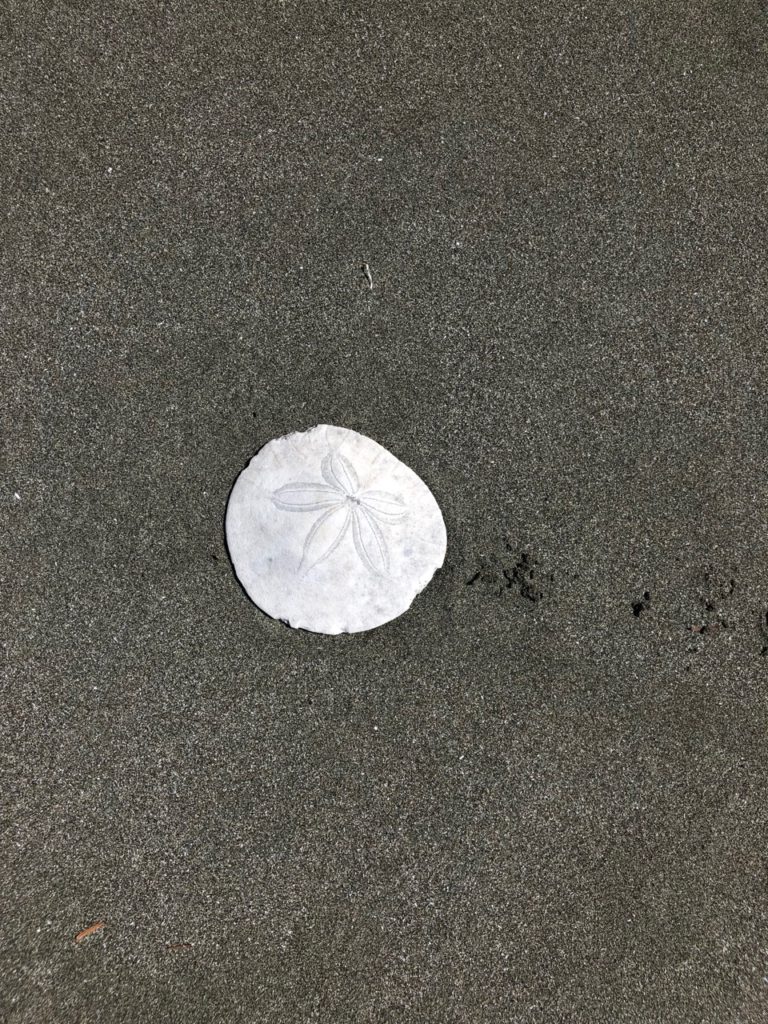
On Sunday 18th we headed over to Nulchitz, an abandoned First Nations village. There was little left of the village. Sailing into the various remote parts of the west coast has made me appreciate just how much of the coast was settled by the first nations and what a bad deal they got from the British invaders.
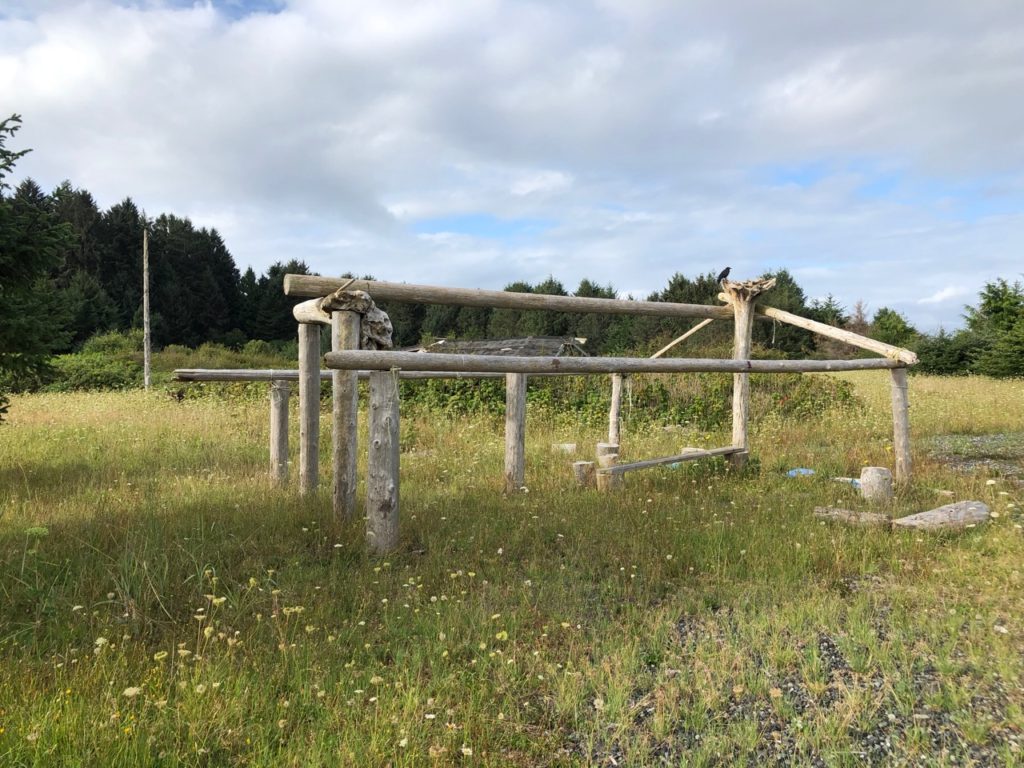
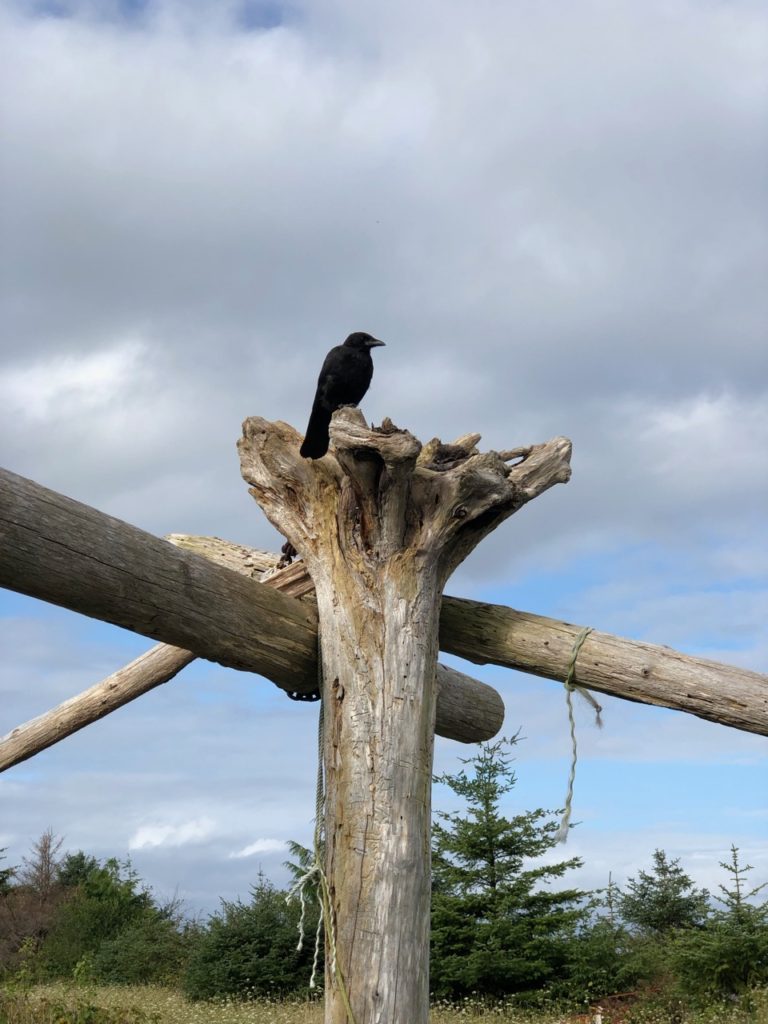
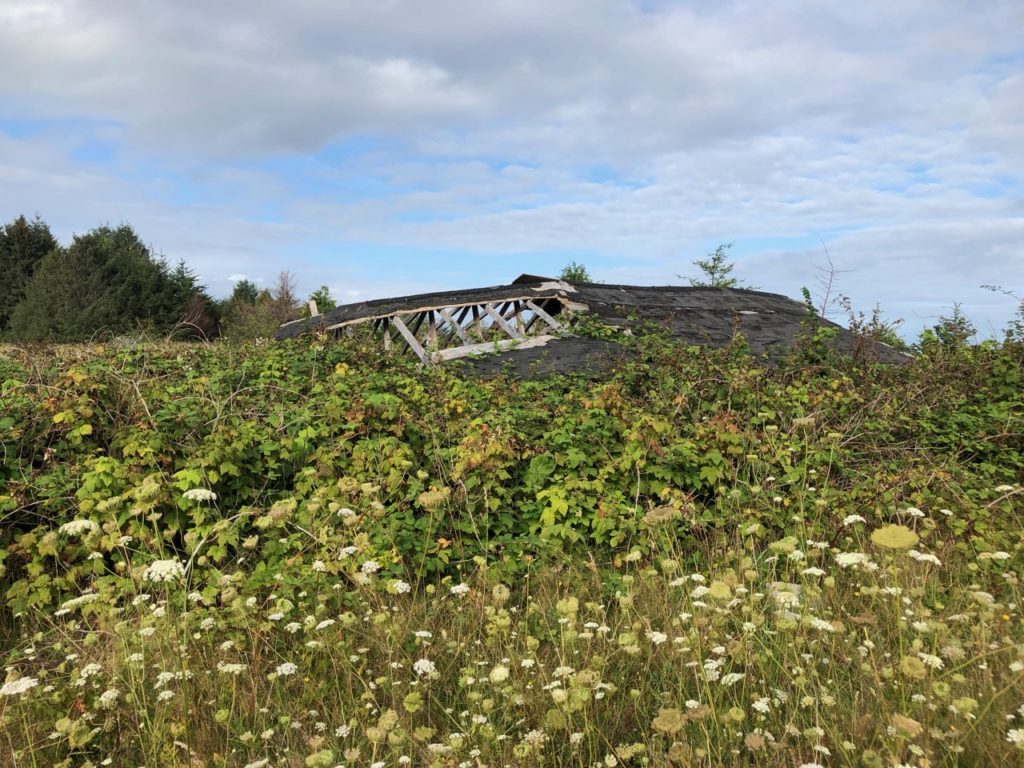
Later I walked across a shingle spit which connected to an island only accessible at low water.

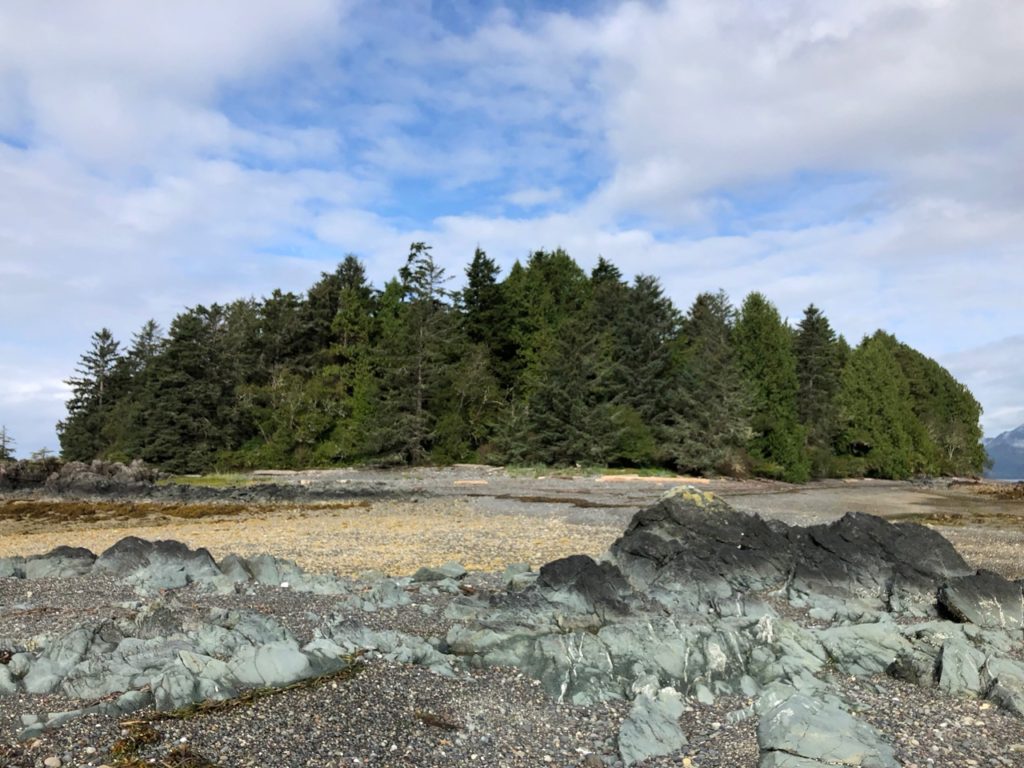
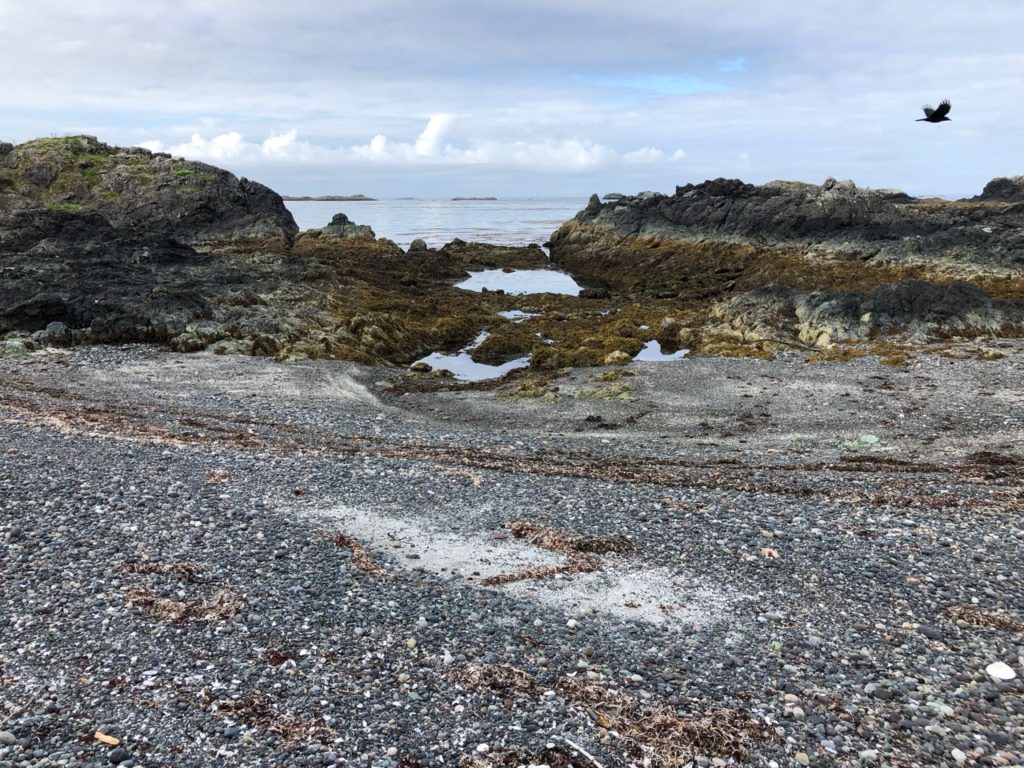
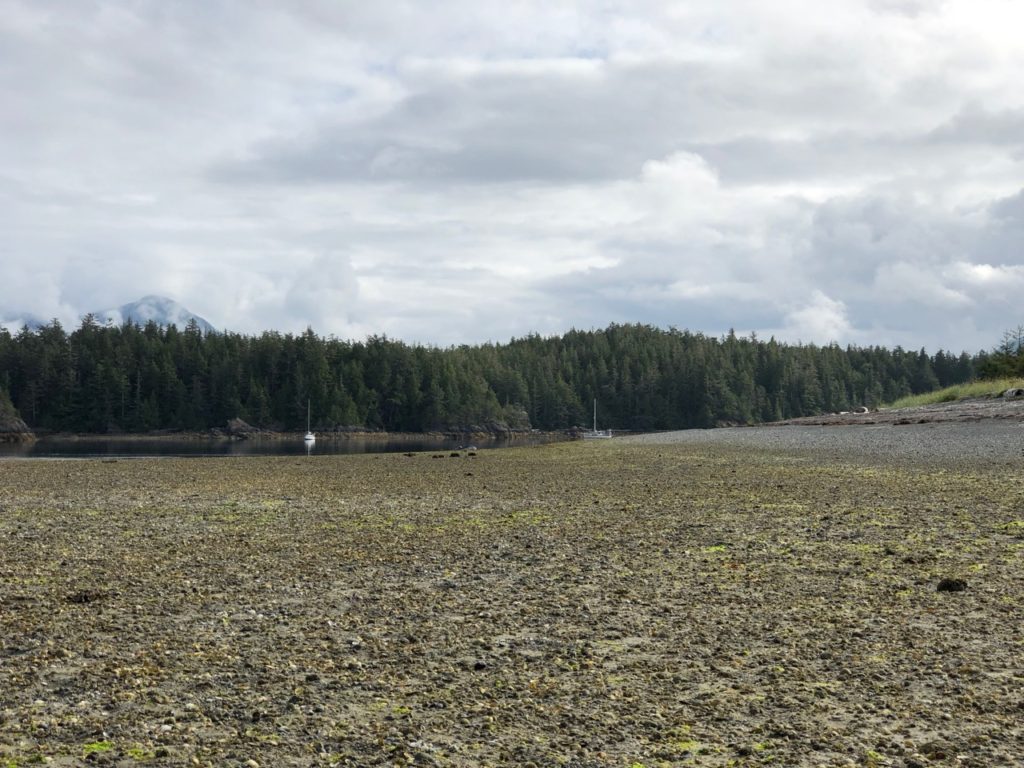
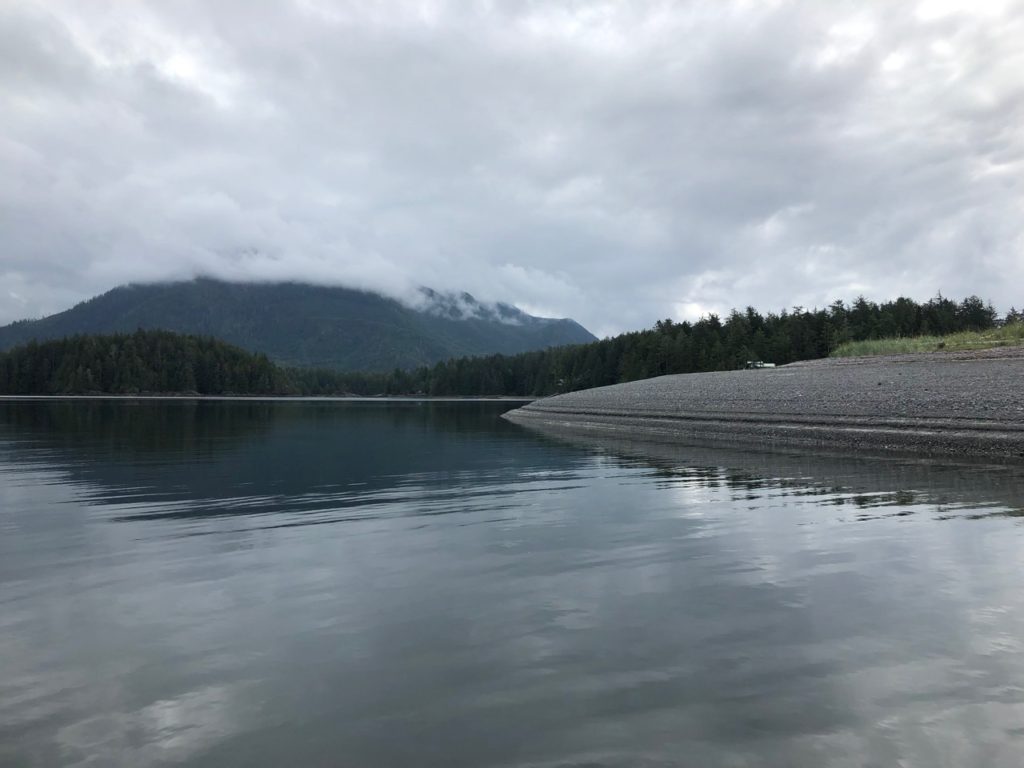
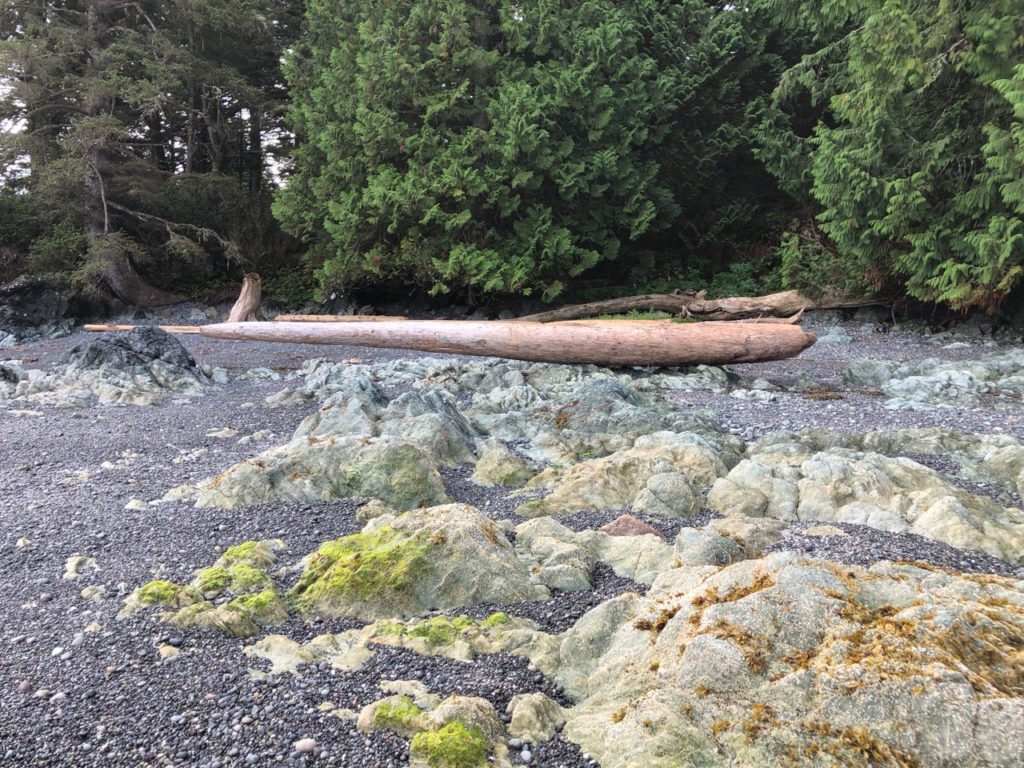
Mon 19th We motored to Tashis except for last hour where we managed to make 5 knots with the headsail out as we headed up the long inlet that leads to the old wood mill town of Tahsis. Once a thriving settlement with two big sawmills and a decent population, it is now rather sad with the mills closed down. The Westview marina has taken over as the centre of activity there. Waggoners guidebook to the area stated we would find a well stocked supermarket, a wine store, a bank/ATM, a cafe, cell phone service and internet. In reality there was poor wifi and no cellphone coverage. All the other delights were to be found in the one store. When I asked in the store for ‘No Alcohol beer’, the shop owner looked aghast and asked me to explain what I meant, when I did, he asked ‘why would anyone want that?’. The Marina mostly caters for Sports fishing and was rammed with little speedy fishing motorboats.
Back at the dock we enjoyed a nice dinner in the cafe, and I had a O’Douls non alcohol beer with it! (Obviously not sourced locally)
We watched them cleaning freshly caught fish at the gutting tables at the end of the cafe, and all the tourist fishermen stood proudly in front of their prize catches to be photographed.

Earlier Kathy had jumped into the sea to get some of the fish heads and guts floating around. It would have been better if she had left her handbag ashore but it seemed to be an impromptu event she hadn’t thought through fully. We all rushed to her aid and pulled her out back onto the dock. There’s a slim chance her mobile phone may have survived as her handbag seemed quite waterproof.
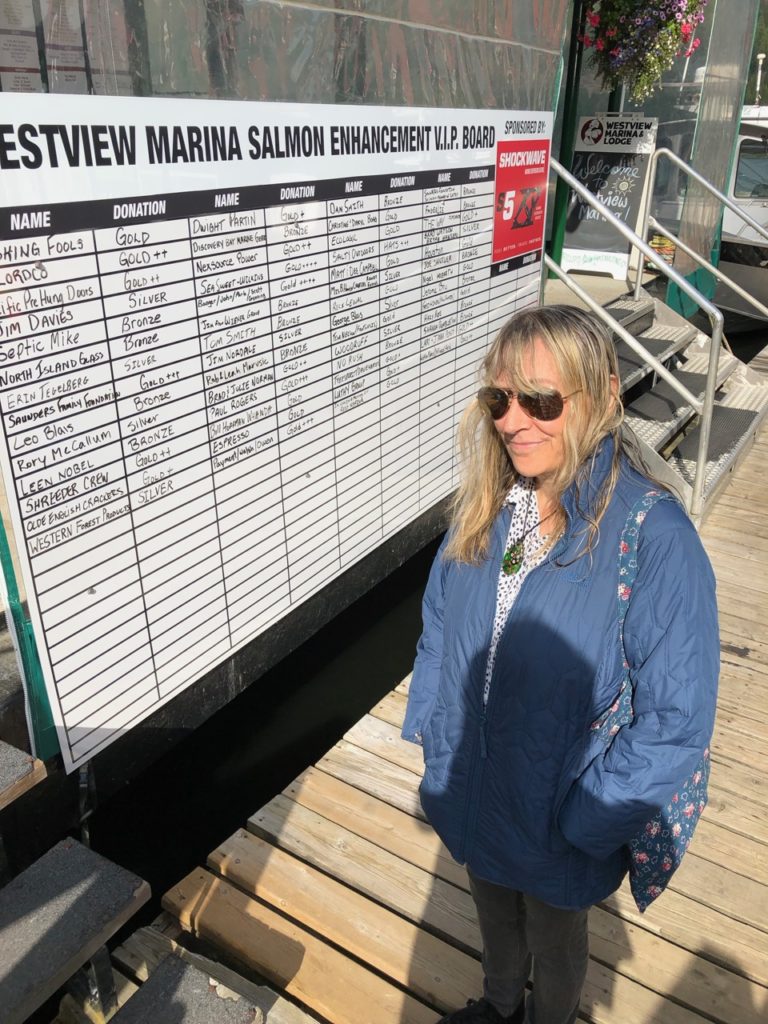
Tue 20th Bligh Island Ewin inlet
Left for Bligh Island in a building wind, eventually we saw up to 30 knots of wind, we also spotted a bear on the passage.
Spent the evening on Sister Midnight chatting with Rob & Vanessa. They were a bit surprised how big the seas had been crossing over to the island, I was surprised at how many rocks we had to navigate around to get into the inlet, I was reminded of cycling around cones as we did in our cycling proficiency test at school.
This is the area where captain cook re-masted his ship Resolution and just around the corner in Friendly Cove, Captain Vancouver tried to negotiate the ownership of Vancouver Island with the Spanish, failing at first, and almost bringing Britain and Spain into a war with each other. In the end, Britain gained total control.
Wed 21st August
Meet up with Kevin & Karla on Gargoyle, they have a Benateu Oceanis 50, very nice and are heading down to the sea of Cortez like ourselves.
Later meet up with another nice chappie on his Bristol Channel cutter, a classy looking sailboat, a bit like a baba but with a flat transom, but more traditional looking. He had tried to leave for Hot Spring Cove but his engine was playing up, so he sailed back and anchored near us under sail.
Thur 22nd
We depart for Hot Spring Cove, seas build as we pass out of the inlet and towards Estevan point, at one point the swell & waves are around 2 metres with the odd big wave of 3 meters or more roaring in, as we turn to head south towards our destination we are taking the waves on our beam/quarter. We have been travelling with Robert & Vanessa for a few days now and hopefully they will join us for the trip down to Mexico.
Sadly on ‘For Good’ they are having trouble with their sails and decide to motor sail the rest of the way, another 4 hours or so. Robert calls me on the VHF to say he has engine problems, he isn’t getting any sea water flowing through the engine to cool it. He wants to head for shore but I suggest he just sails the remainder of the route and if needed later I will tow him into the anchorage. Poor Robert and Vanessa are getting thrown around a bit in their boat and their speed is down to about 4 knots as they are having trouble keeping the sail full with all the wave motion. This is by far the worst conditions they have experienced to date. The wind is only about 10-15 knots, from behind, but they struggle with the main blocking the headsail and without safety lines to go forward on the boat they stay in the cockpit. I turn Sister Midnight around and head back to them as they have dropped back by 1/4 mile now. We are going head into the wind and waves, our bow is crashing down onto the waves. I’m pleased to see the new cedar bow platform is taking the waves fine. We reach them in about 15 minutes and I turn and follow them closely for a while. The wind backs slightly and I can see they change course slightly to keep the mainsail filled, however they won’t make the entrance to the cove on that course and will need to gybe both sails before we get there. I suggest we round up into the wind a bit and reach into Hesquiat Bay, which is well protected given the NW light winds, and has a bar (shallow sandbank at the entrance) that keeps the swell out. This bay is massive and around 9m deep throughout so they can drop the hook anywhere without risk. As we approach the entrance the wind moves closer to our bow so we haul in the sails, Robert hasn’t adjusted his sails so they flap a lot and he drops to 3-4 knots, I roll up 50% of my headsail so I don’t get too far ahead. Within an hour we are over the bar and drop the hook in a very settled area.
I had checked that Robert was ok to anchor under sail on the VHF radio, and he was happy. It was then that I realised I had never anchored this boat under sail alone, and as it was calm, in a big empty bay, I decided I would do the same too. I rolled up the headsail and asked Kathy to steer into the wind, she thought this was so I could drop the mainsail and was a bit freaked out to hear the anchor chain running out. I was also a bit freaked out as a small squall came through just as I let out 30 mtrs of chain, the bow blew down, the main filled and we took off at some speed. I legged it back to the cockpit, let out the main a bit, ran to the mast and dropped the mainsail rather quickly, then back to the bow to continue with the anchoring.
Fri 23rd
Robert gets engine going, but it’s too late to leave, they are still resting after their rough ride here.
I dinghy into Rae Basin, an even safer spot at the head of the bay, a river flows into here and some impressive trees lie there. I hadn’t realised but it’s a very short walk to the huge Hesquiat lake that lies at the head of the river.
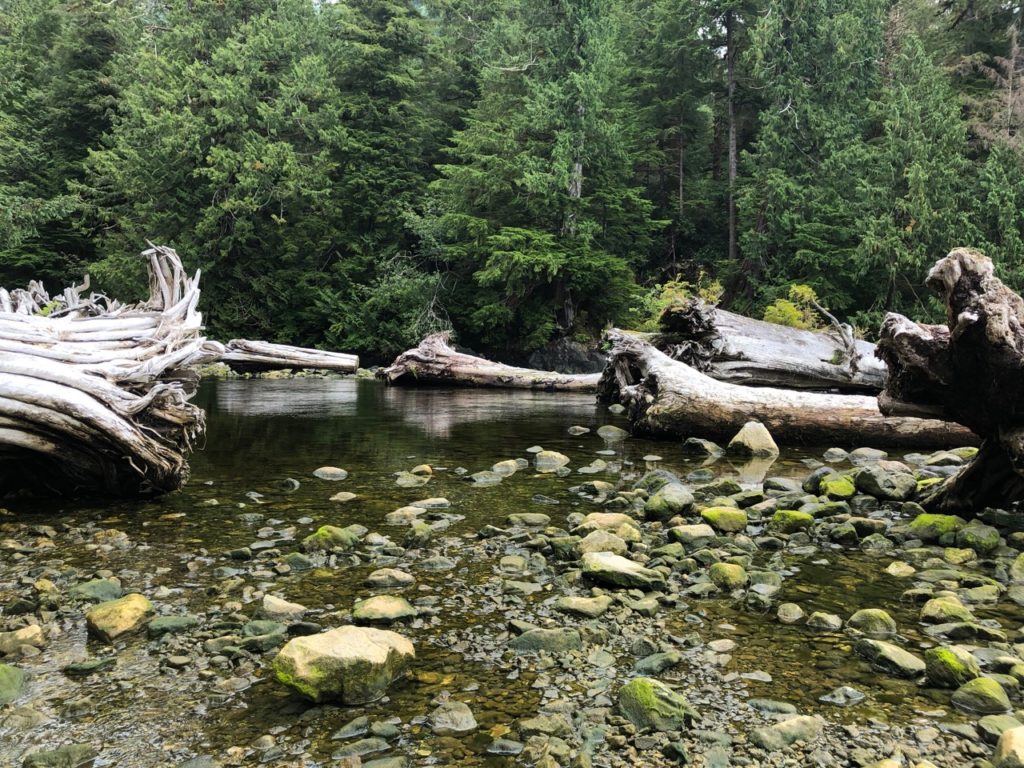
Sat 24th
Depart Hesquiat Bay for Hot springs Cove.
Nice motor, no wind, swell building
Forecast has swell dropping from 2-3m to 2m by Sunday but wind rising to NW 30, so now seems best
It takes just 3 hours before we are happily anchored in Hot Spring Cove
We head off to the springs, the custodians of the springs have built a wonderful walkway through the forest, it runs for 2km and there had been a tradition for visitors, mostly yachties to leave a plank with their boat name carved into it.
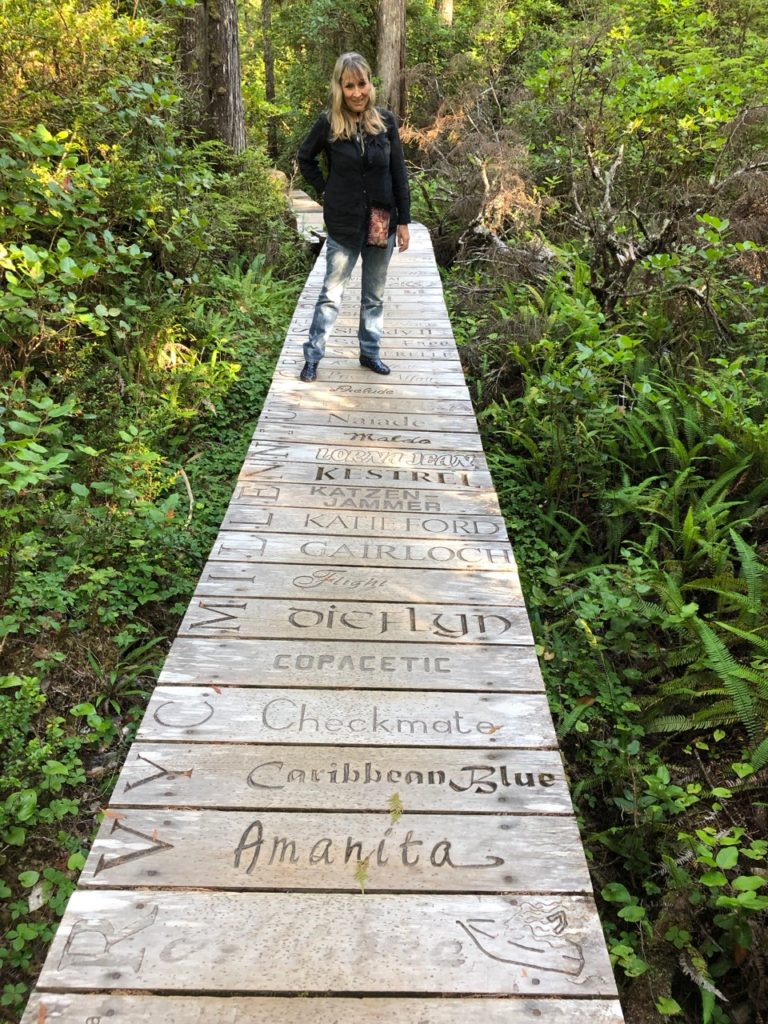
Once at the springs I spent a long time sitting in the hot water which gushed down the hillside then out into the Pacific Ocean. It was so relaxing sitting under a hot waterfall being pummelled by the water falling, just like a jacuzzi. However it might have saved a bit of time if I hadn’t gone in with my fancy sunglasses on, I became very intimate with all the various pools between me and the ocean before I found them. Kathy reviewed the pictures she had taken of me to determine when I had lost them and on searching that pool they turned up, Phew.
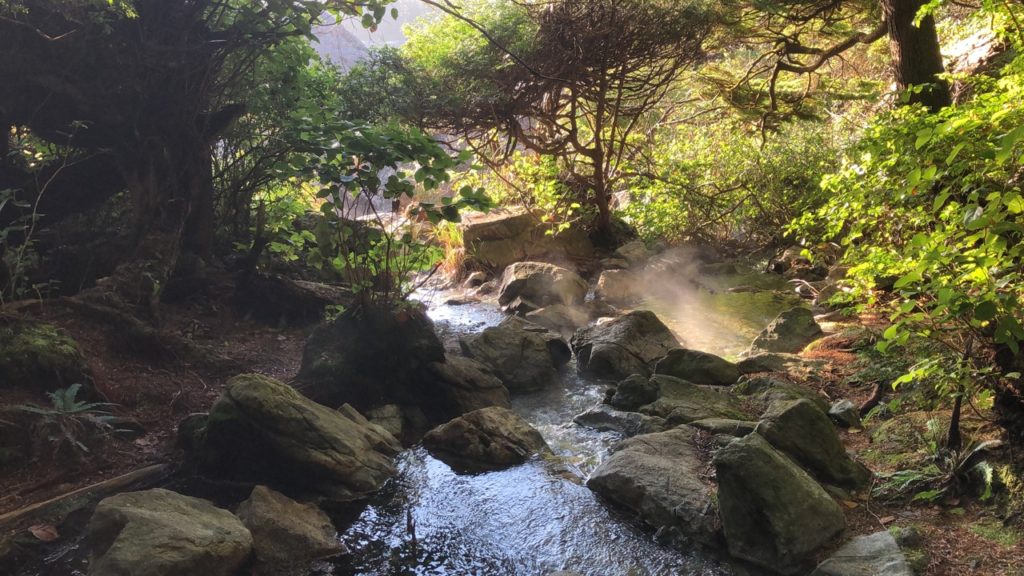
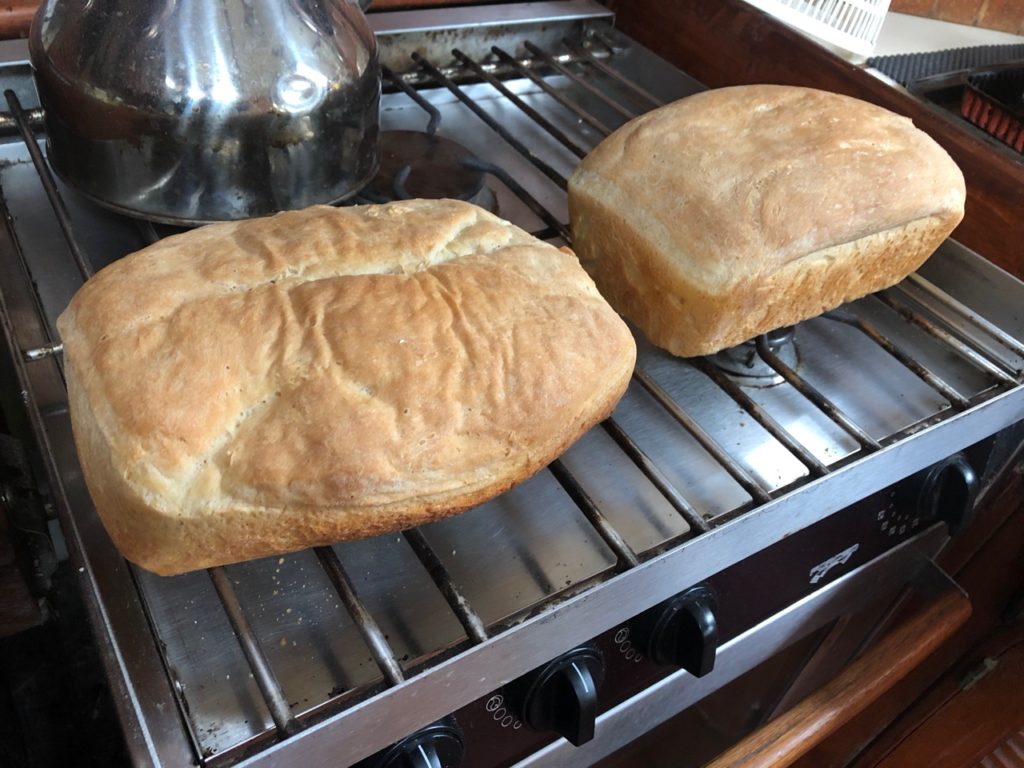
From the Hot springs we took the inside route around Flores island and stopped in a lovely spot at the head of the Bacchante inlet. Here we spotted another big black bear prowling along the beach.
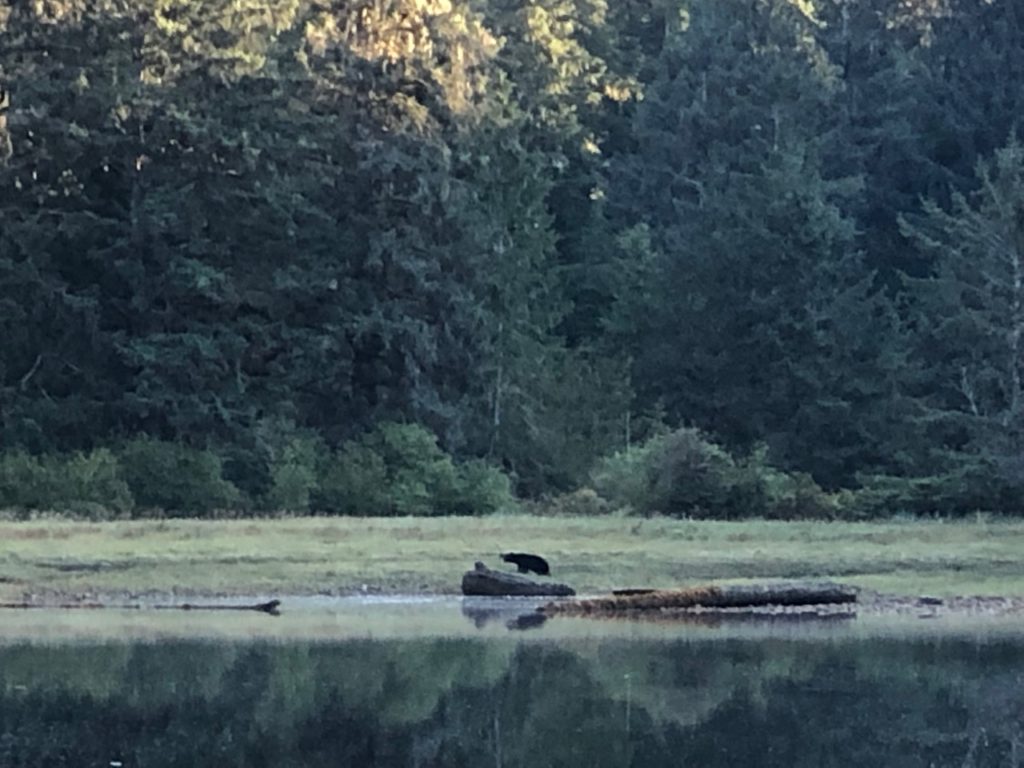
Bacchante was beautiful and we could easily have stopped there for several days, but Kathy was worried about not having had any wifi/cellular connections for a while, and we were running low on chocolate, so we headed off to the fleshpots of Tofino.
Vanessa had called ahead and found there was room for two boats to raft at the hammerhead of the end pontoon. They rafted to us, a first for them, of course rafting, or ‘parking alongside’ is easy to do when the weather is fine and currents aren’t an issue, however when you have never done this before, I can remember, it’s quite a scary thing. As it turned out, Robert brought his boat alongside us perfectly and we were soon all sitting in the cockpit having a good natter.

After 2 days paying to be bounced around at the end of the pontoon by the constant stream of day tripper and whale watching boats we headed out to anchor. Currents run fast here, and a healthy sprinkling of rocks and shallows causes quite a few rapids and whirlpools. After a few hours, Robert & Vanessa decided to head off to God’s Pocket, a quiet cove just an hour or so to the north. We left them to it as the whirlpools, and planes taking off over us didn’t bother us much, we also had a lot of internet stuff to catch up with.
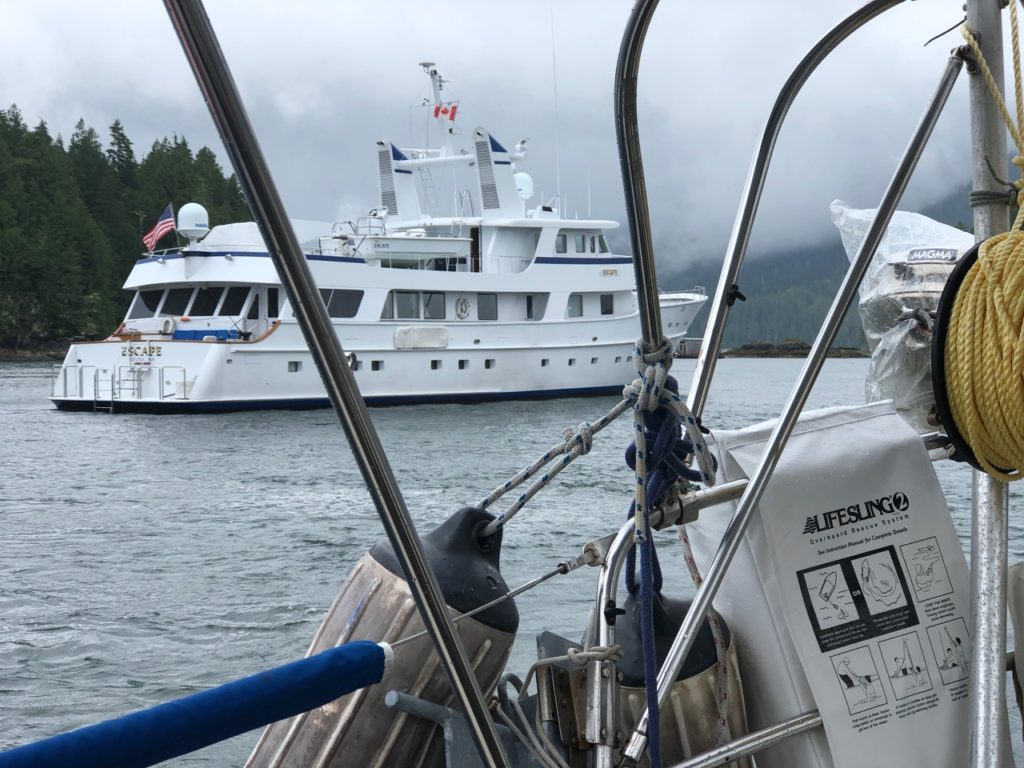
Tofino is a lovely holiday resort town, it has a long beach famous with surfers, and it’s a bit of a young surfer kind of place, however I enjoyed the art galleries there and Kathy was made up to have a modern well stocked supermarket.
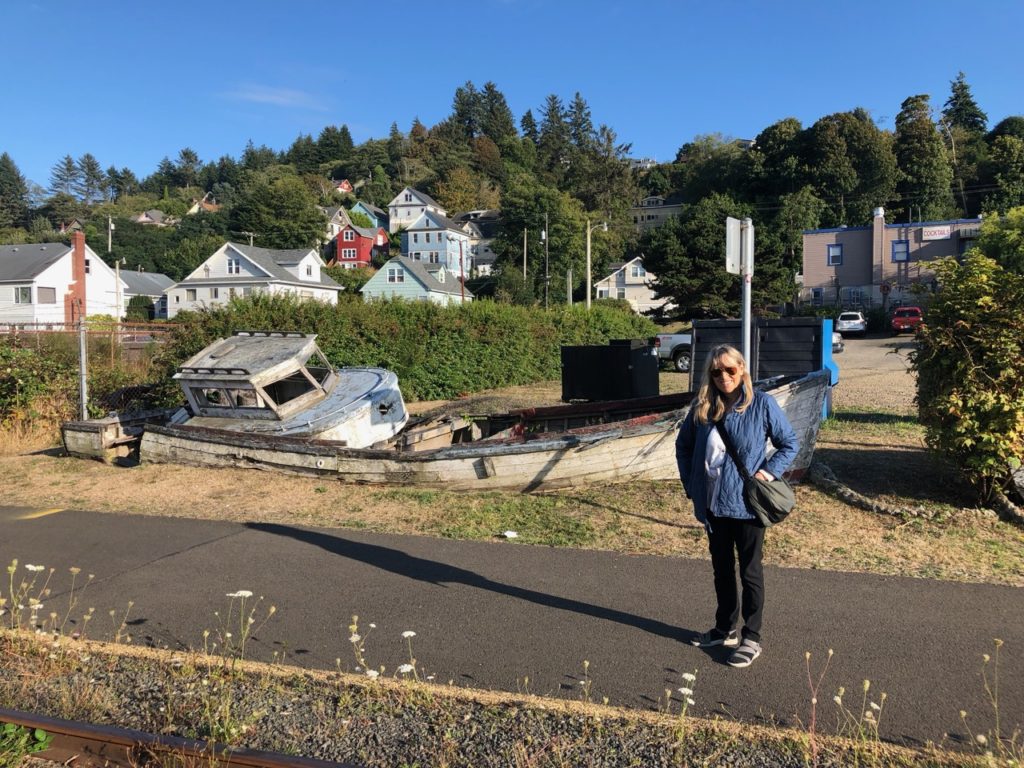
After a few days we headed up to meet Robert and Vanessa in God’s pocket. another peaceful spot, we dinghied over to them and watched footage of movies Robert has made in the past and picked up videos and photos they had taken of us.
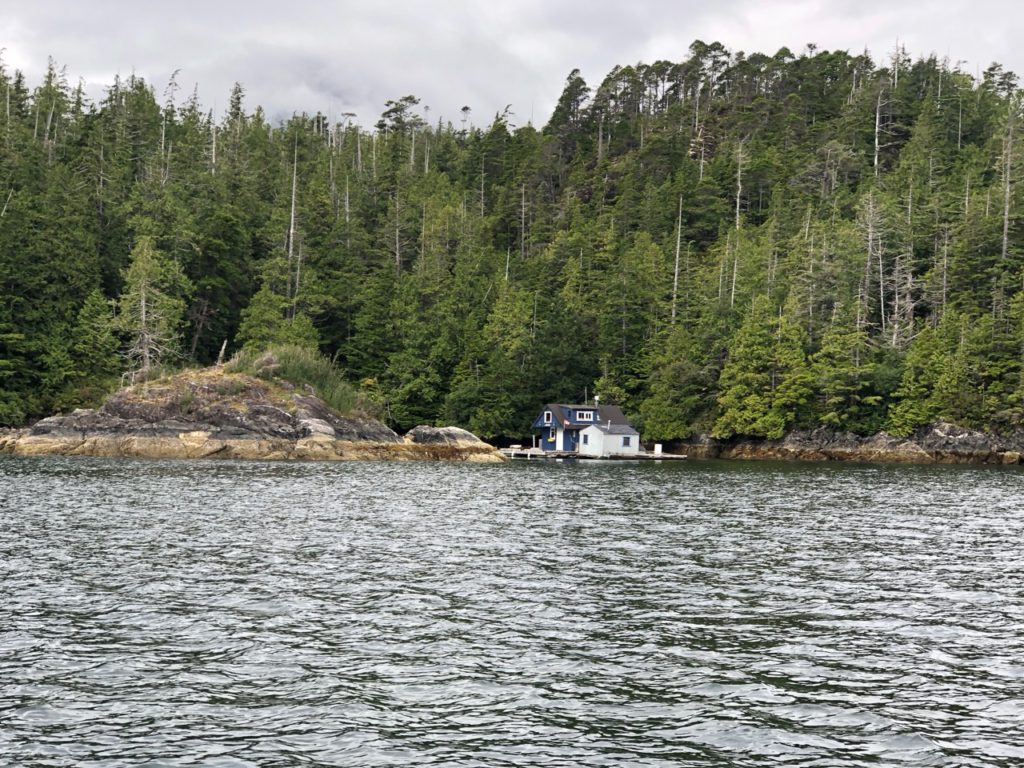
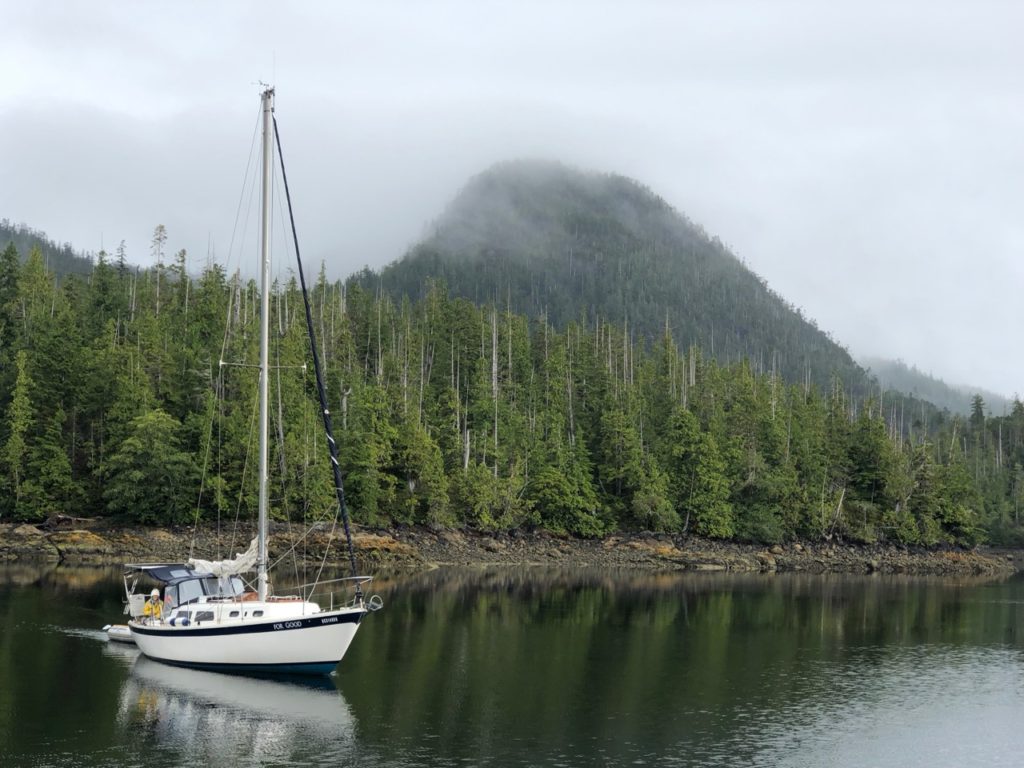
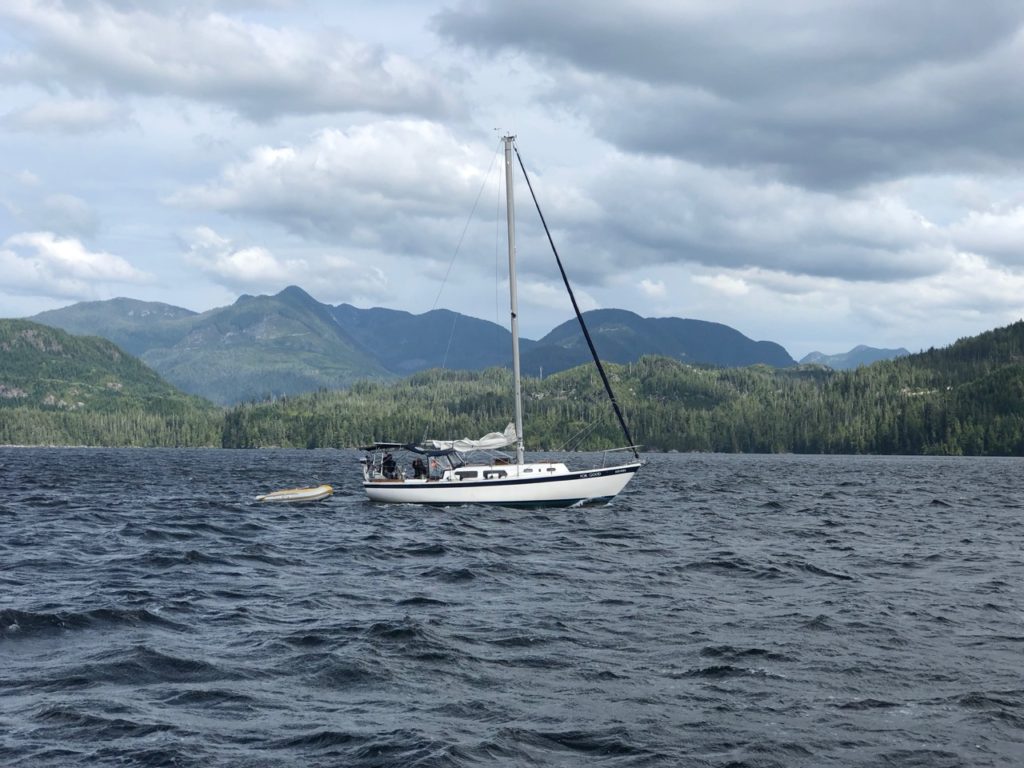
Sunday 1st September. We said our farewells, Robert & Vanessa had decided that they were going to postpone their trip to the Sea of Cortez, and would hopefully try to make it in 2020. We really hope we can meet up with them next year.
They headed off to Ucluelet and we waited a few hours before we went back to Tofino to get a few supplies before we left for the USA. Our plan had always been to leave at the end of August, and the weather was now good, also Monday is Labor Day, a Public holiday in Canada and the USA, so being at sea all day suited us, we would arrive in Astoria on Monday. The plan was to leave Tofino at 22:00 in the dark in order to arrive at the Columbia river entrance around midday on Tuesday when the tide would be flooding and we could safely cross the bar. A bar is a big sandbank at the entrance to a river that can create dangerous conditions if the currents flow a certain way and the ocean swell opposes it.
Until 22:00 we had a few hours to kill so we wandered around town, after picking up some supplies in the co-op.
We had some fun watching three racoons stage a break in at a fish processing plant, they seemed to be working as a well co-ordinated team, with one keeping a lookout while the others climbed in through a hole they had found in the wall. I presume the building had a lot of salmon in it.
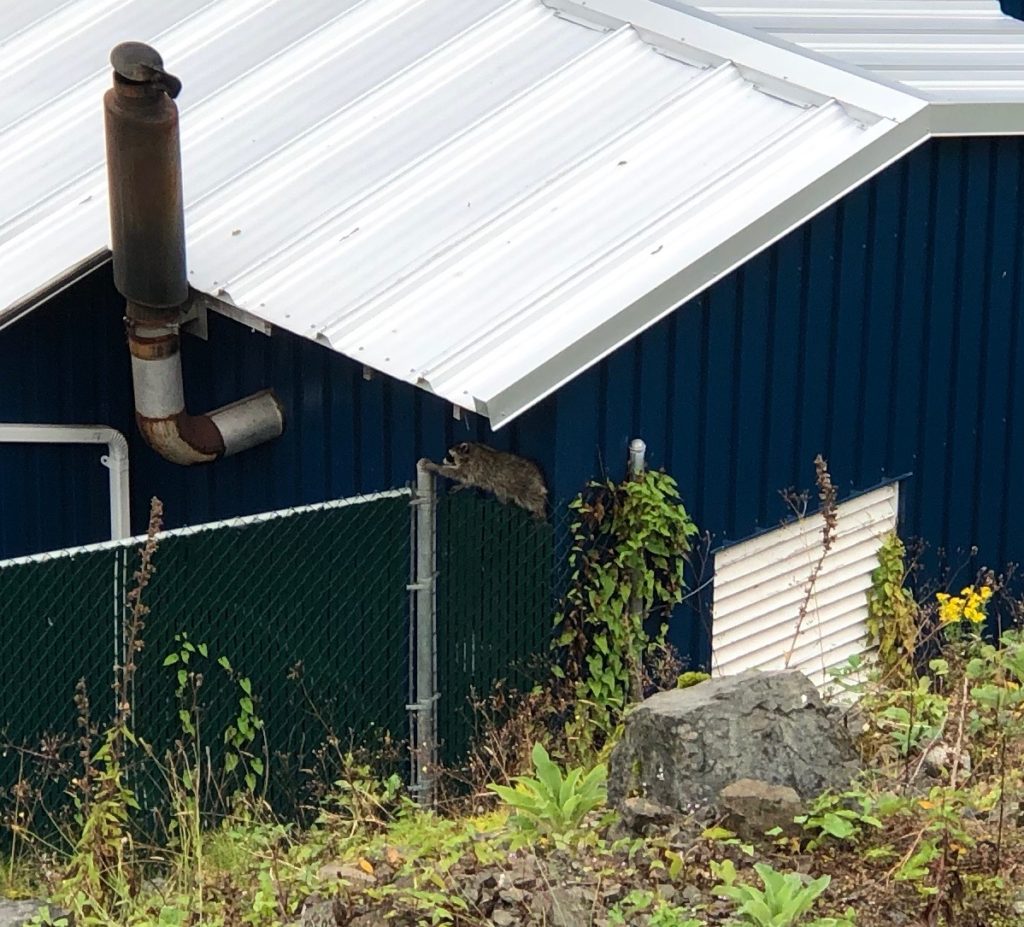
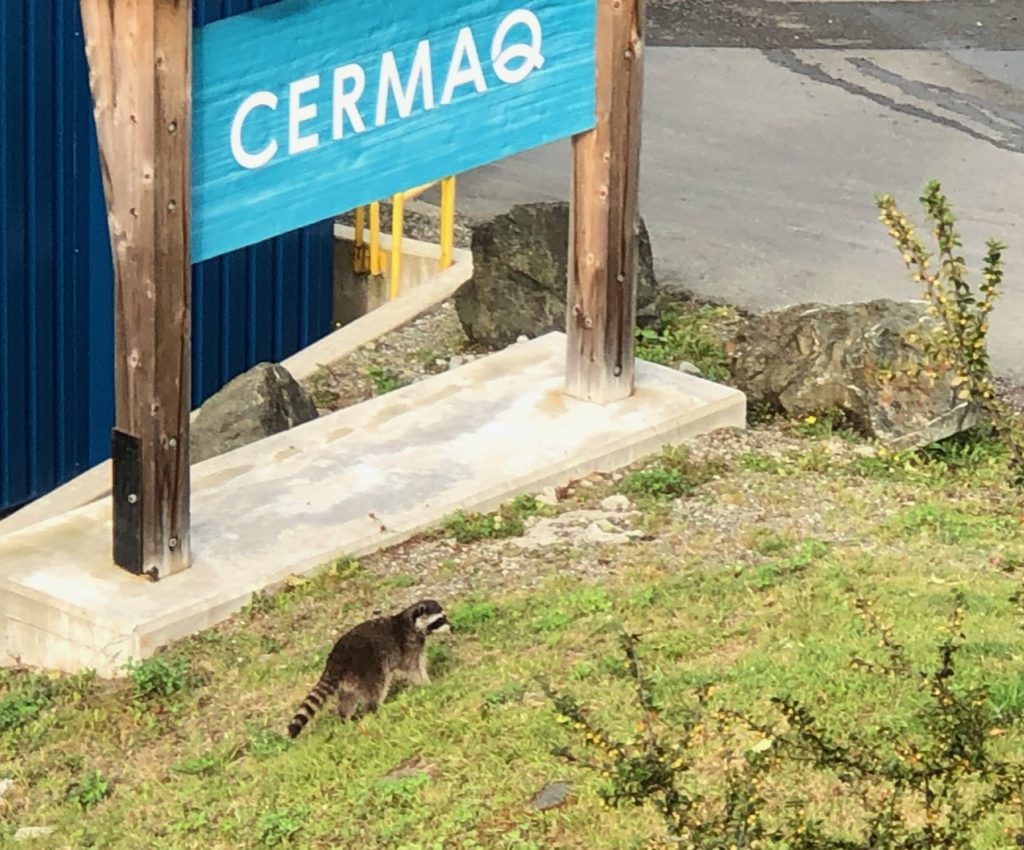
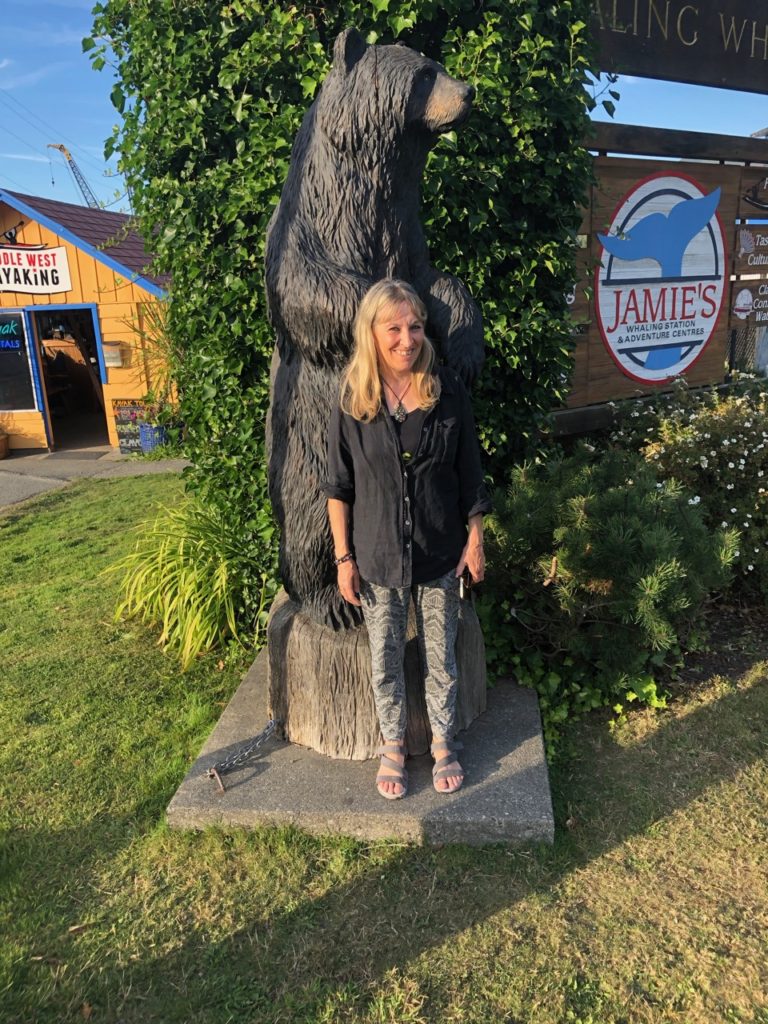
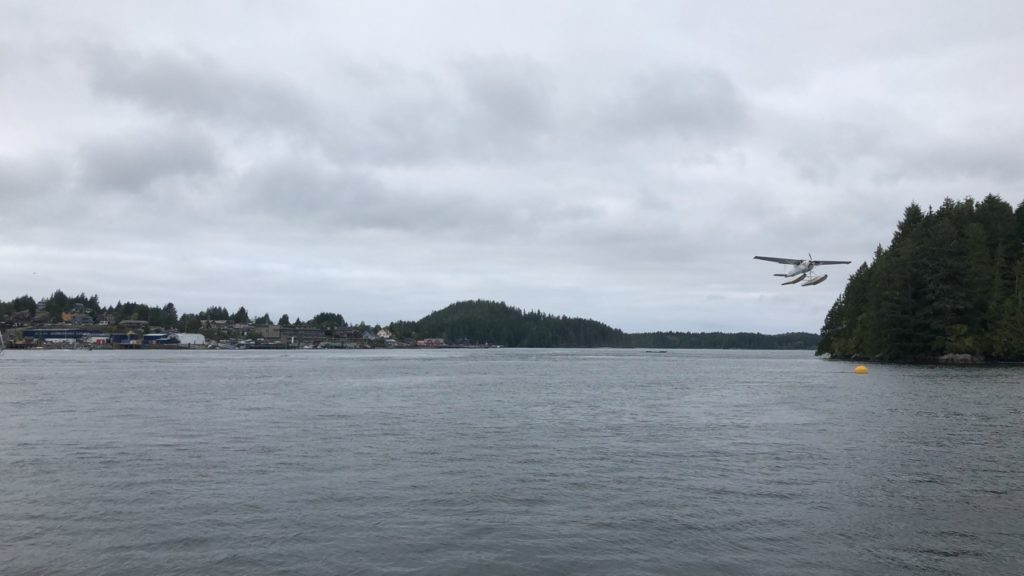

At 10PM we set off into the rapidly fading light, no sooner had we weighed anchor than the fog descended. We navigated our way out, I had already taken bearings on the only pot marker in the harbour in our way and we slipped past that into a grey foggy night. Soon we were bouncing up and down as we left Tofino and hit the Pacific swell. The fog stayed with us for about 20 hours, so Kathy and I kept a close eye on the AIS and Radar. The AIS gives us details on any big ships out there and how close we will get to them. Of course there were quite a few fishing boats without AIS we had to watch for on the Radar.
Monday morning and the fog lifted, we could now see the ships out there.
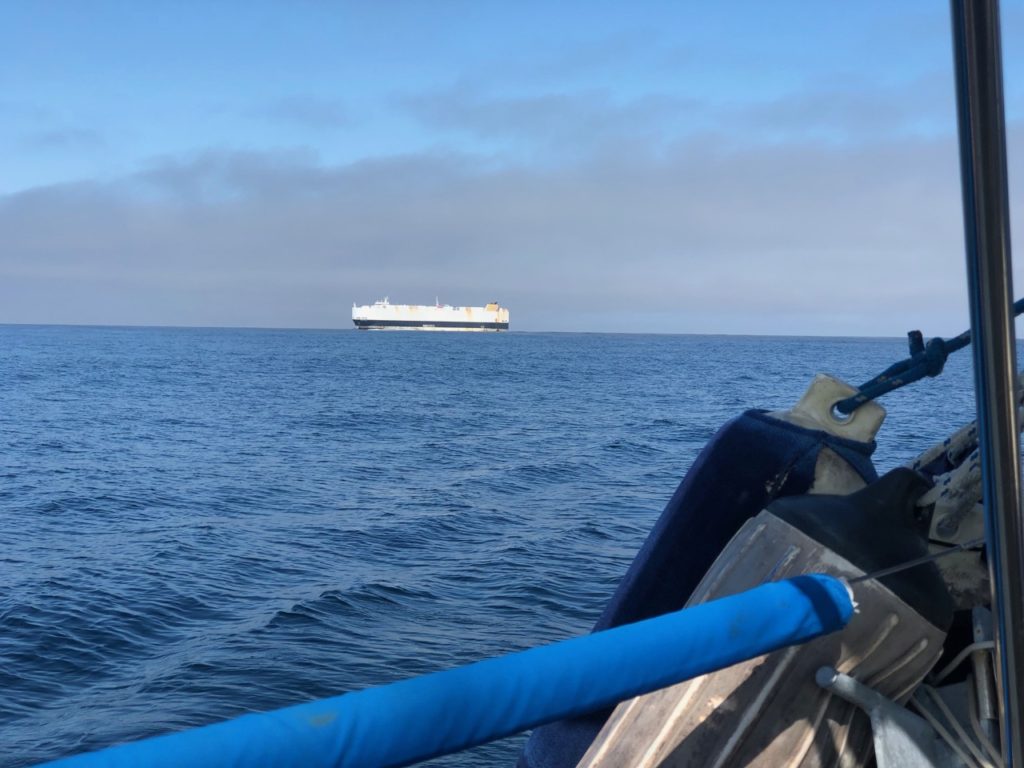
We were able to make coffee and with the new camping device I bought in the co-op hardware store, we could make toast on the stove.
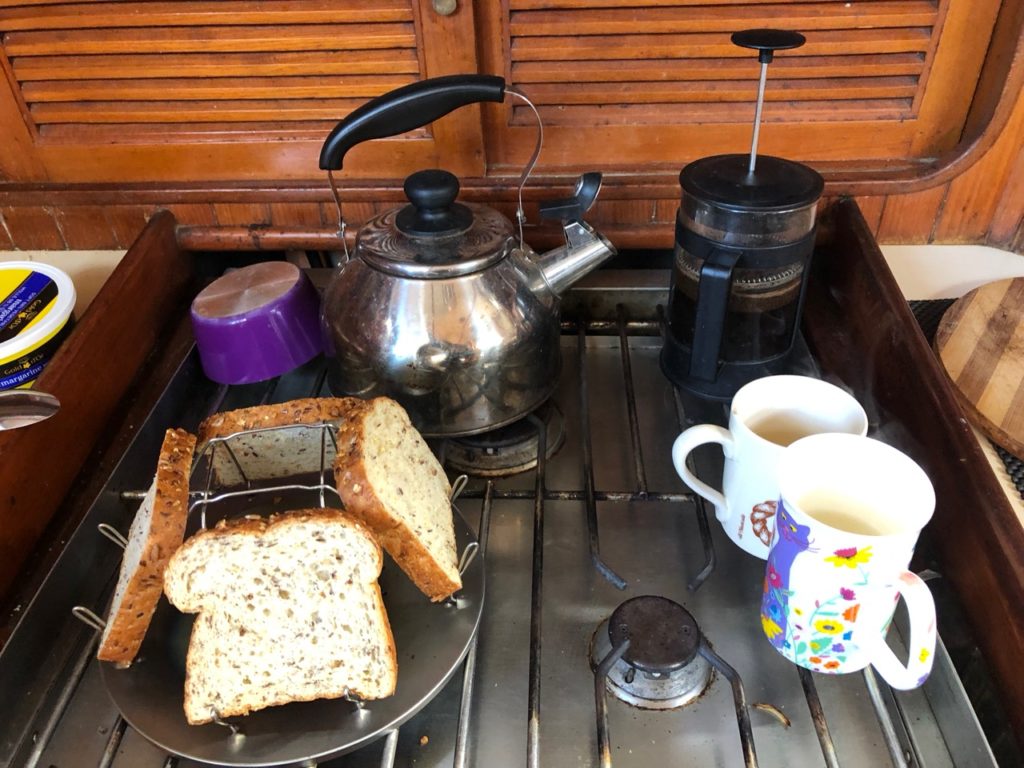
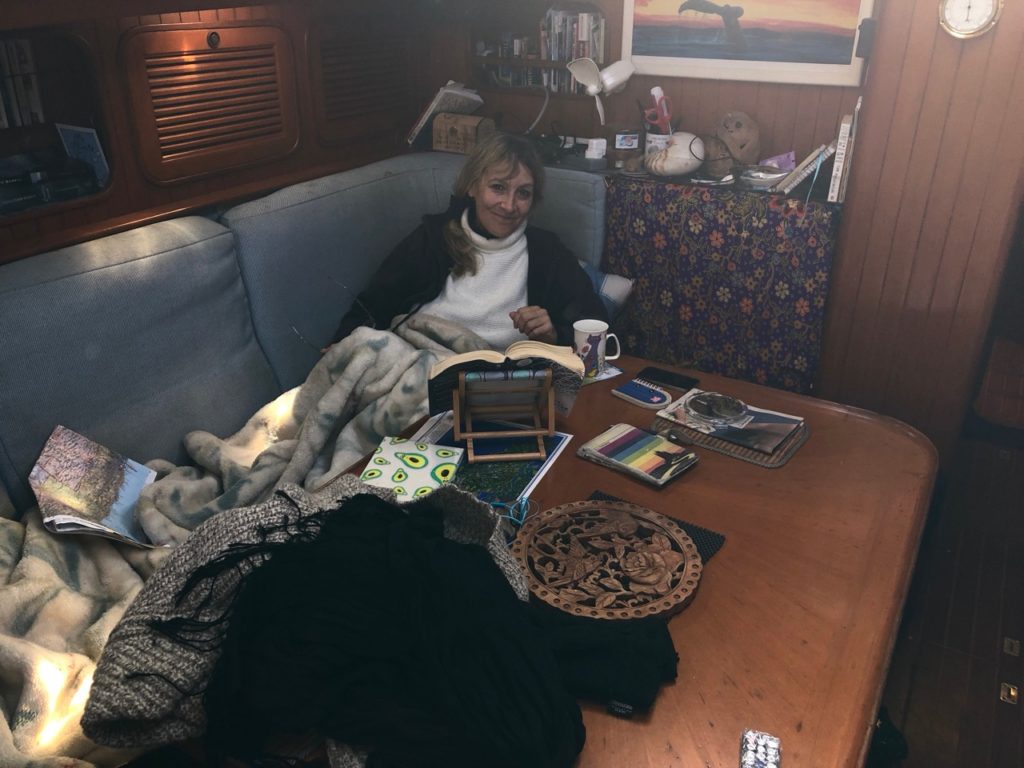
We rolled out the Yankee sail and turned off the engine. We were making 5 – 5.5 knots, which was just perfect for our planned arrival time. The weather forecast was good for a bar crossing and soon we were heading up the river Columbia using the rhyme ‘Red Right Returning’ to remember to keep the red buoys to starboard on our way in. This is the opposite to the European way of doing things.
The bar is considered one of the worst in the world, it has a nickname of ‘The Graveyard of the Pacific’ with over two thousand shipwrecks to its name. Looking at the rollers crashing over the banks either side of the entrance one could understand why.
As it was we were soon over the bar and fighting to avoid hundreds of sport fishing boats that seemed to be everywhere.
Finally we could see the bridge that signalled the location of the marina.
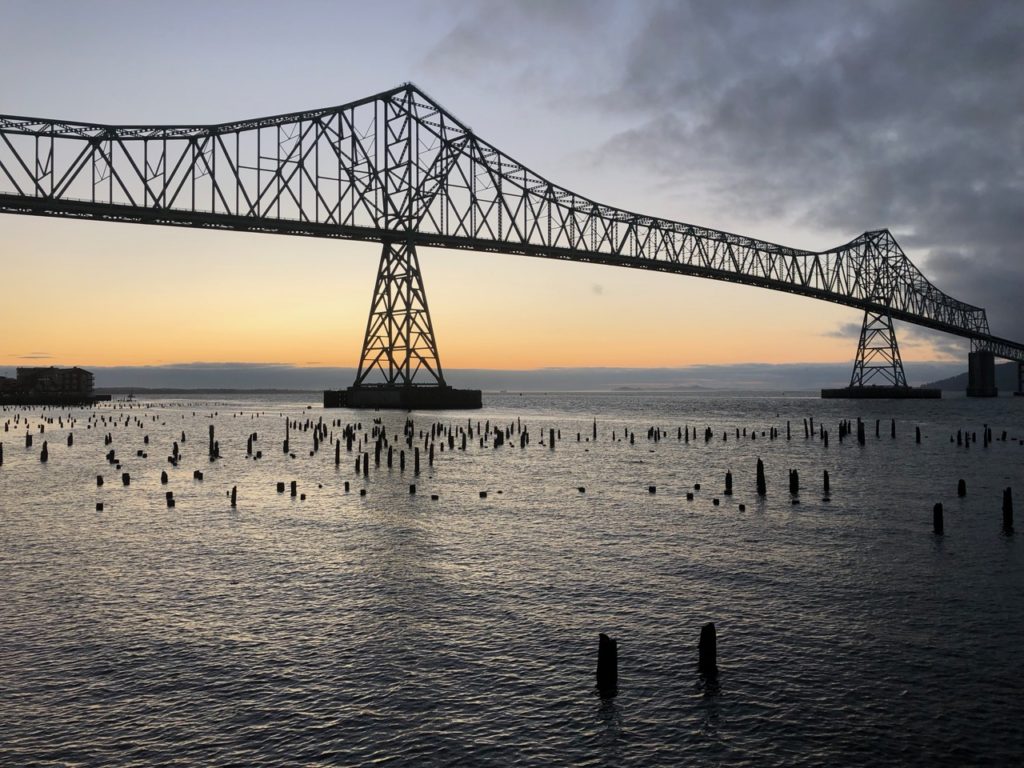
A quick call to the marina got us a space on the fuel dock where we could register and check in with the USA authorities, primarily the CBP (Customs Border Patrol). The CBP have had a lot of bad press recently, but I was very impressed with the reception I received by the officer here, he was quick, helpful and sorted everything out in just 15 minutes. We now have a 1 year cruising permit and 1 year stamps in our passport. I recommend Astoria for clearing in, this is actually why we came.
Tuesday evening and we headed out to find a restaurant, Buoys brewery hit the spot, it’s a micro brewery / restaurant on the waterfront. they have a section of the floor made of glass and you can look down to the piles supporting the building and see the resident sea lions chilling there.
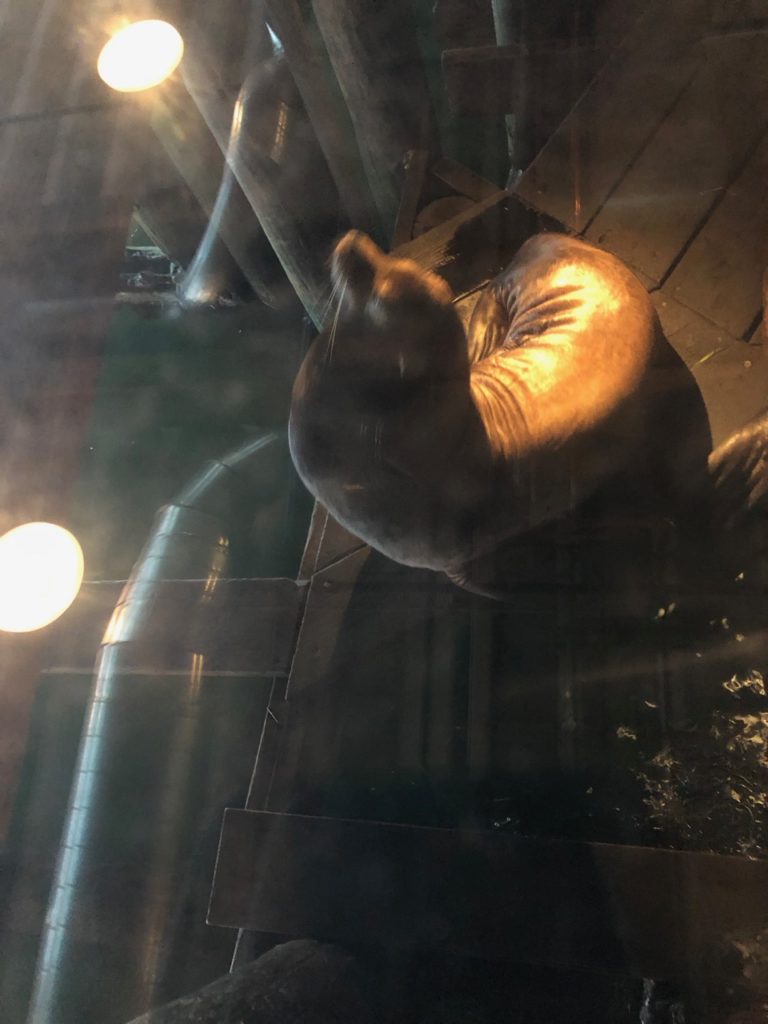
Wednesday 4th September.
We took the trolley car to Safeway to get some fresh fruit and veg as customs forbid us bringing any in from Canada. I had eaten a lot of fruit on the passage down!
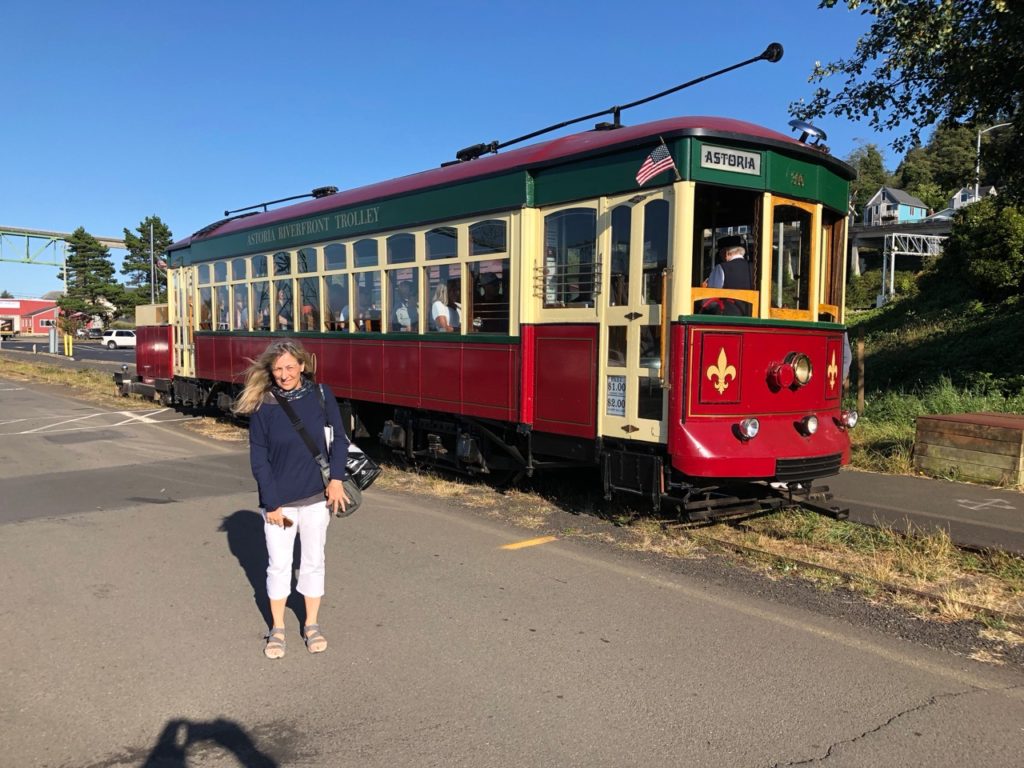
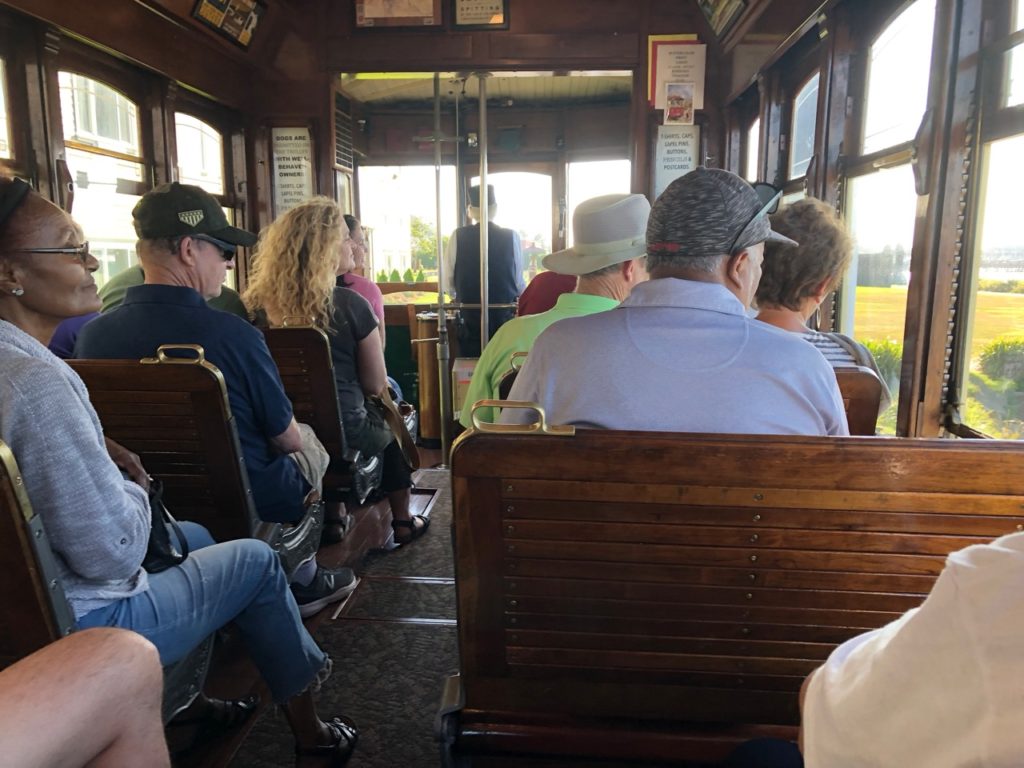
The trolly car is old, I expect Kathy will write more about it, but it’s a museum piece, literally, and plies the old railway track along the waterfront. It’s a wonderful ride, and only $1 each trip, or $2 for a day pass. It’s operated by volunteers who give a lively commentary along the route.
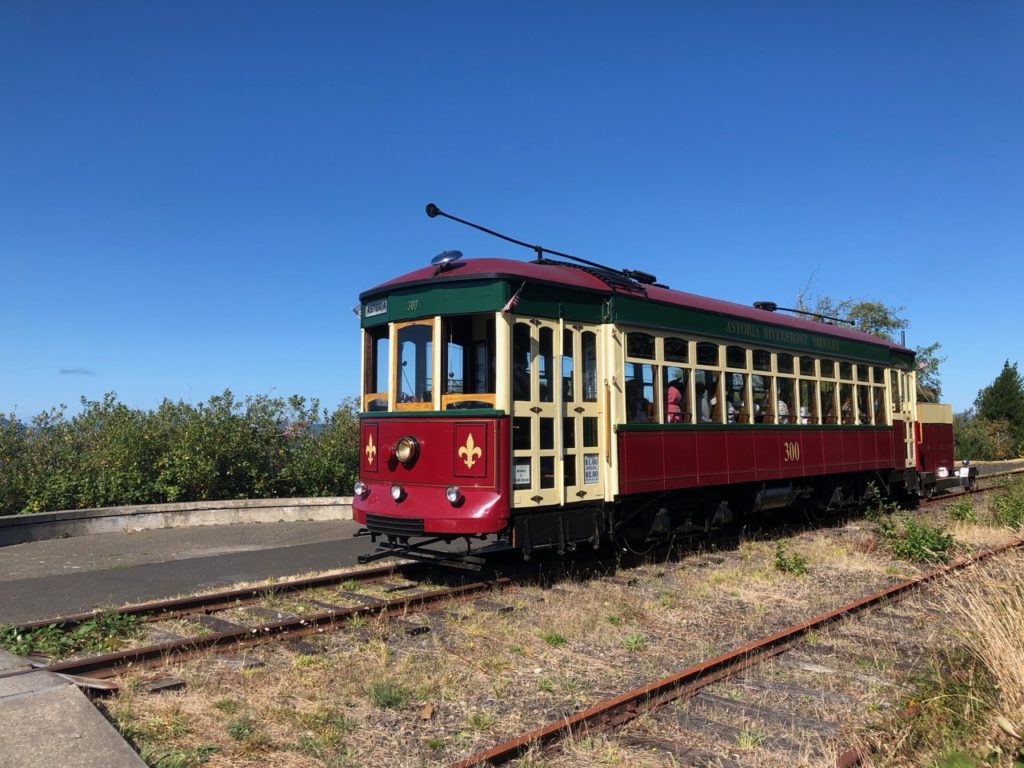

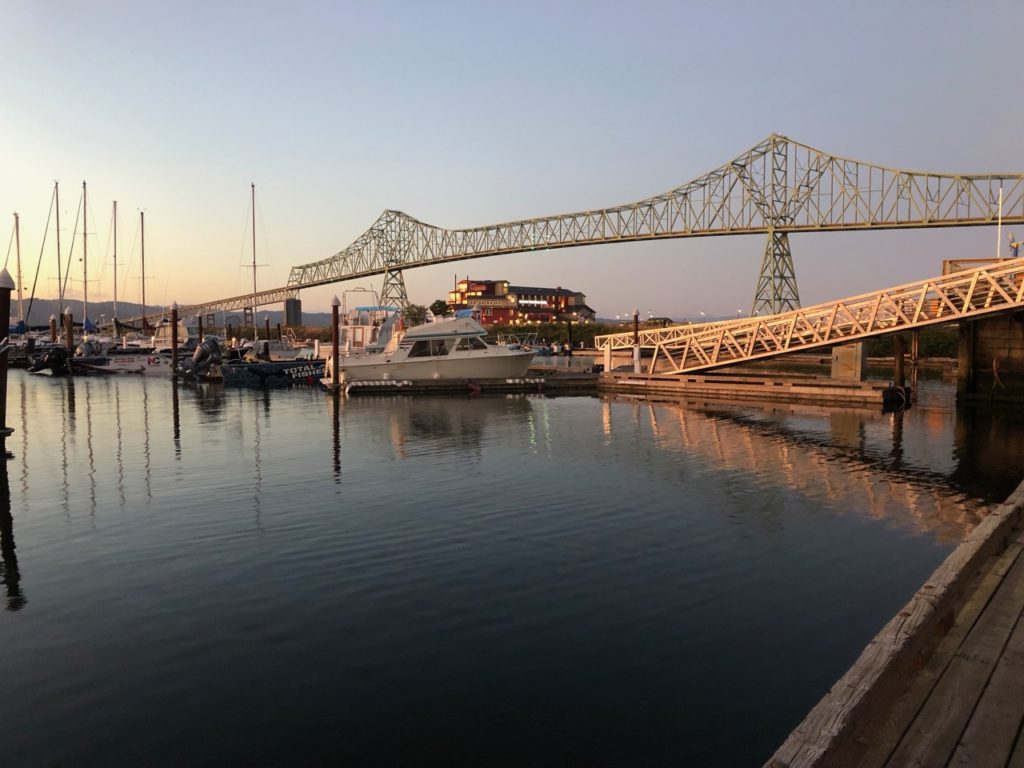
We will be in Astoria for a few more days before we probably head south to Newport.
Paul Collister



